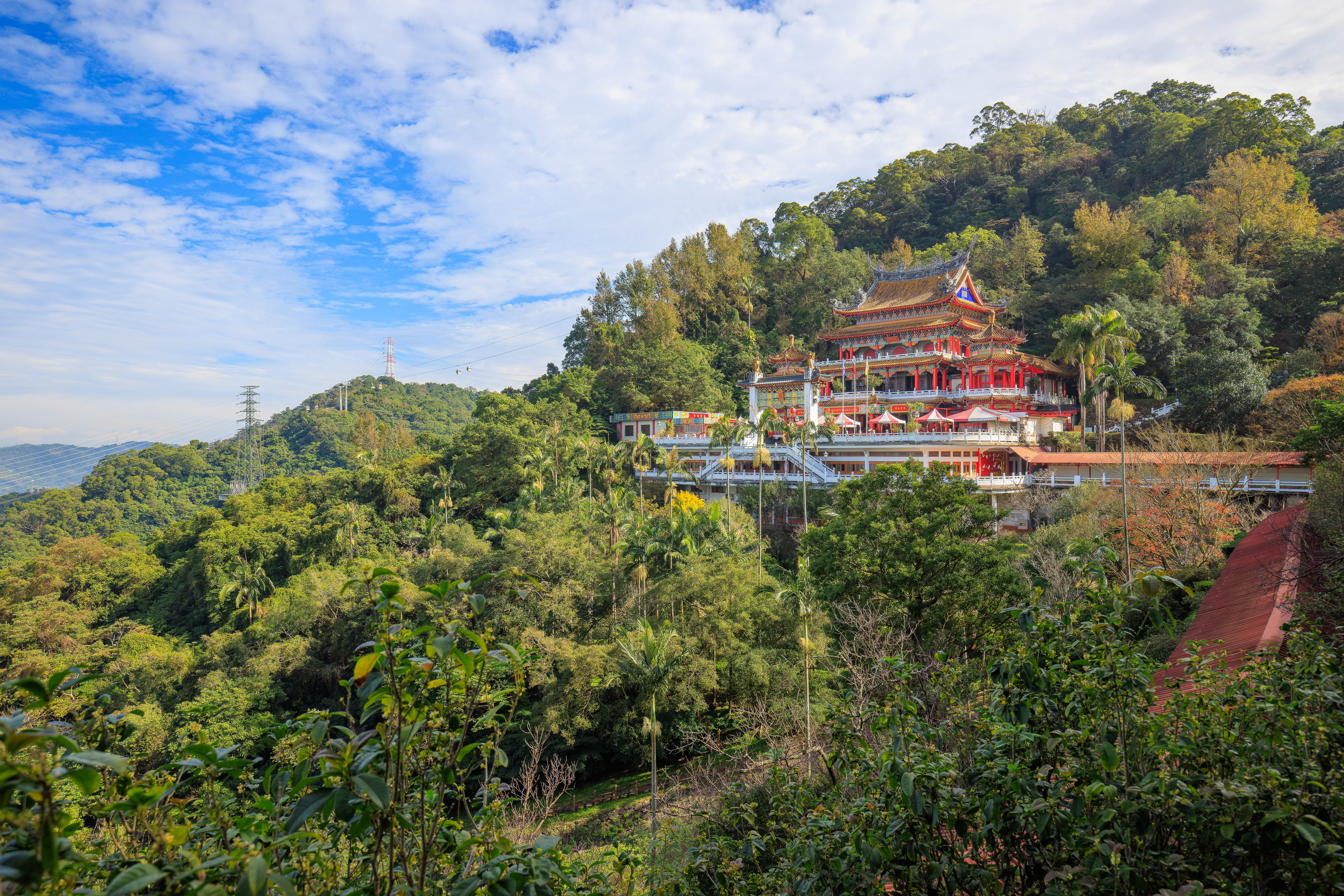The weather forecast looked good again today so we headed to Maokong, a mountainous area just at the edge of Taipei, after breakfast at the Grand Hyatt. We ended up checking out a few temples, enjoyed the scenery, and bought some local tea as Maokong is a historic tea producing area.
Morning
After waking up at the Grand Hyatt Taipei, we went downstairs for breakfast.
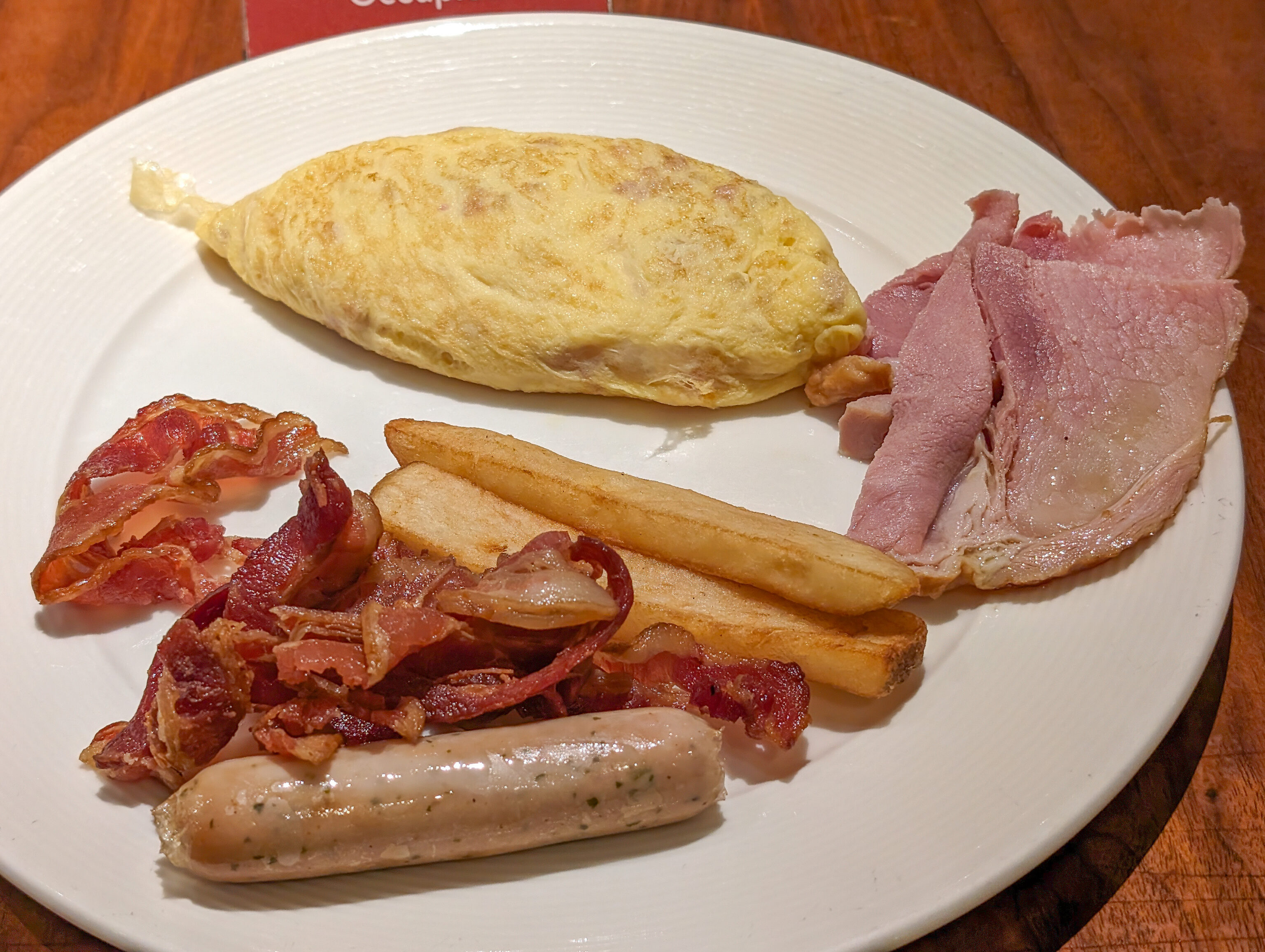
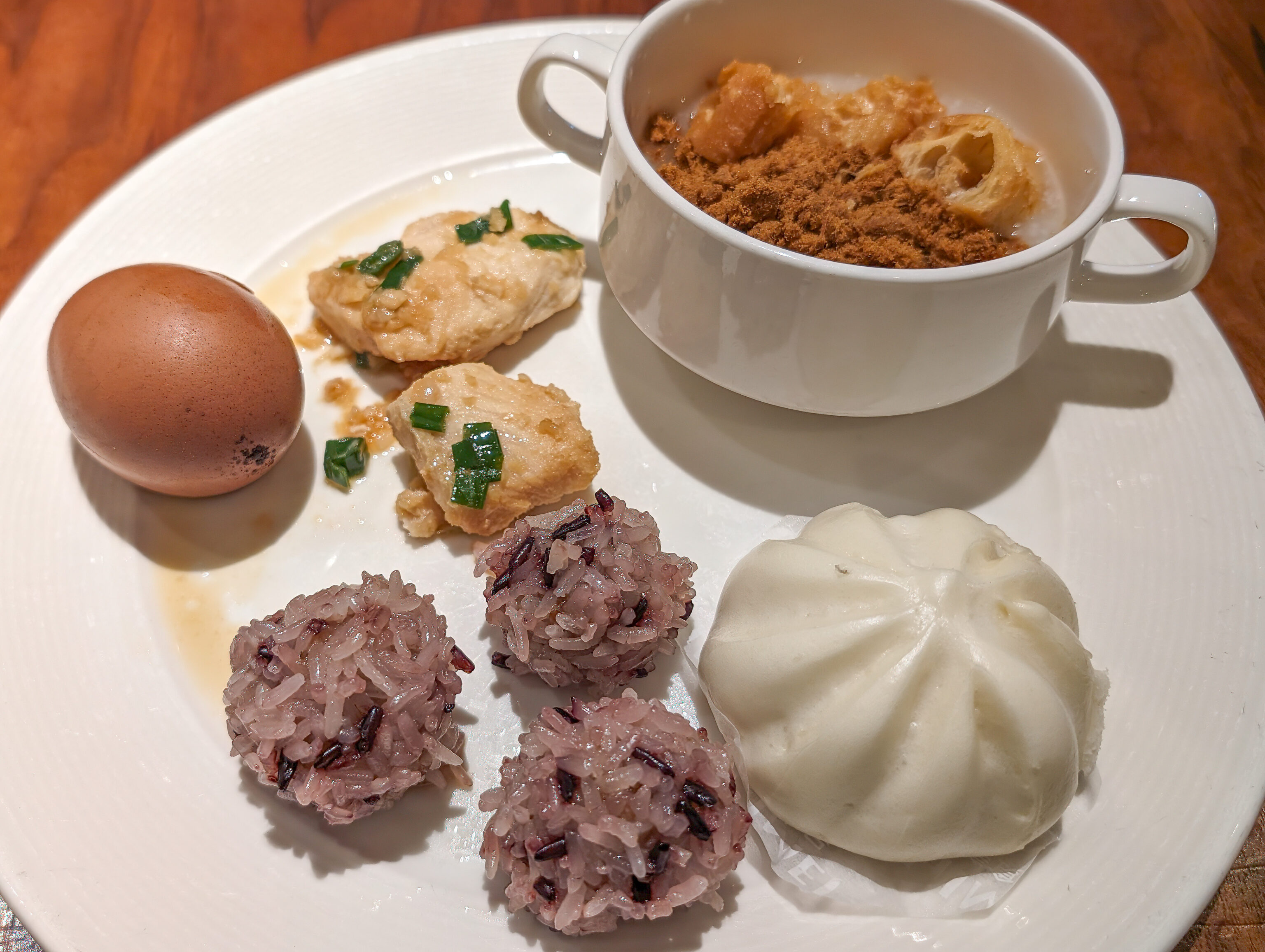
We tried a few of the Western items that we had skipped yesterday. We saw that the omelette station had a very long queue yesterday so we gave it a try while the line was short. The omelette was good, as was the bacon. The ham was better than expected though the sausage was skippable.
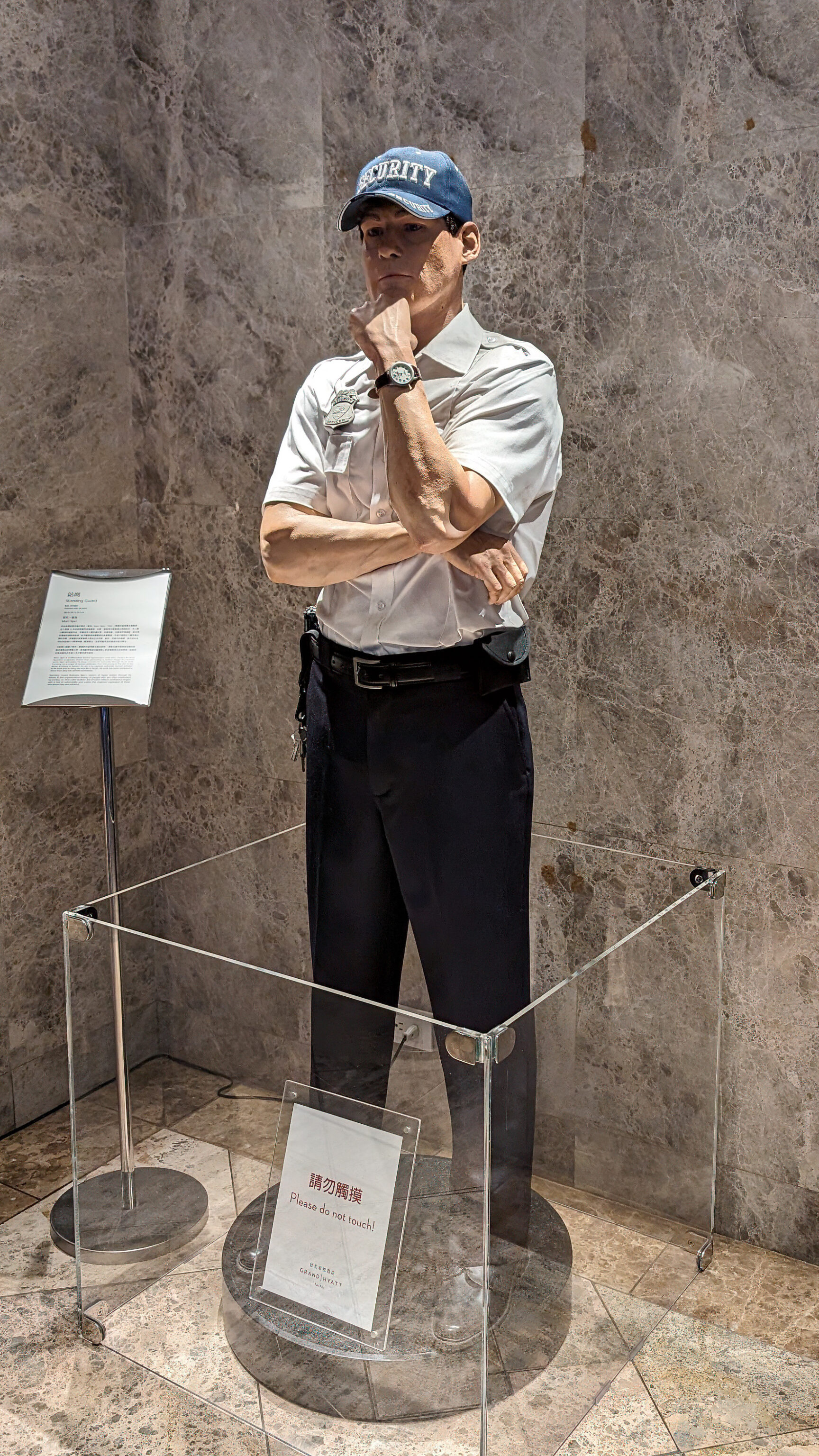
This sculpture, titled Standing Guard, is by the elevators. The sign on the left provides some information:
Marc Sijan is a Milwaukee-based hyperrealism artist who creates life-sized figurative sculptures. Rather than presenting a perfect image of a human body, Sijan articulates his deep concern for humanity through his art work, focusing on a range of human attributes, from the young to the old, to the weak, scrawny, or twisted. His aim is to capture authentic human emotion in his work and to bring out real life in his art. His work has been exhibited in more than sixty solo exhibits worldwide. Standing Guard illustrates Sijan's version of hyper realism through his tribute to the unpretentious beauty of people who are often overlooked by society, i.e. blue collar workers. The emotion reflects confidence tinged with a hint of vulnerability and carries the charmed expression of those who know they are admired.
Maokong Gondola
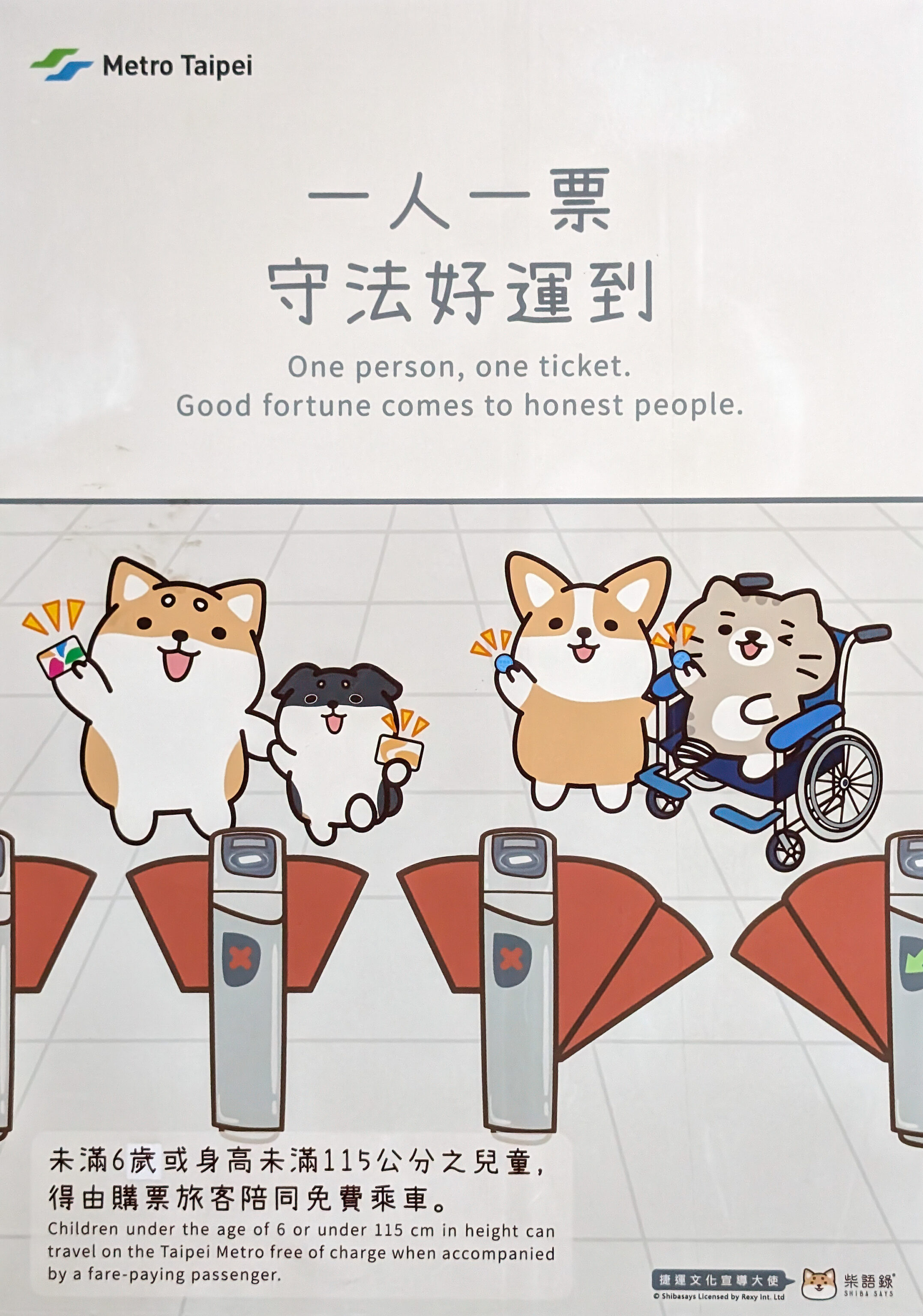
We headed over to Maokong by MRT, starting from the Taipei 101 station and transferring at 大安 Daan. We headed south to 動物園 Taipei Zoo, the southern end of the Brown colored Wenhu Line.
After arriving at the Taipei Zoo station, we walked to the southwest to reach the Maokong Gondola‘s Taipei Zoo station.
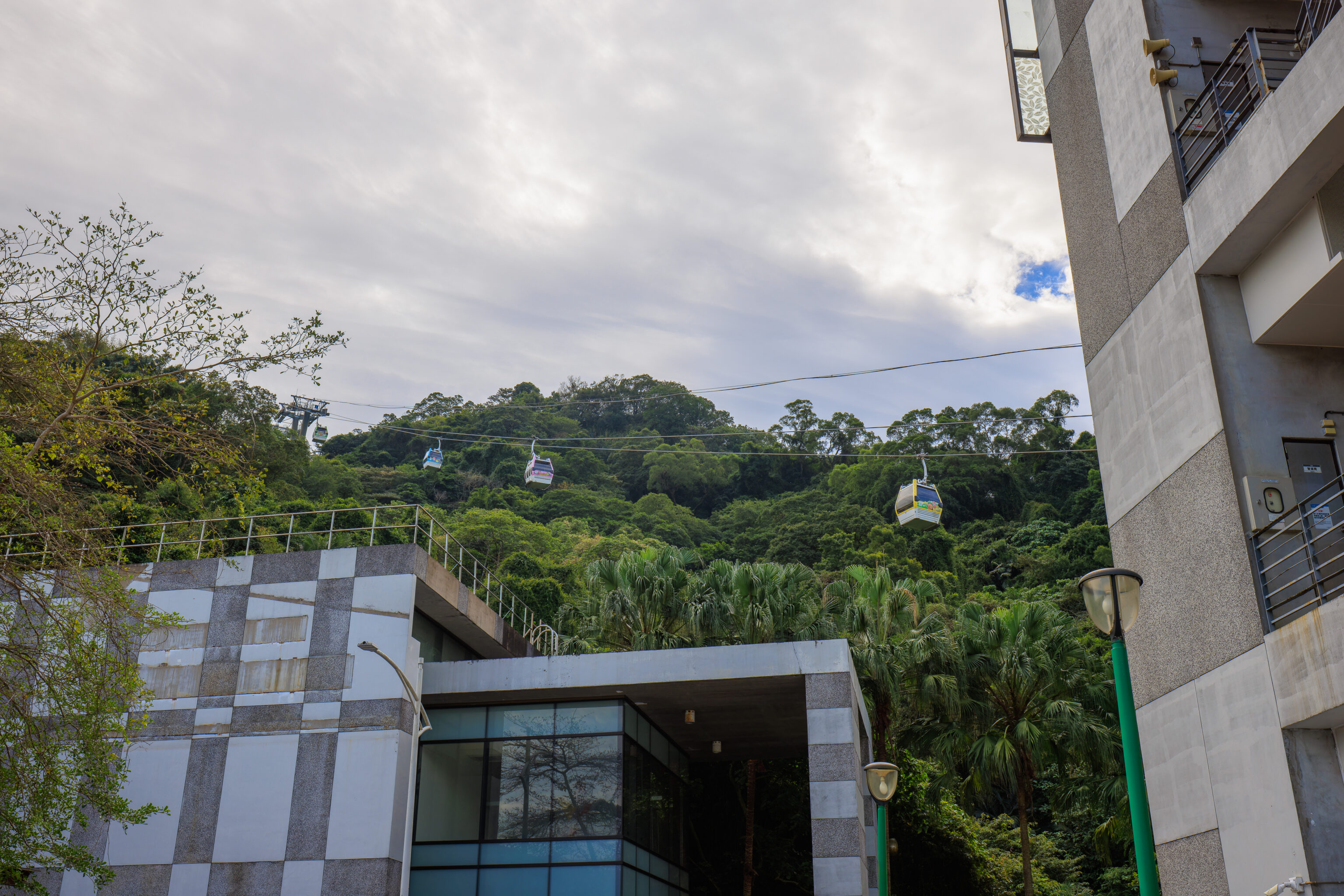
The Maokong Gondola doesn’t start particularly early, at 9am daily, and we got there just a few minutes after opening time. It wasn’t busy so we were able to immediately board without queueing. The gondola works with EasyCard so no extra ticket purchase was required.
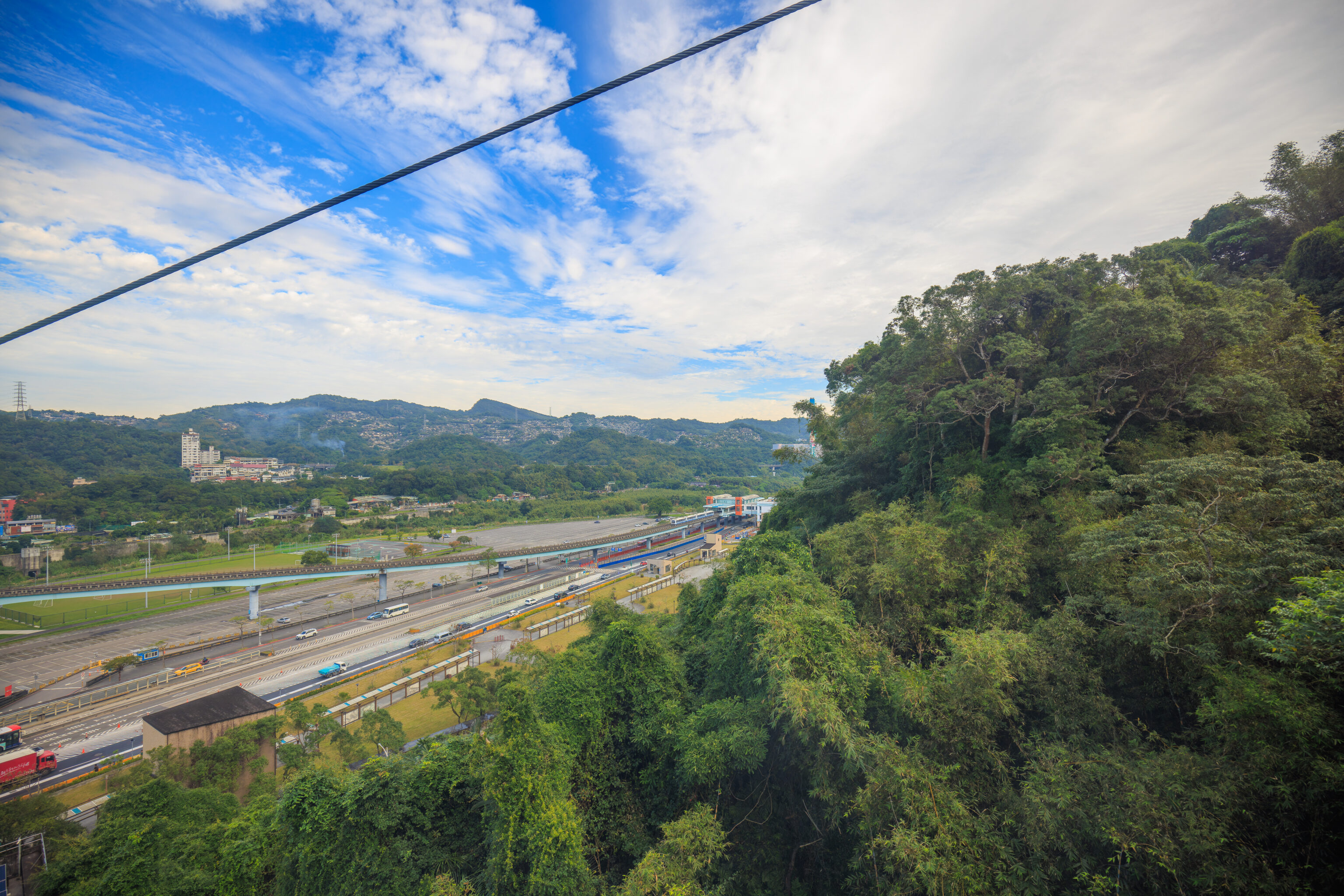
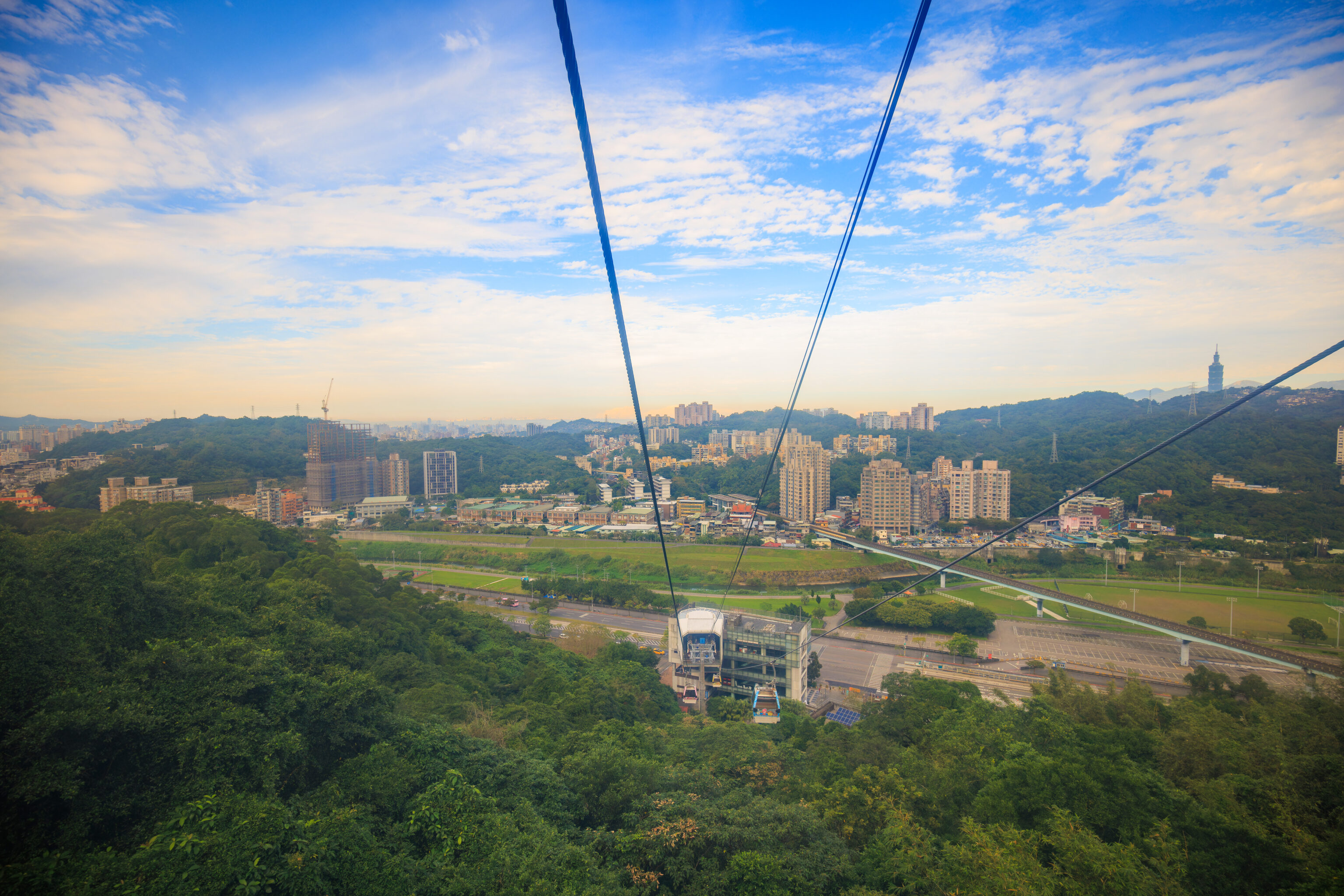
The gondola ascends quickly upon leaving the Taipei Zoo station. The windows were pretty dirty and terrible for photography, particularly the ones at the front and back. Looking back, we saw Taipei 101 poking out from behind some nearby hills. We could also see a light layer of smog over the city.
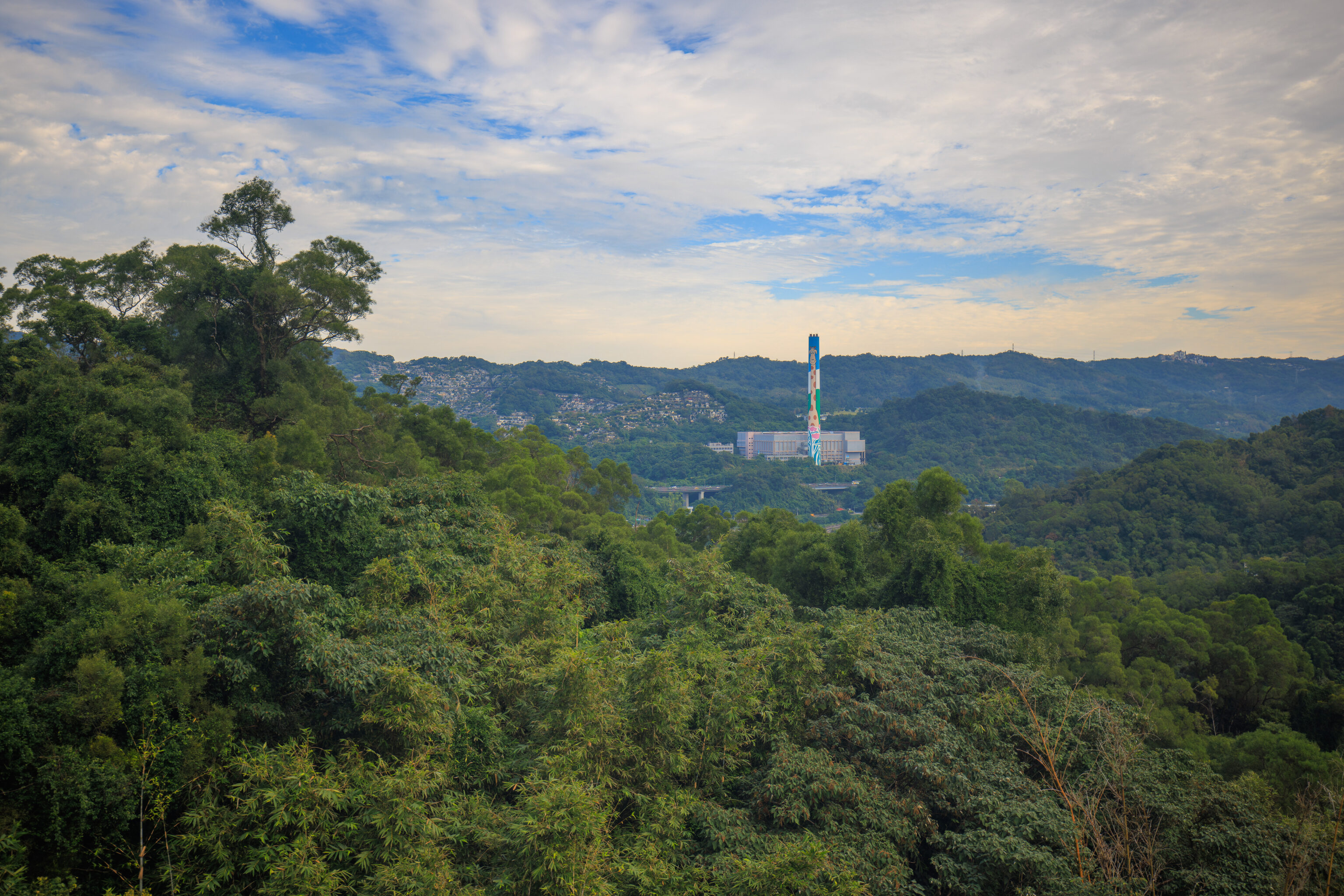
This large building with tall giraffe themed smokestack is a garbage incineration plant. We only know this because it is labelled on Google Maps!
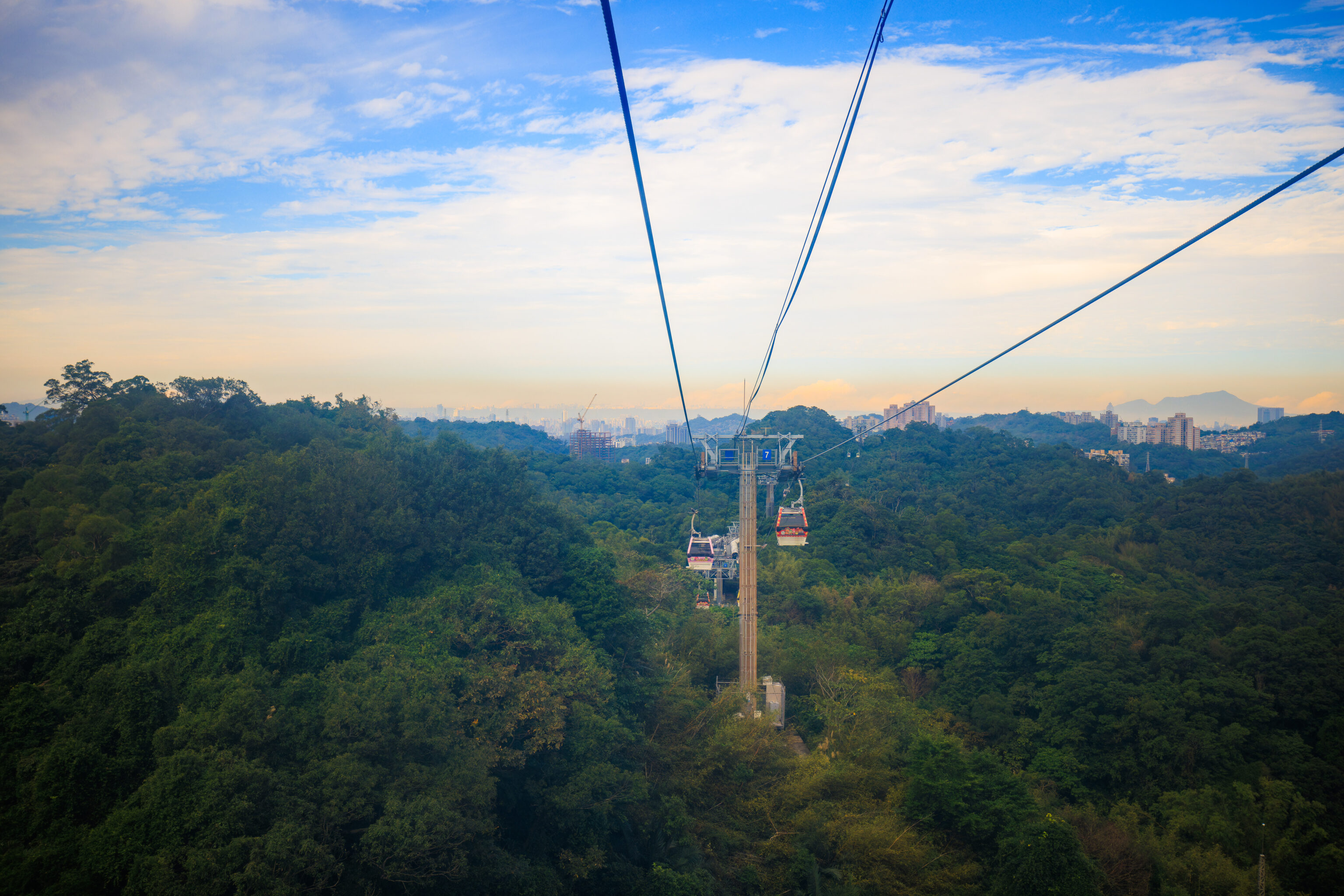
The view to the northwest after passing through a station that introduces a slight turn into the gondola route.
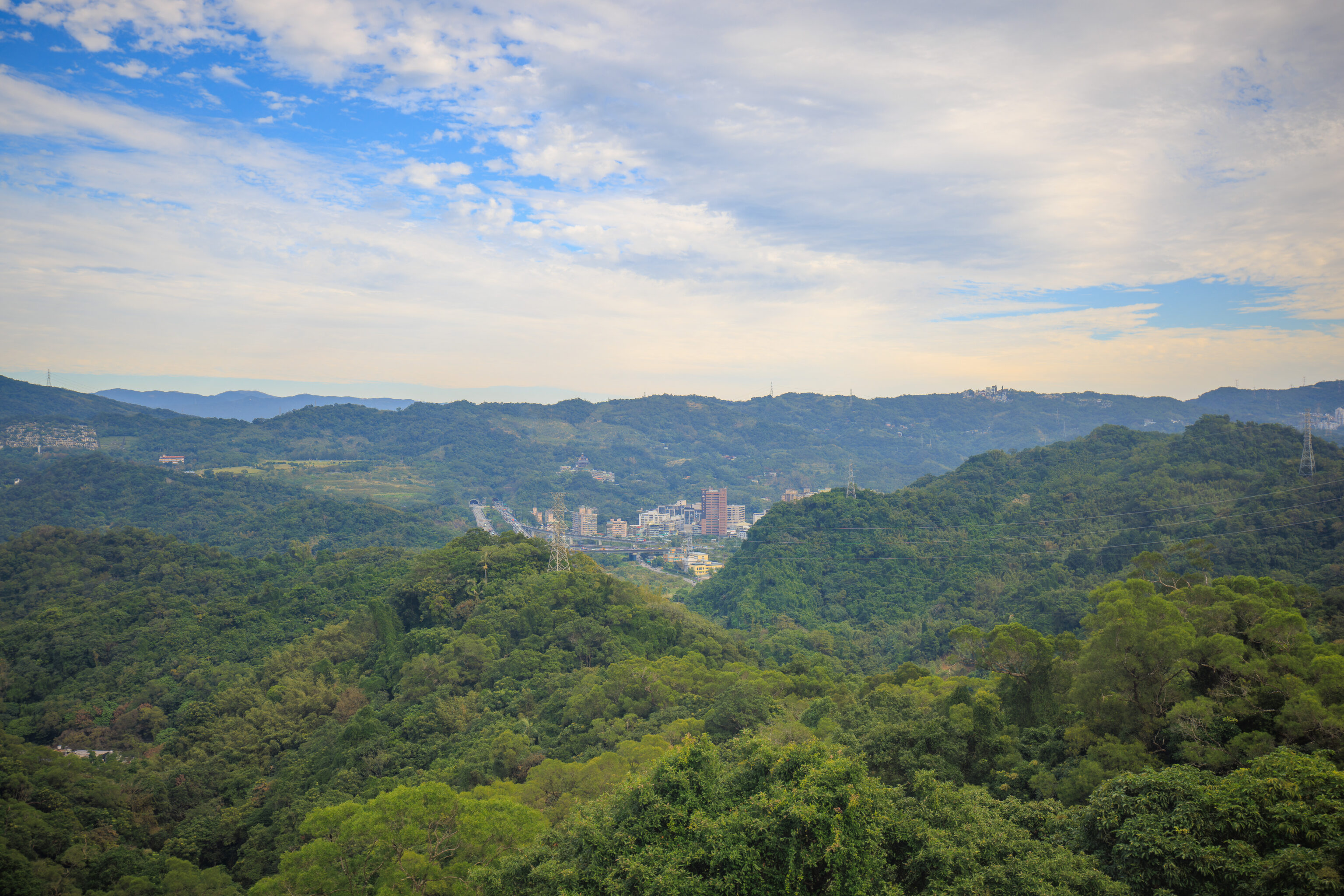
The view to the north as we continued to head south, past the Taipei Zoo South intermediate station.
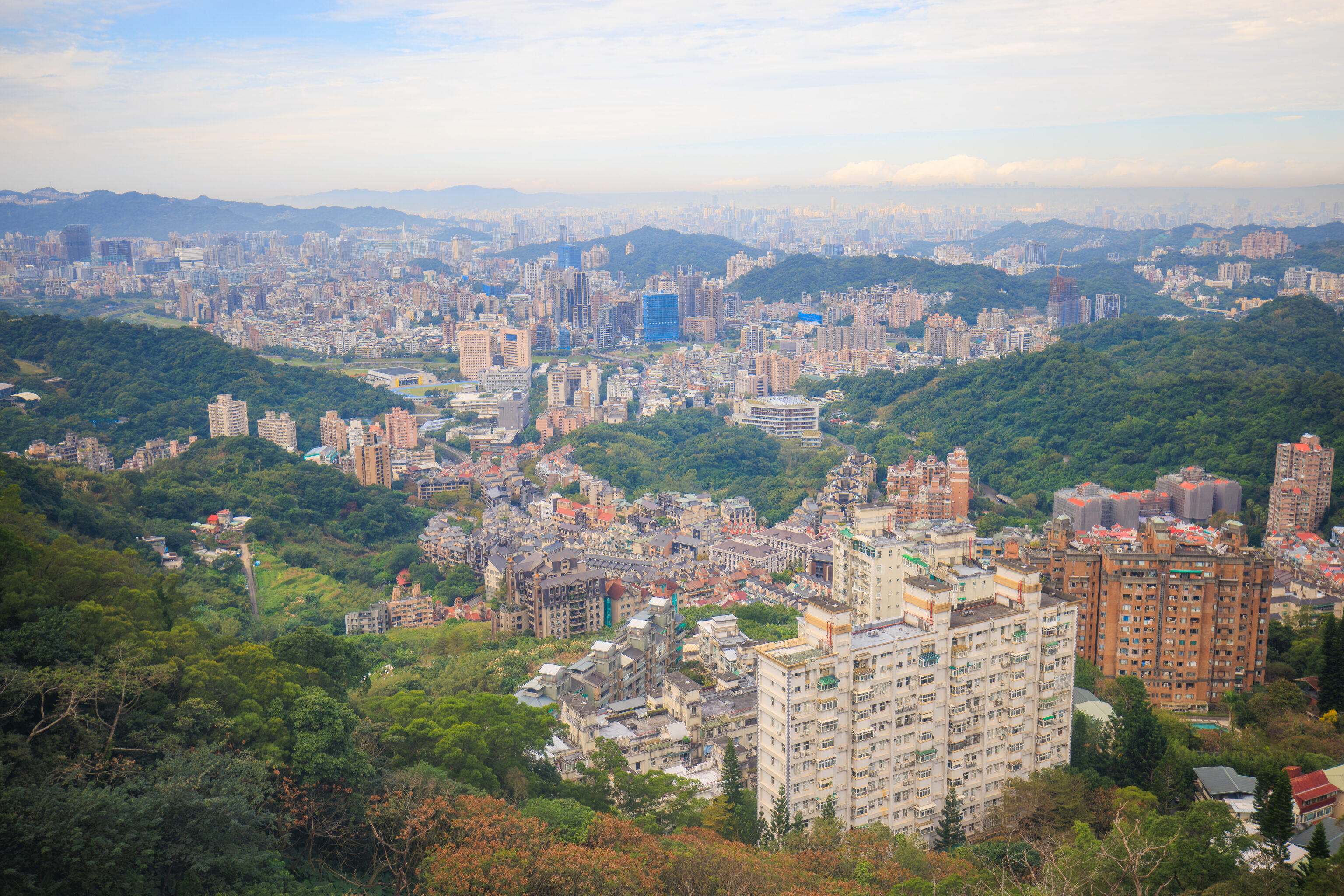
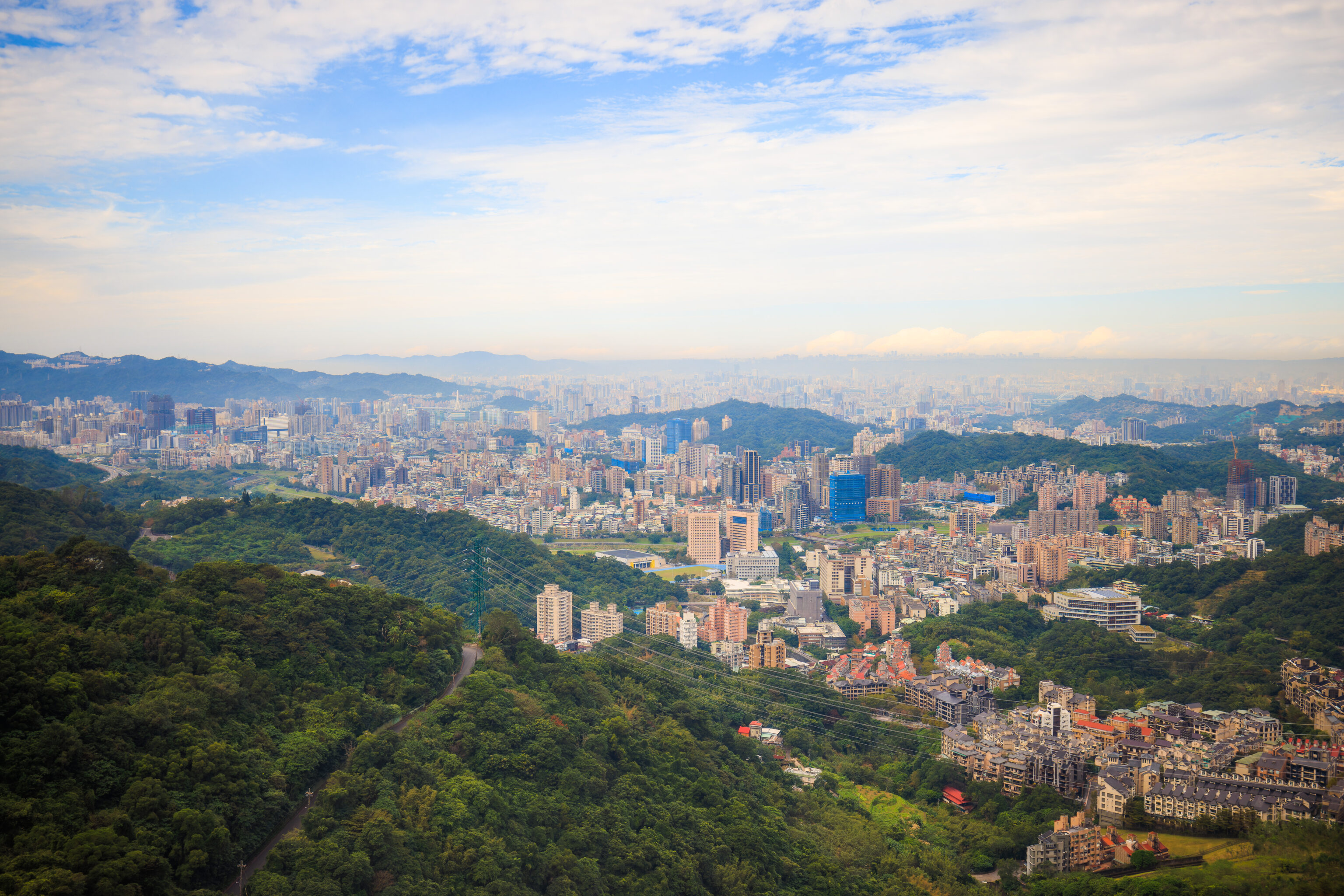
More urban development, the southernmost part of Taipei City, is visible to the west.
Zhinan Temple
We got off at the second intermediate stop, 指南宮站 Zhinan Temple, named after the temple that is here.
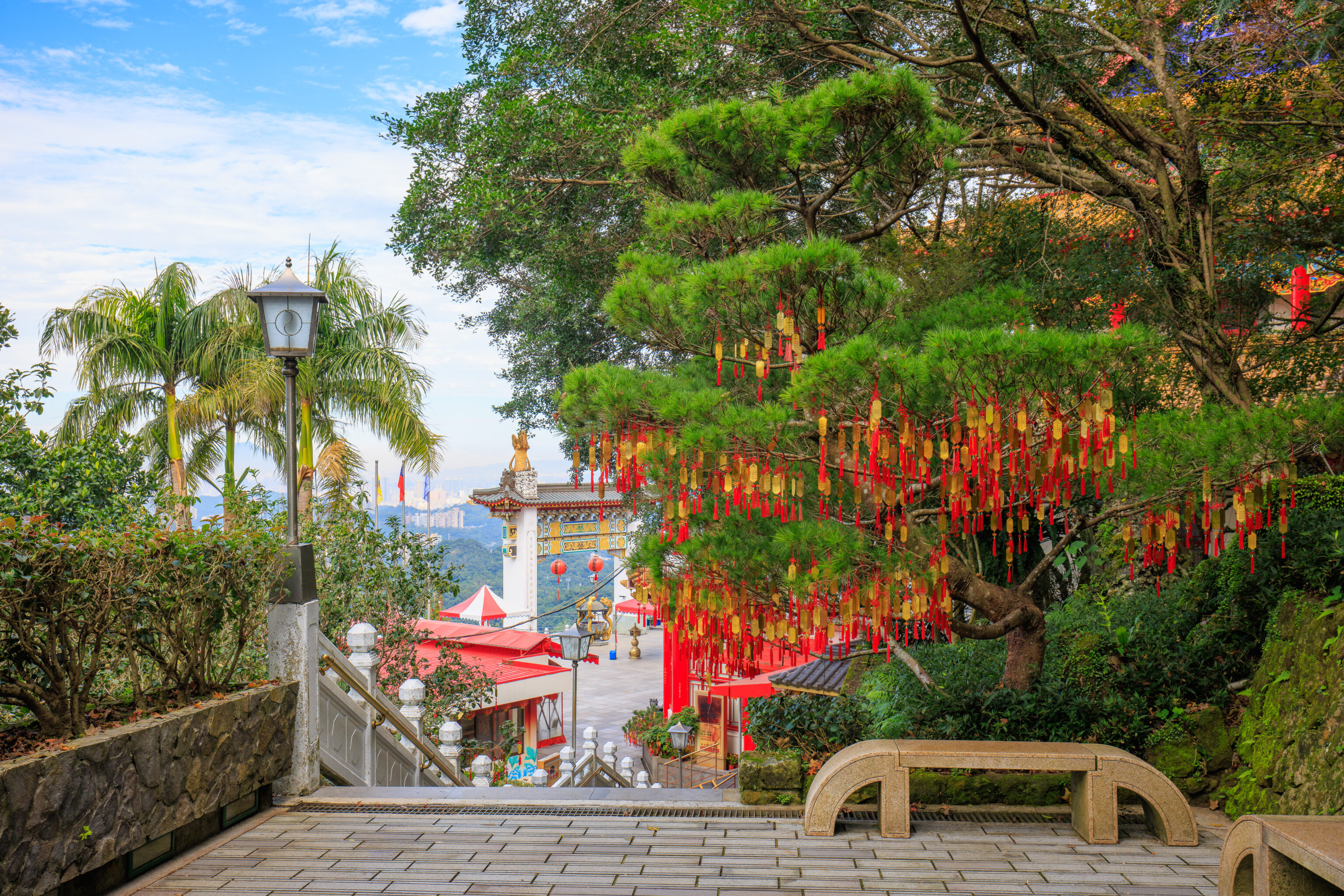
We headed down a path to the northwest. The gold tags hanging from the tree branches represent prayers for all sorts of things1.
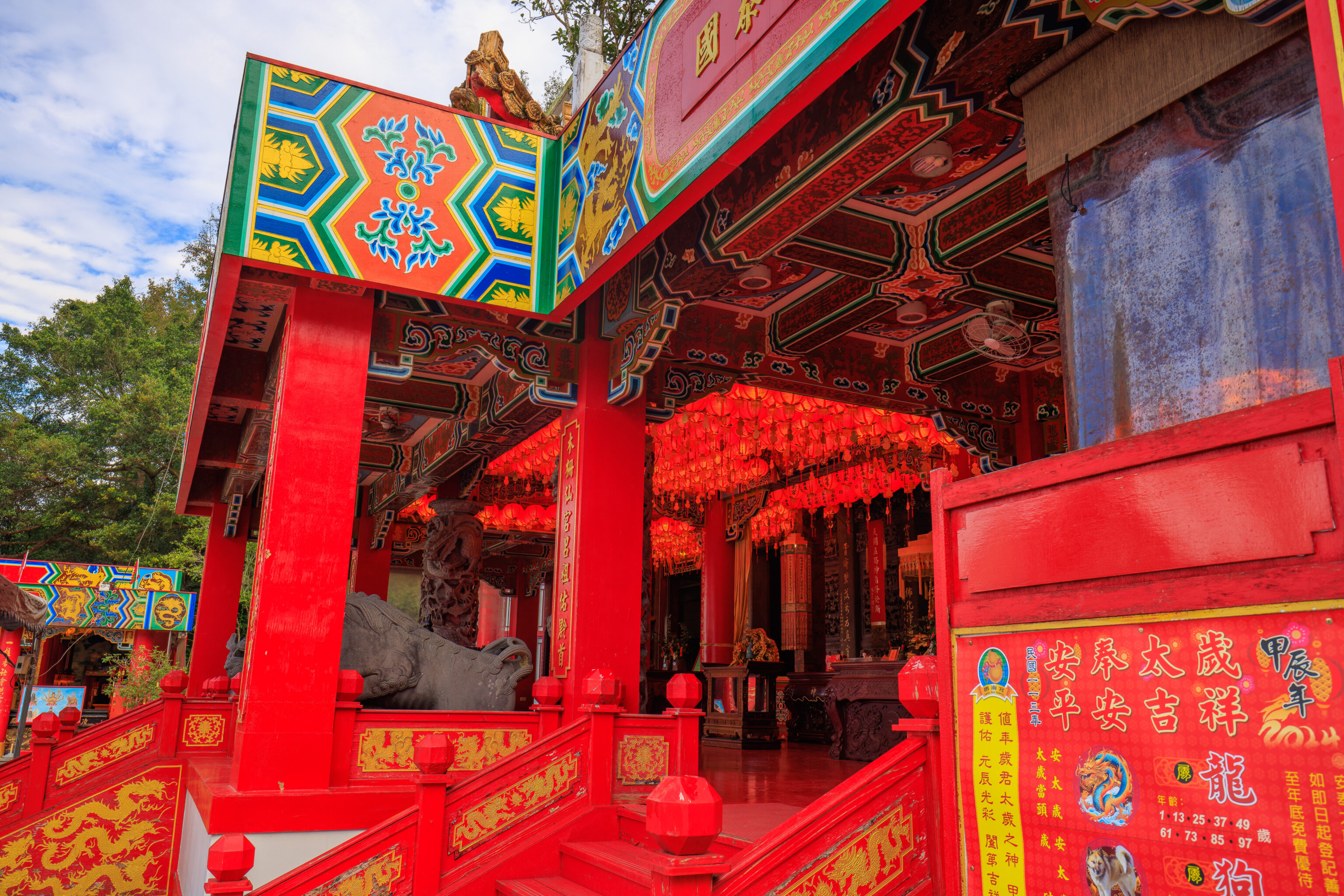
The first temple building we encountered was the 凌霄寶殿 Lingxiao Palace. The temple website provides some history2 (Google Translated):
The construction of Lingxiao Hall started in 1963 and was completed in 1966. The whole hall covers an area of more than 2,360 square meters. The Lingxiao Palace is entirely constructed of reinforced concrete, with a height of six stories. It can be said to be the first Jade Emperor Palace built with modern building materials in Taiwan at that time. It is quite majestic and is the tallest palace among the Four Treasure Palaces of the South Palace. The top floor of the roof is in the Southern Fujian style, with carved dragons and phoenixes, and flying pearls in the middle. The second floor is in the Northern style roof, with the roof ridges decorated with fairy clouds and animals. The wall decorations and dragon columns are all made of fine and rare materials. It is carved from Guanyin Mountain stone and painted with a little gold paint on key parts. When viewed from a distance, it sparkles, adding a bit of splendor to the simple and calm wall decoration. All the main gods and ancestors of Taoism are enshrined in the Lingxiao Hall, and they are worshiped in a systematic manner.
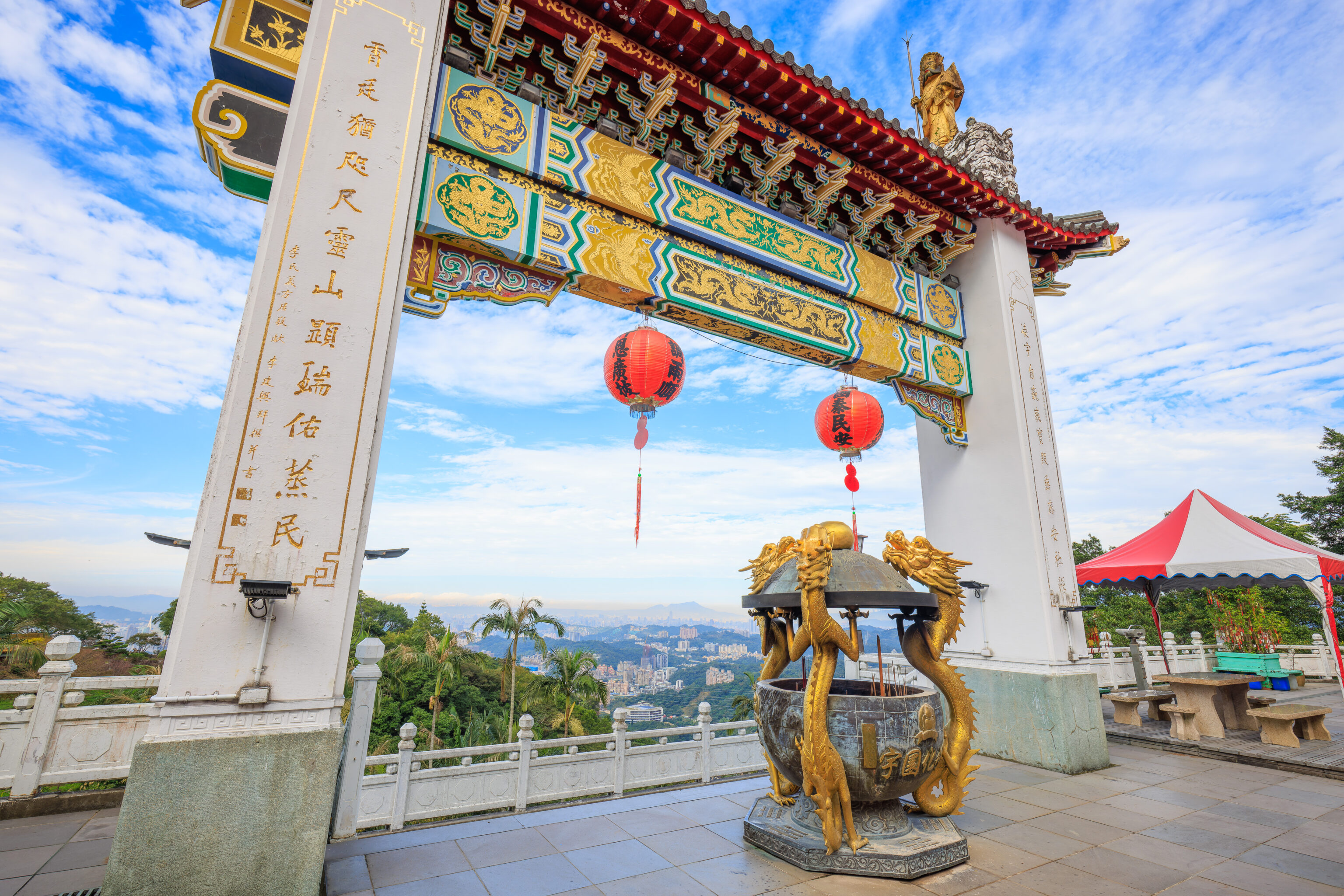
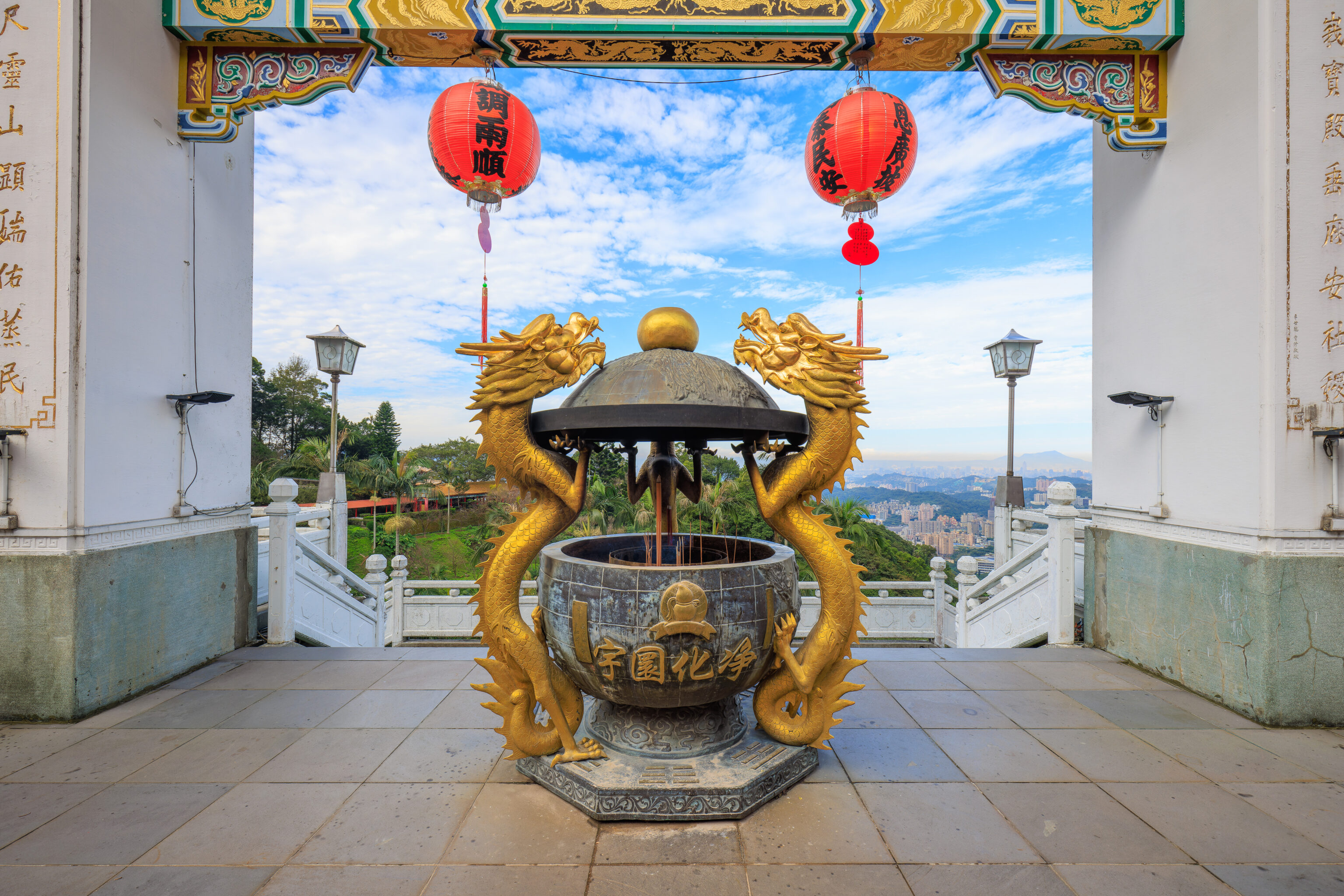
We took a look around first. The building is on the side of a hill and mostly faces the west. This gate stands in front of the main temple building.
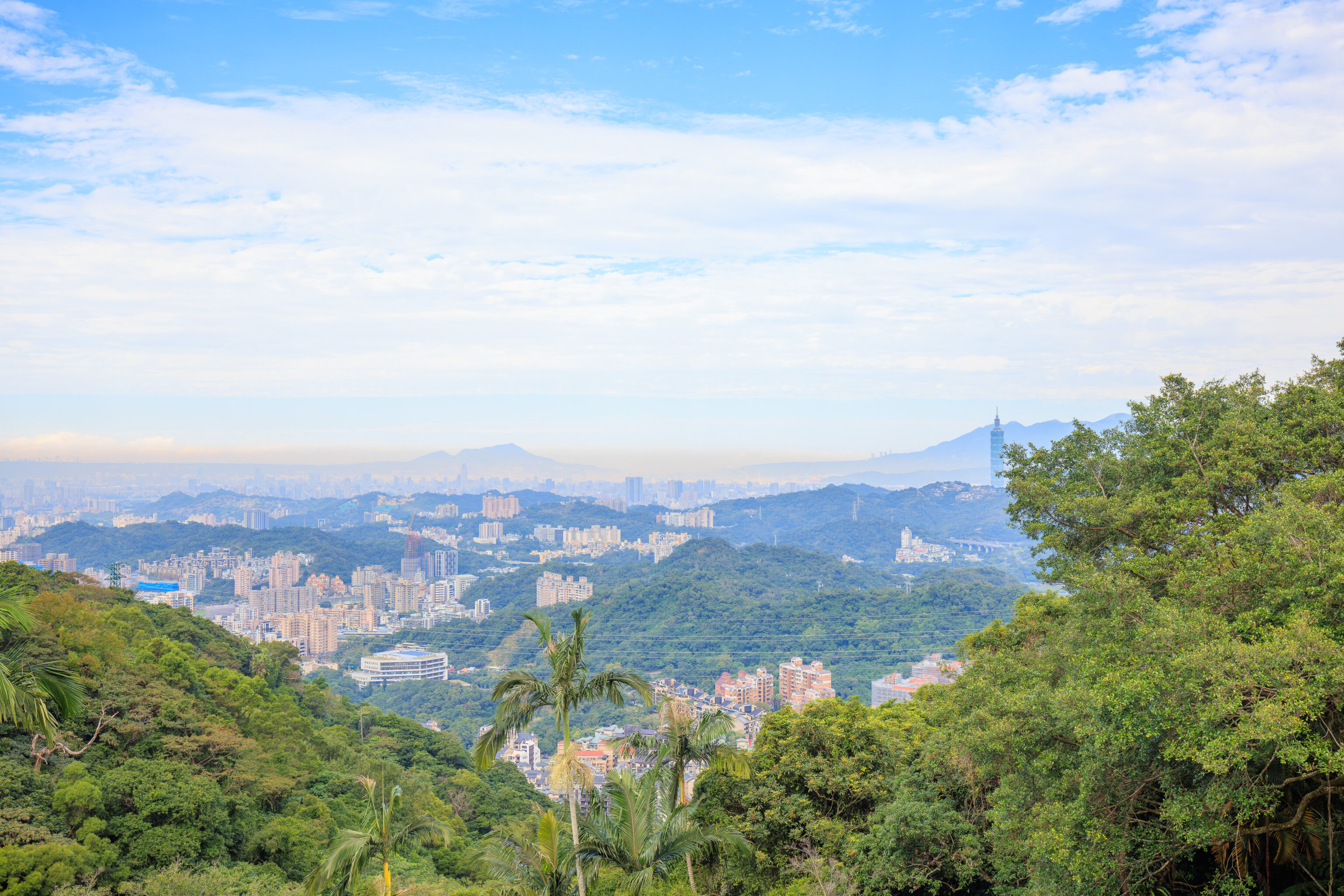
Taipei 101, the tallest building in Taipei by far, was clearly visible though almost obscured by some trees on the right.
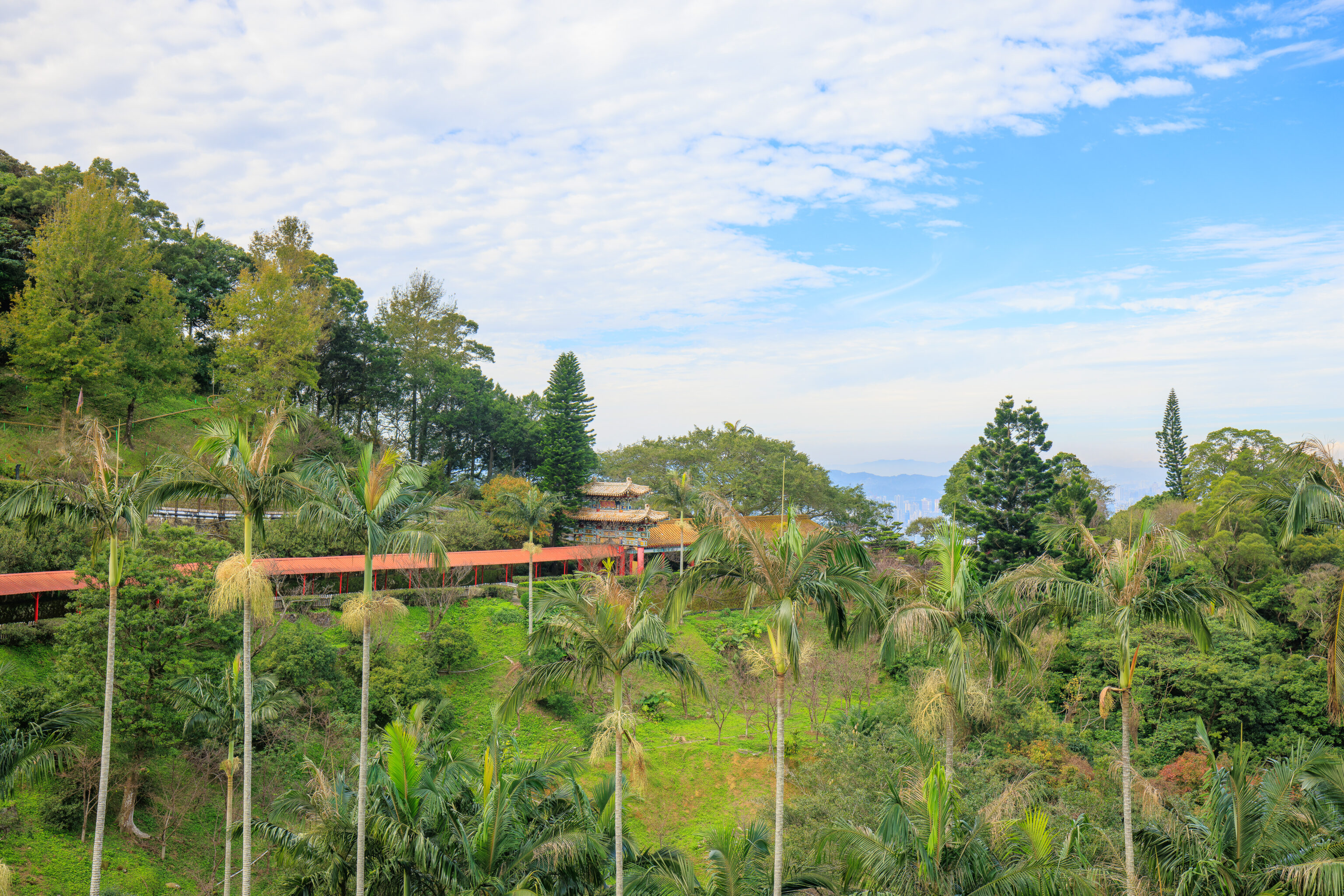
To the left, there was a covered walkway leading through a gate to some additional temple buildings.
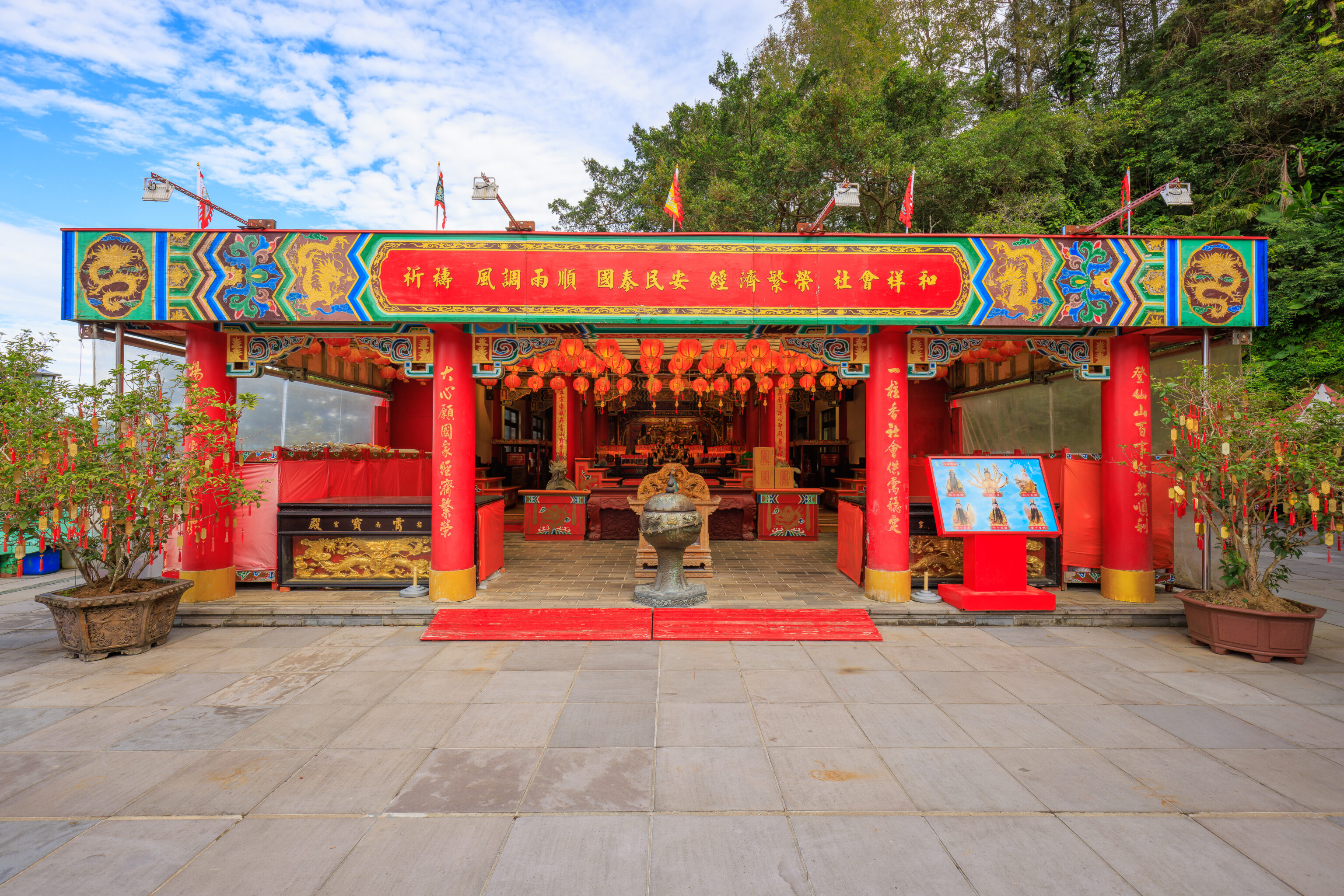
This smaller building, the 斗姥寶殿 Doulao Palace, was to our right. Again, the temple website provides some information3 (Google Translated):
Located on the right side of the Lingxiao Hall, it is dedicated to the main god Doulao (also known as Yuanming Doumu) Yuanjun, the mother of the fighting stars. She holds the sun and moon two wheels to correspond to yin and yang, and Tai Chi. Mortals who chant the name can eliminate disasters and reduce disasters, prolong life, and gain immeasurable blessings. The hall also enshrines the five star kings of the East Dou (Yangsheng Yilu Tianzun), South Dou (Yangming Pudu Tianzun), West Dou (Texuan Tiandao Tianzun), North Dou (Blessing Tianzun), and Middle Dou (Zhongling Wuji Tianzun), Various devotees have placed "Nian Dou", "Peace Dou" and "Nine Emperors Dou" on both sides to pray for the safety of their families, blessings and longevity. Every year on the ninth day of the ninth lunar month, the "Yuan Ming Dou Mu" longevity and the "Nine Emperors Star Lord" come to earth to worship the stars. From the first to the ninth day of the ninth month of the lunar calendar, a birthday celebration ceremony and Dharma fighting ceremony is held, which is called the "Nine Emperors Ceremony" fight.
The translation is unfortunately a bit rough.
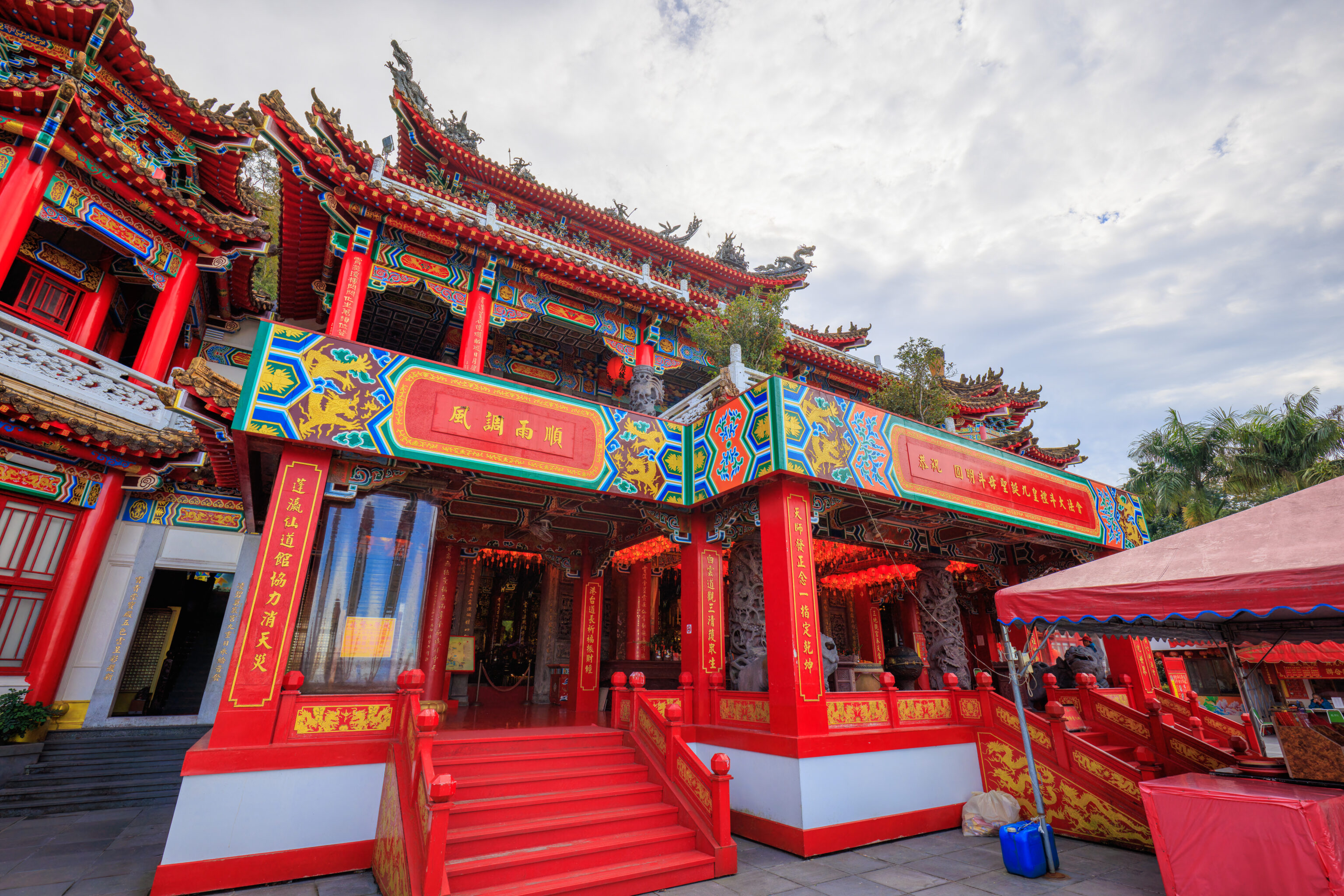
We headed into the Lingxiao Palace.
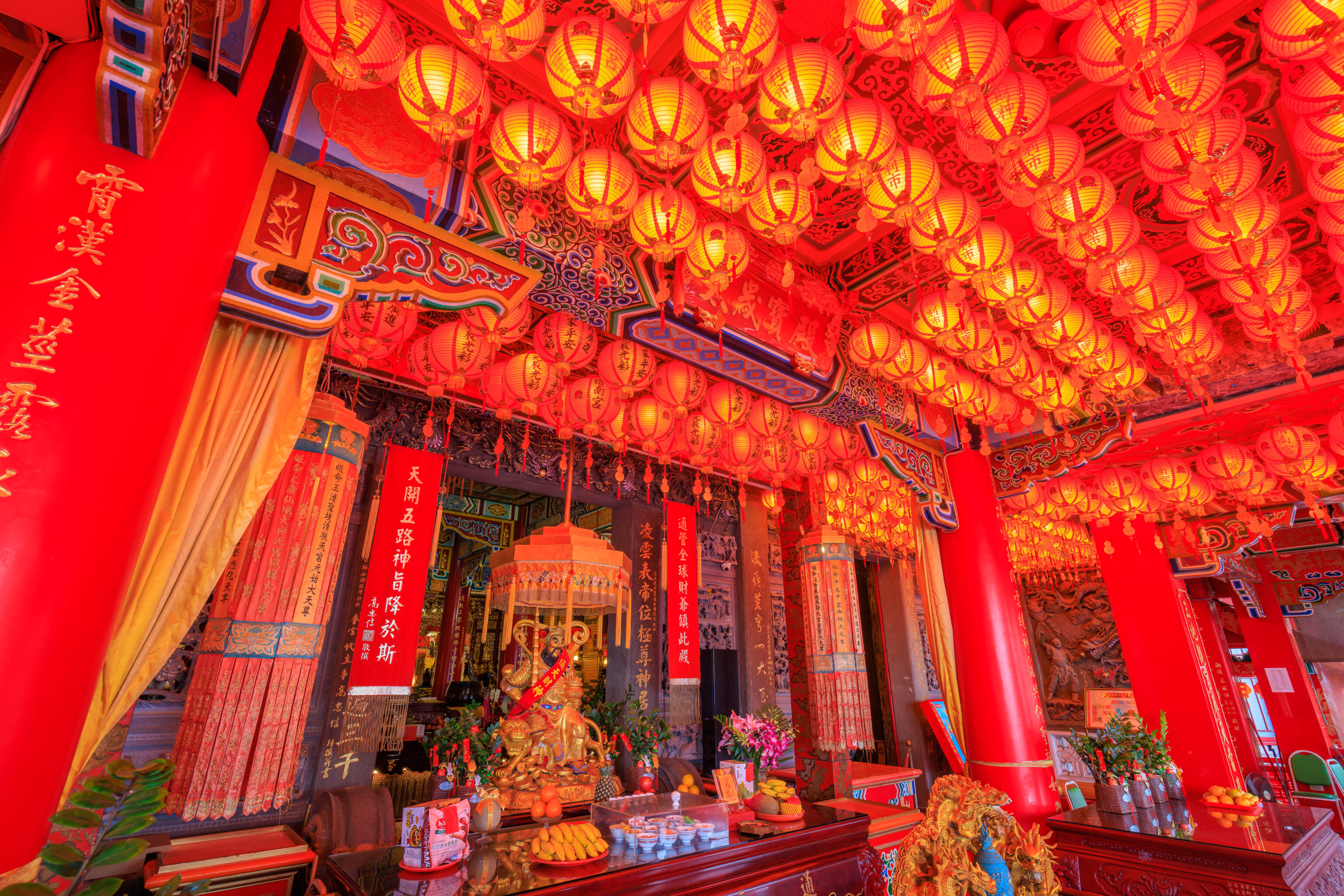
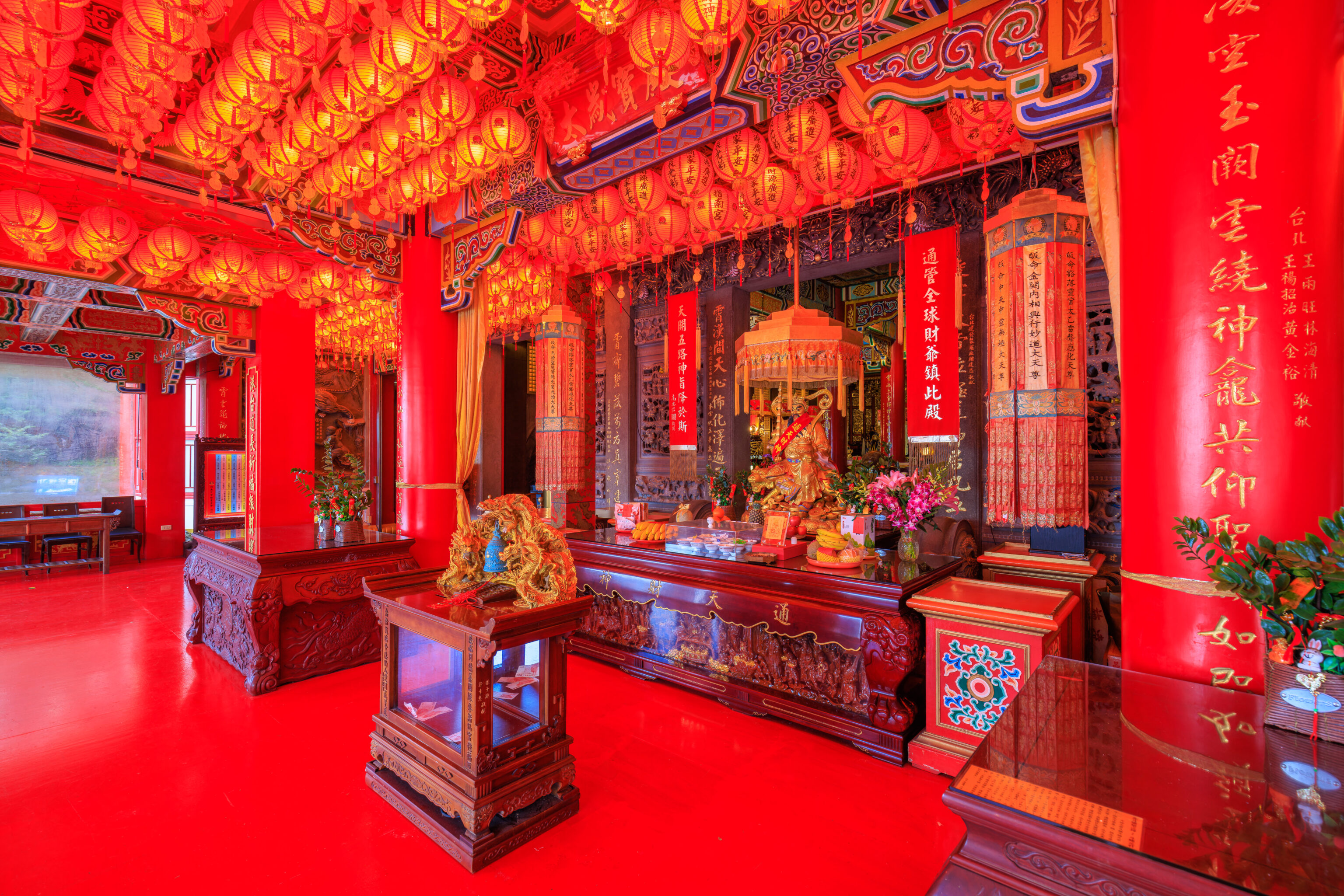
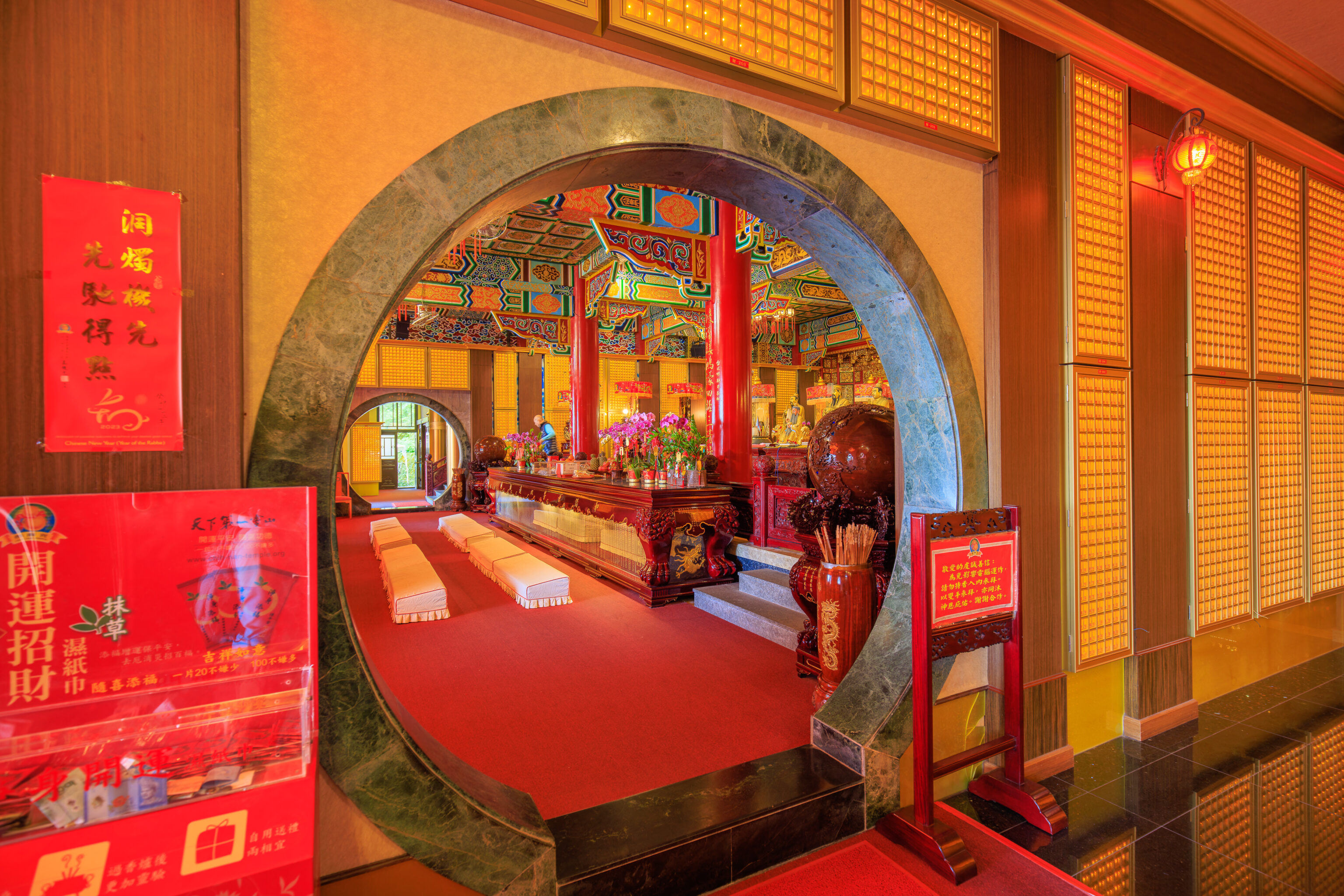
We took a quick look around before going up stairs to the second floor.
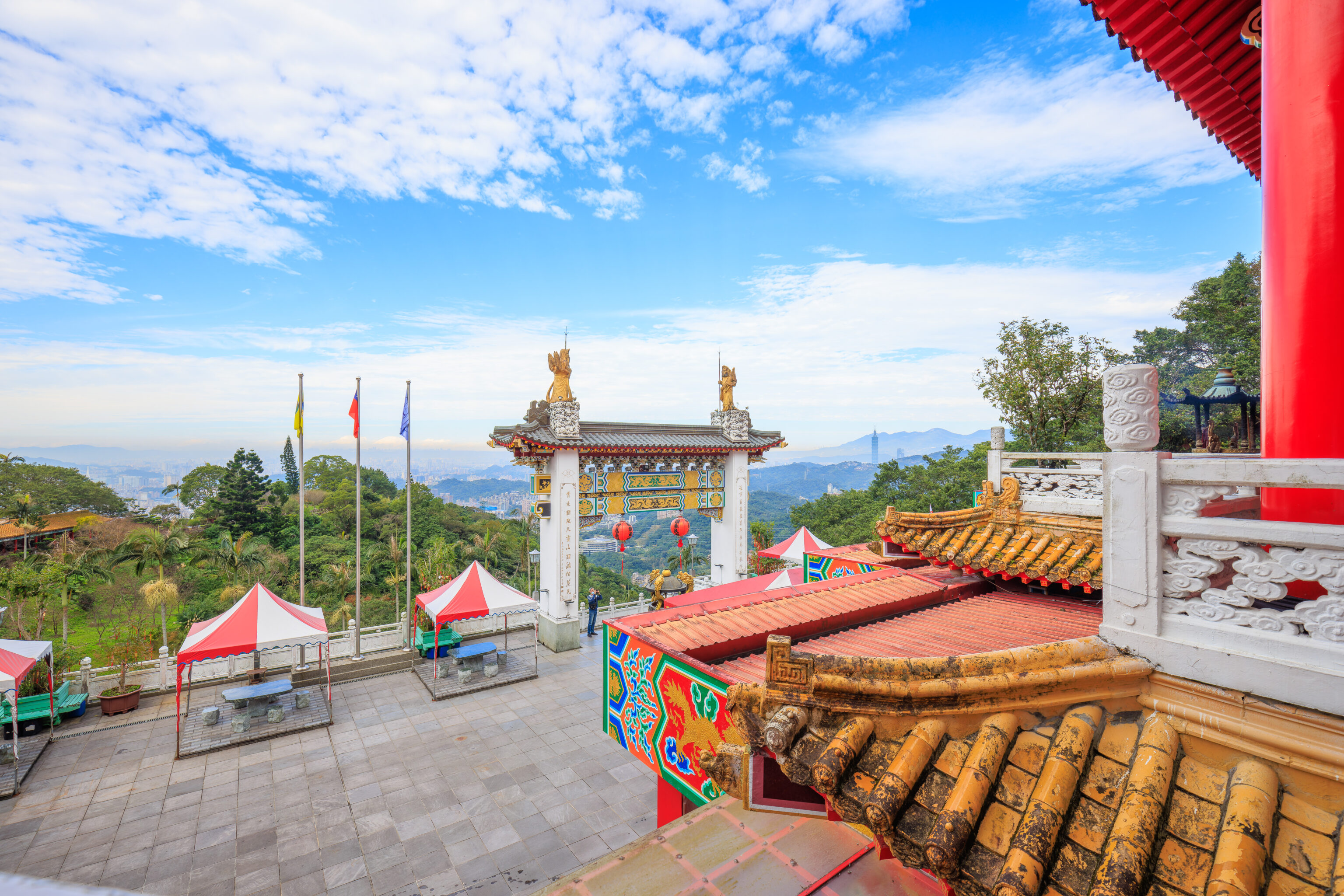
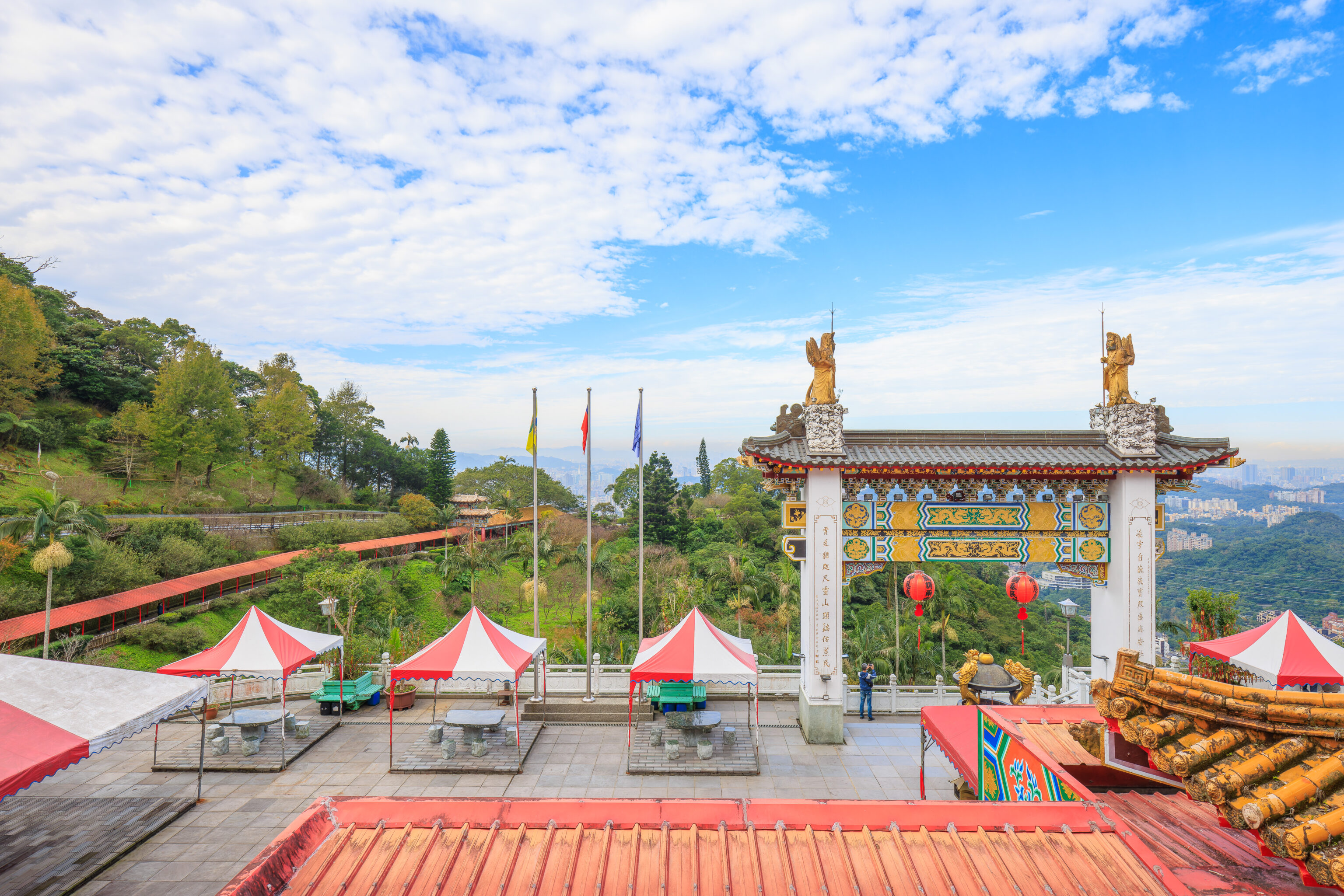
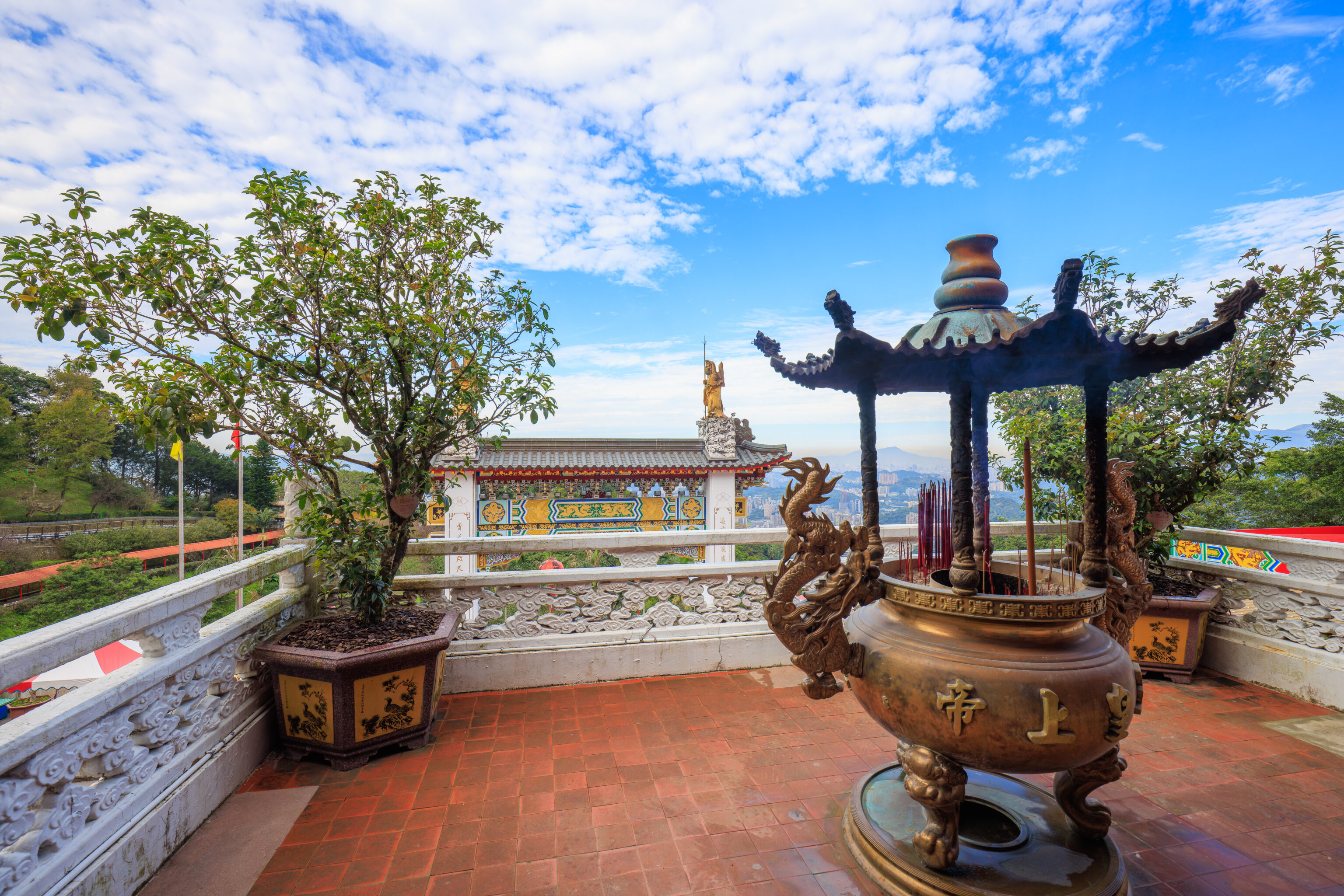
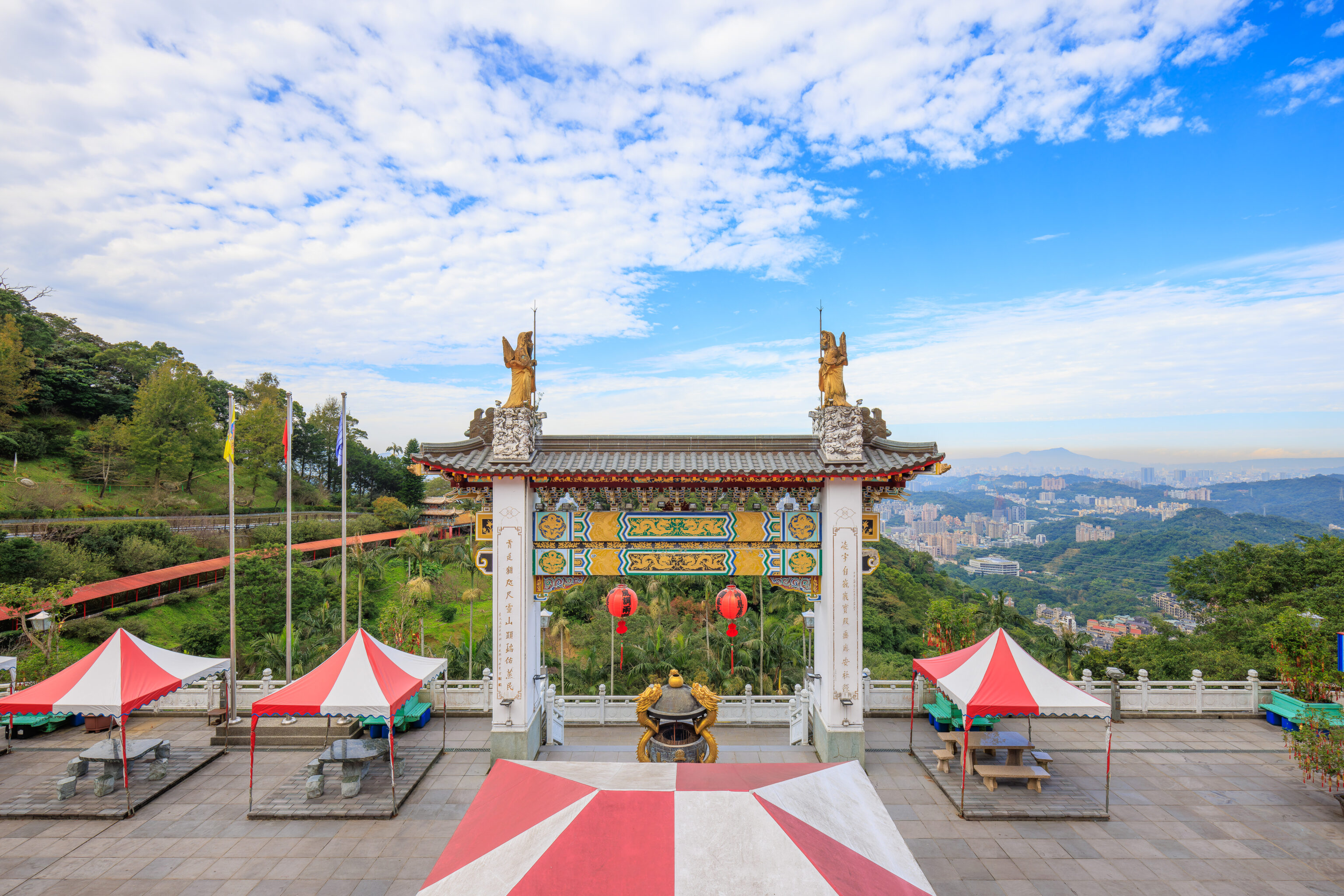
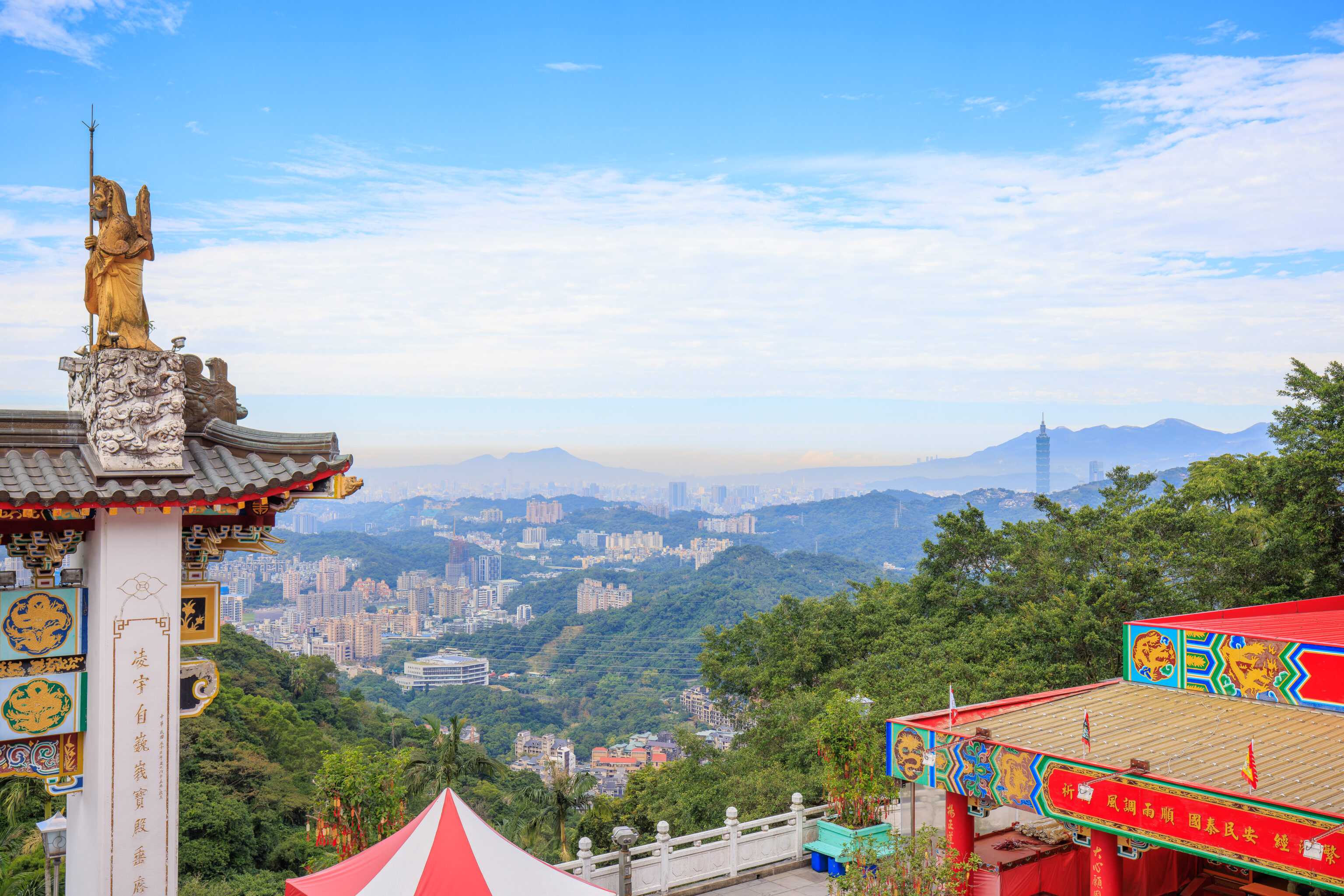
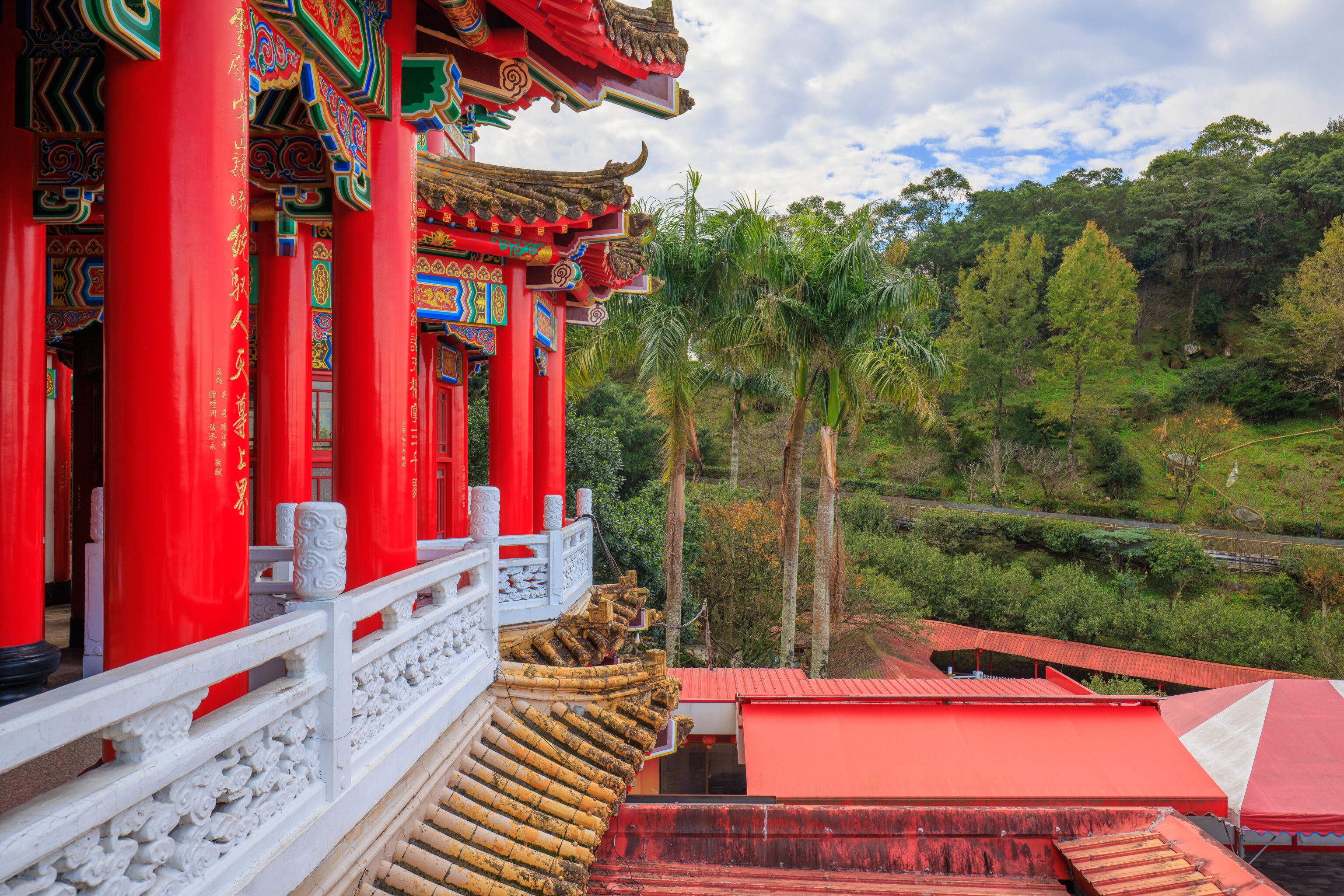
We took a quick look around the outside area of the second floor.
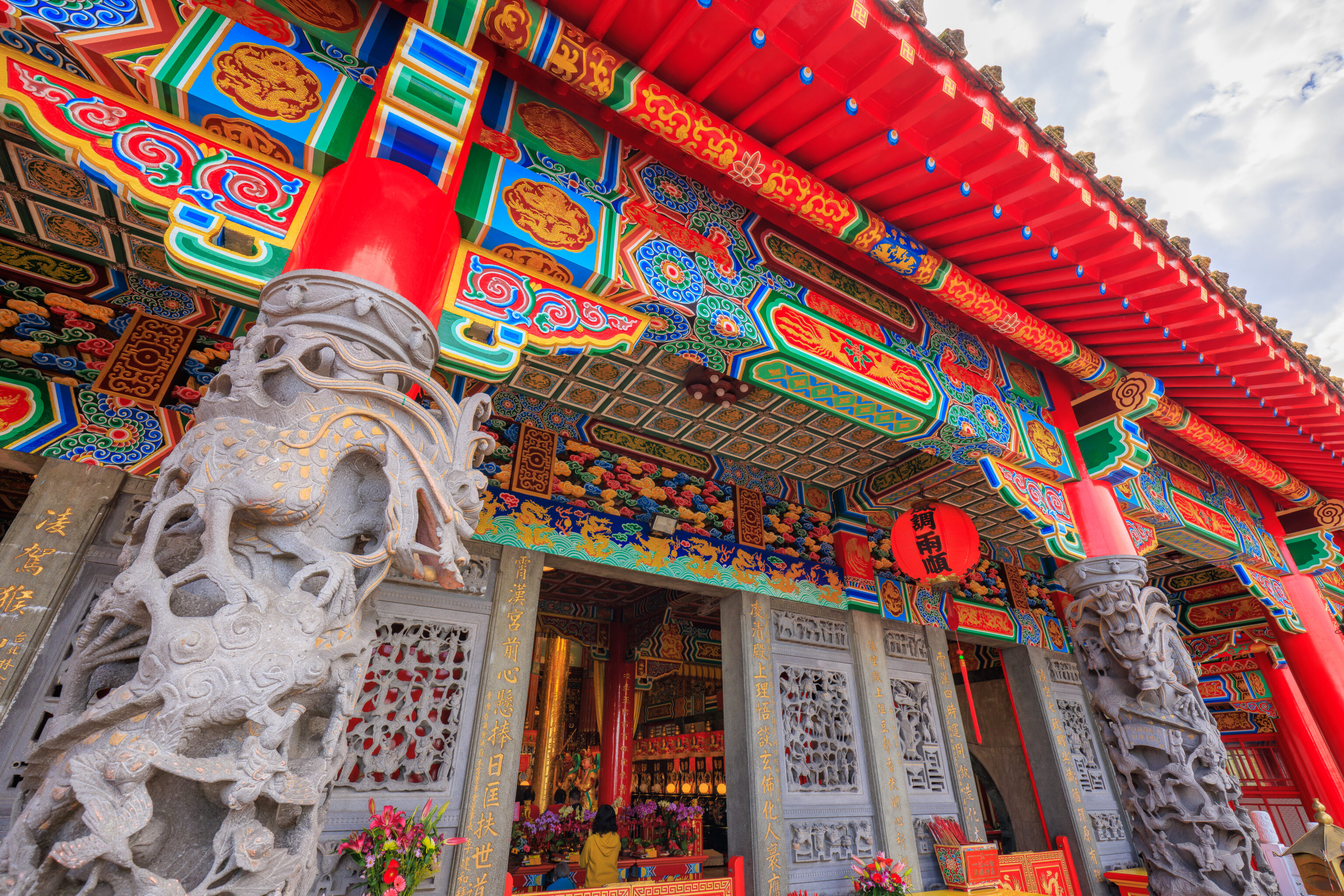
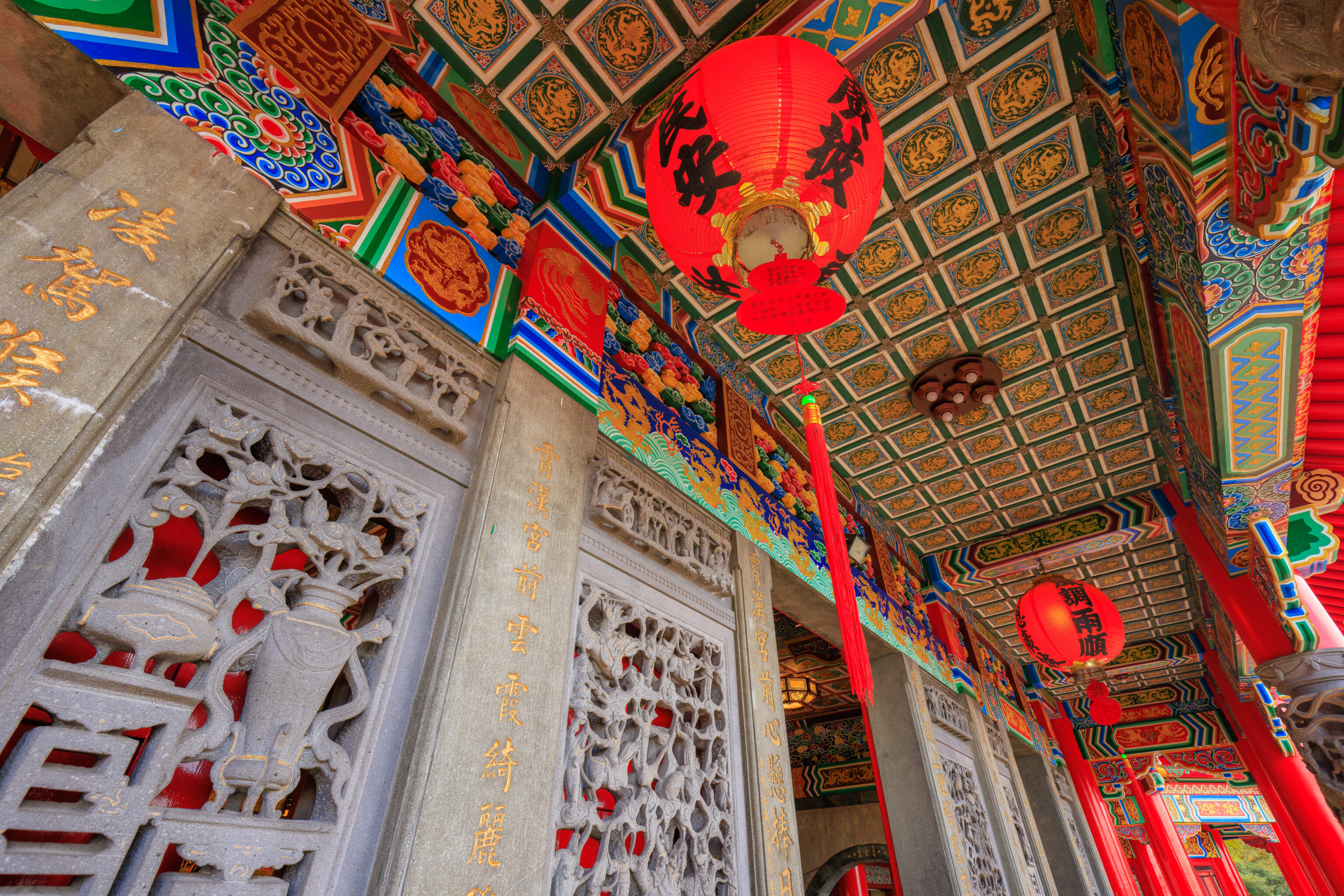
There was something going on inside.
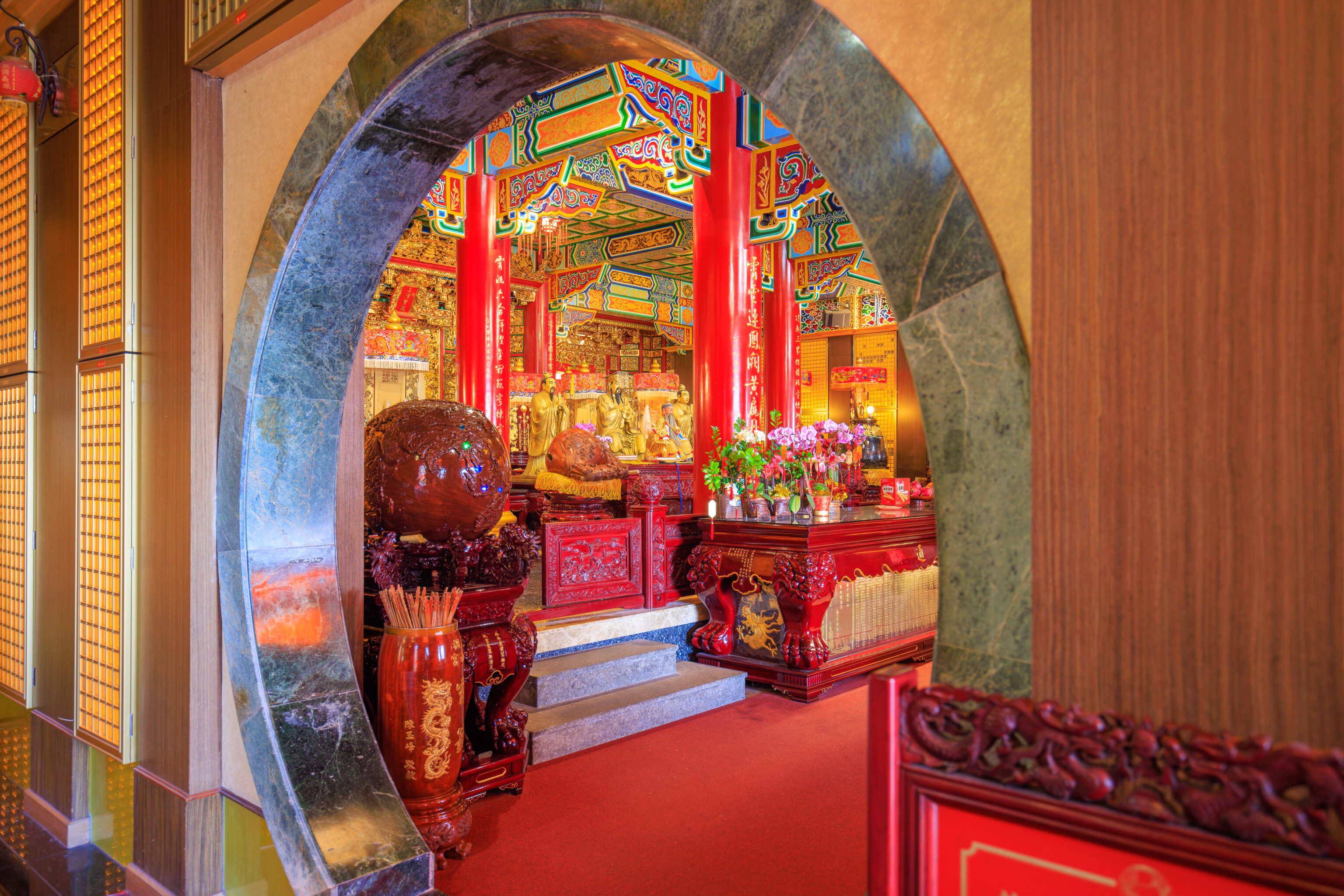
One of the rooms on the side of the building.
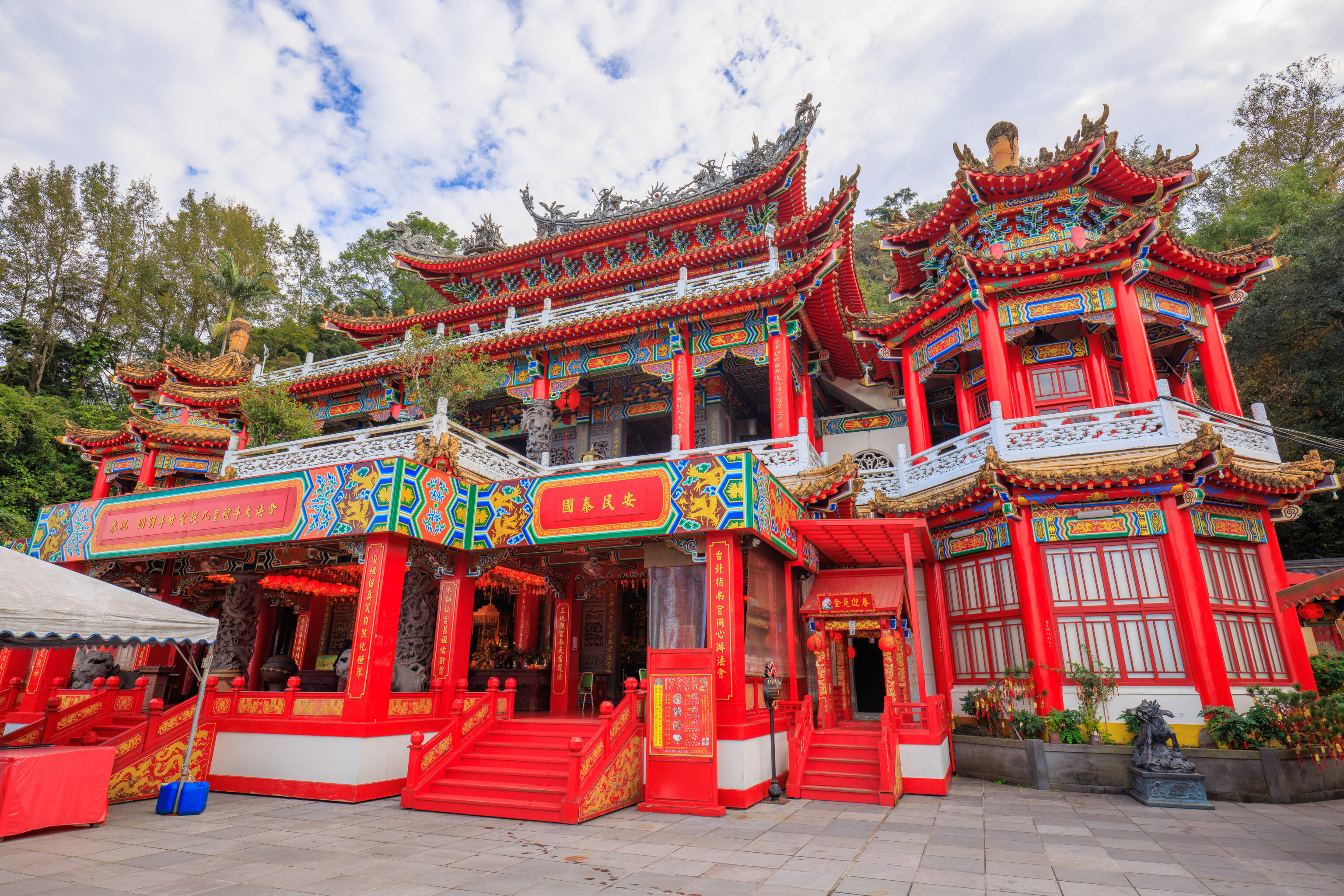
We exited the building and continued on, towards the covered passageway that we saw earlier.
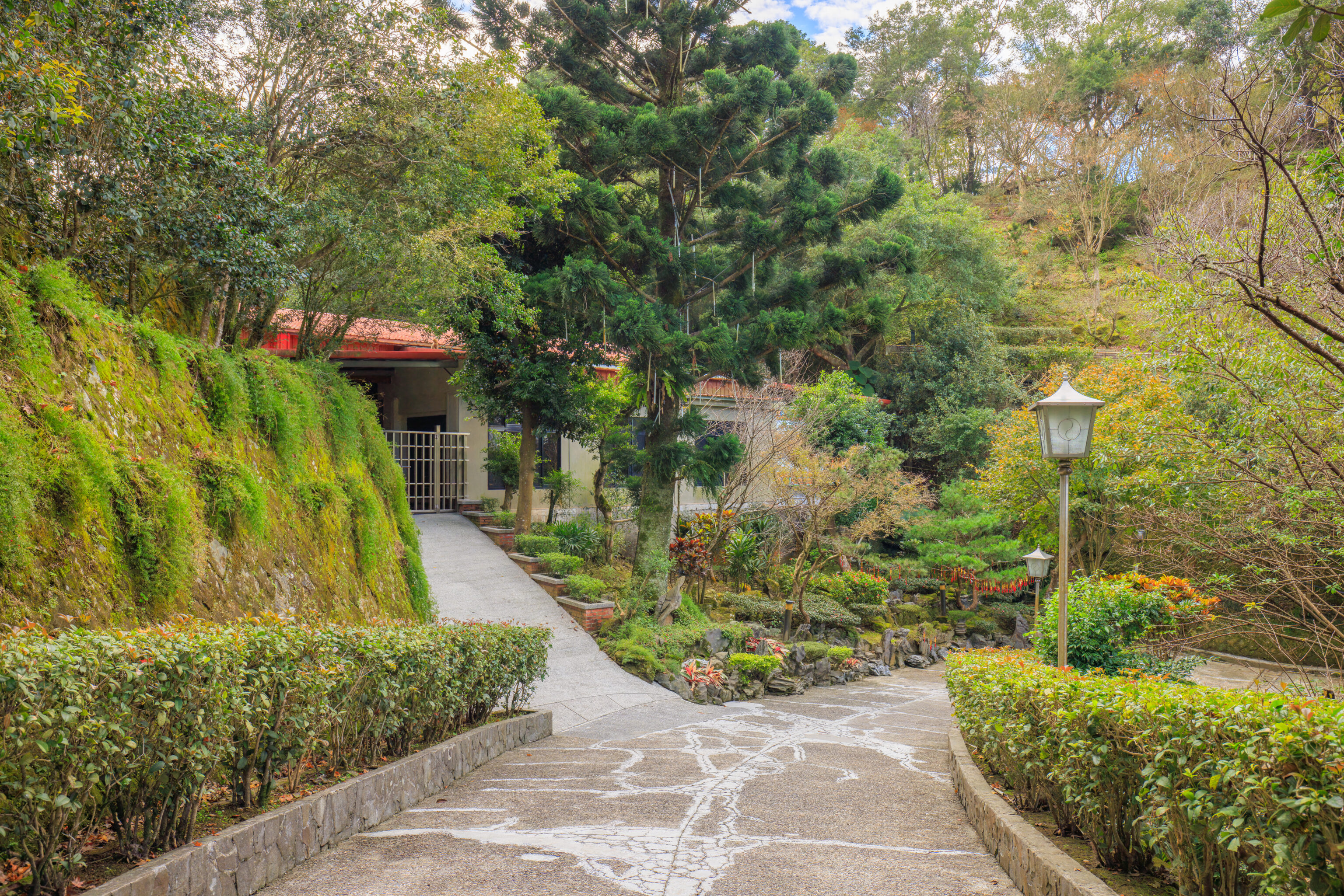
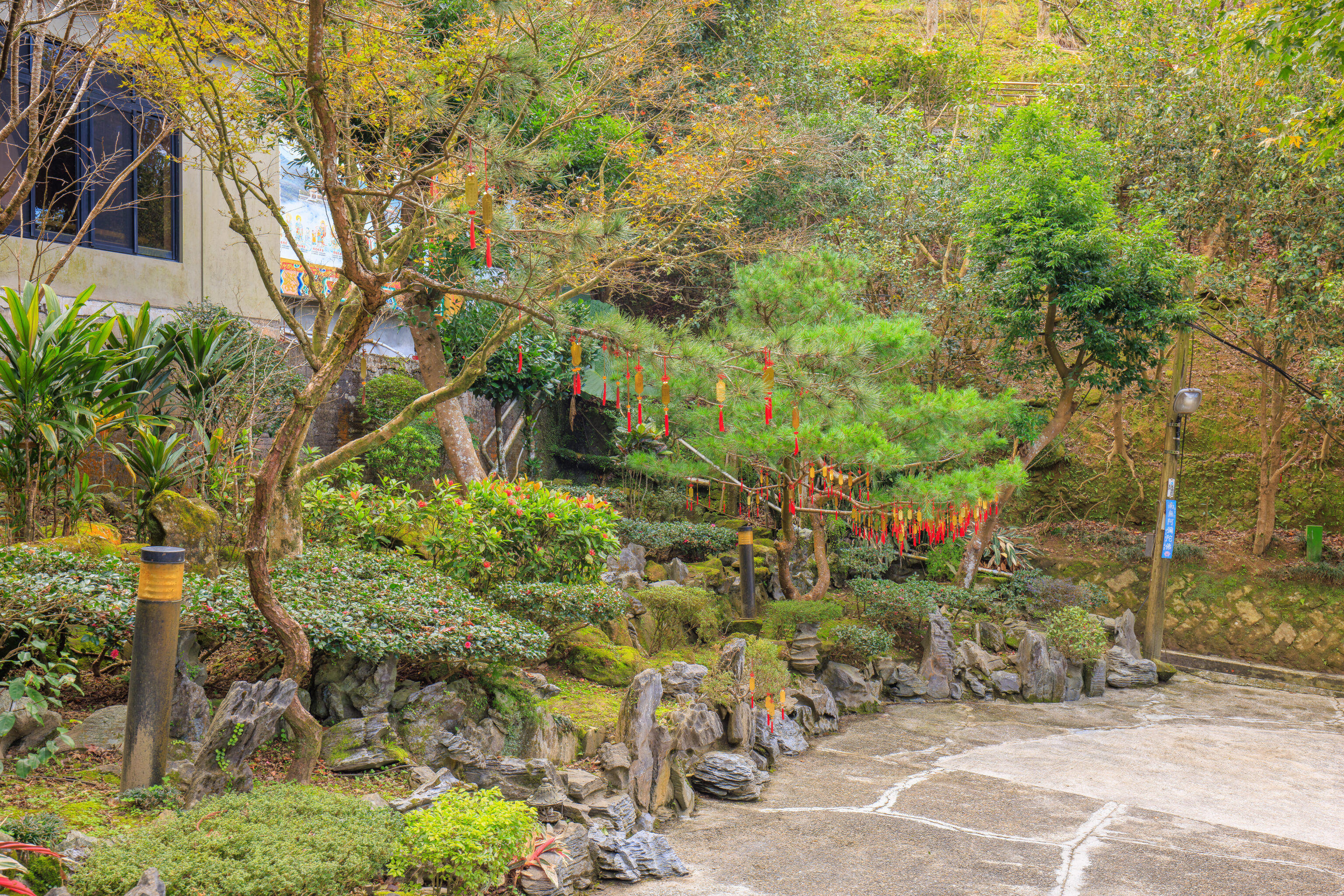
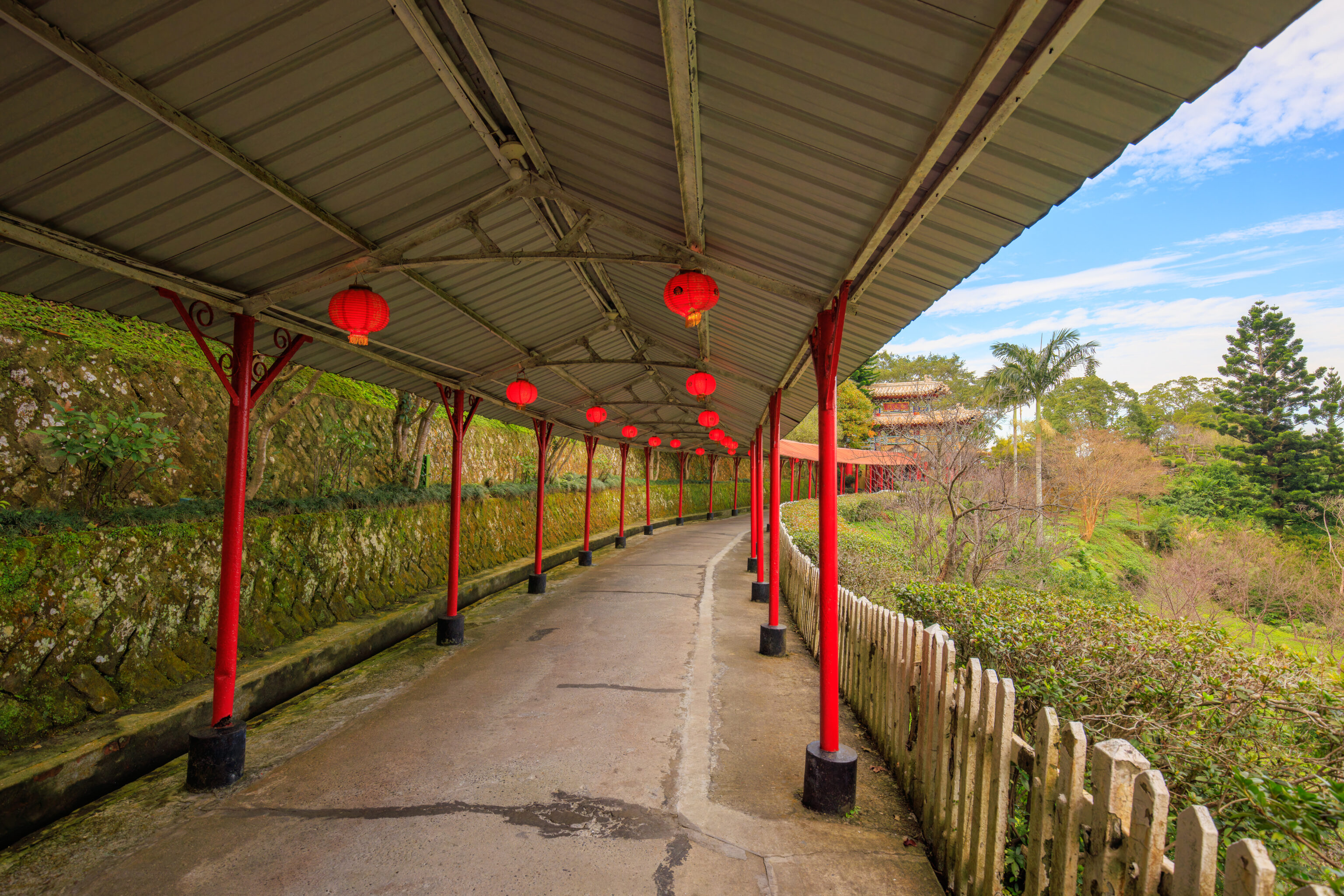
The path curved a bit before we entered the covered section.
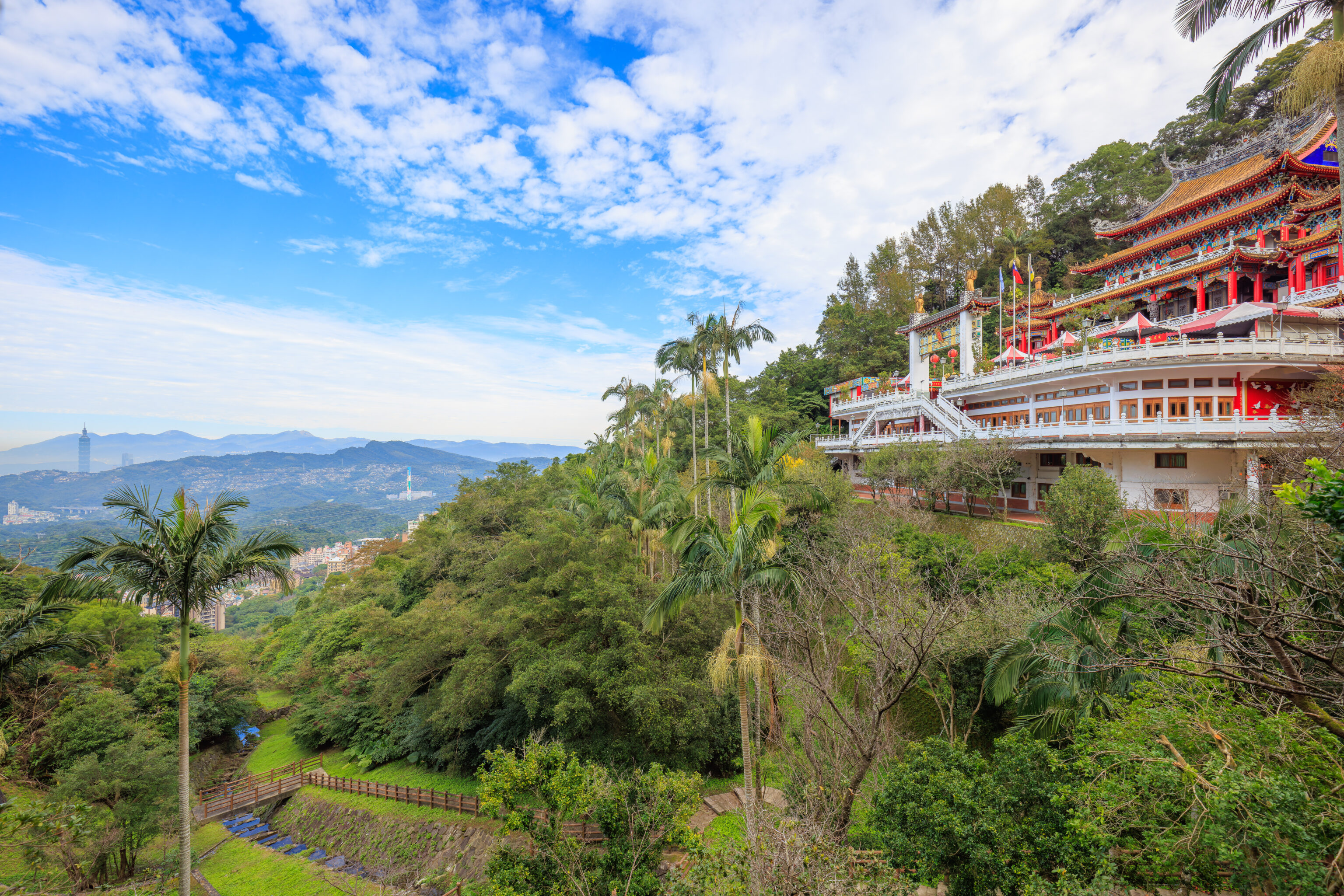
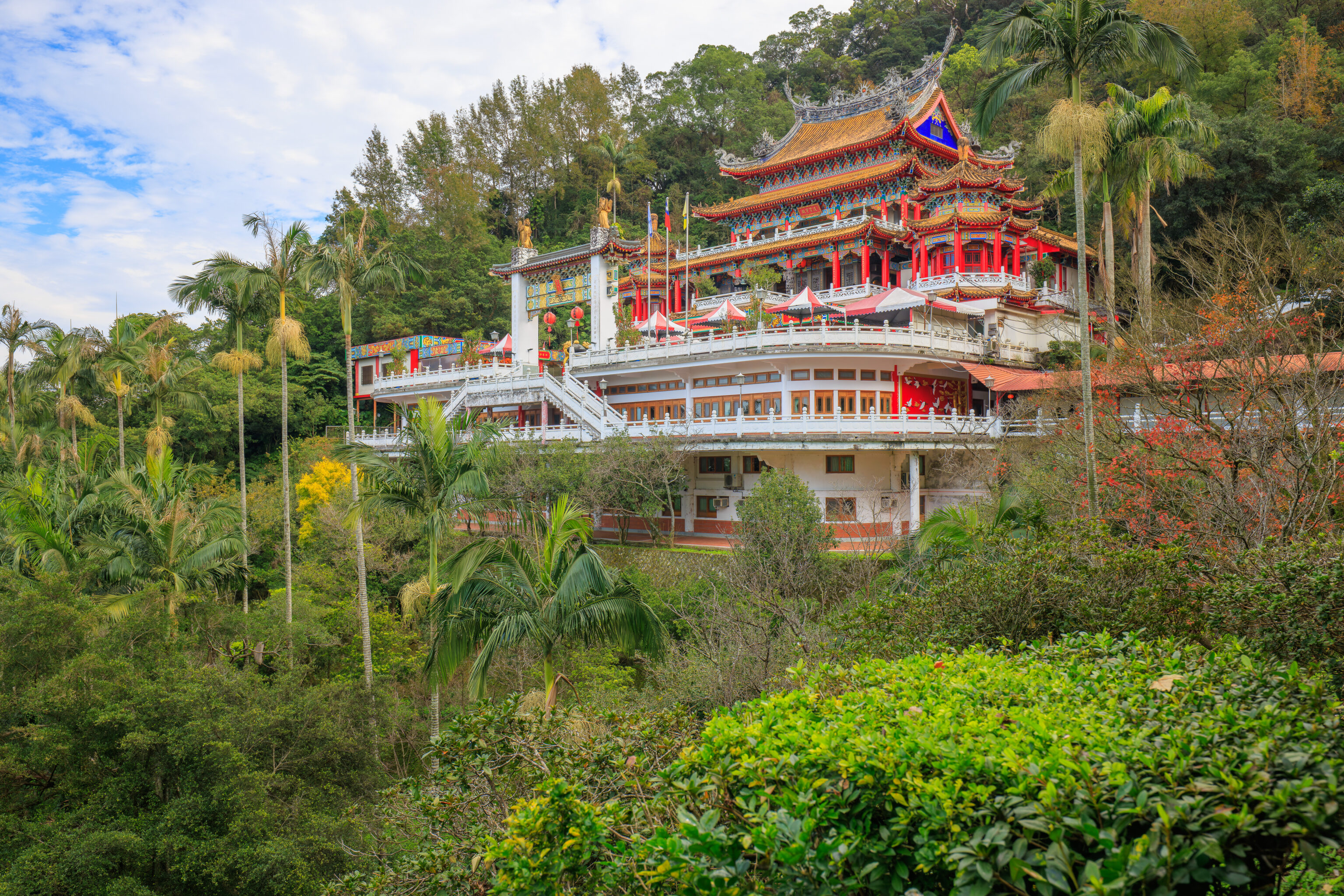
We had a great view of the Lingxiao Palace to our right.
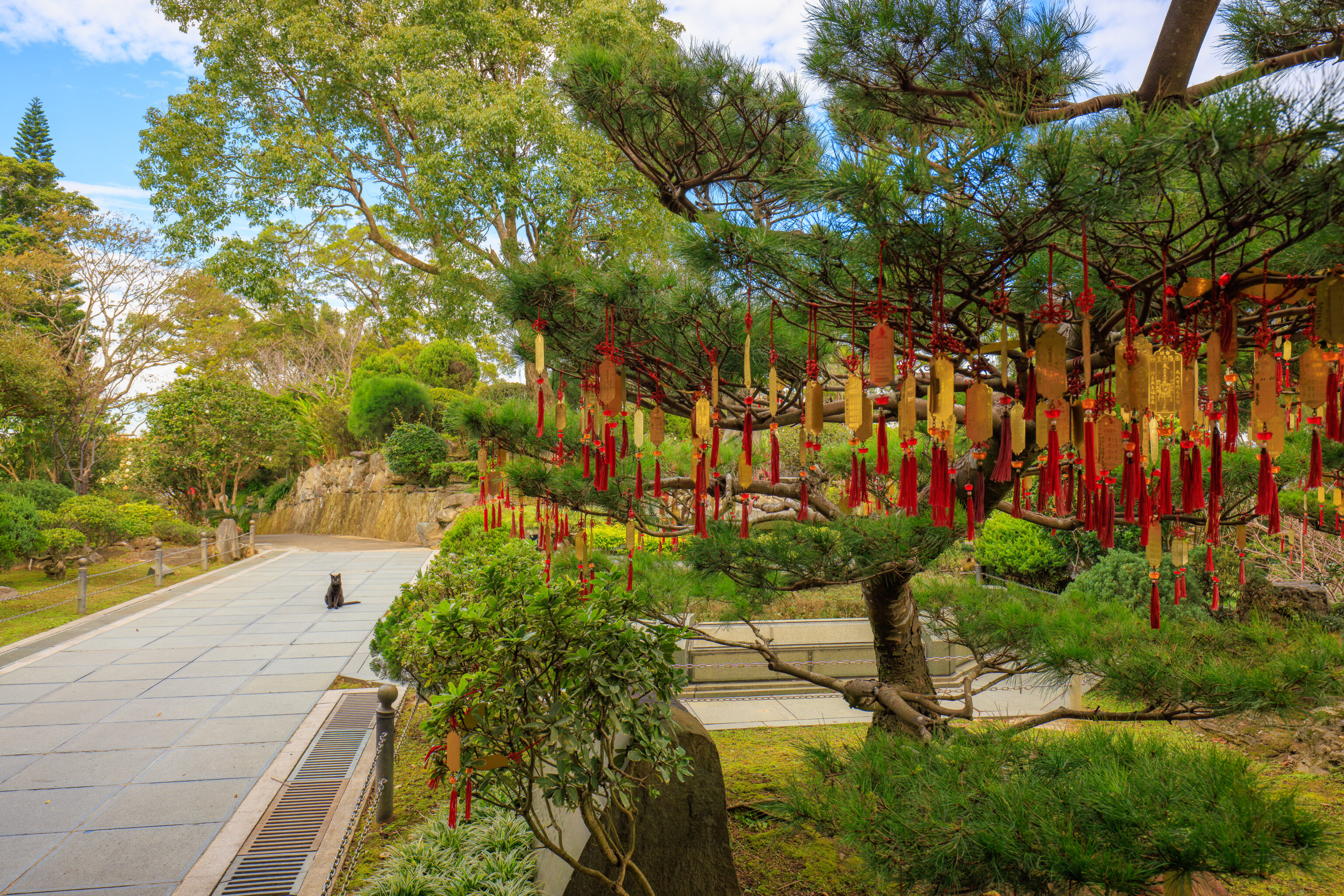
We continued walking past a junction, exiting the covered passageway and continued walking to the west. We saw a cat who pretty much ignored us!
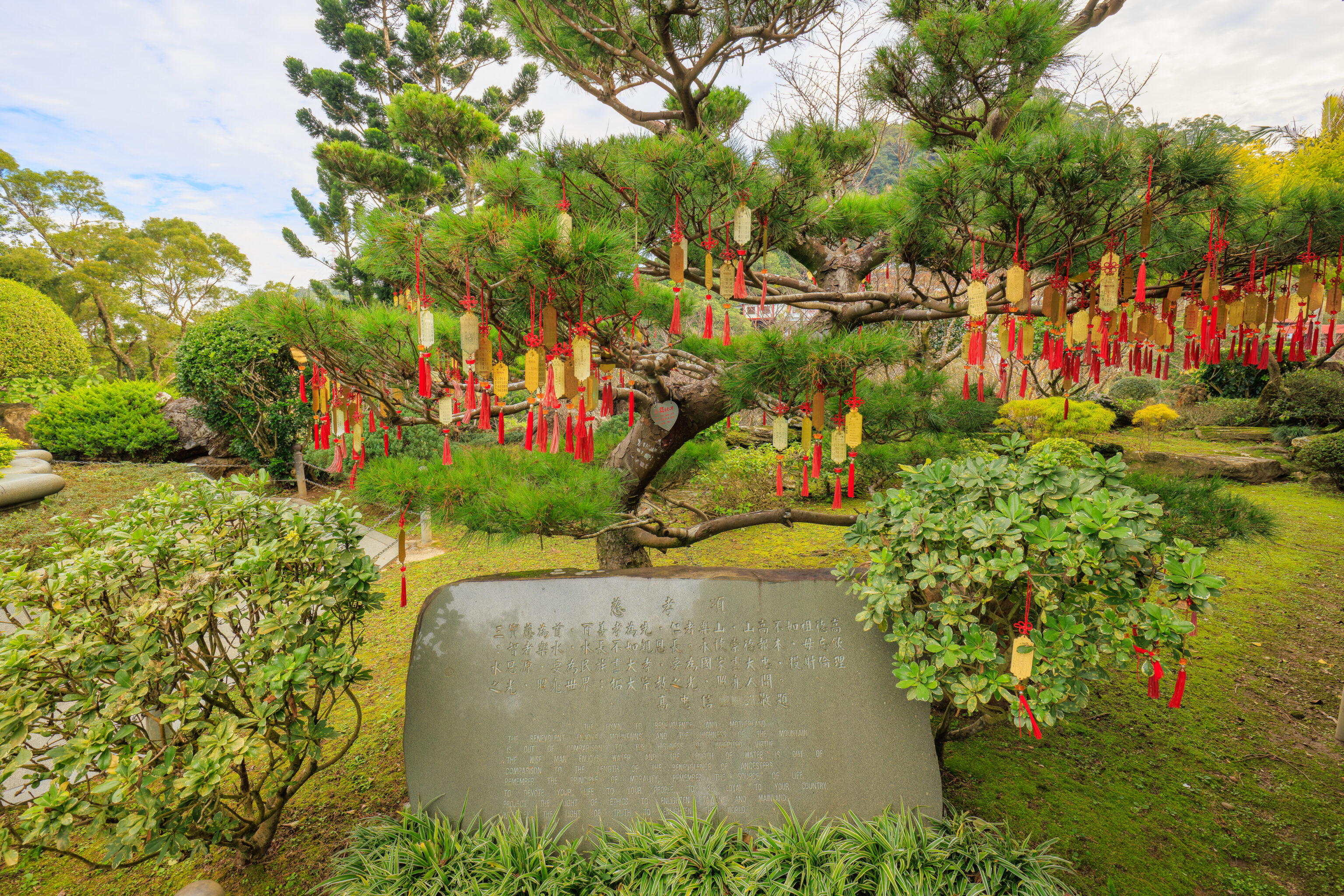
The stone tablet has some English text which reads:
The hymn to benevolence and motherland The benevolent enjoys mountains and the highness of the mountain is out of compassion to the highness of inherited virtue The wise man enjoys water and the length of water is out of comparison to the length of the benevolence of ancestors Remember the principle of morality, remember the source of life, to devote your life to your people, to be loyal to your country, project the light of ethics to enlighten Taiwan and mainland, intensify the light of truth to enlighten the world
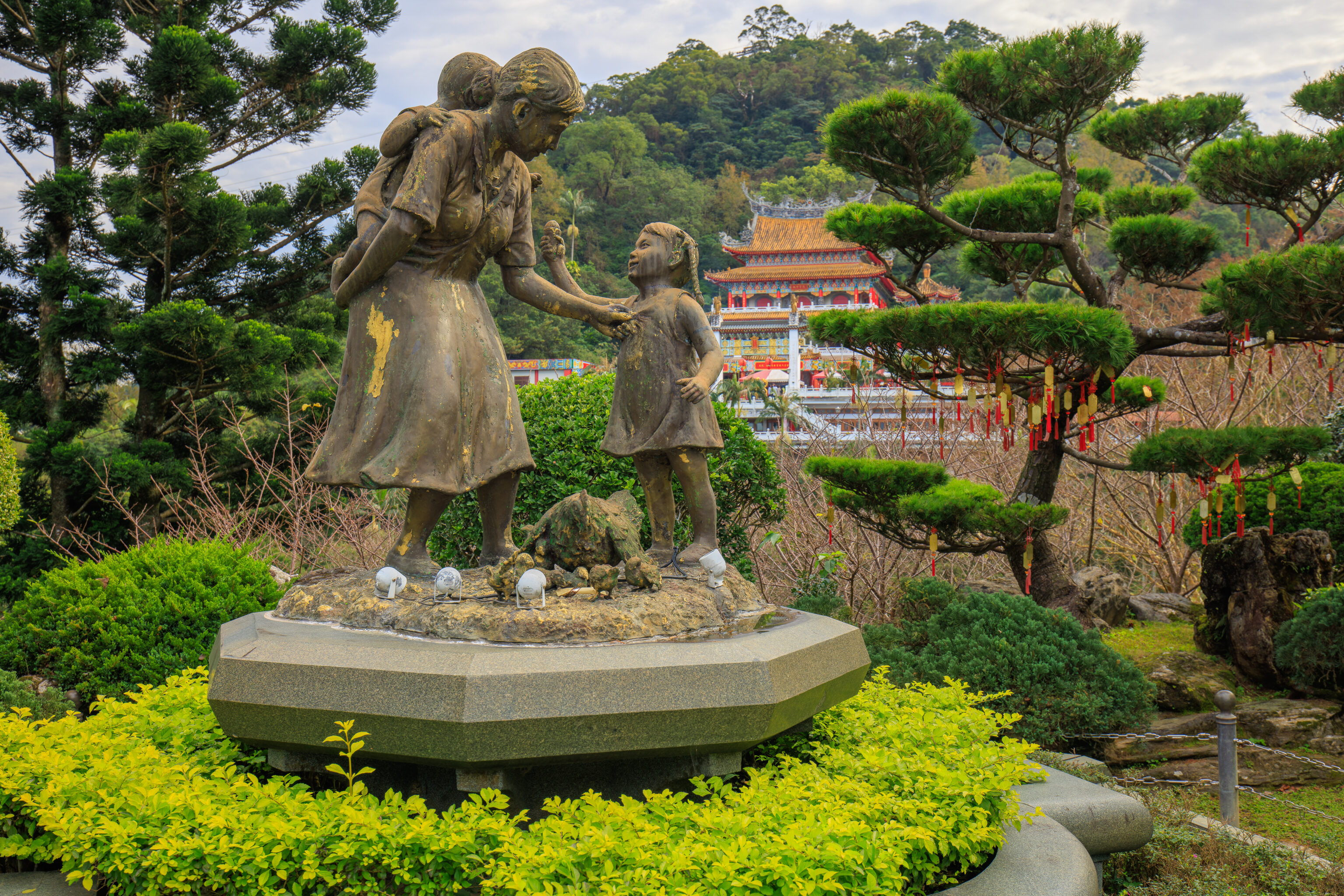
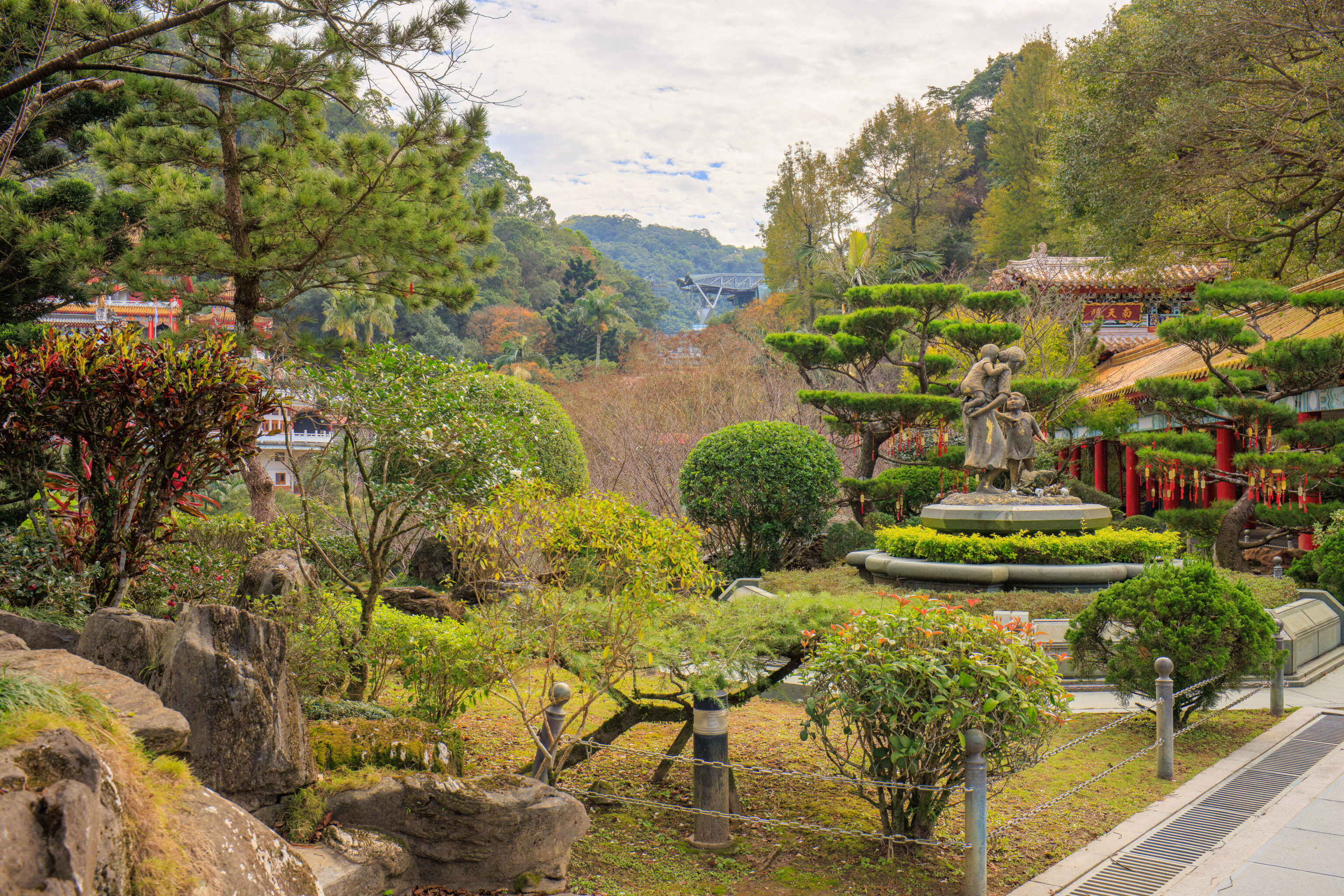
This sculpture showing a mother and two children was nearby in the 慈母園 Mother’s Garden. There is also a hen and her chicks, though it can be a bit hard to make out. The temple website describes this area4 (Google Translated):
Chairman Gao Chaowen of this palace adhered to the former chairman Gao Zhongxin and attached great importance to the promotion of the spirit of loyalty and filial piety. He built the Mother Garden in the back garden of Chunyang Palace and erected a statue of Mother in the garden. It took five years to complete. In addition to carrying young children on his back, in addition to the statue of a mother having a cordial conversation with a little girl, there is also a sculpture of a hen spreading her wings to protect her chicks. According to Gao Zhongxin, the chairman who proposed this composition, the hen will stand when the sun goes down and the earth becomes colder. When the time comes, it will spread its wings, allowing the chick to feel the warmth of its mother, and interpret love more appropriately. In consideration of the hardships every mother in the world has to endure during her ten-month pregnancy and childbirth, the Nanzhan Palace built a statue of a loving mother, hoping that every believer who comes here can feel the greatness of the mother after seeing the statue.
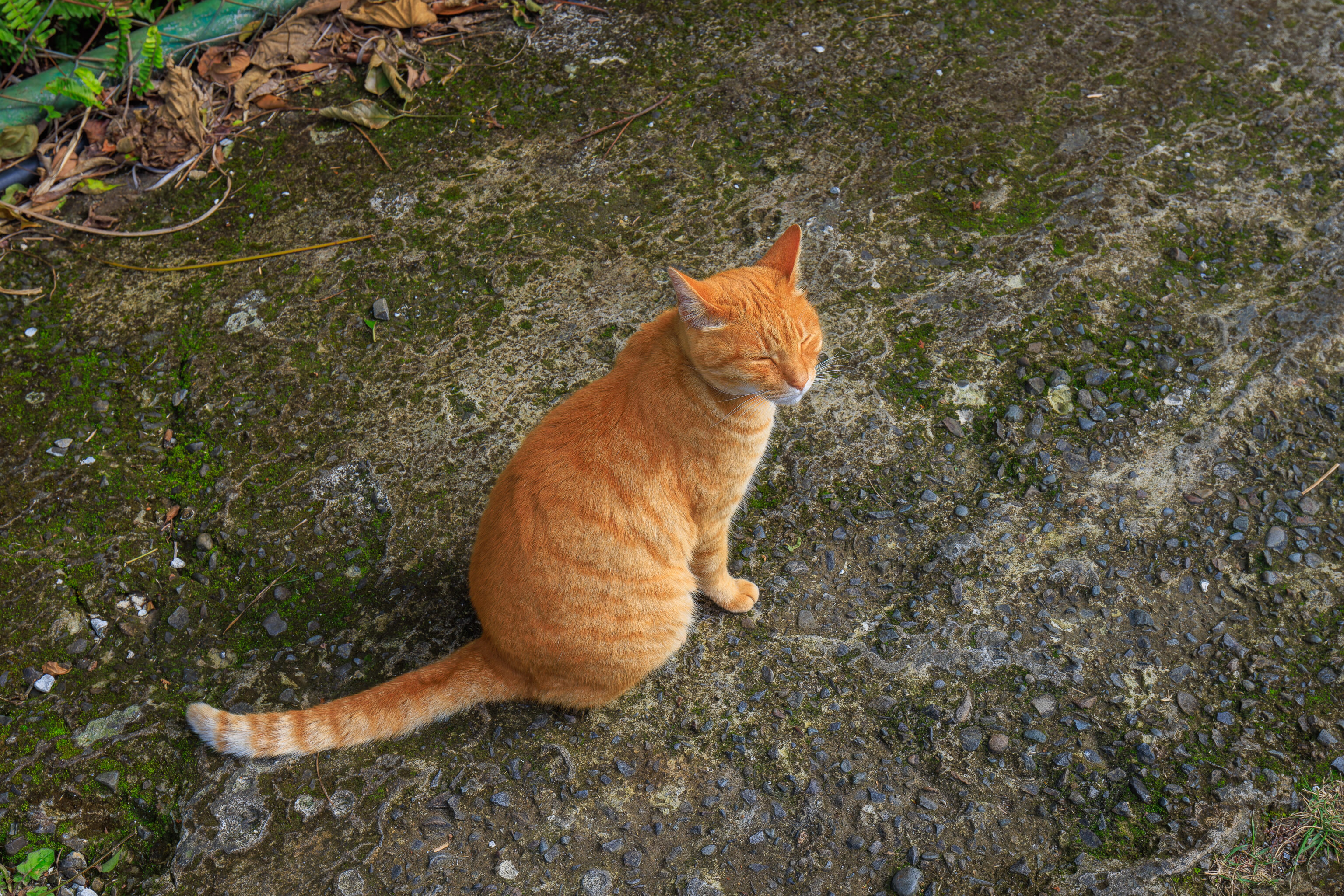
The path we were on didn’t seem to really lead anywhere so we backtracked. While heading back, we passed by an orange cat!
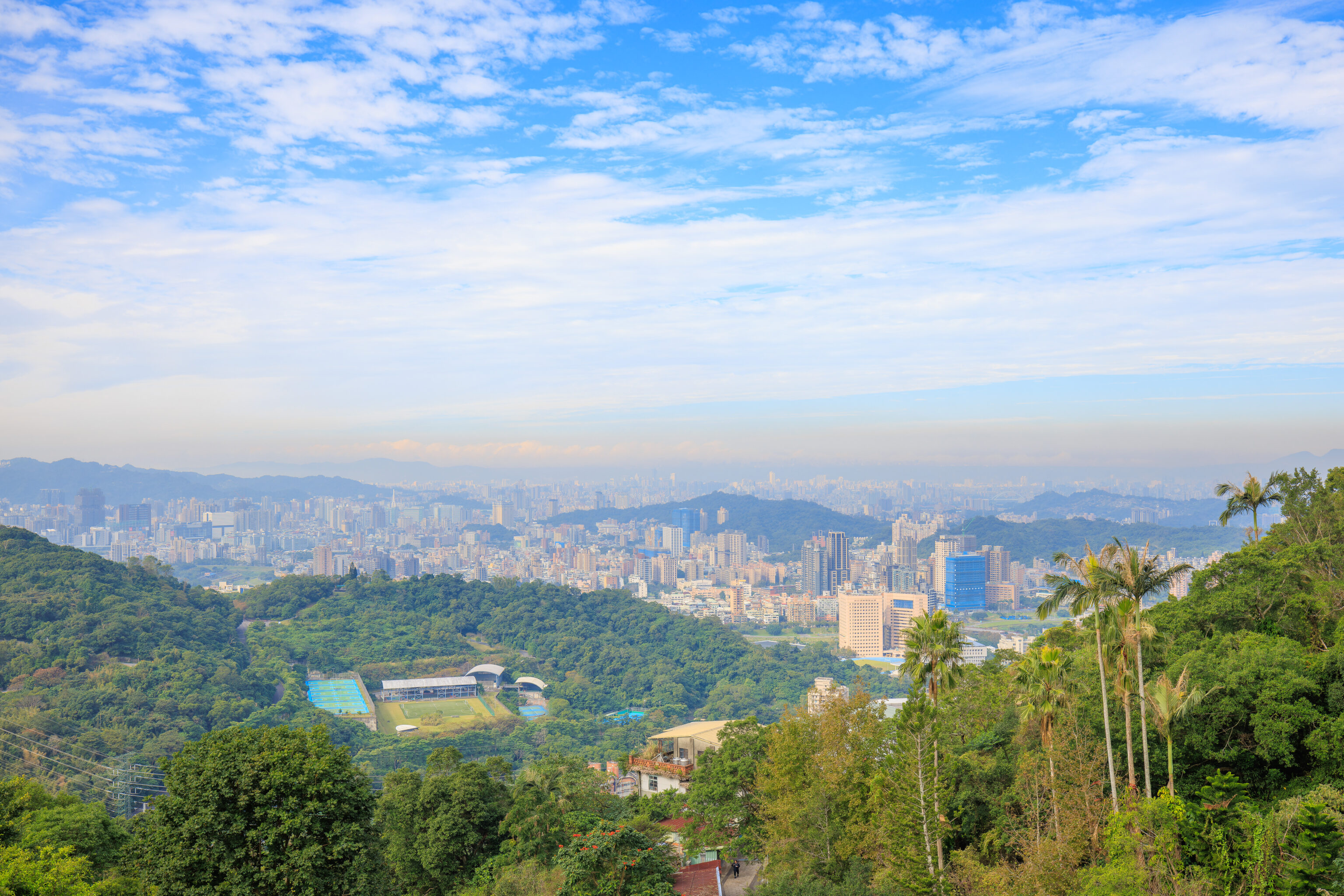
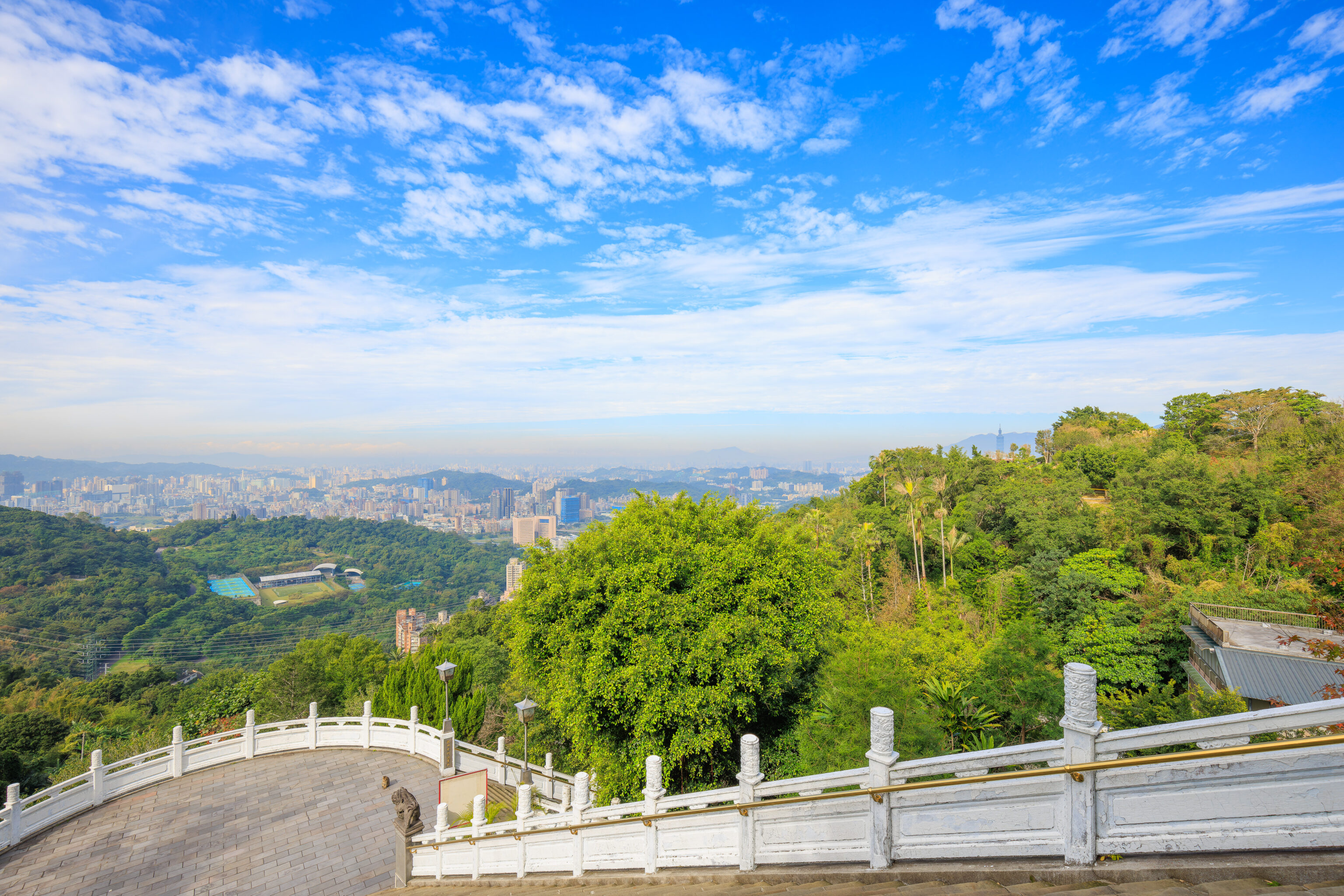
At the junction, we turned and continued under the covered passageway to another temple building, 純陽寶殿 Chunyang Palace. There was some construction going on with scaffolding over the front portion of the building. We walked under it though to see the view out to the west. A cat sat quietly at the bottom of the stairs.
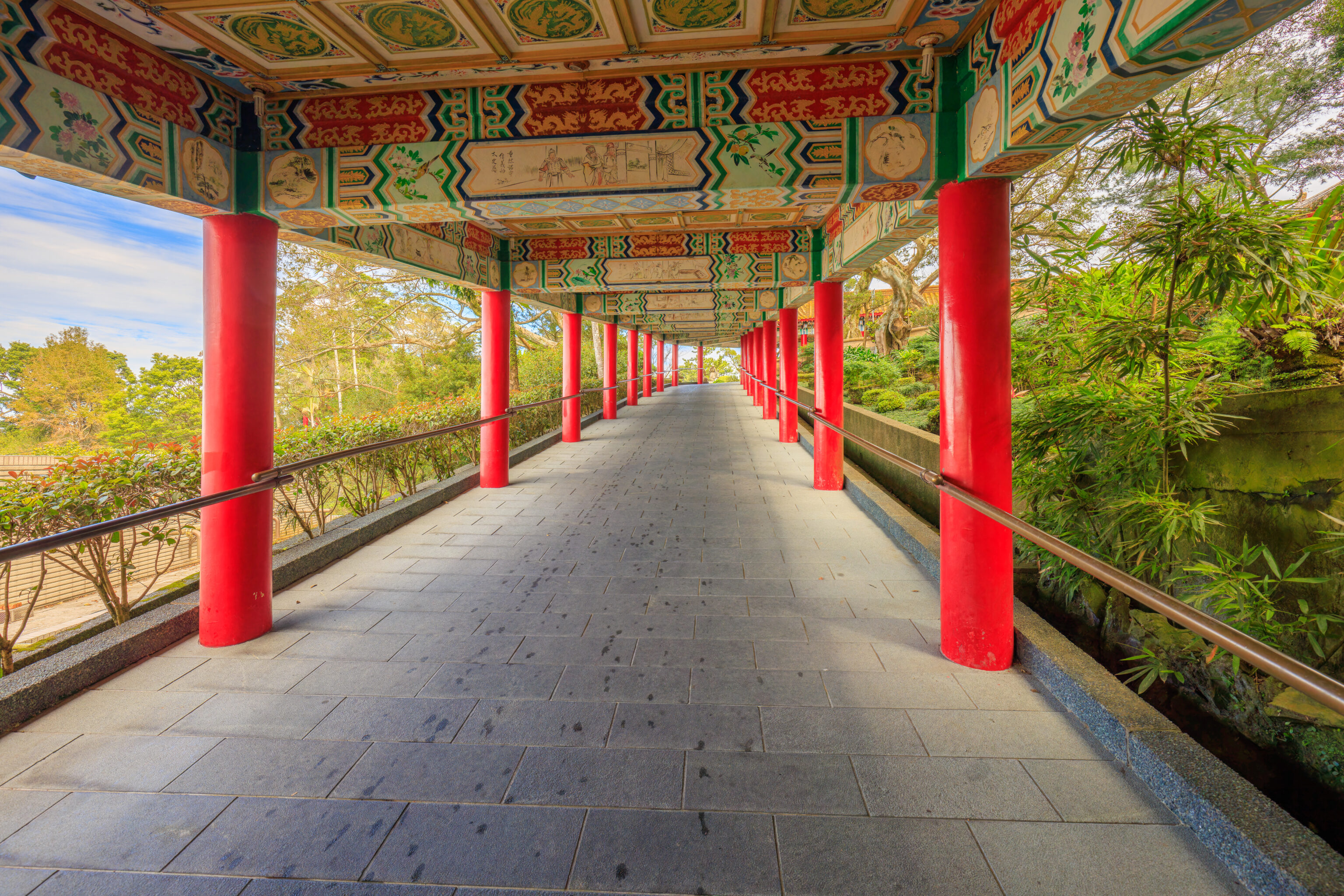
We started to head back to the gondola station. This passageway, which we walked down to get to the Chungyang Palace, is the 朝天大道 Chaotian Avenue. The temple website provides a description5 (Google Translated):
After exiting Nantianmen, there is Chaotian Avenue, a long water corridor with red round columns and colorful paintings around the beams and columns. The content of the paintings are allusions about loyalty, filial piety and justice. There are more than 130 paintings in total. Although there are occasional spots on the pattern, we can still see the connotation of Taoism educating the environment and persuading people to do good.
The translation is a bit rough but is understandable at least.
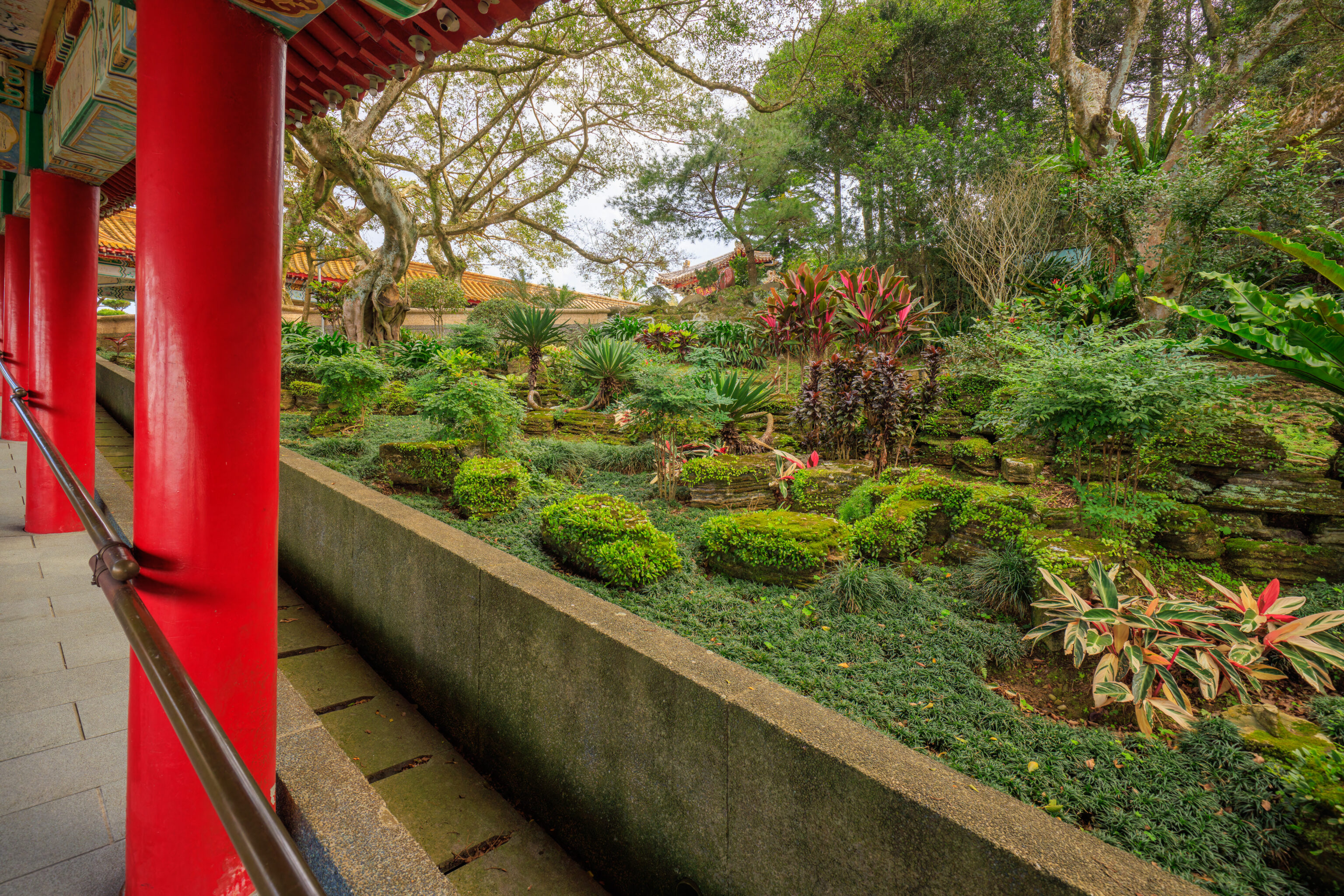
A small landscaped garden was on the right side of the passageway.
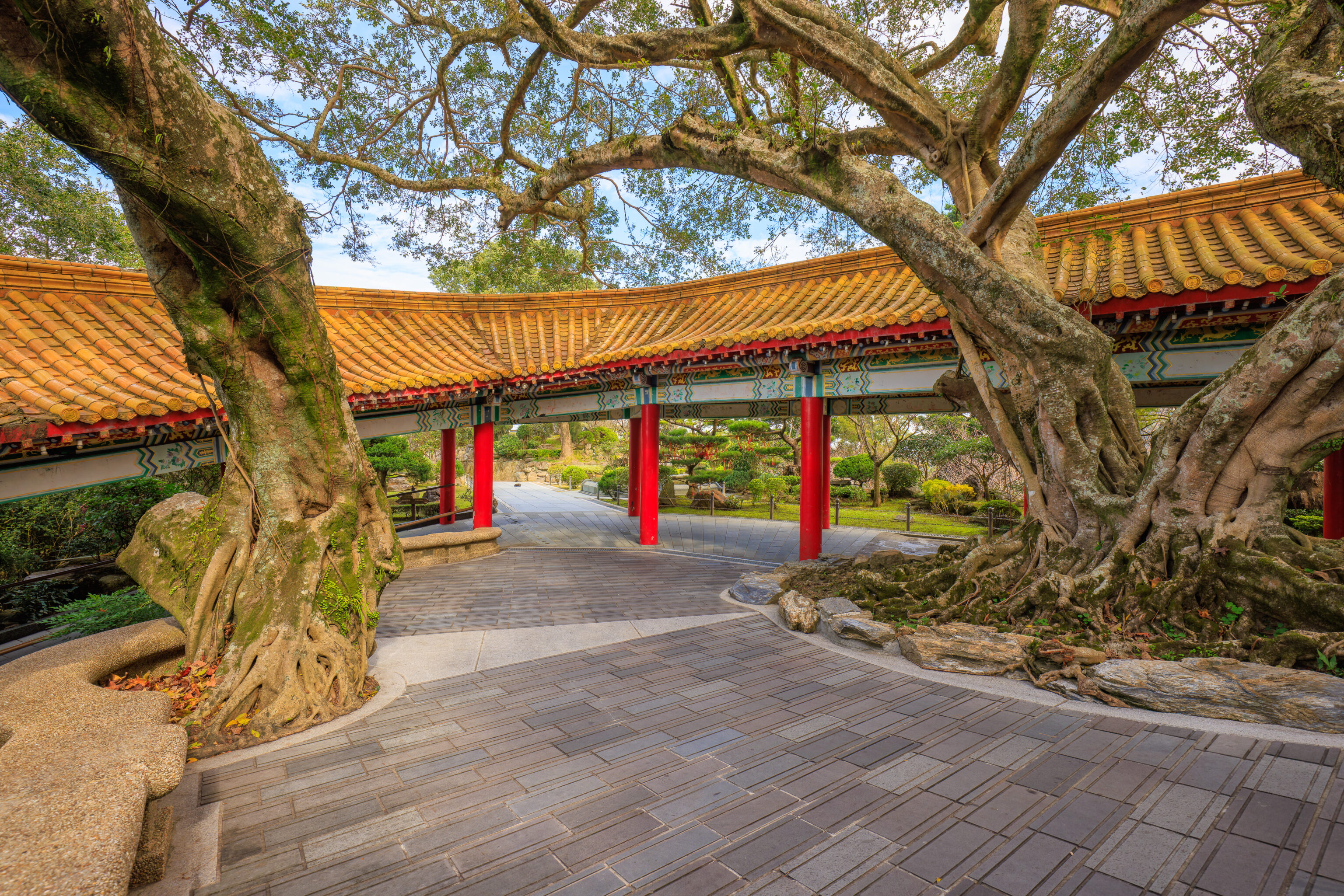
We found a nice place to sit at the junction that we passed through earlier.
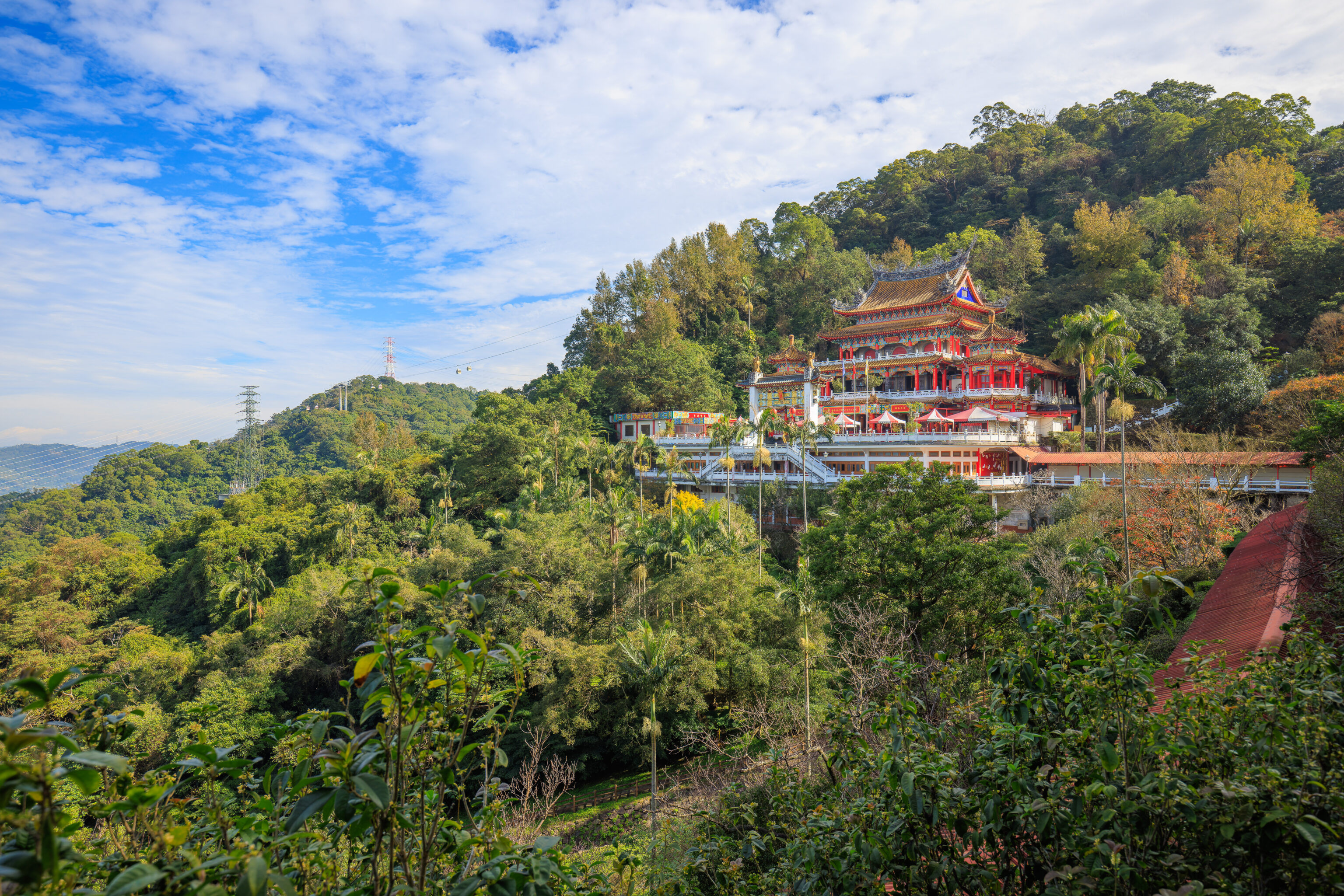
We took a slightly different route back, walking parallel to and above the covered walkway below. Once again, we had a beautiful view of the Lingxiao Palace.
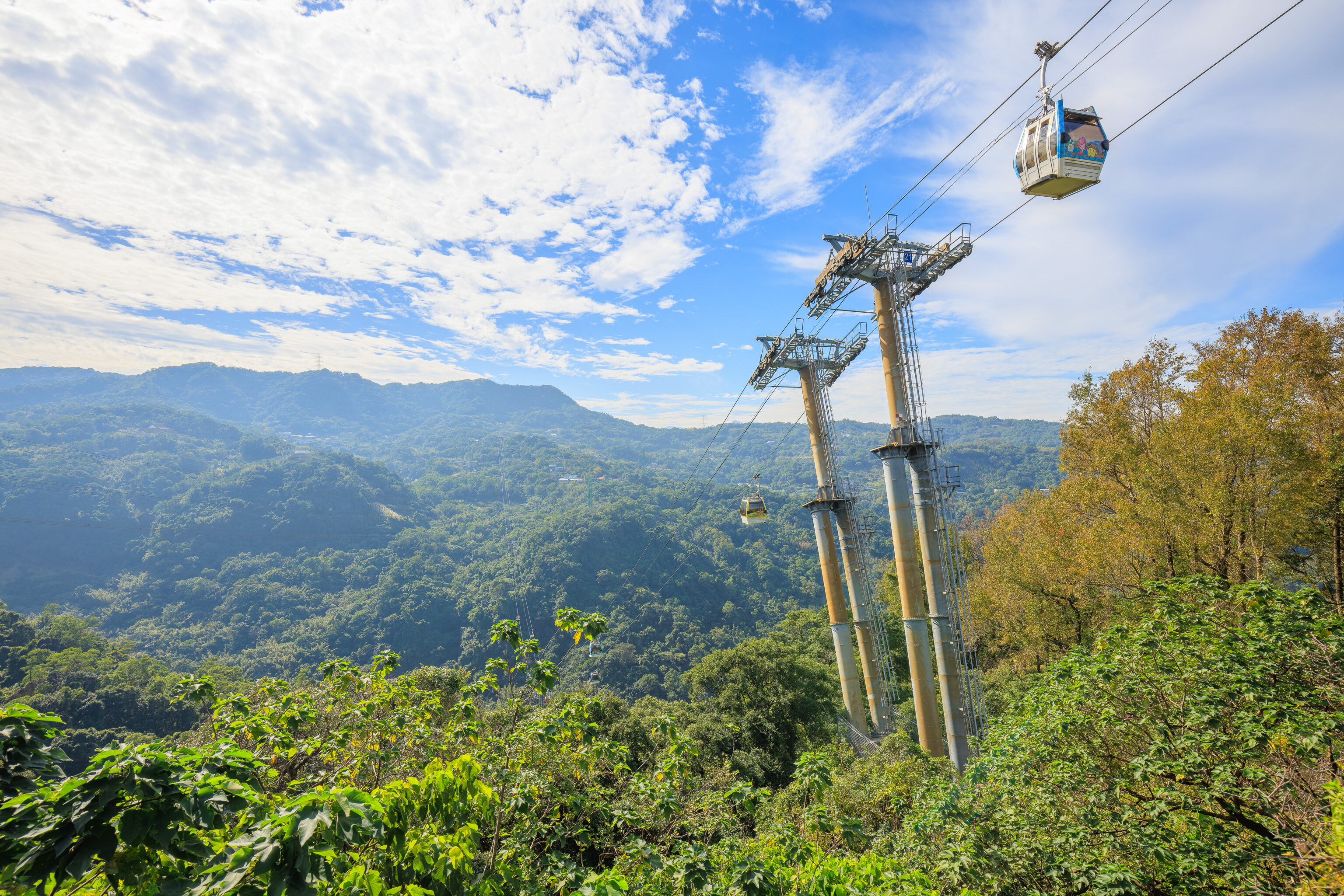
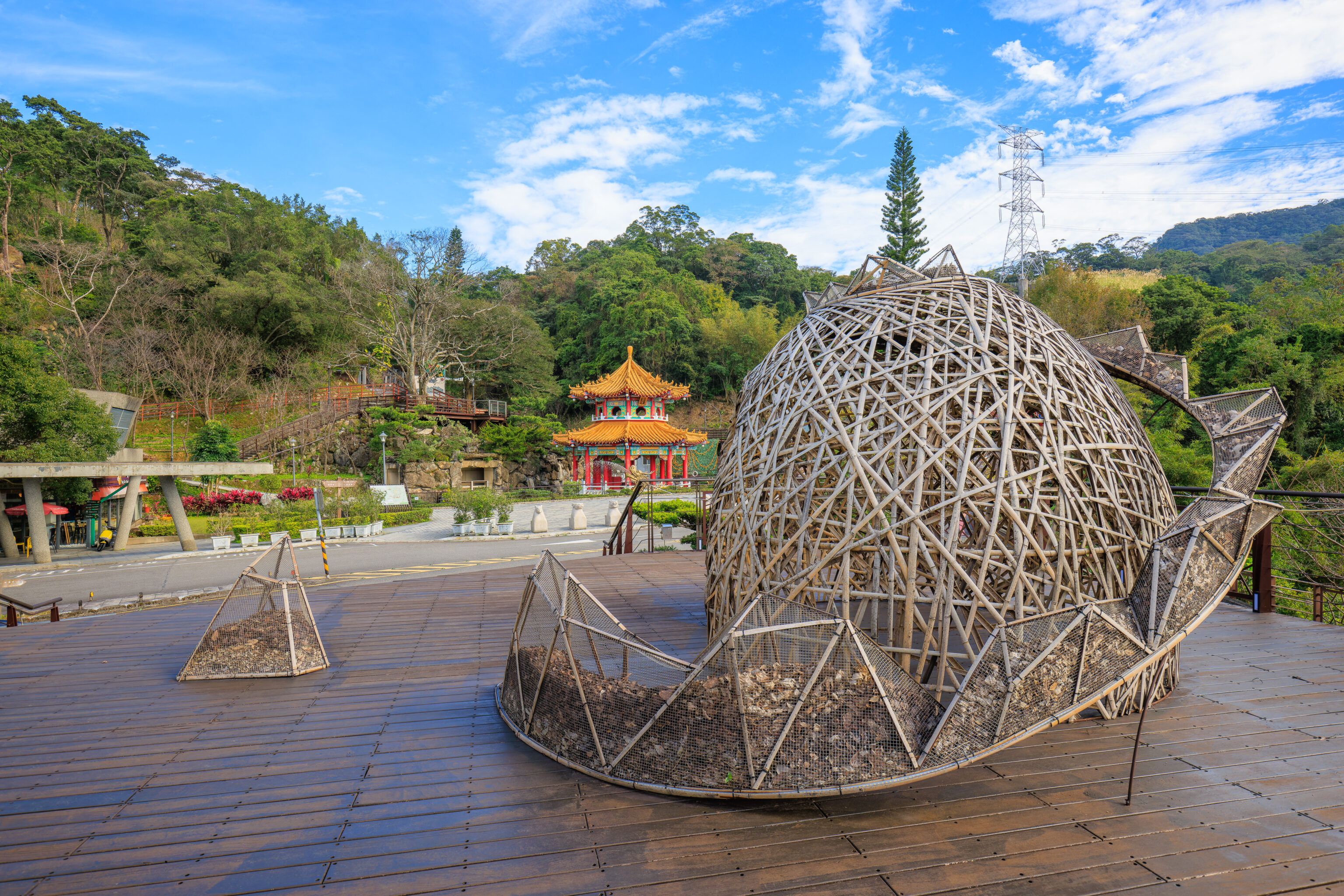
There was a small outdoor plaza next to the gondola station. It is actually the roof of a building containing bathrooms below. The weather was good and it was rather hot under the sun when it came out from behind the clouds above.
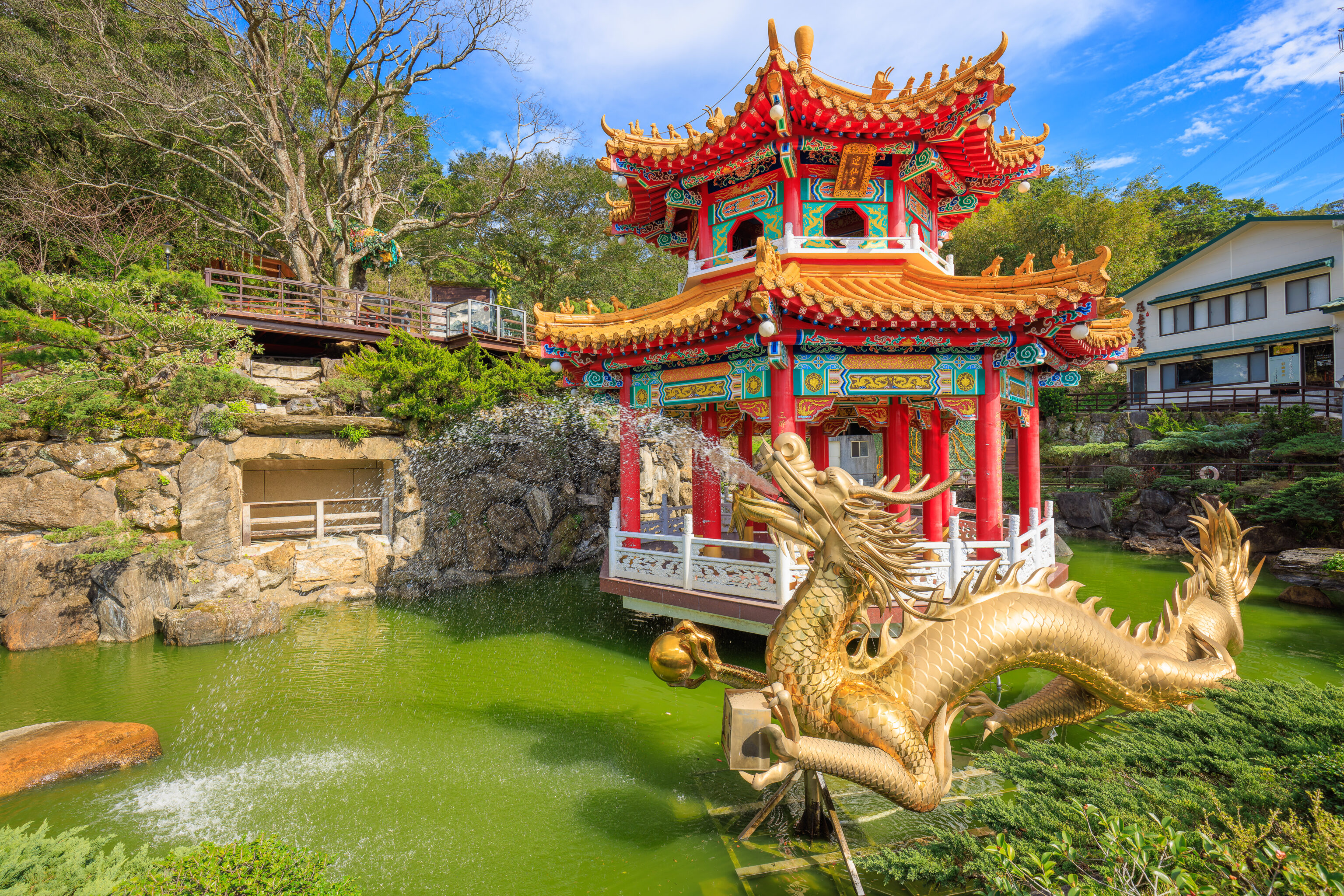
There was a small pavilion nearby in the middle of a pond.
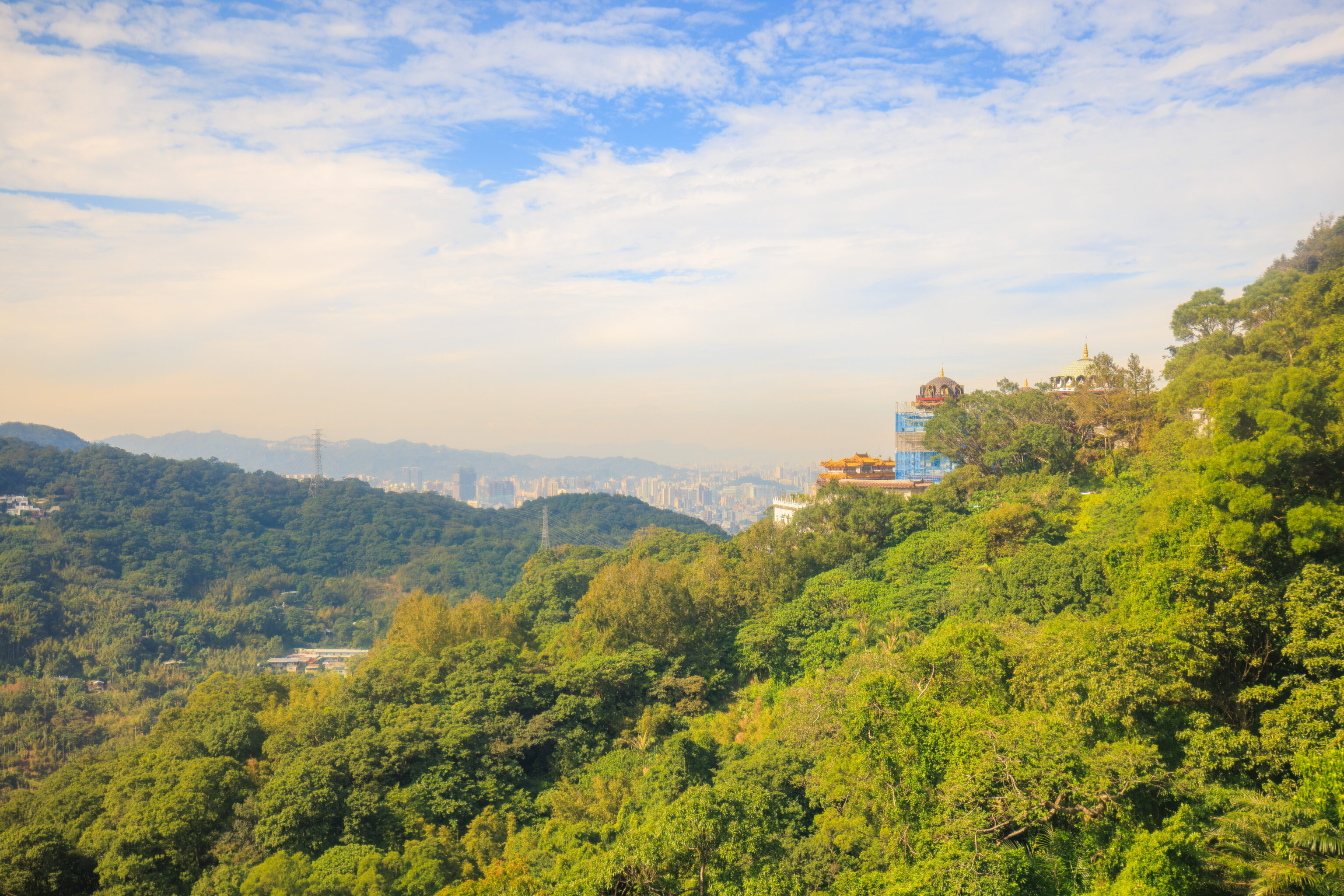
We returned to the gondola station to continue our trip to Maokong. The temple building on the mountainside is the 大雄寶殿 Main Hall, which we didn’t visit. The temple website again provides a description6 (Google Translated):
During the Japanese colonial period in Taiwan, "Buddha was promoted and Taoism was promoted." In order to preserve its foundation, Nannan Palace was renamed Guanyin Hall. It was not until the liberation that the old view was restored. The Main Hall (also known as Buddha Hall) located to the left of Chunyang Hall is Rebuilt on the site of the original Guanyin Hall, the palace looks like a statue of Sakyamuni from a distance. It has a simple northern style design and exquisite carvings, supplemented by pilasters and floors paved with white crystal stones and granite. It is elegant and meticulous. A solemn and solemn atmosphere. The eighteen niches around the dome of the Main Hall are dedicated to the eighteen incarnations of Guanyin Bodhisattva. In the square in front of the hall stands the Heavenly King Gate. On both sides of the gate are the four heavenly kings of Growth, Holding the Country, Duowen, and Guangmu, who protect the Tao.
Maokong
There are various theories as to where the name 貓空 Maokong comes from. One local legend says that holes formed by erosion in the rivers look as if they were caused by cats’ paws, giving the area its name, Cat Empty (or Hollow, Hole). It’s a good story.
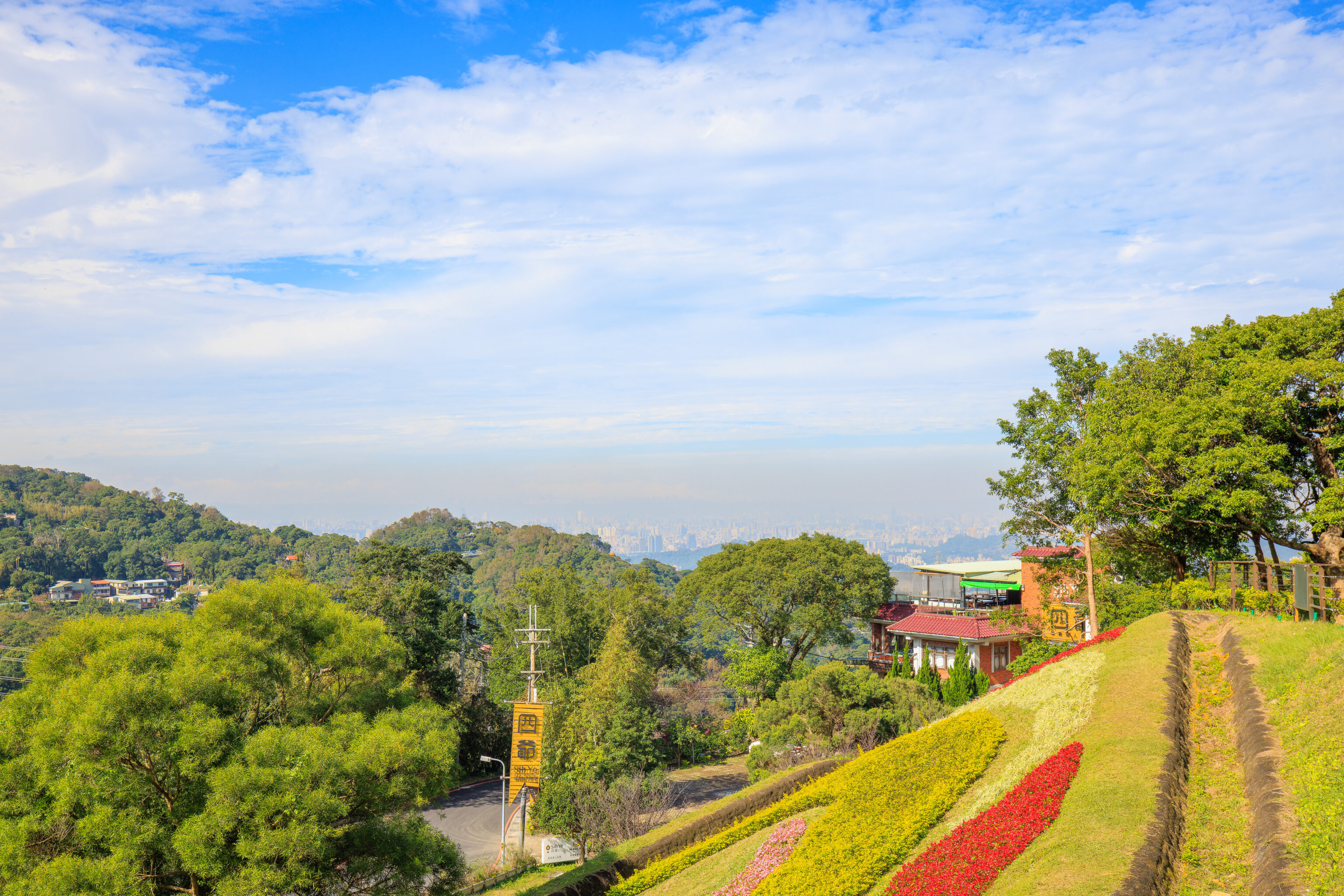
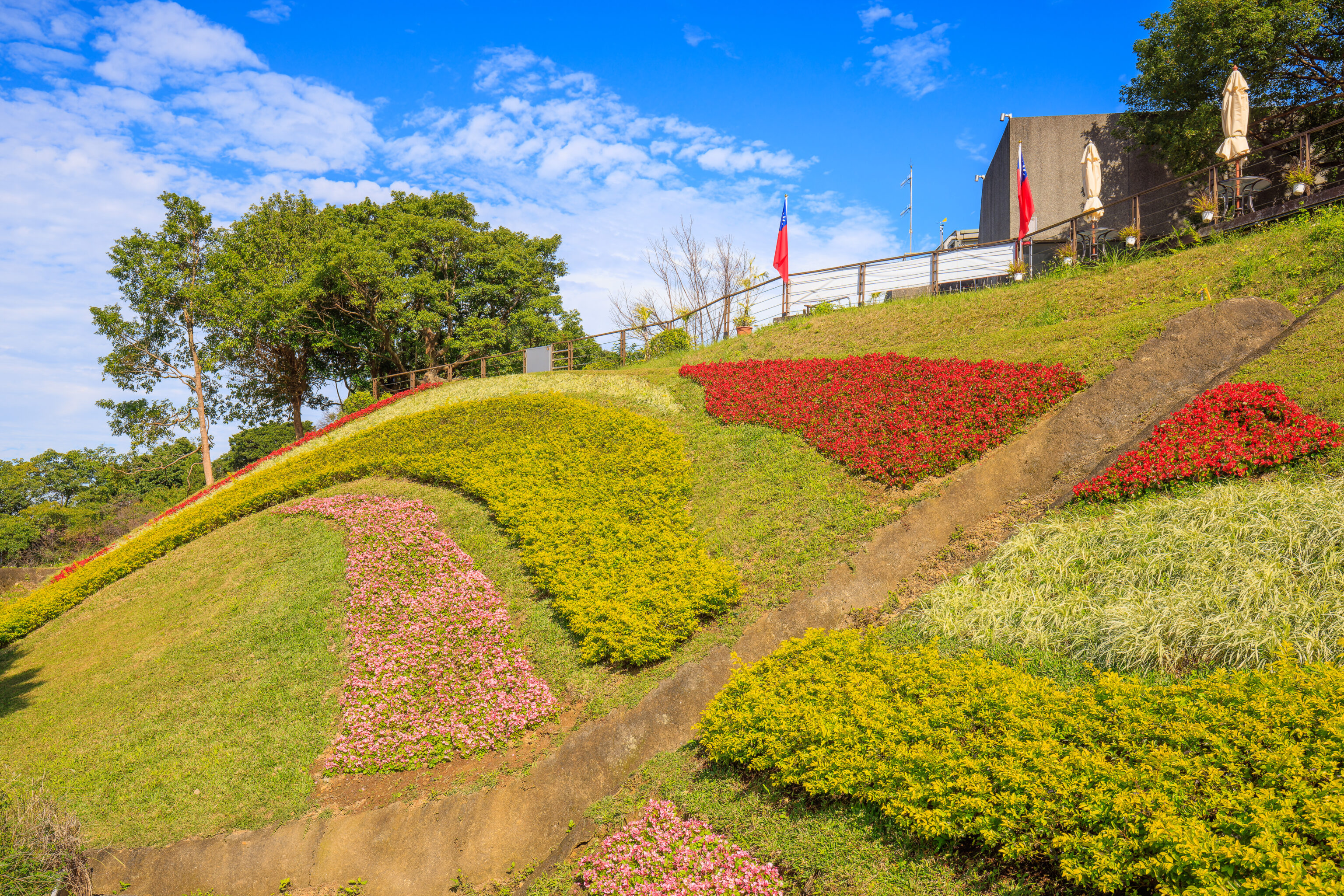
After arriving at Maokong, we walked down to the bottom of the small hill that the gondola station sits upon.
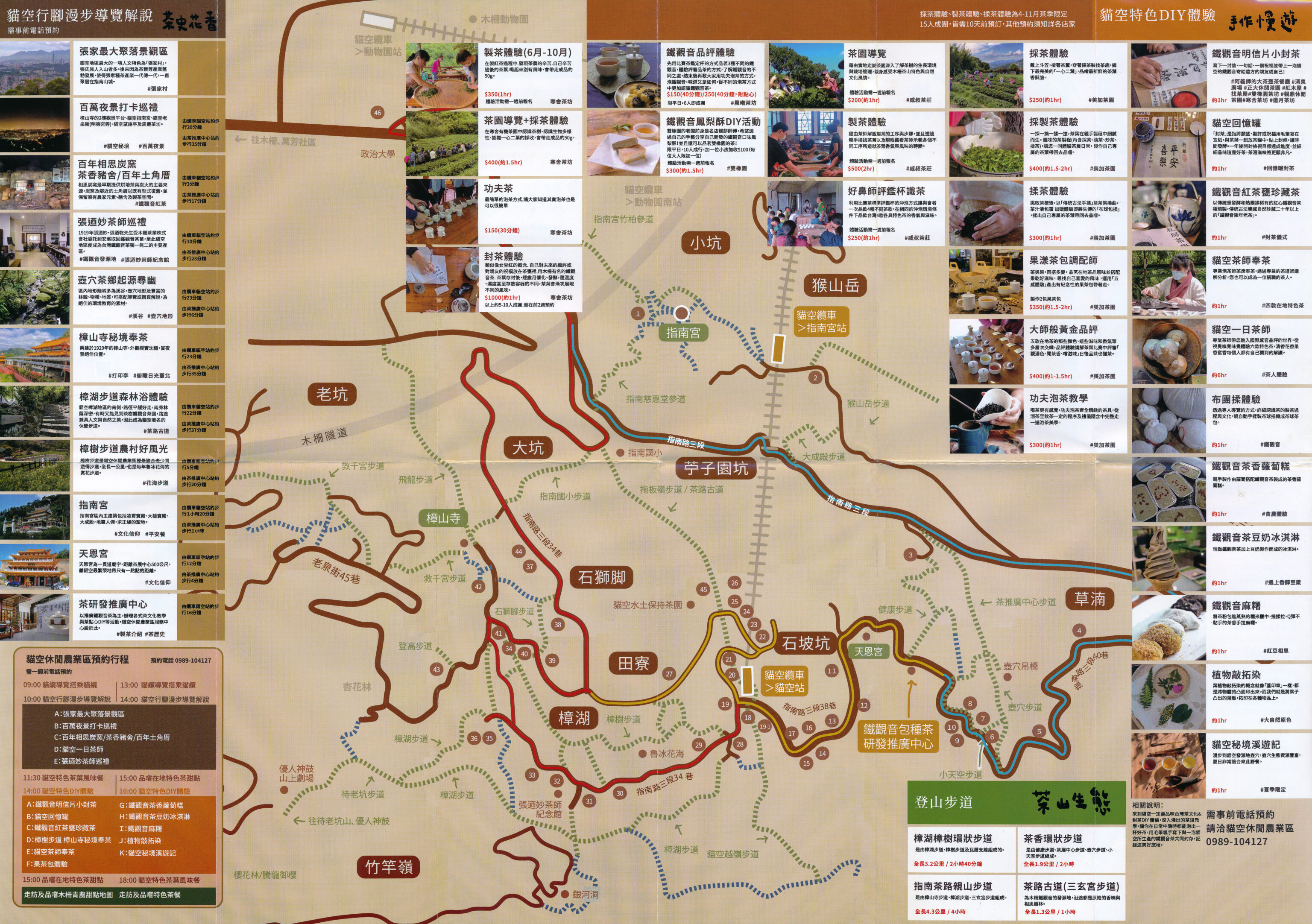
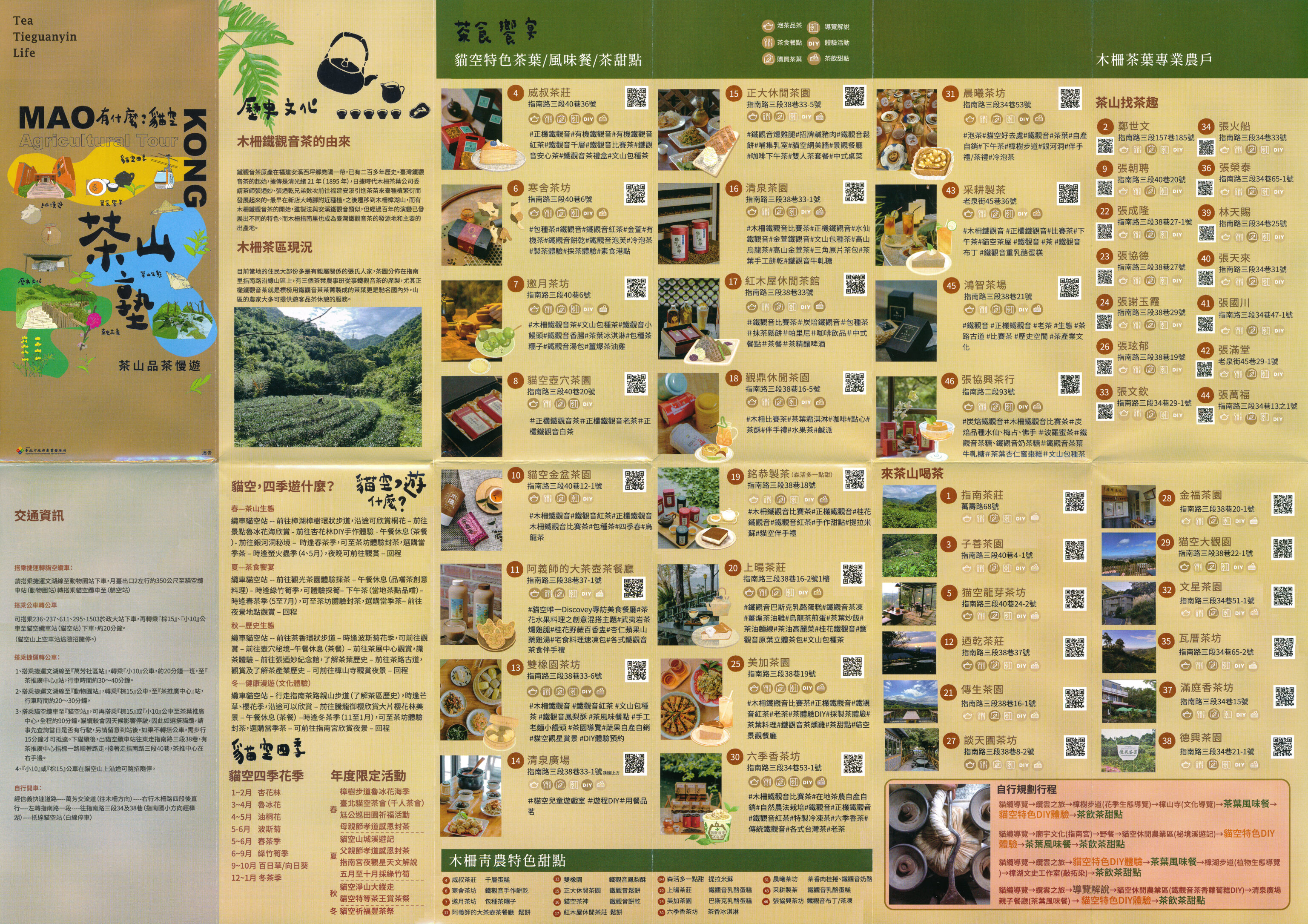
There is quite a bit here at Maokong. Unfortunately, this map doesn’t have any English.
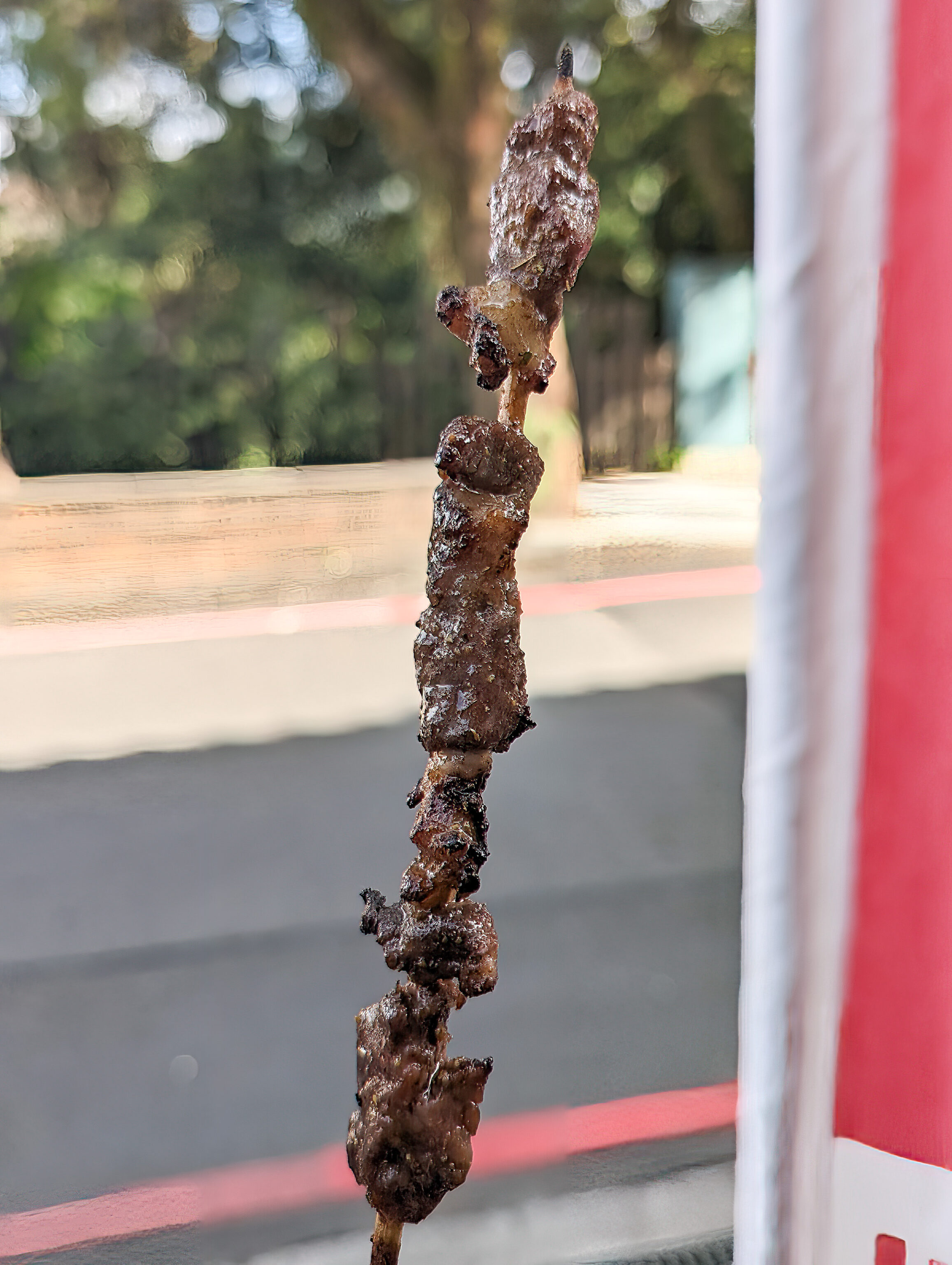
We briefly stopped at a grilled food stand near the gondola station to get a quick snack.
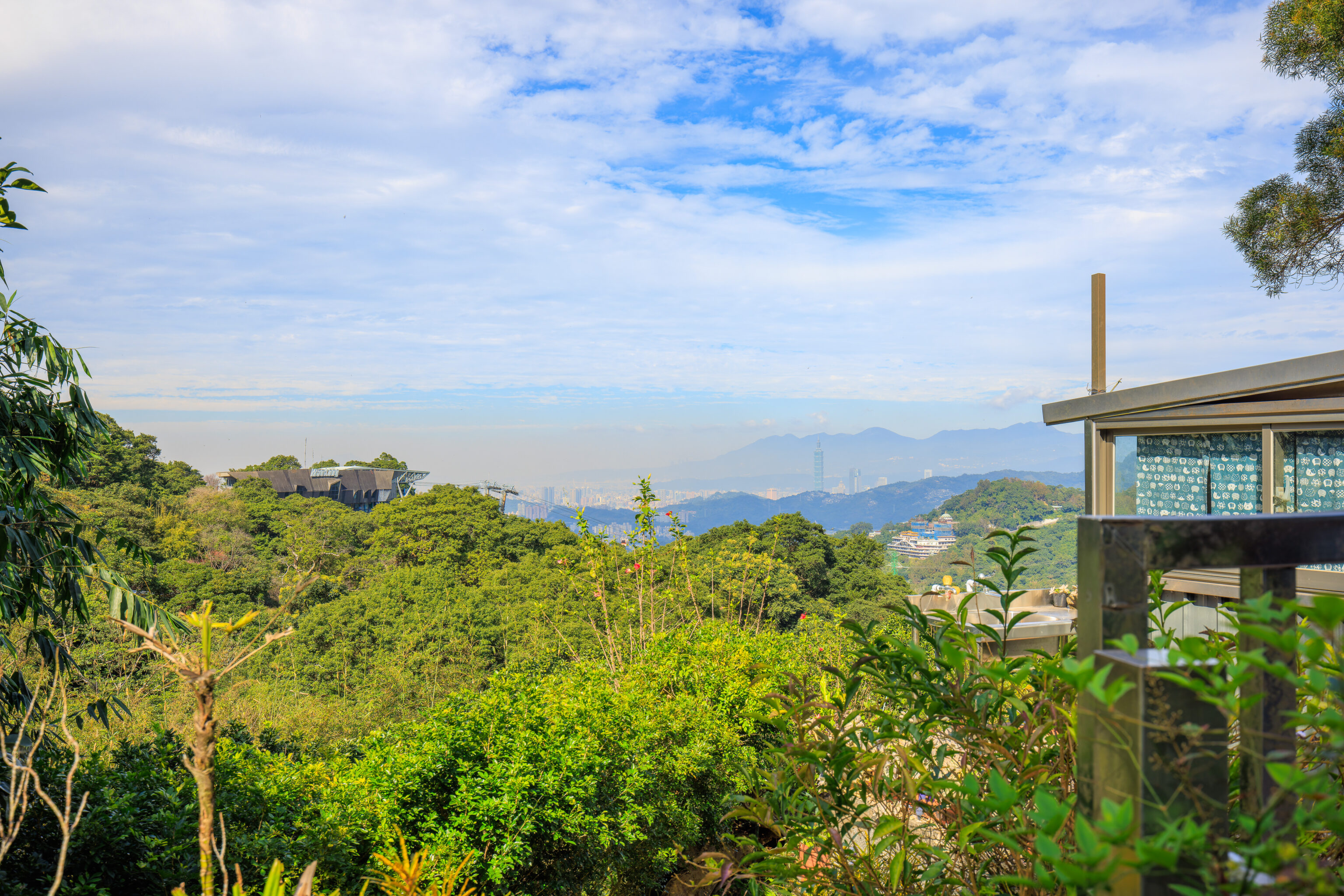
We started waking to the east, towards the 台北市鐵觀音包種茶研發推廣中心 Tea Research and Promotion Center of Taipei. We soon had a view of the Maokong gondola station to the northwest and Taipei 101 in the distance.
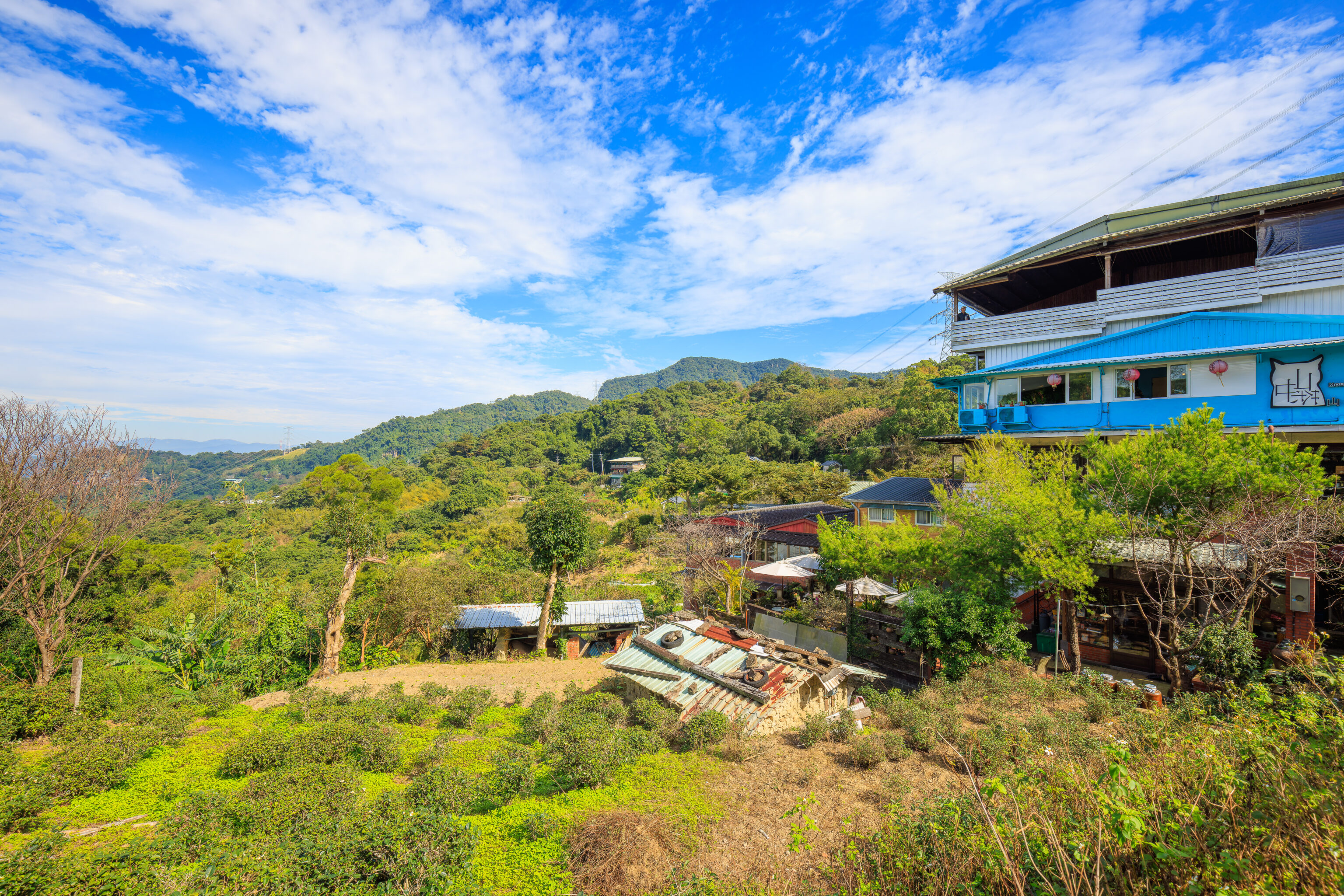
We reached a larger building by the road which held various restaurants and shops. We decided to get lunch here at 貓空山中茶-景觀餐廳 Mountain Tea House, one of the restaurants on the second floor.
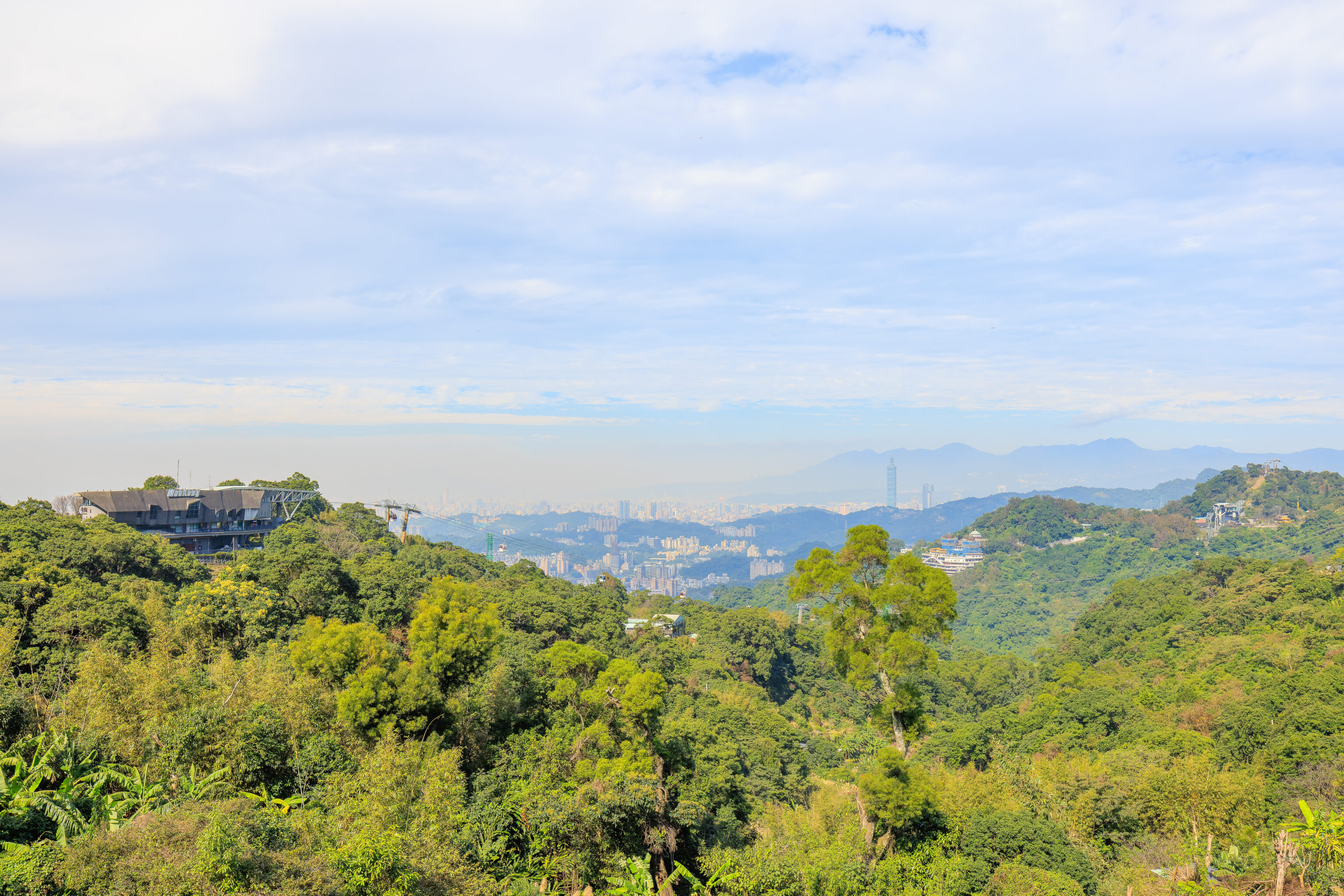
The restaurant’s windows had a beautiful view of the scenery to the north! We could see the Maokong gondola station, Taipei 101, Zhinan Temple’s Main Hall, and the Zhinan Temple gondola station.
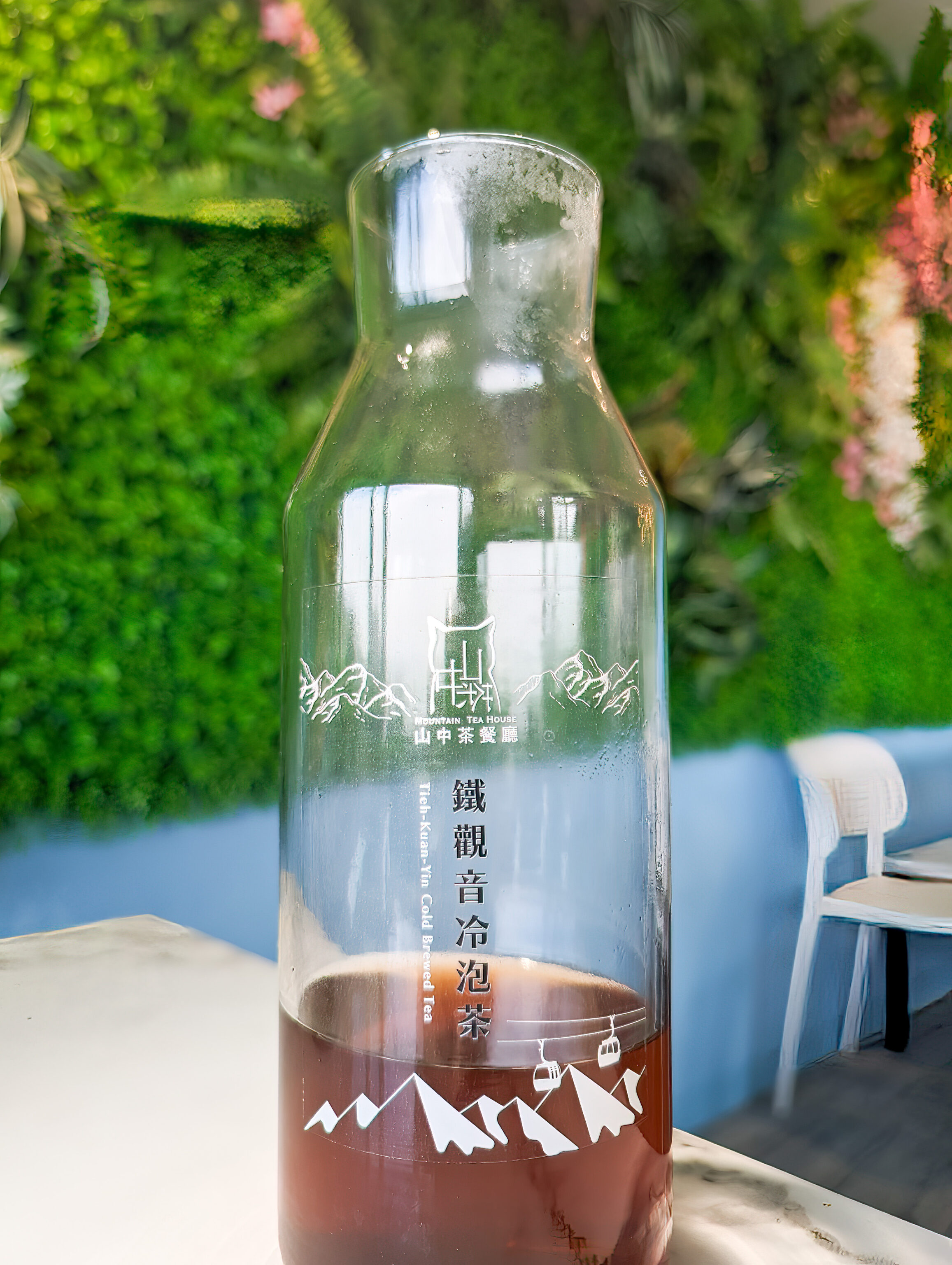
As this is a tea growing area, we of course had some local 鐵觀音 Tieguanyin tea to go with lunch. We got hot tea, which unusually came in a glass carafe. Given Taiwan’s hot and humid climate during most of the year, we figured that perhaps cold tea is more popular here.
Tieguanyin is literally Iron Guanyin, with Guanyin referring to the Bodhisattva of Compassion. Like Maokong, the true etymology of Tieguanyin seems to be unknown.
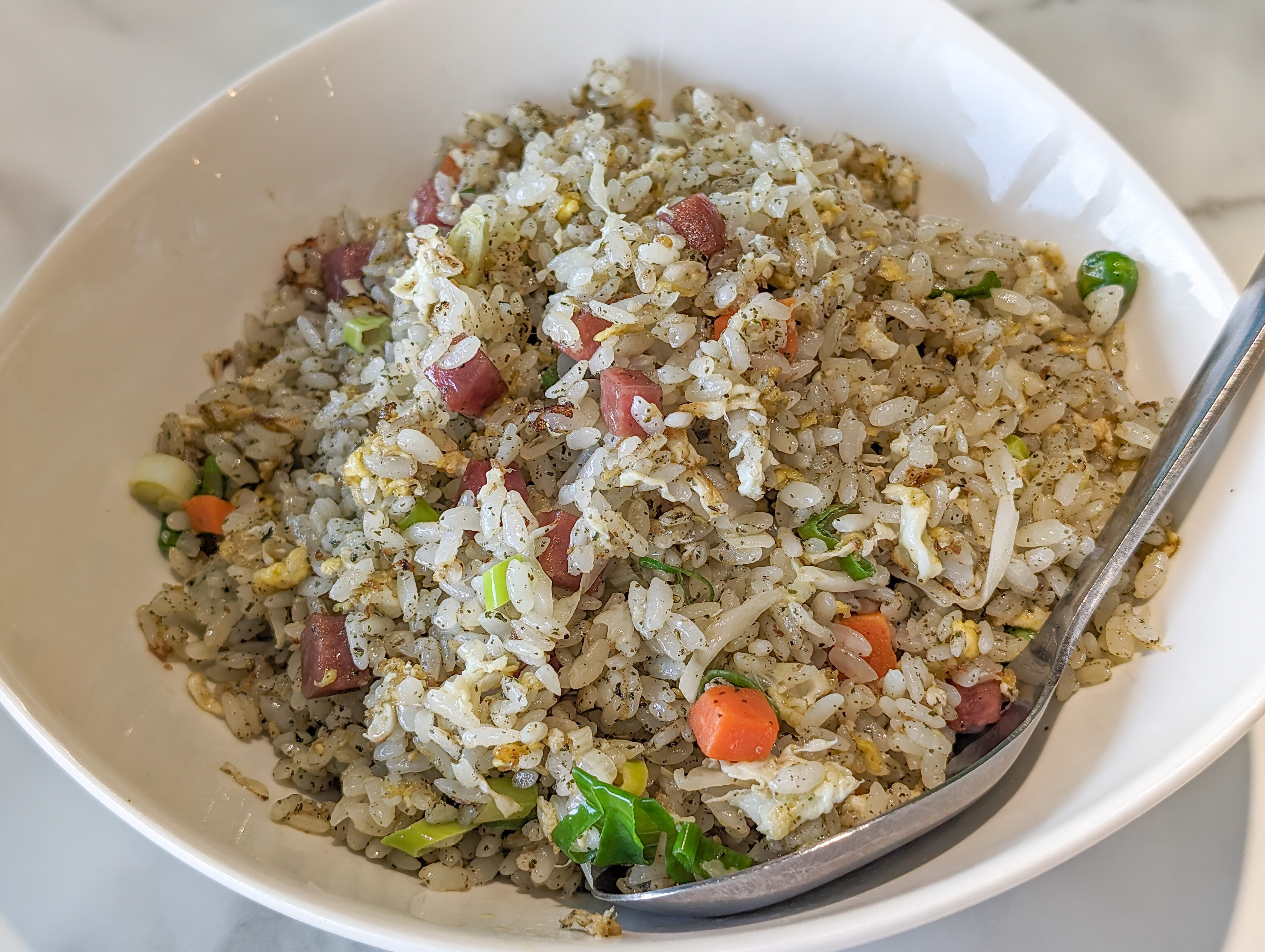
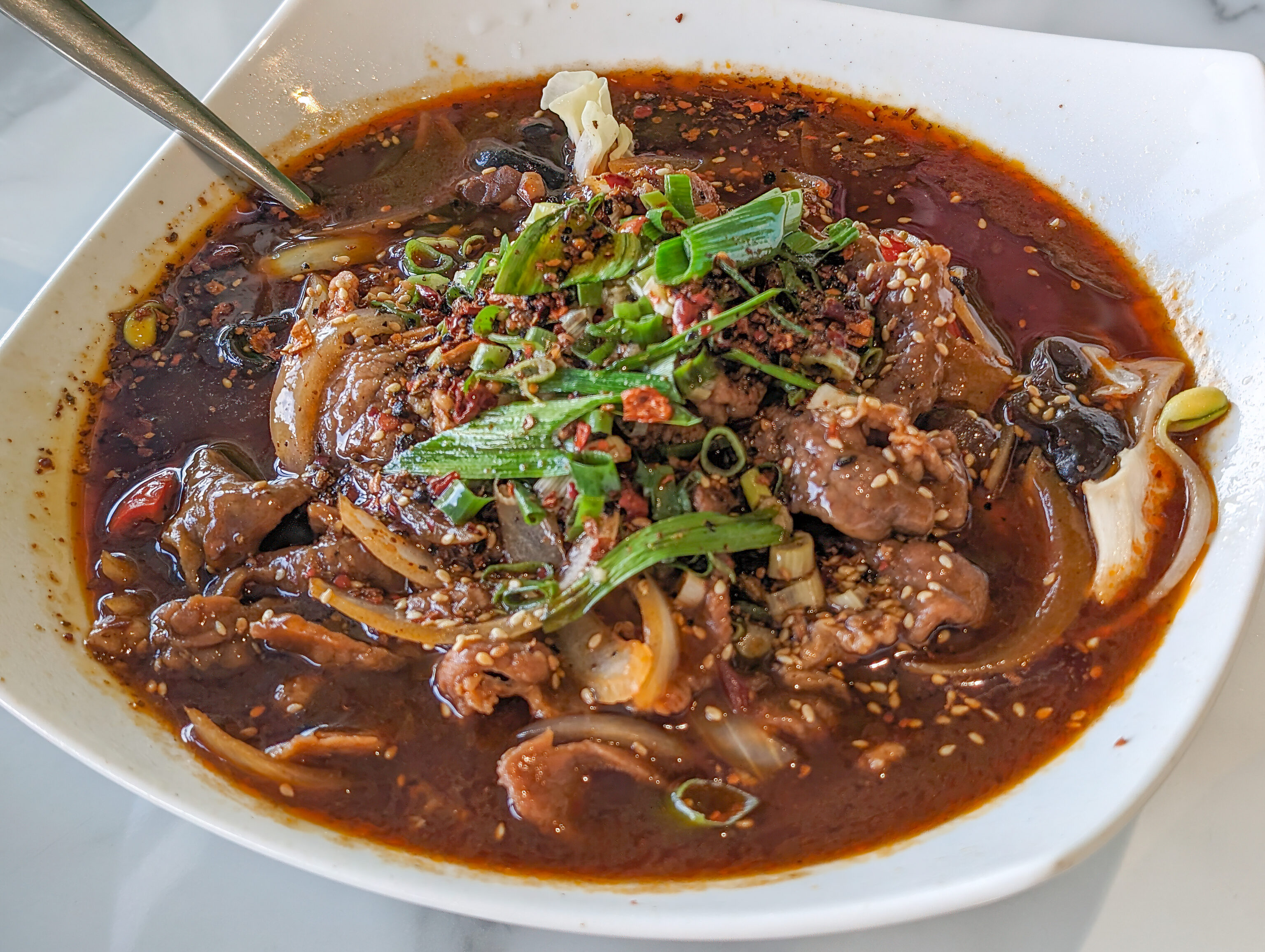
We got their tea fried rice and water boiled beef. The beef was somewhat spicy but not too bad. Overall, it was a very good lunch.
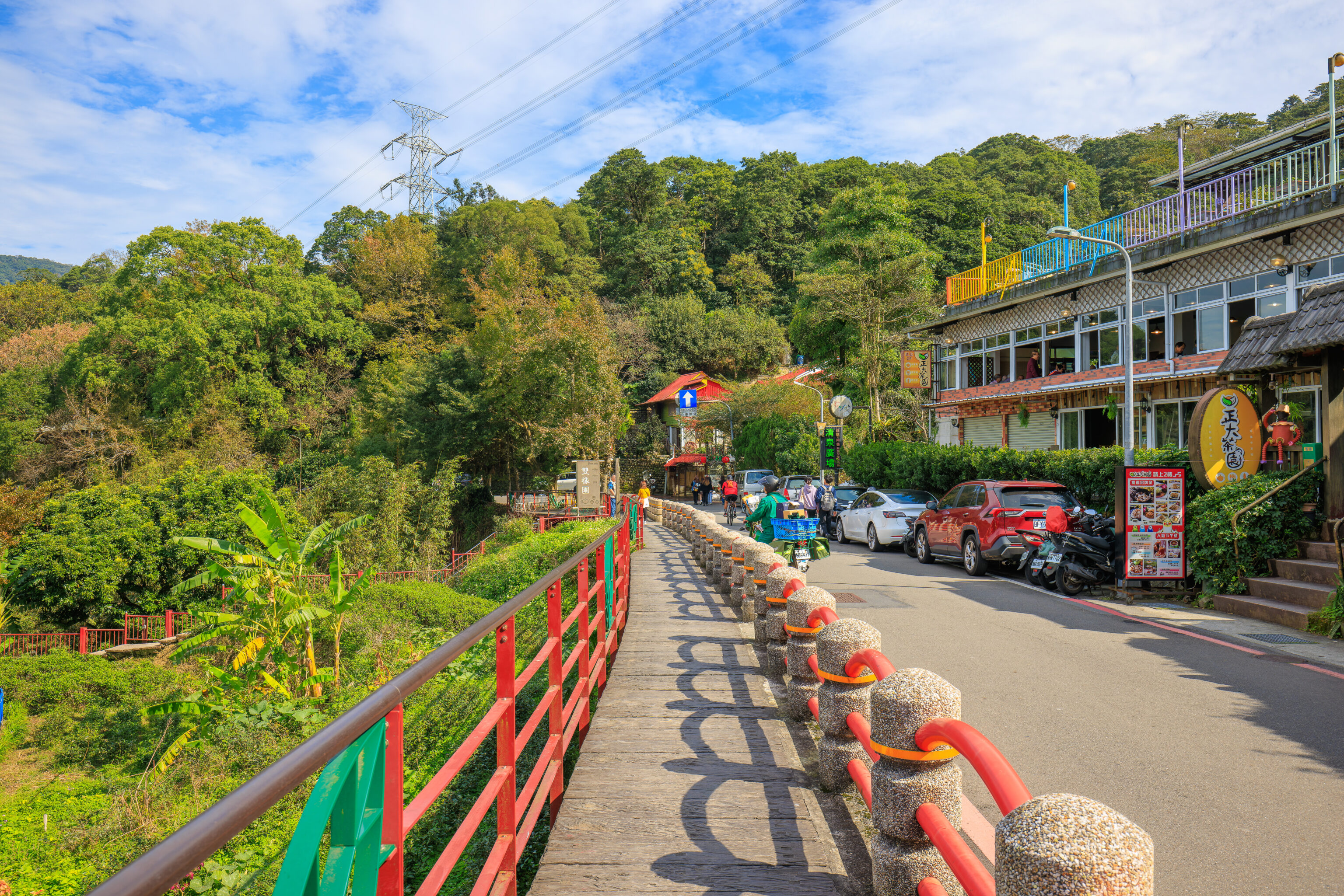
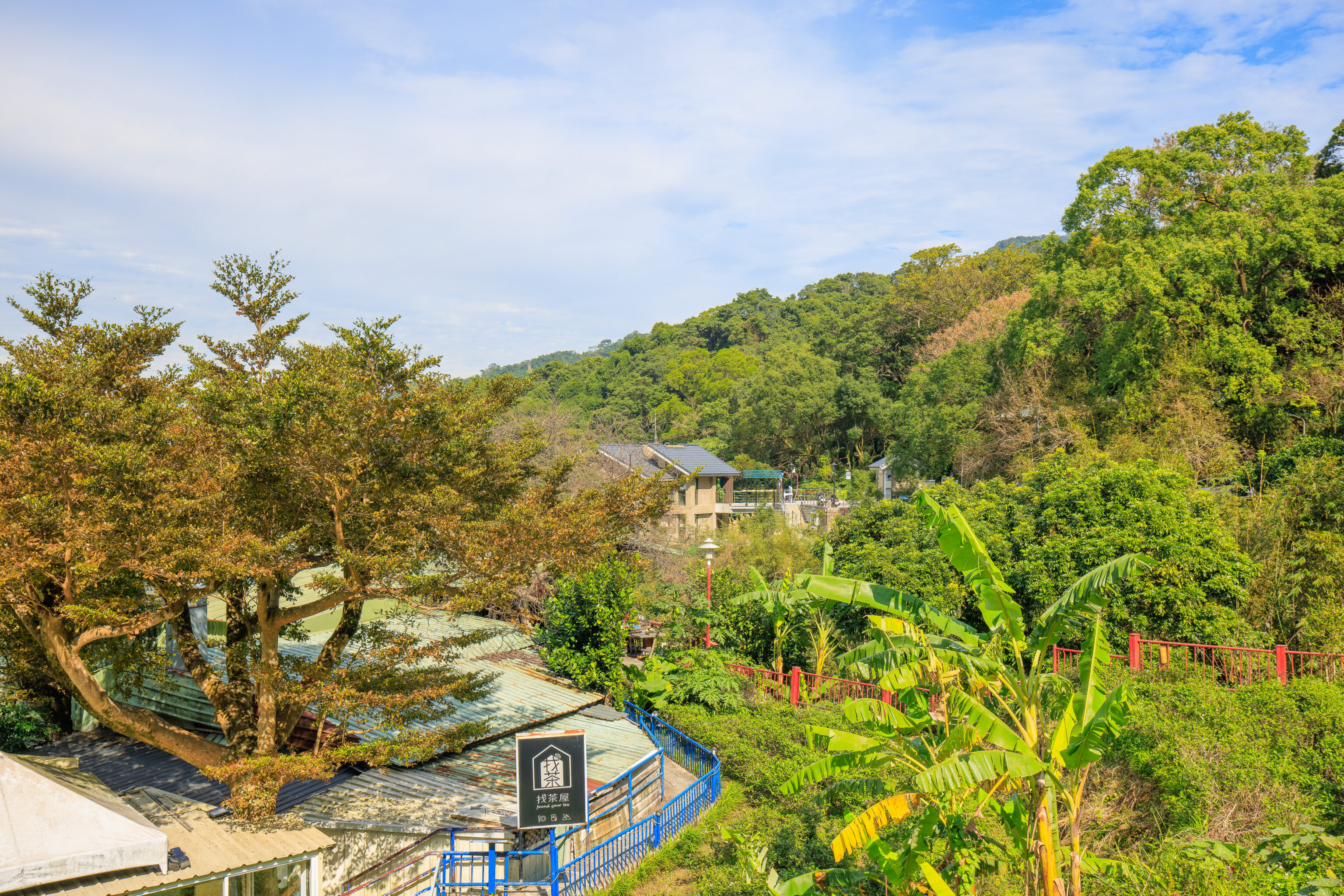
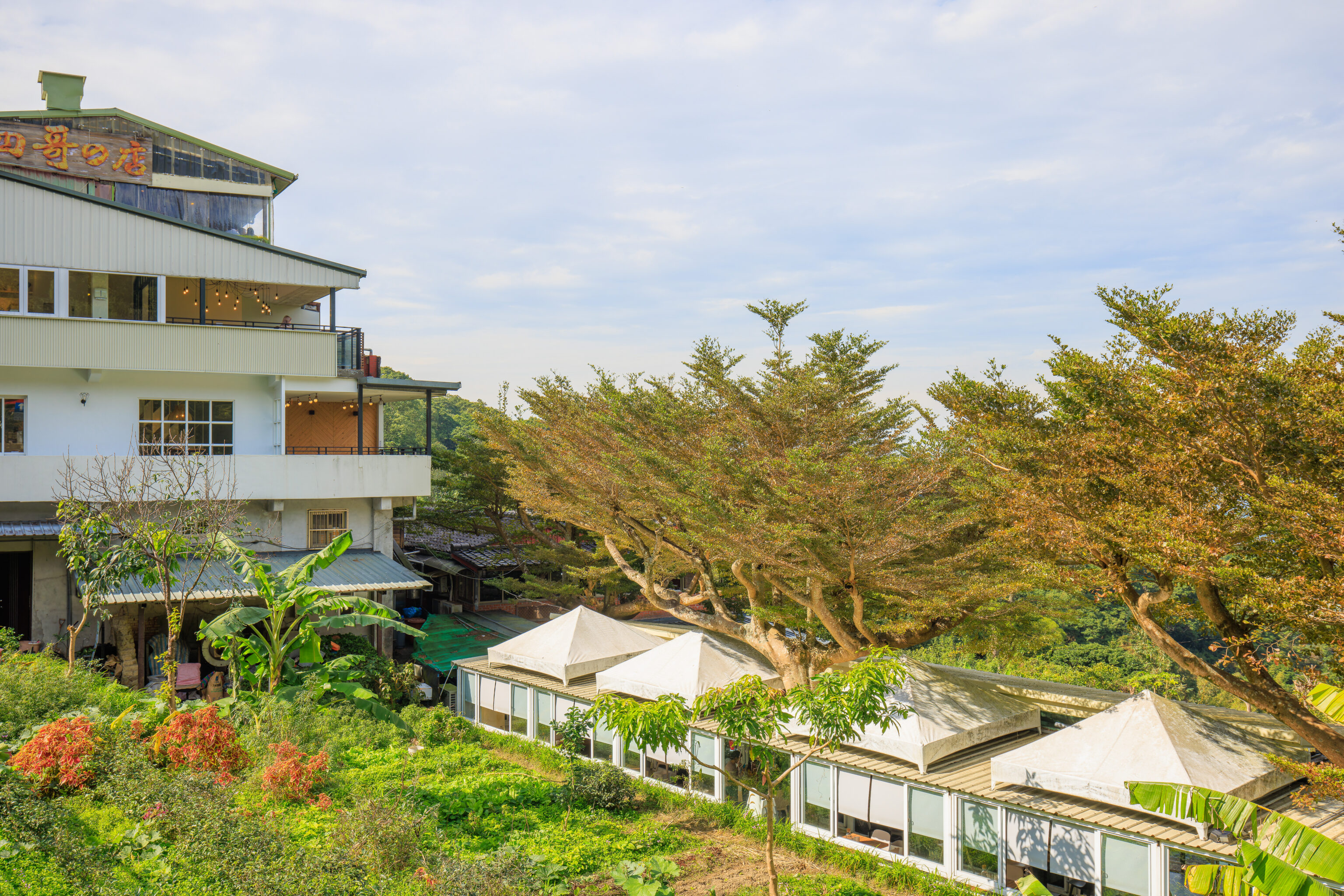
After lunch, we continued on. Everything here is generally either a restaurant, cafe serving tea, or some other tea related business.
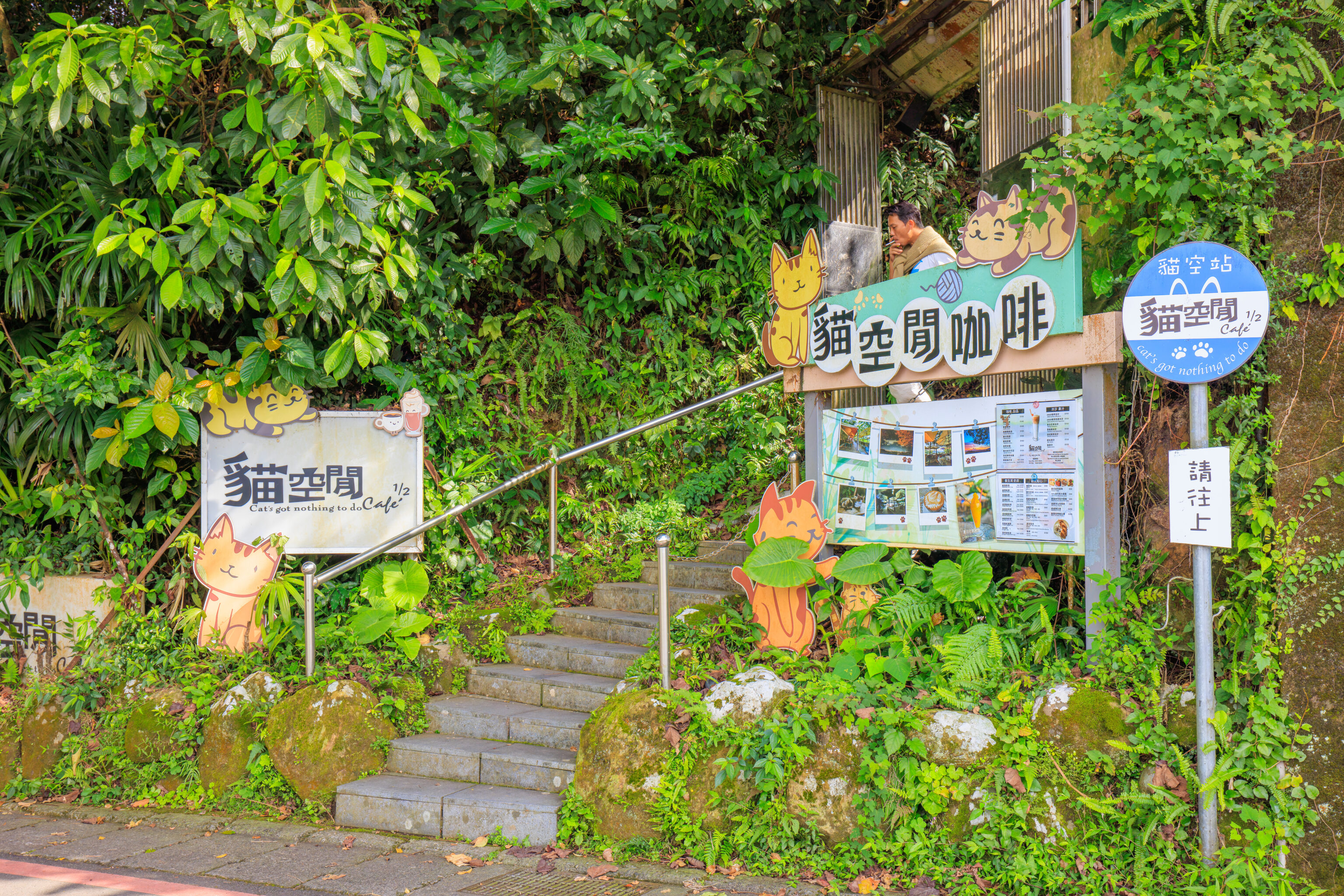
Cat themed establishments are quite popular in Maokong!
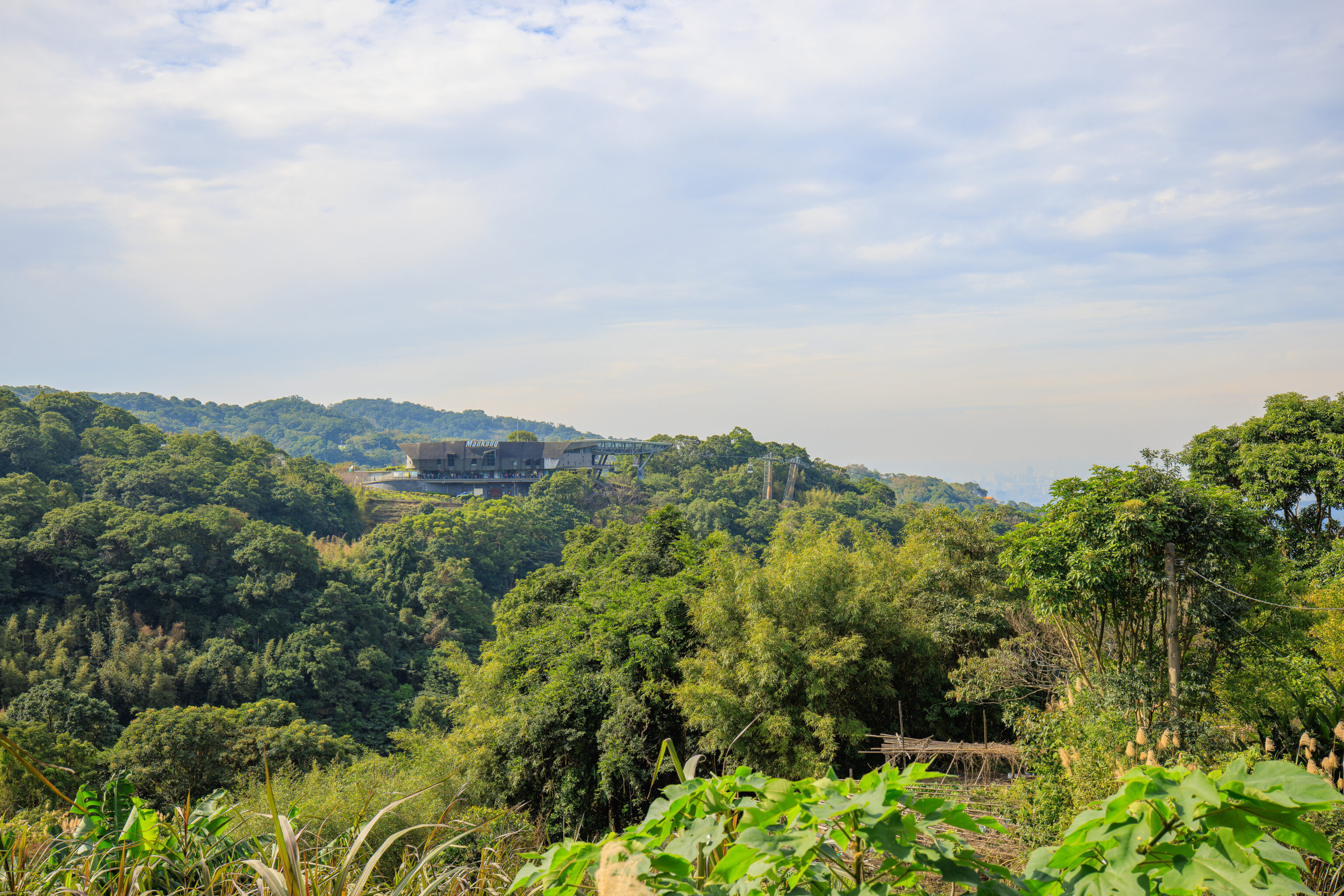
We continued on. Soon, due to the terrain, we could only see a tiny bit of Taipei in the distance with everything else blocked by trees. The Maokong gondola station remained visible though.
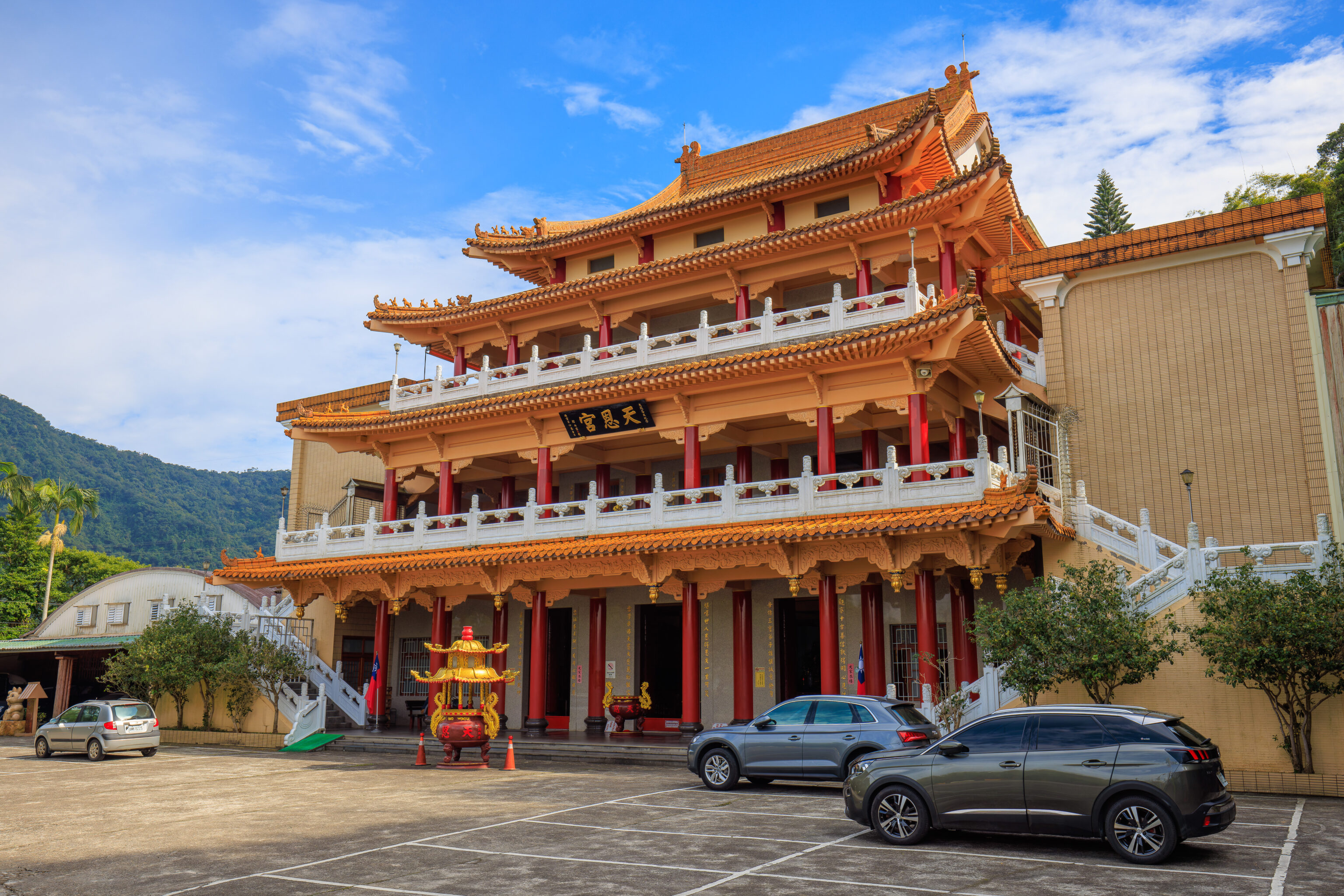
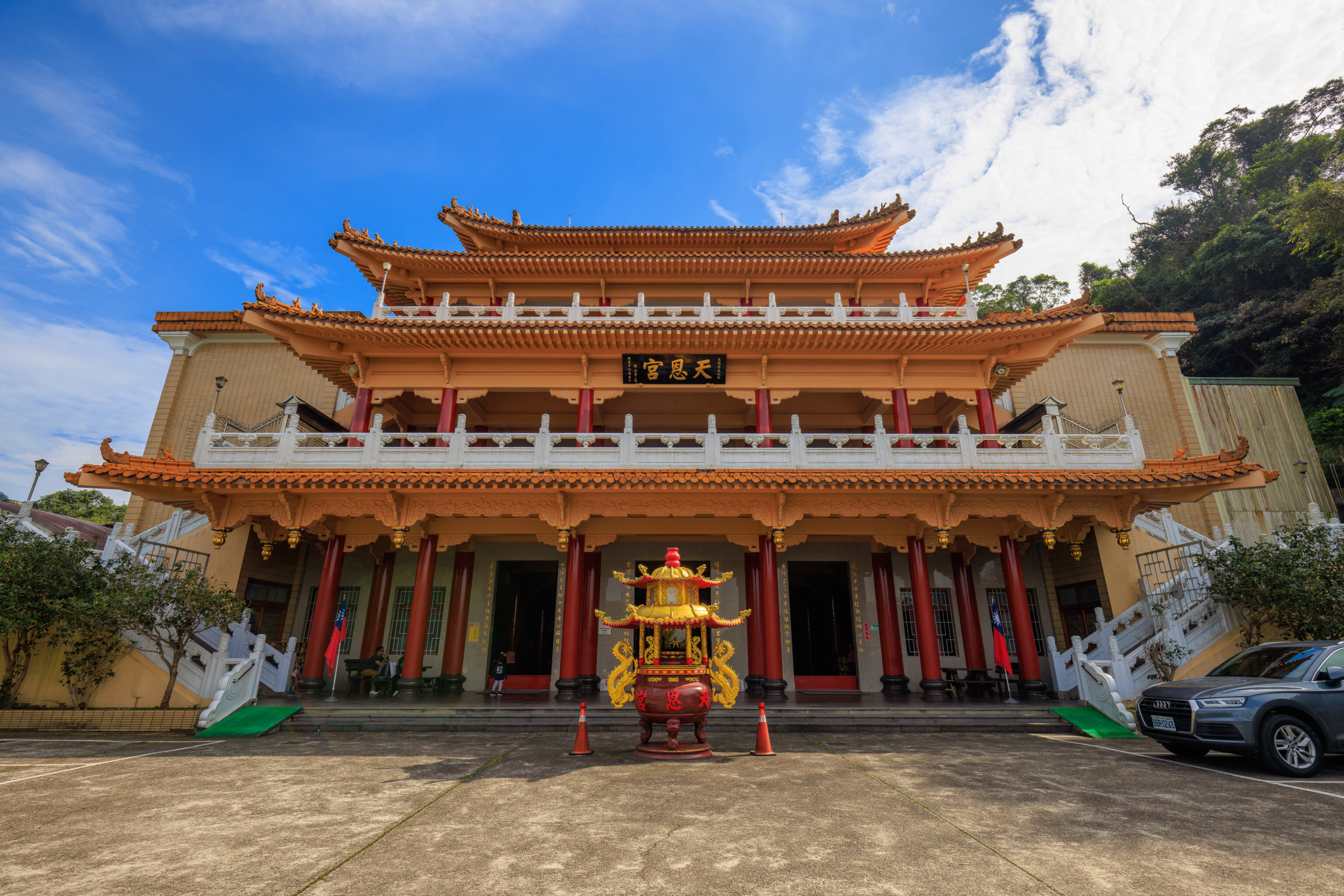
We passed by a the 天恩宮 Tian’en Temple.
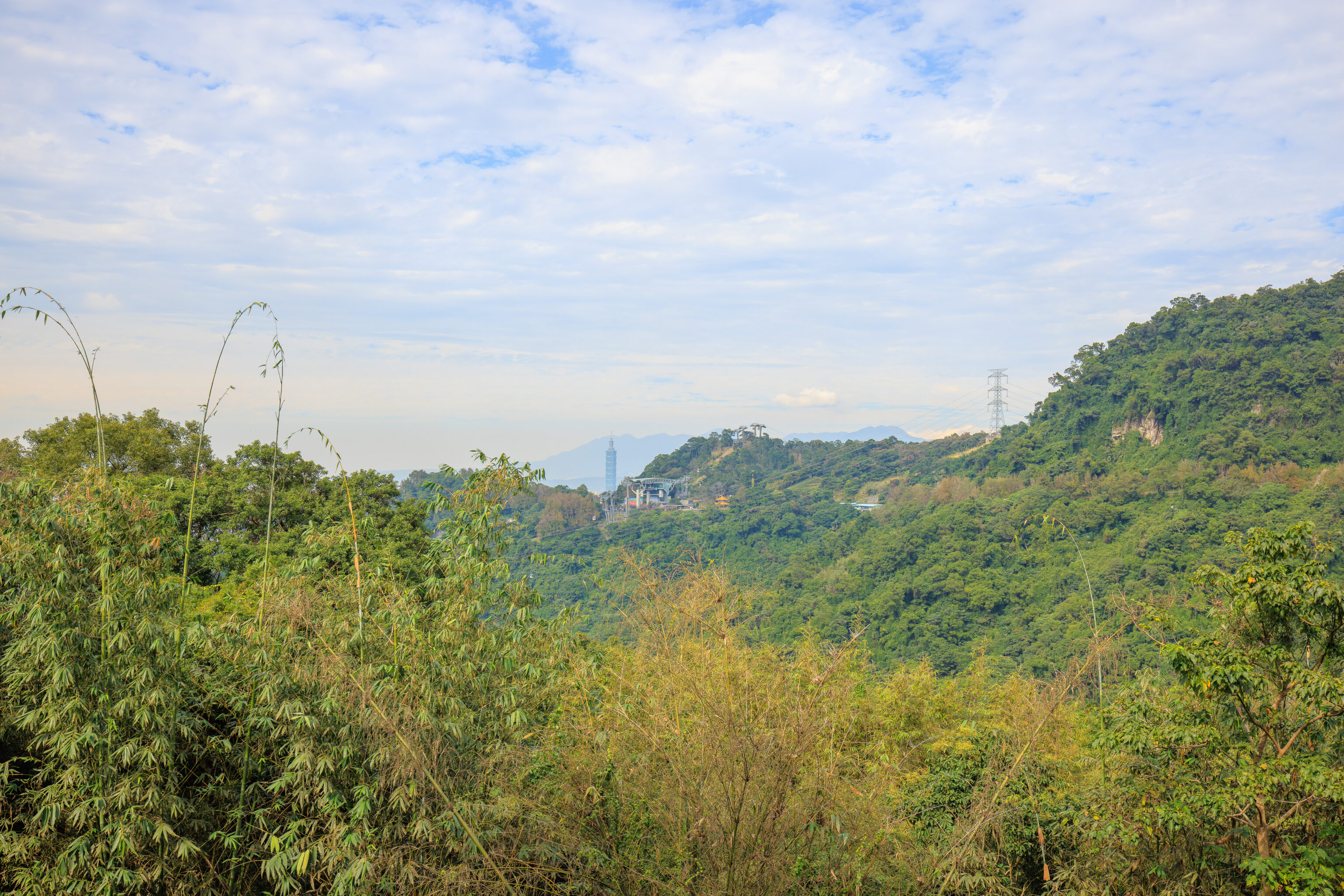
We found Taipei 101 and the Zhinan Temple gondola station again as we continued walking along the road.
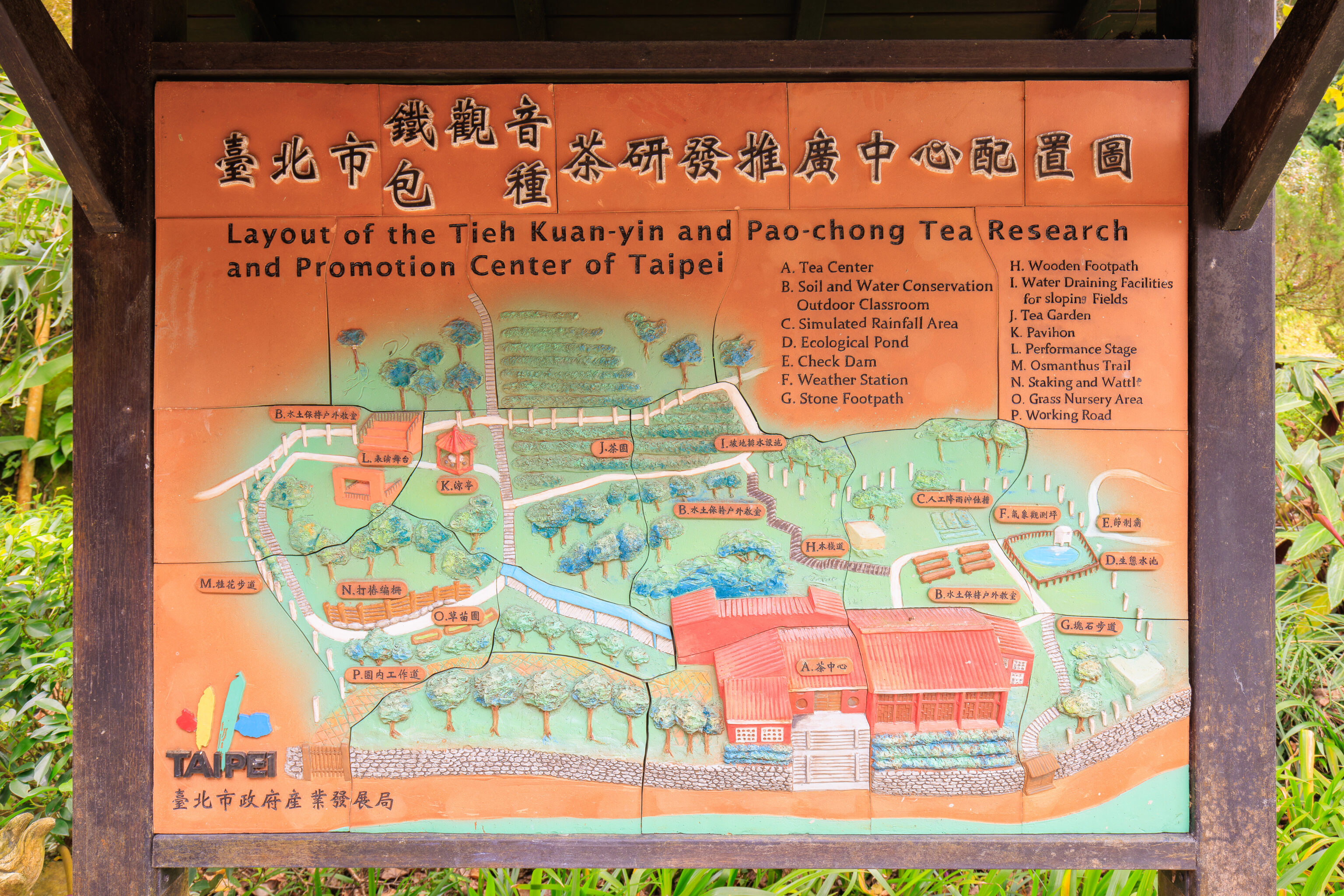
Soon, we reached the Tea Research and Promotion Center. One of the things we should have photographed, but somehow didn’t, is the entrance to the building!
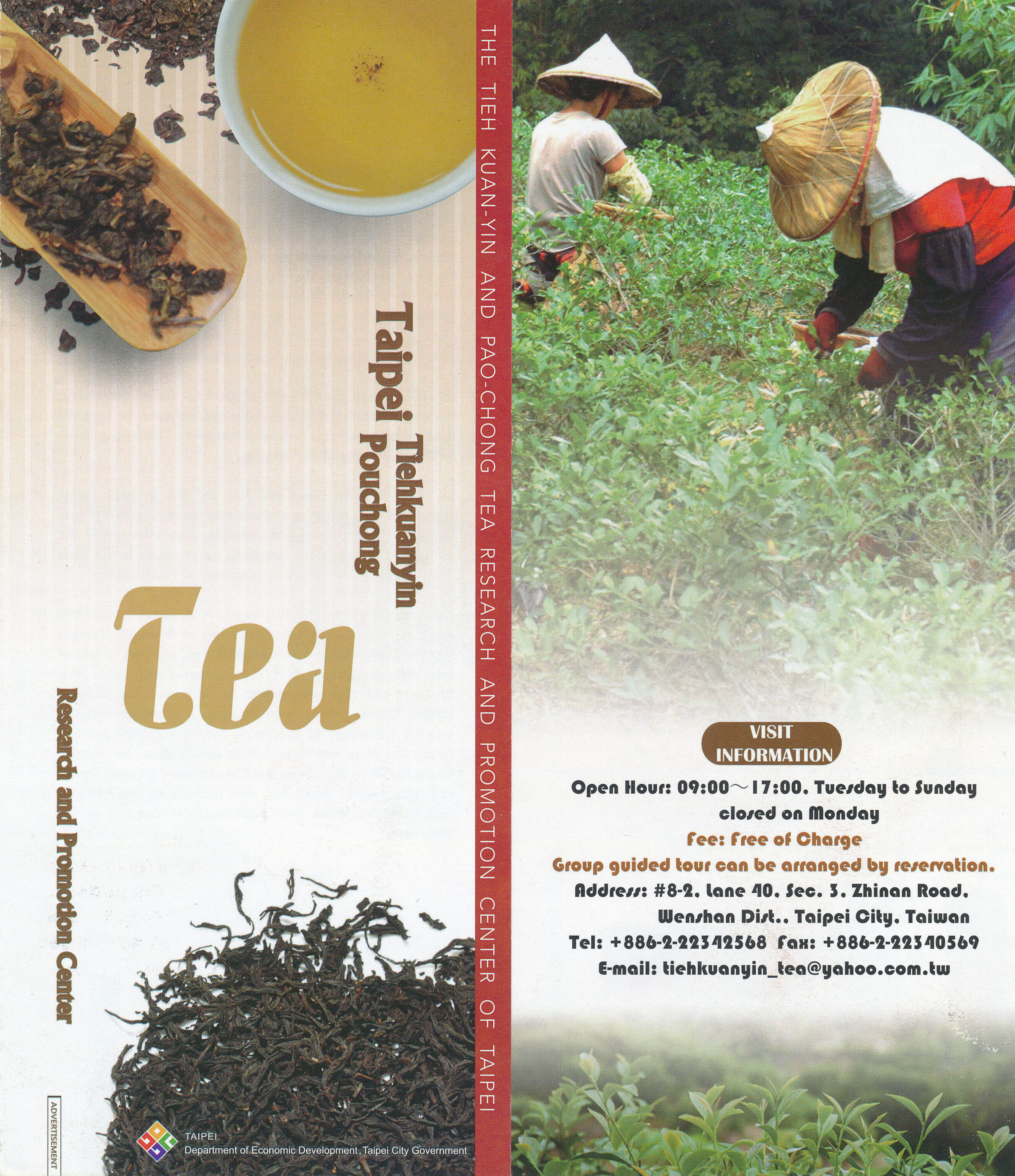
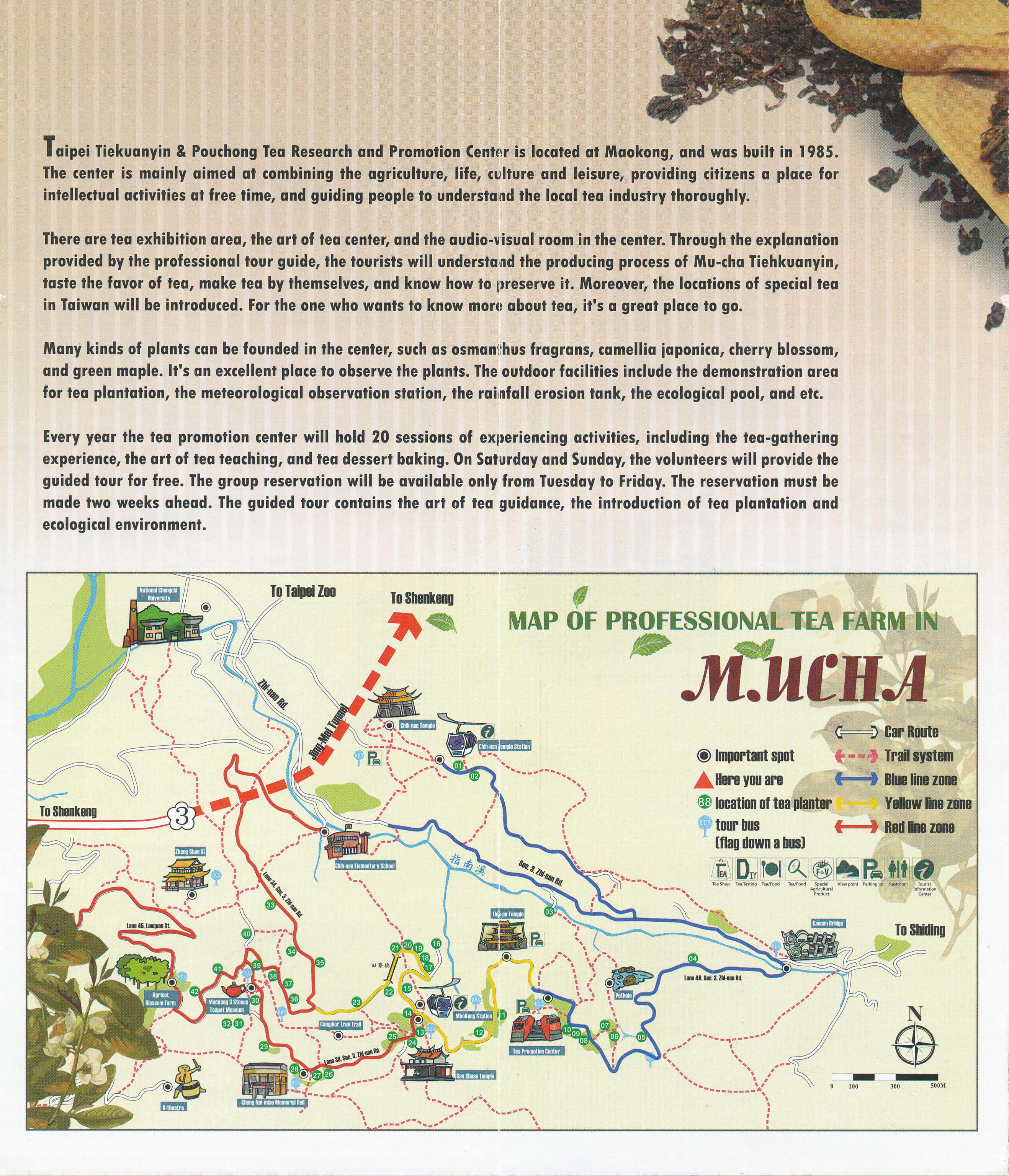
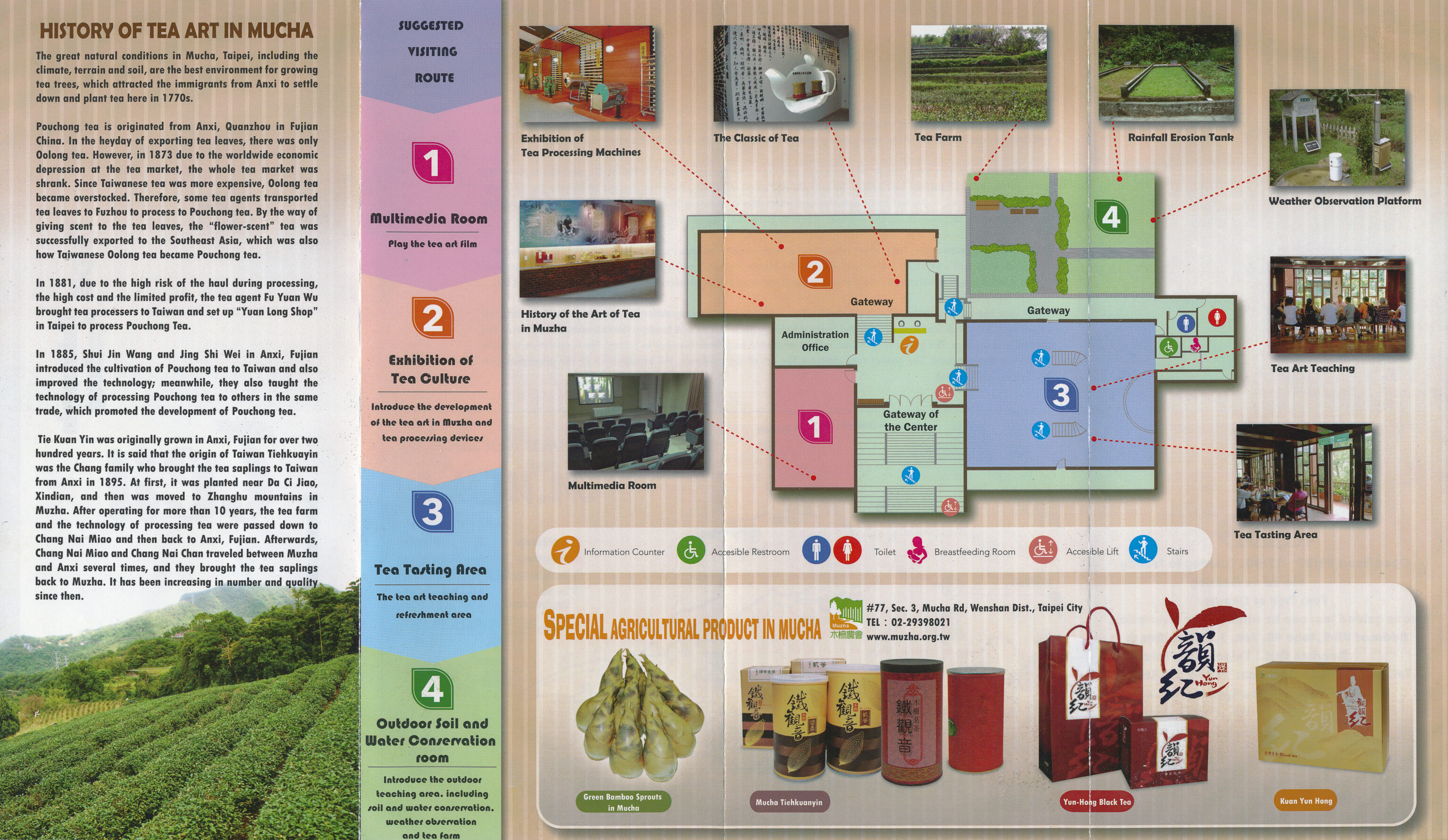
We picked up an informational pamphlet upon entering.
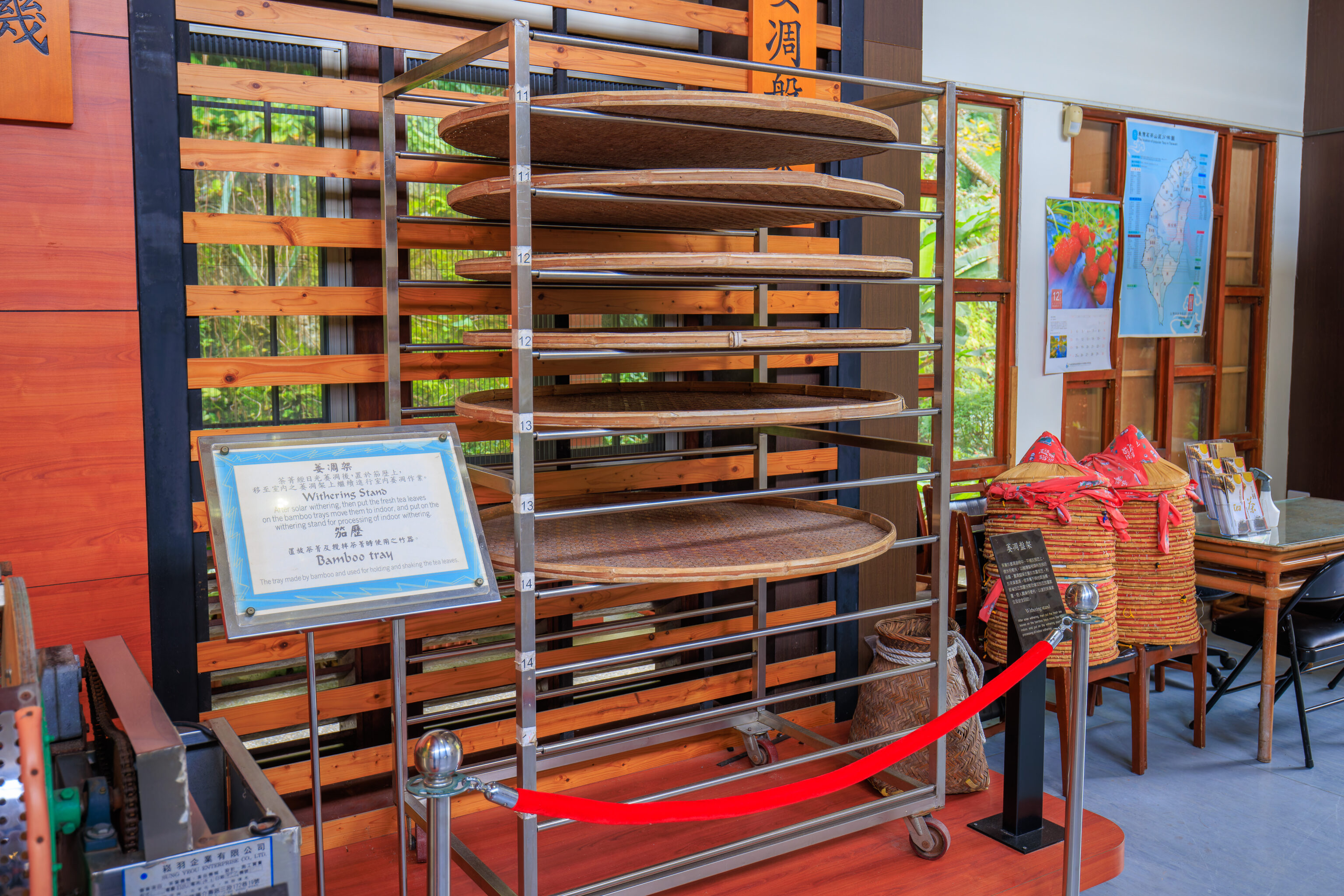
Inside, there were examples of various pieces of equipment used in the tea making process, each with a sign that helpfully had English text. Not the greatest use of English, but mostly understandable!
Withering Stand After solar withering, then put the fresh tea leaves on bamboo trays move them to indoor, and put on the withering stand for processing of indoor withering. Bamboo Tray The tray made by bamboo and used for holding and shaking the tea leaves.
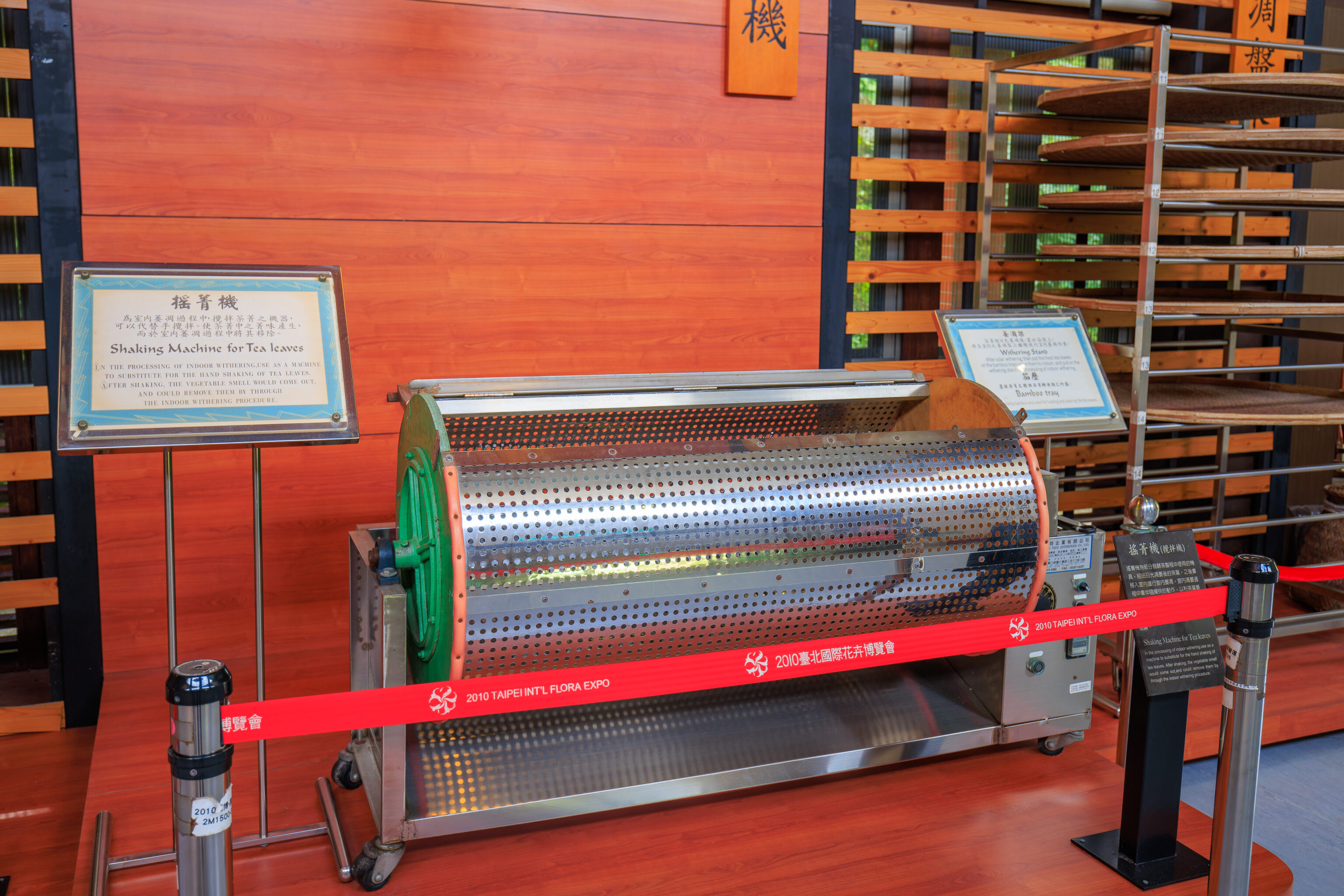
Shaking Machine for Tea Leaves In the processing of indoor withering, use as a machine to substitute for the hand shaking of tea leaves. After shaking, the vegetable smell would come out, and could remove them by through the indoor withering procedure.
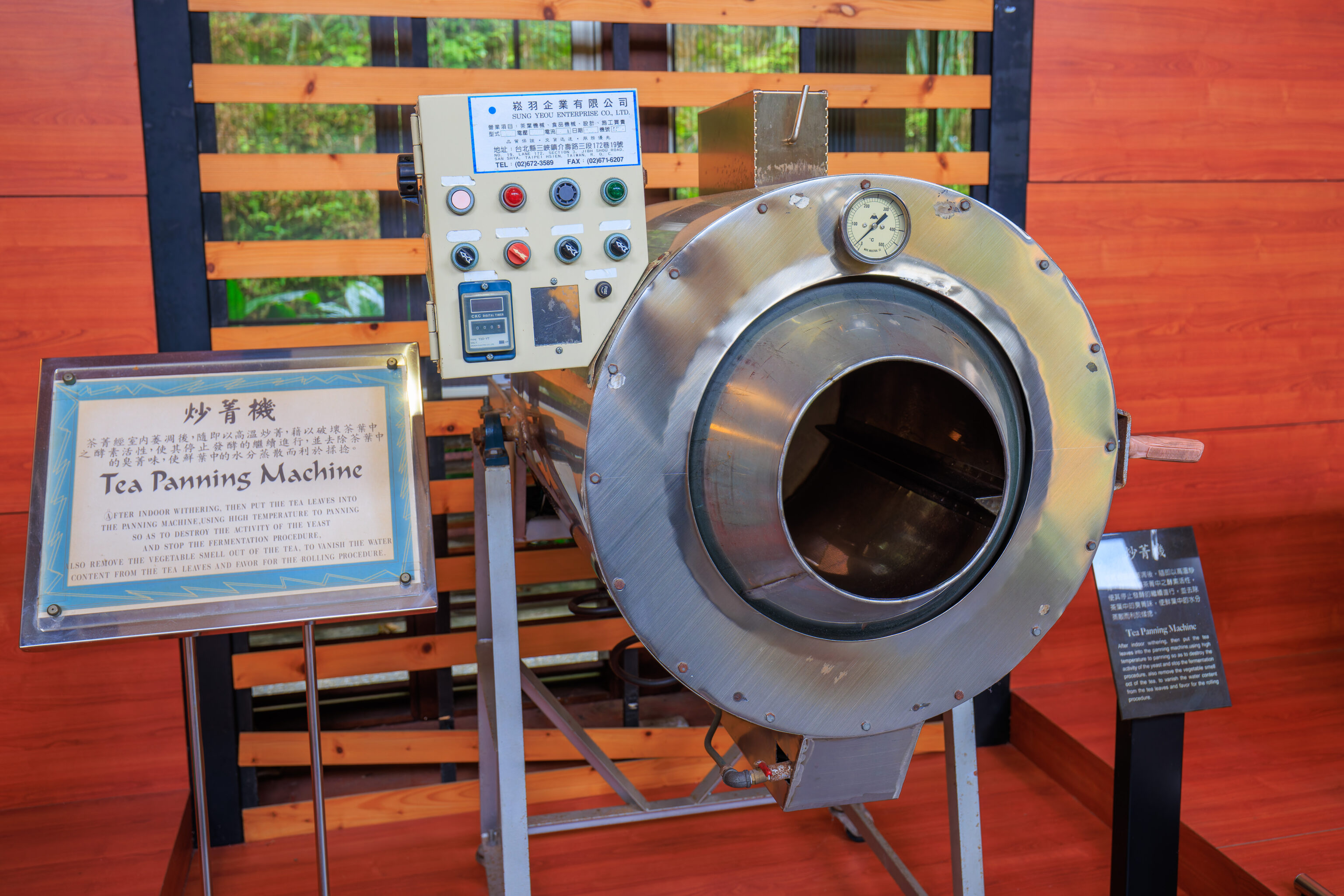
Tea Panning Machine After indoor withering, then put the tea leaves into the panning machine, using high temperature to panning so as to destroy the activity of the yeast and stop the fermentation procedure, also remove the vegetable smell out of the tea, to vanish the water content from the tea leaves and favor for the rolling procedure.
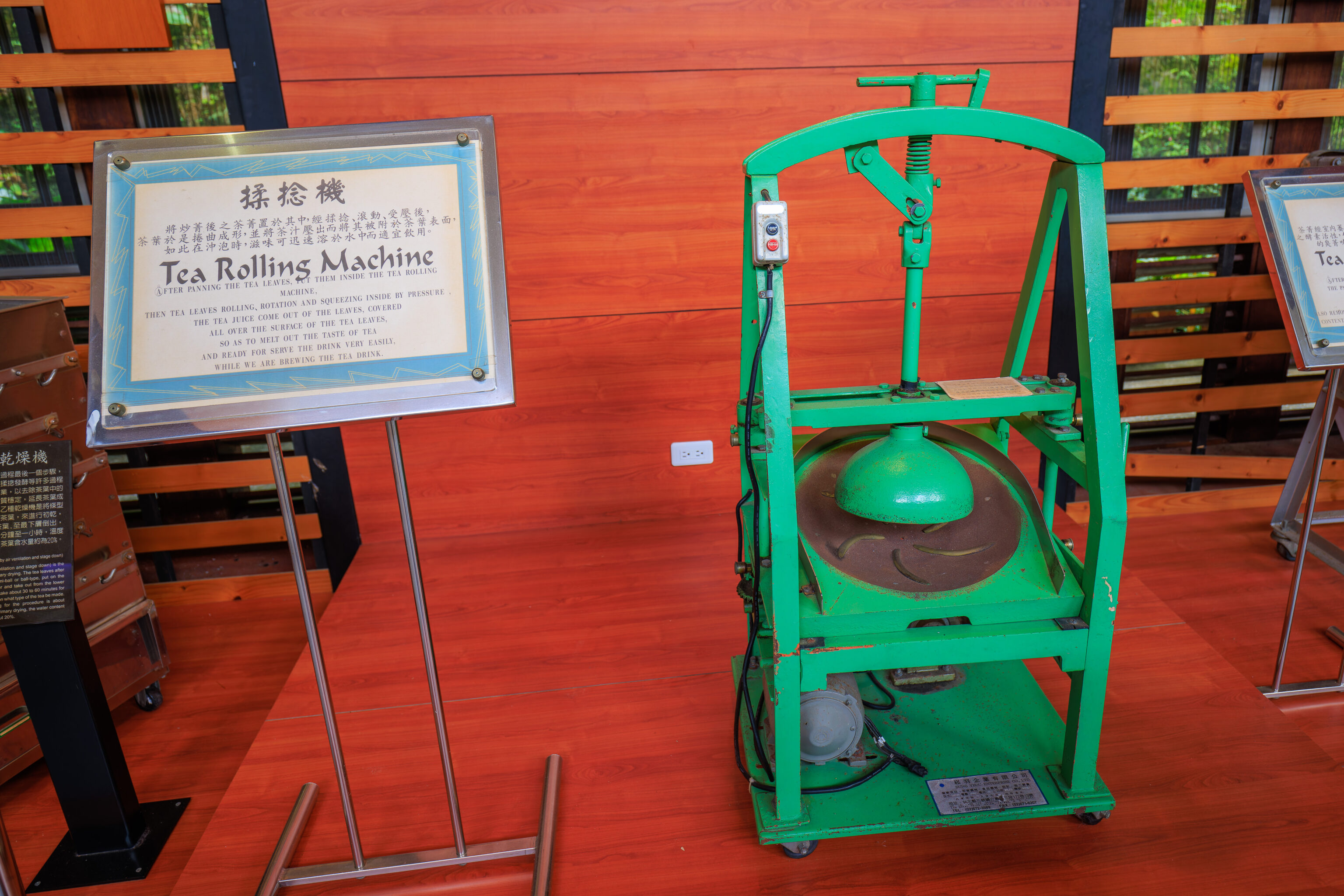
Tea Rolling Machine After panning the tea leaves, put them inside the tea rolling machine, then tea leaves rolling, rotation and squeezing inside by pressure, the tea juice come out of the leaves, covered all over the surface of the tea leaves, so as to melt out the tase of tea and ready for serve the drink very easily, while we are brewing the tea drink.
The use of English here seems to be getting worse… But, still understandable!
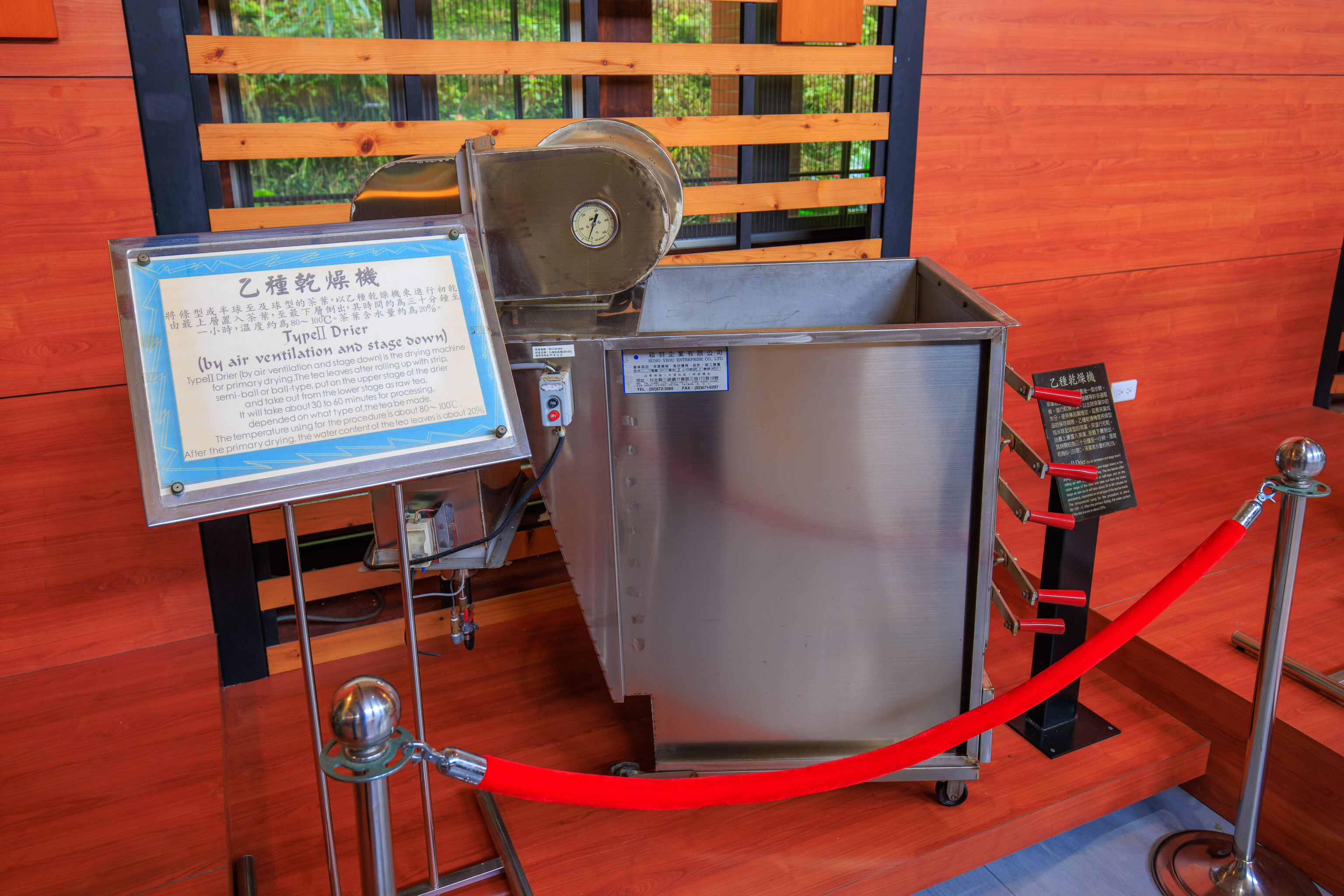
Type II Drier (by air ventilation and stage down) Type II Drier (by air ventilation and stage down) is the drying machine for primary drying. The tea leaves after rolling up with strip, semi-ball or ball-type, put on the upper stage of the drier and take out from the lower stage as raw tea. It will take about 30 to 60 minutes for processing, depended on what type of the tea be made. The temperature using for the procedure is about 80~100°C. After primary drying, the water content of the tea leaves is about 20%
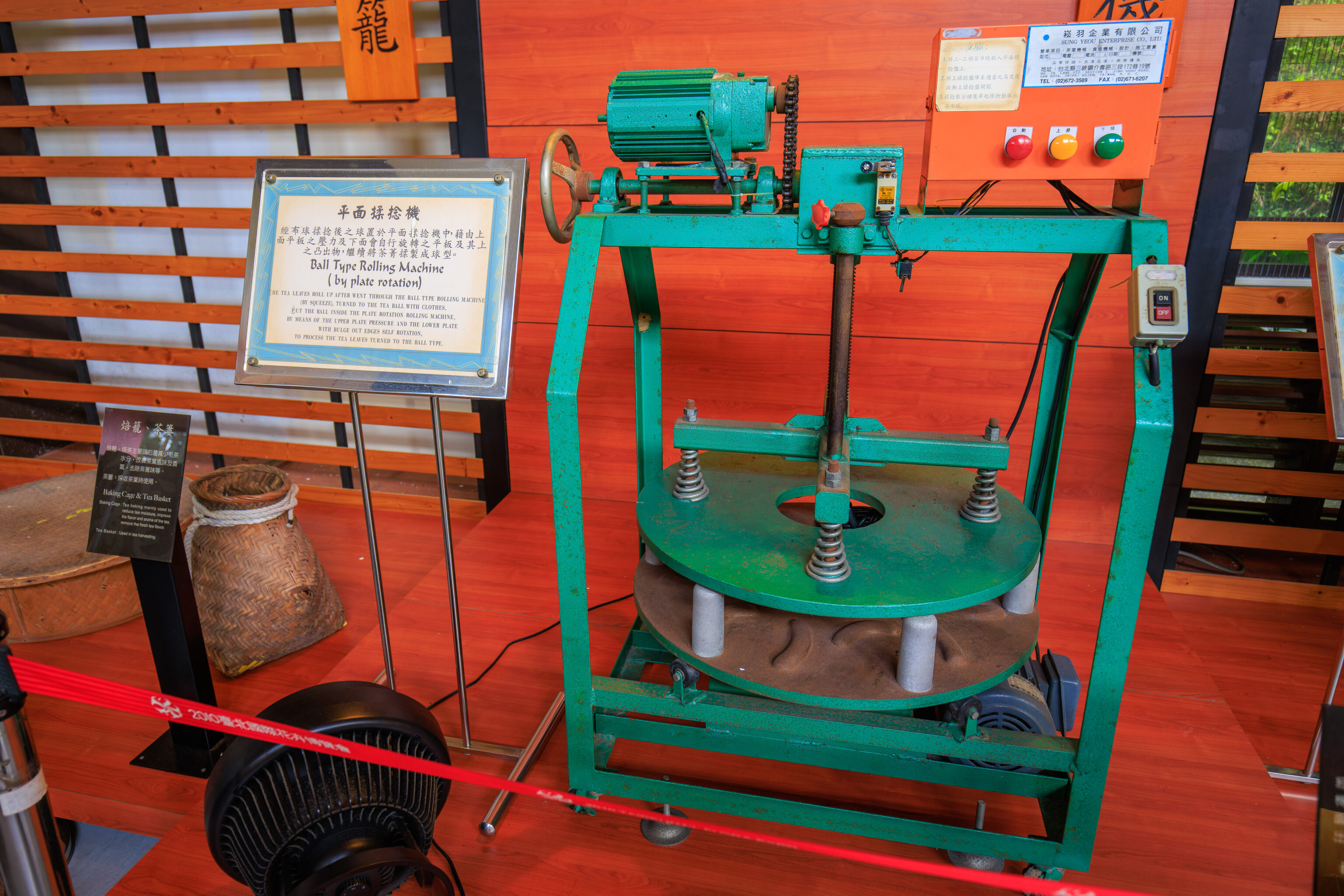
Ball Type Rolling Machine (by plate rotation) The tea leaves roll up after went through the ball type rolling machine (by squeeze), turned to the tea ball with clothes, put the ball inside the plate rotation rolling machine, by means of the upper plate pressure and the lower plate with bulge out edges self rotation, to process the tea leaves turned to the ball type.
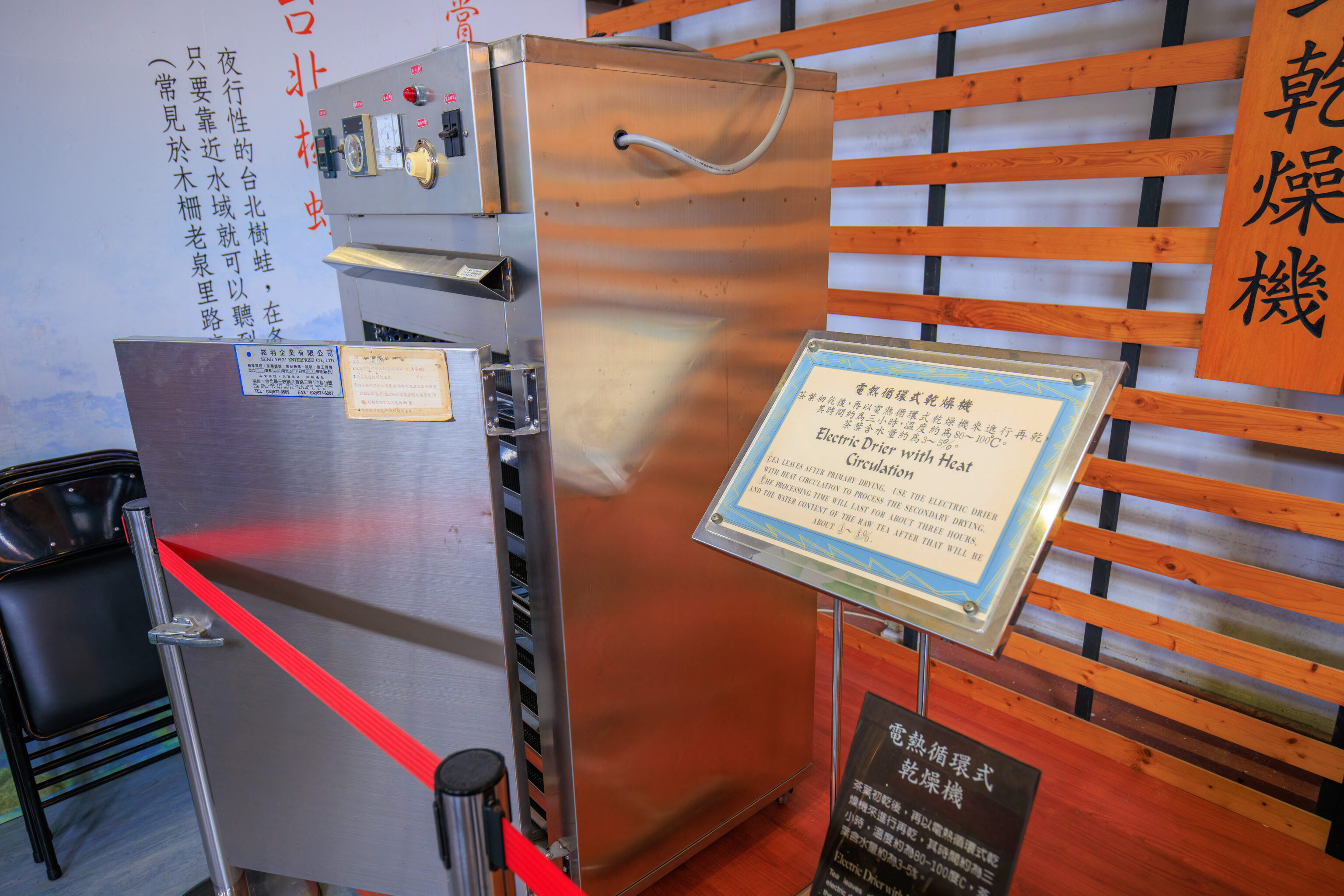
Electric Drier with Heat Circulation Tea leaves after primary drying, use the electric drier with heat circulation to process the secondary drying. The processing time will last for about three hours, and the water content of the raw tea after that will be about 3~5%.
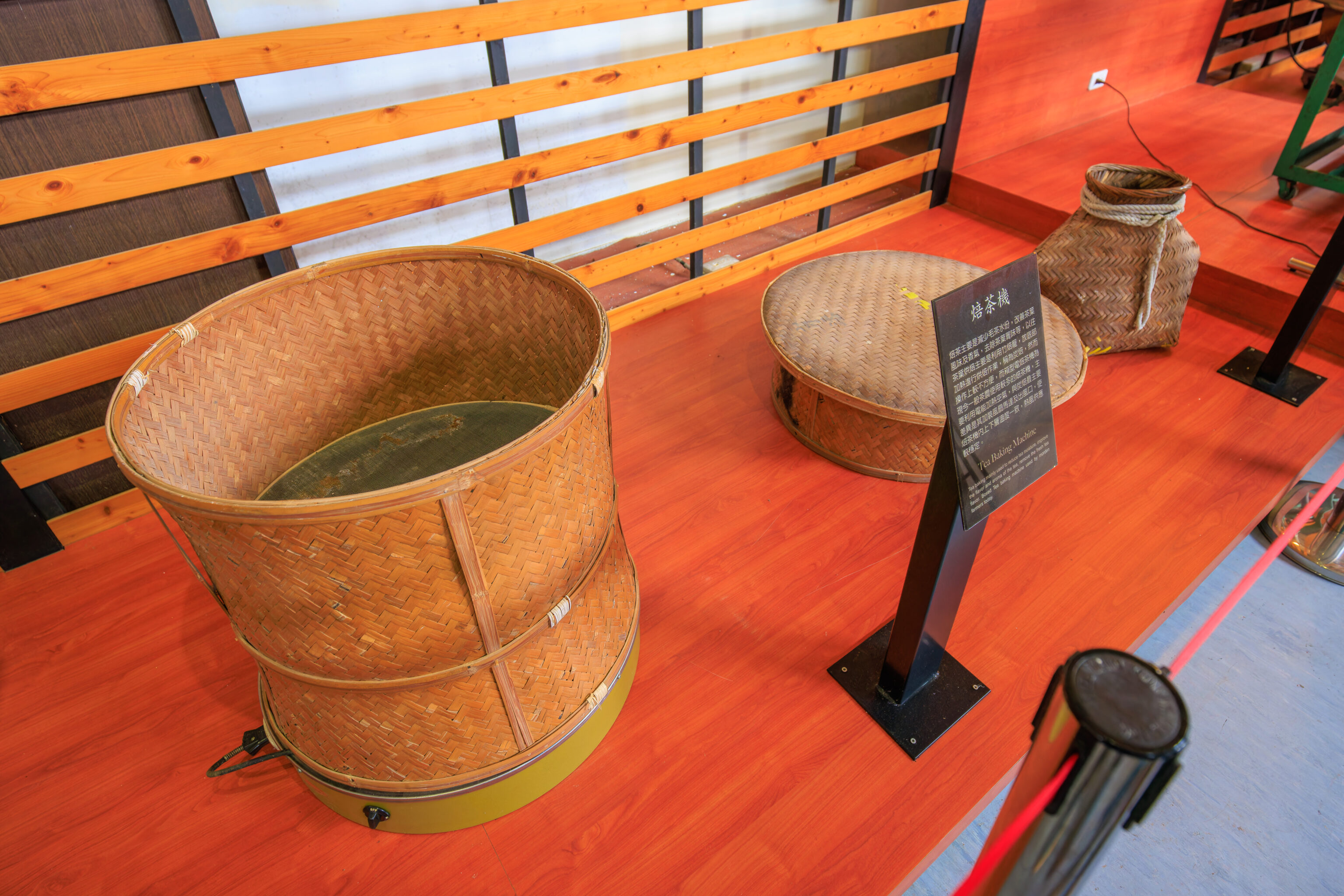
Tea Baking Machine Tea baking mainly used to reduce tea moisture, improve the flavor and aroma of the tea, remove the fresh tea flavor. Boxed Tea baking machine used by modern farmers today.
This appears to be a bamboo basket atop a heating element.
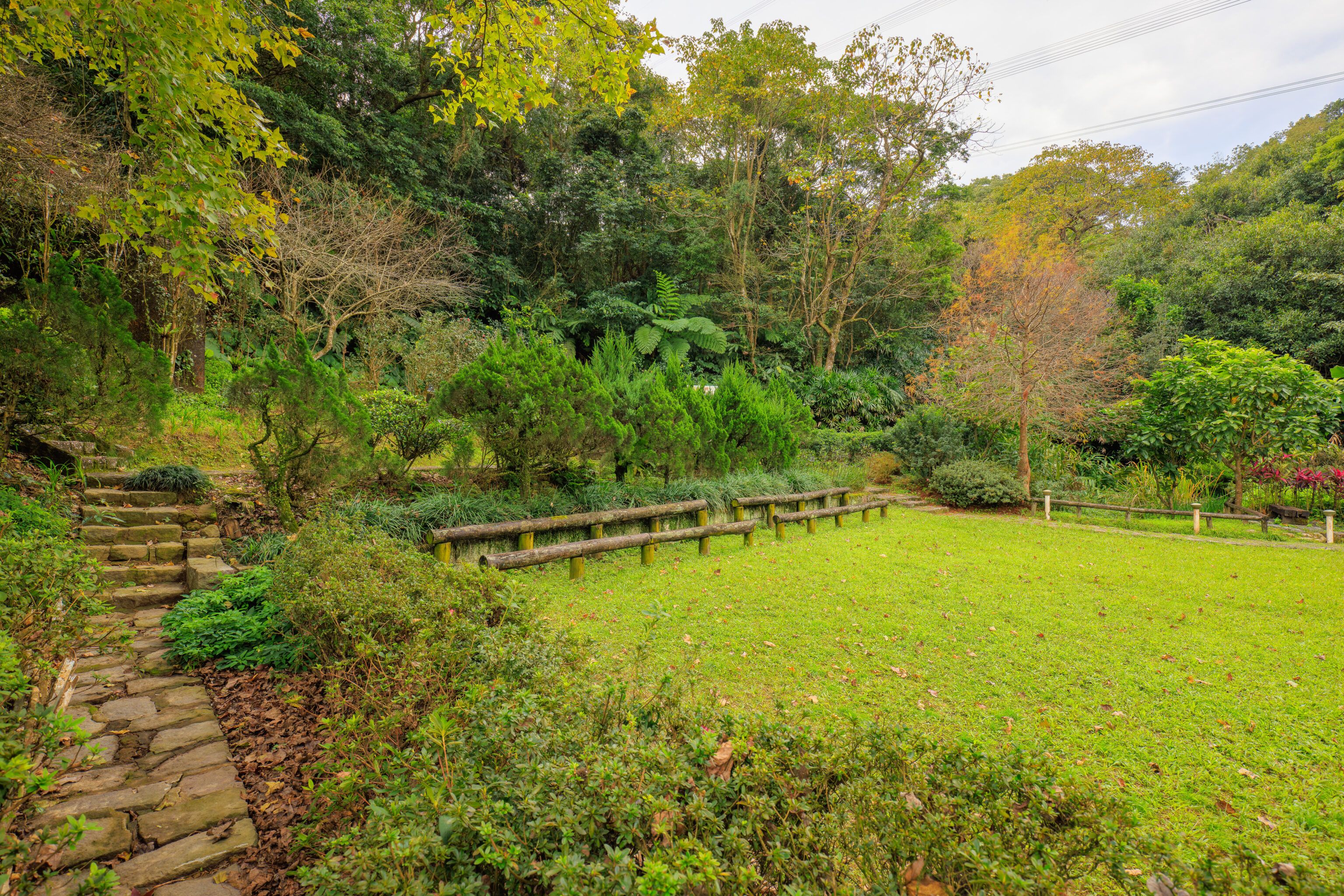
It seems that most of the outdoor areas are only able to be visited while on a guided tour. We could just see this small area.
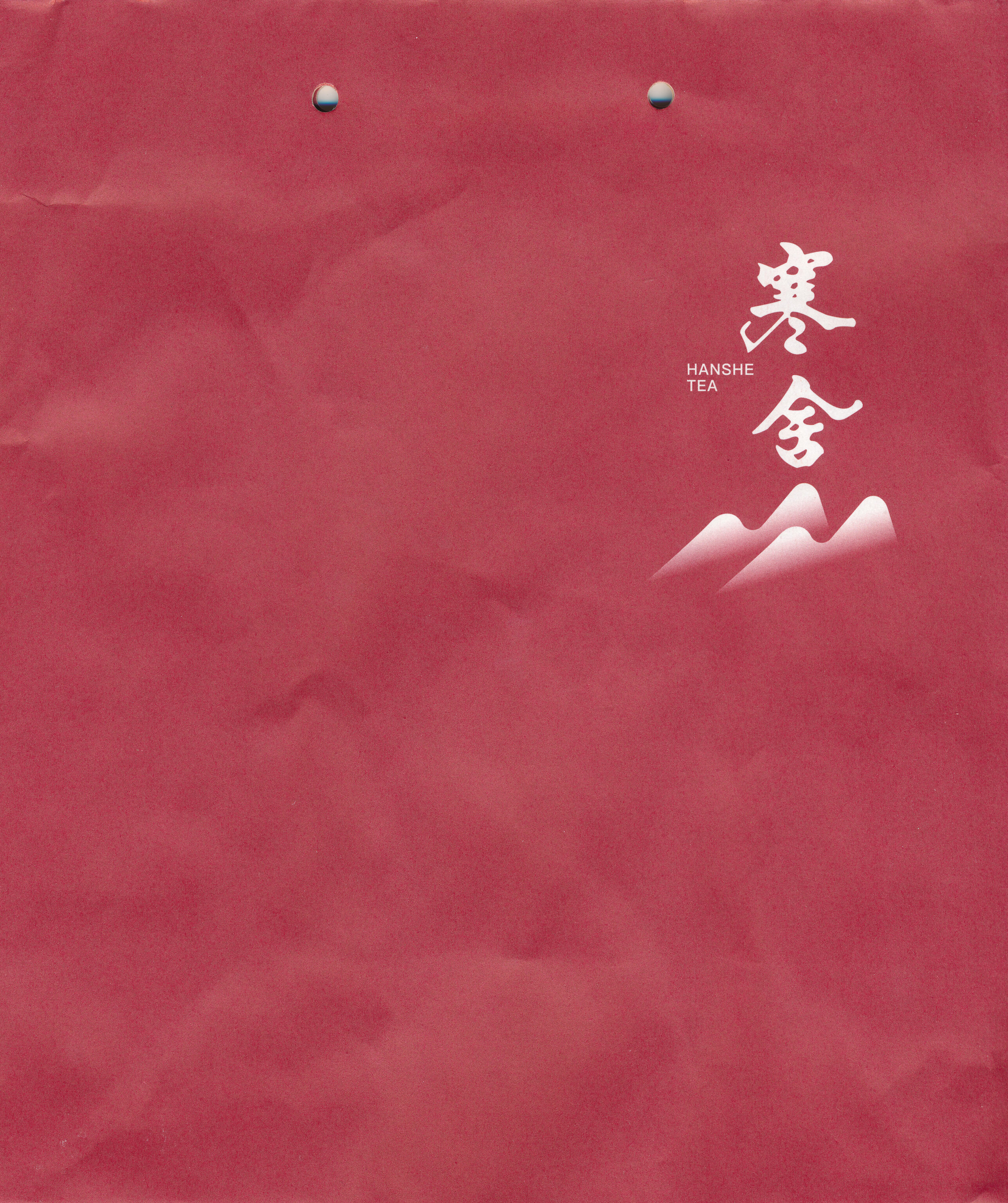
We tasted a variety of local teas and bought some to bring home and also to give as gifts.
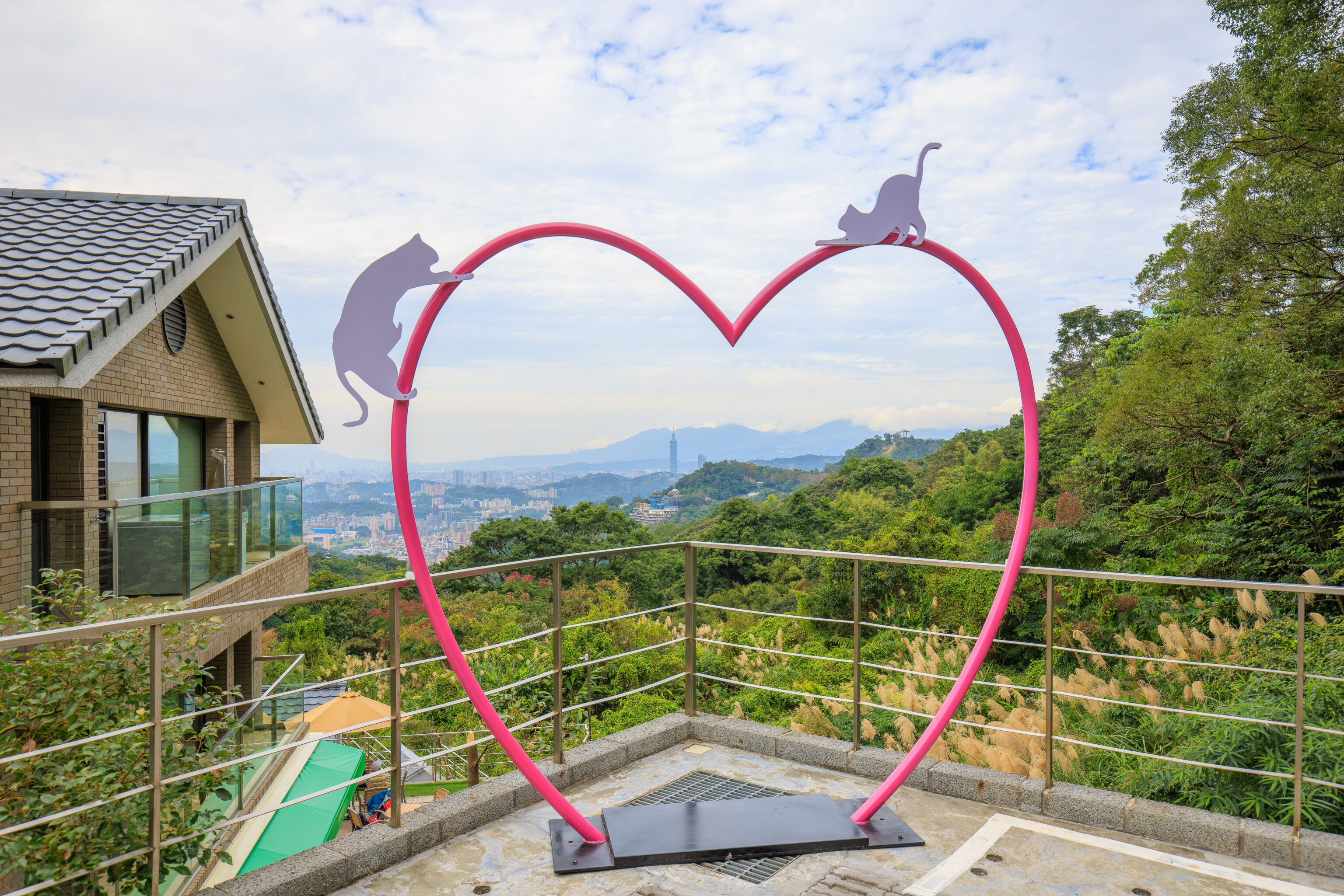
After our visit, we started to head back to the Maokong gondola station. Not time to leave yet, but our next destination, the 樟山寺 Zhangshan Temple, was in that direction. We saw this heart, clearly designed for modern social media, earlier. At the time, people were taking photos with it so we kept on going. We had someone take our photos here, though unfortunately it didn’t come out well.
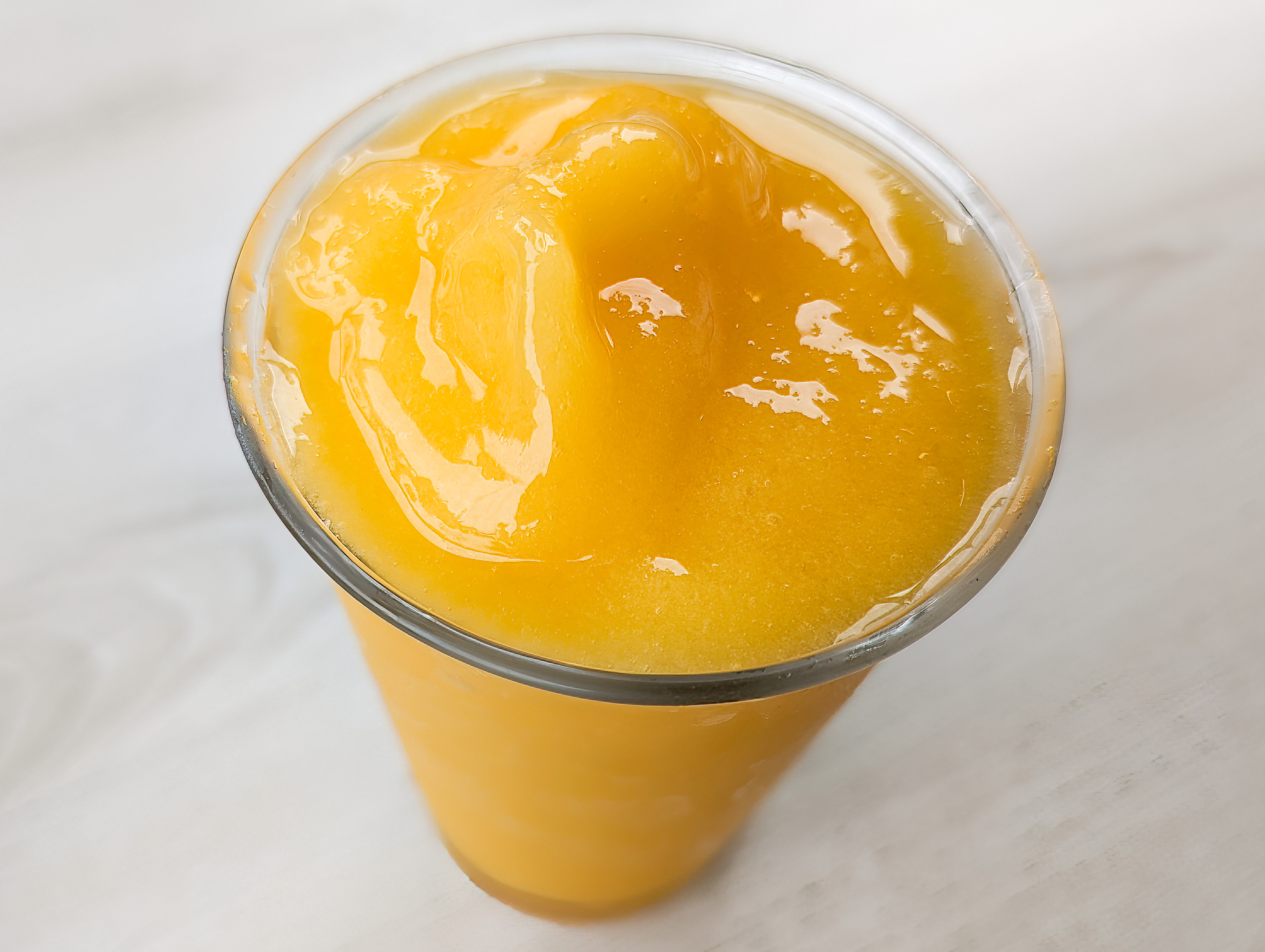
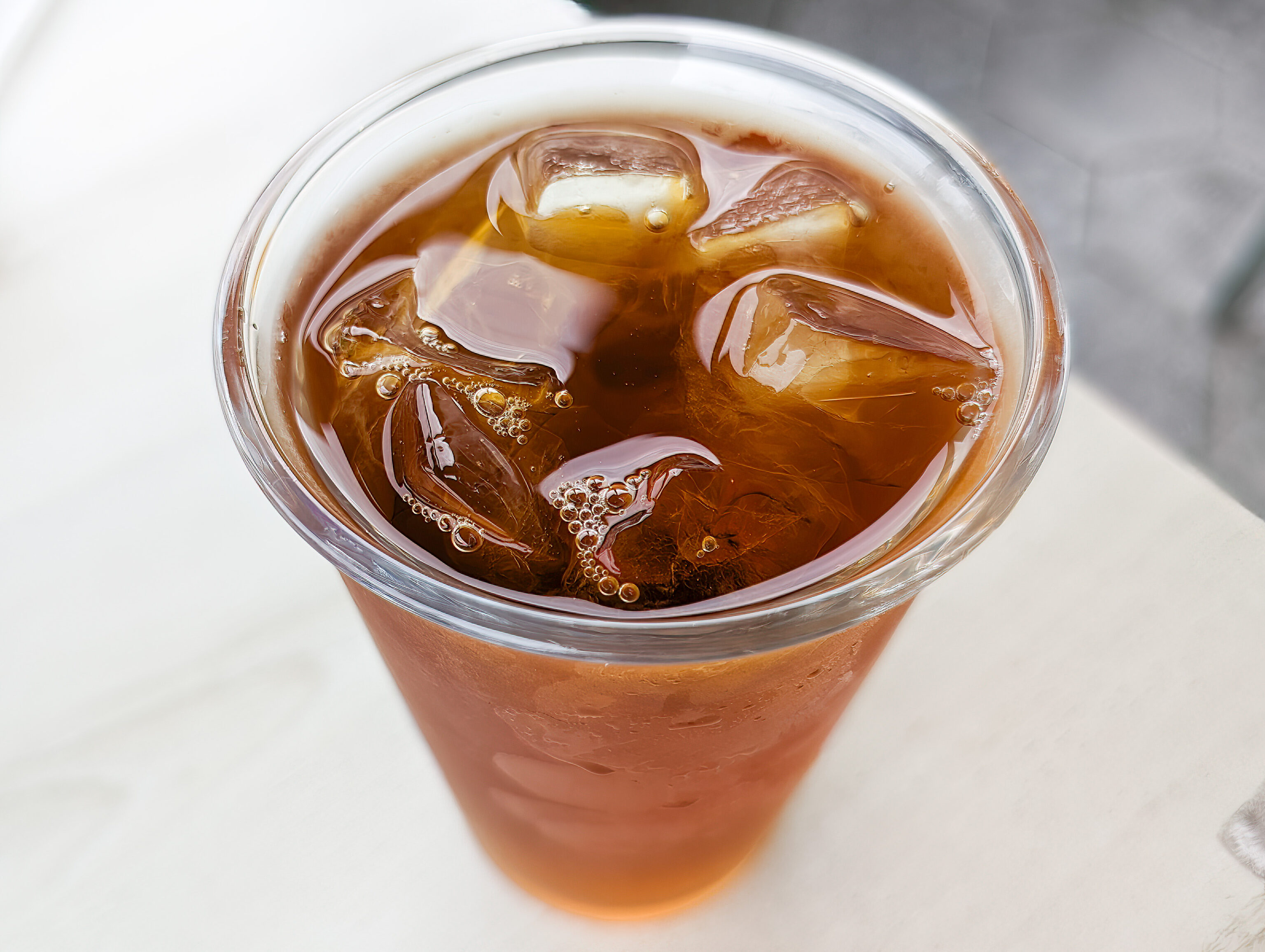
Although we were still full from lunch, we stopped at 雪敲 Ice Climber for a snack. We ordered two drinks, a mango smoothie and cold tieguanyin tea. Both were quite refreshing.
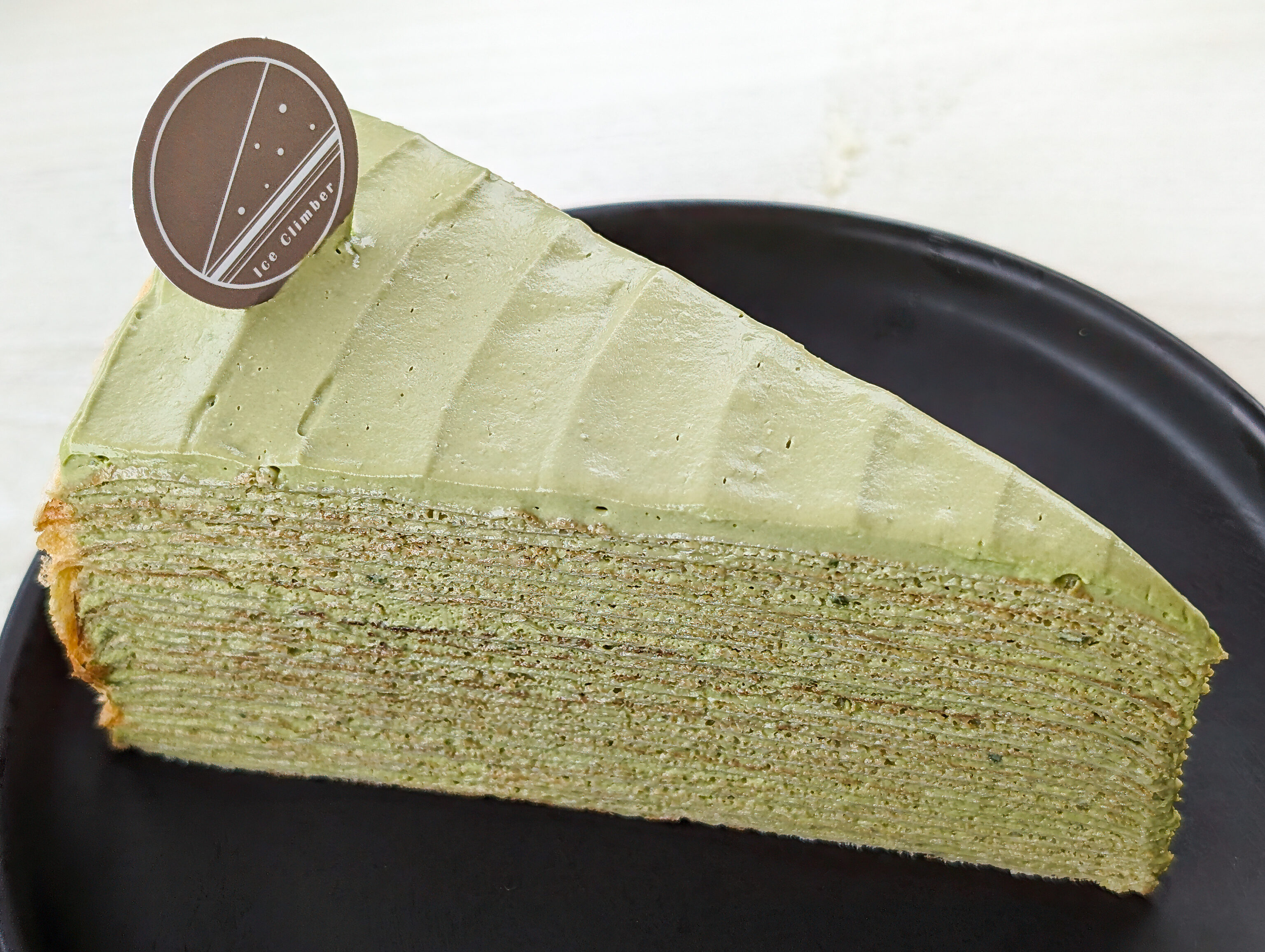
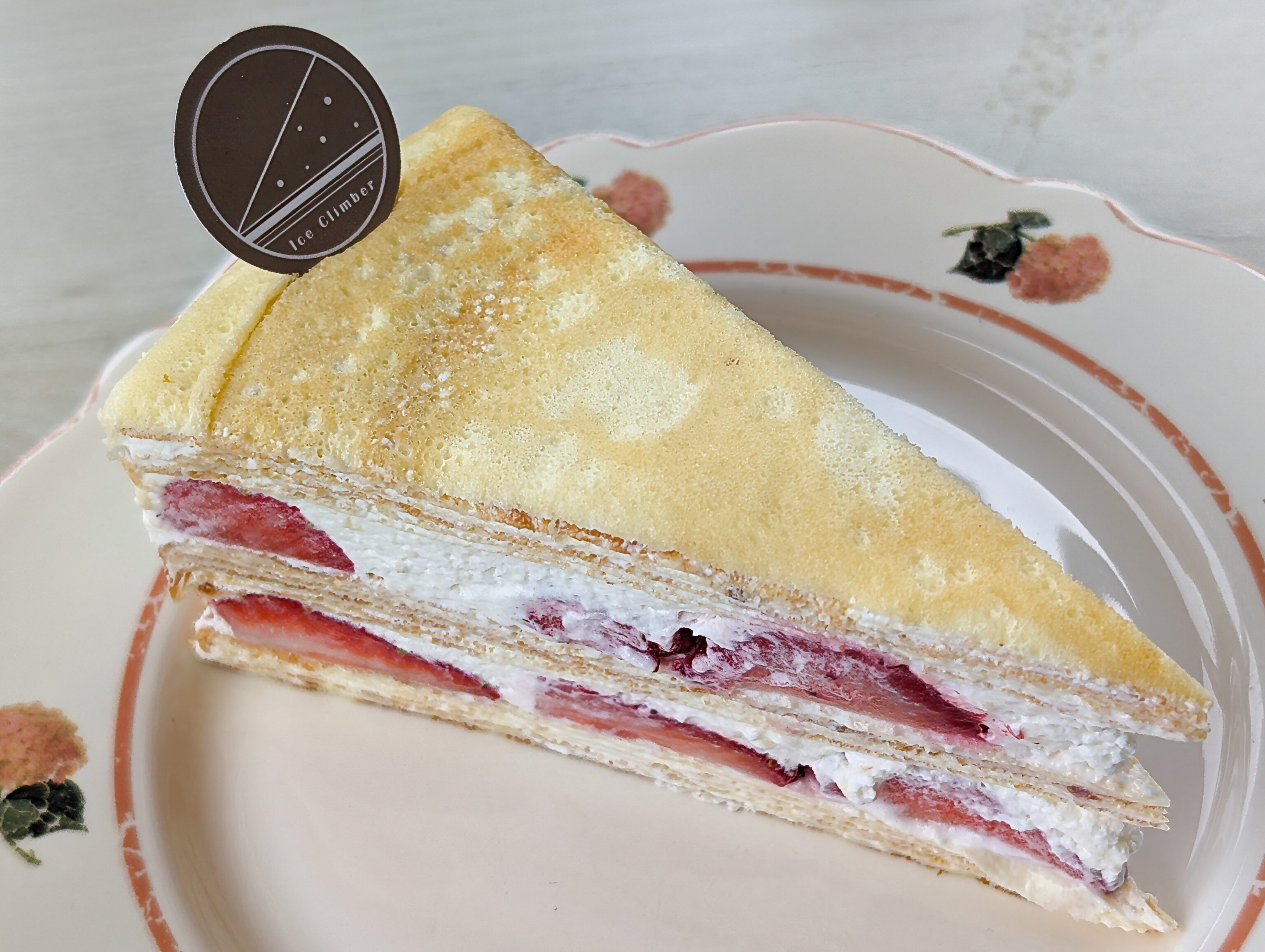
We also ordered matcha and a strawberry mille crepe cakes. Both were good as well.
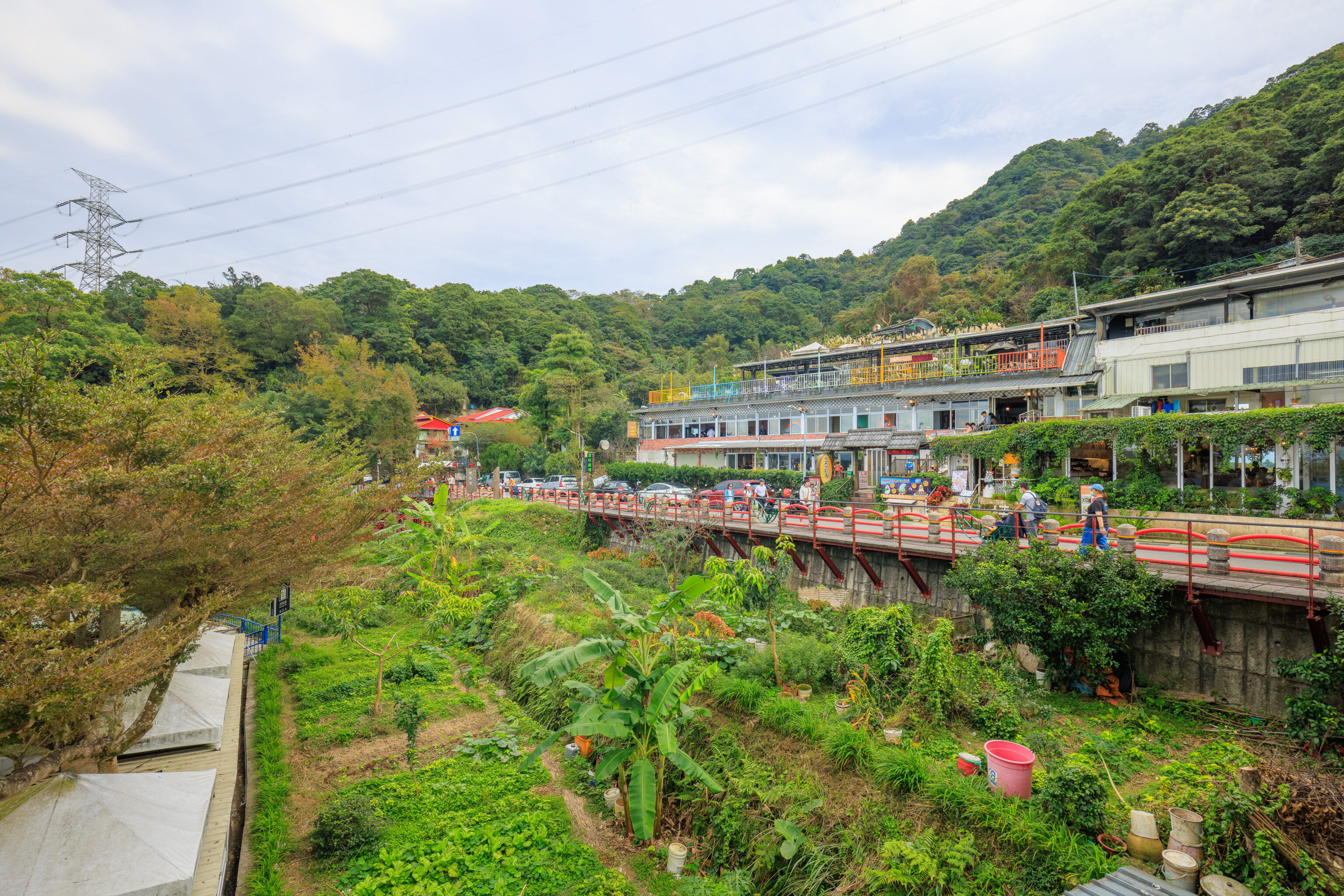
The view from our table. Ice Climber is actually on the first floor of the building where we had lunch earlier.
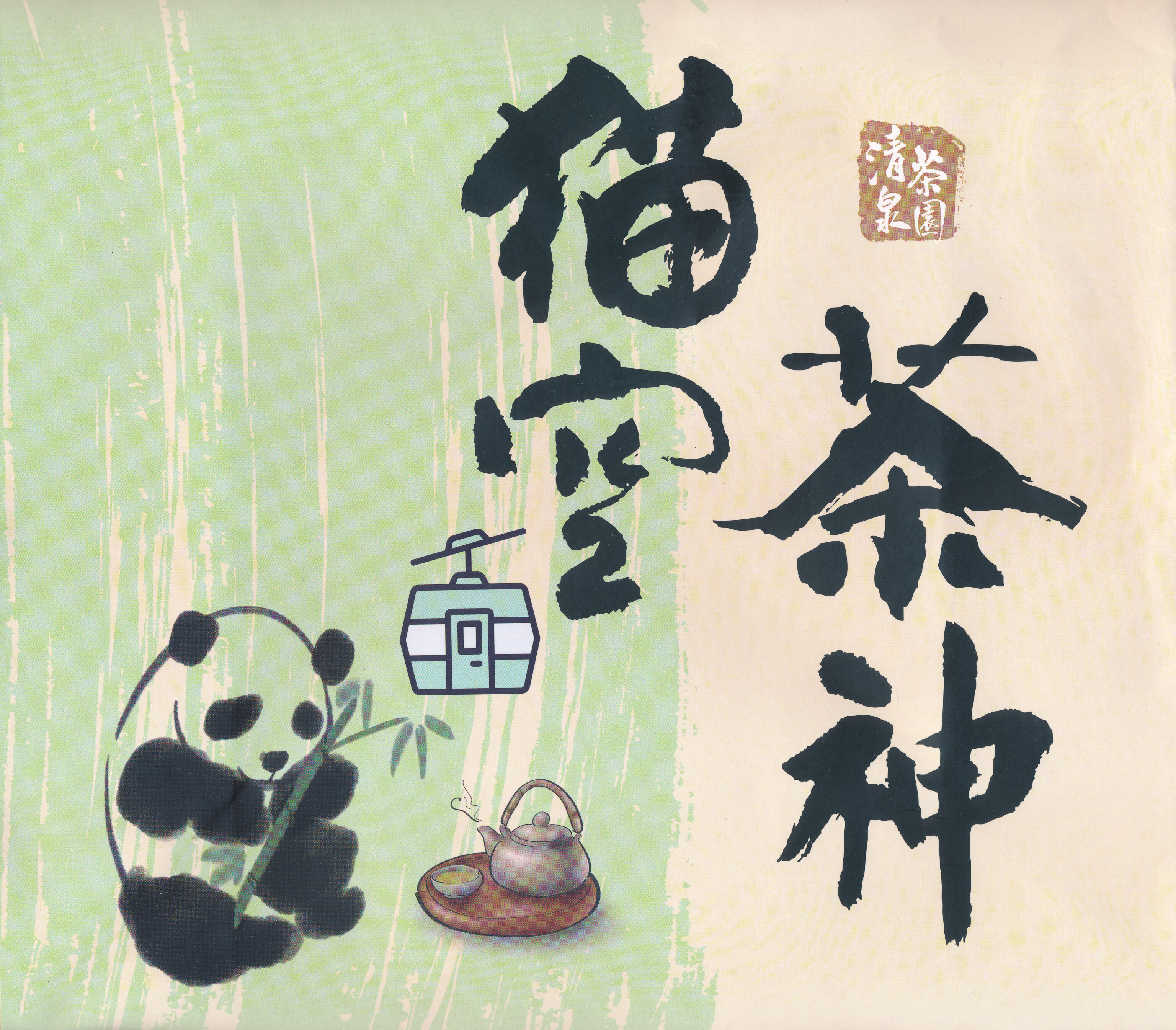
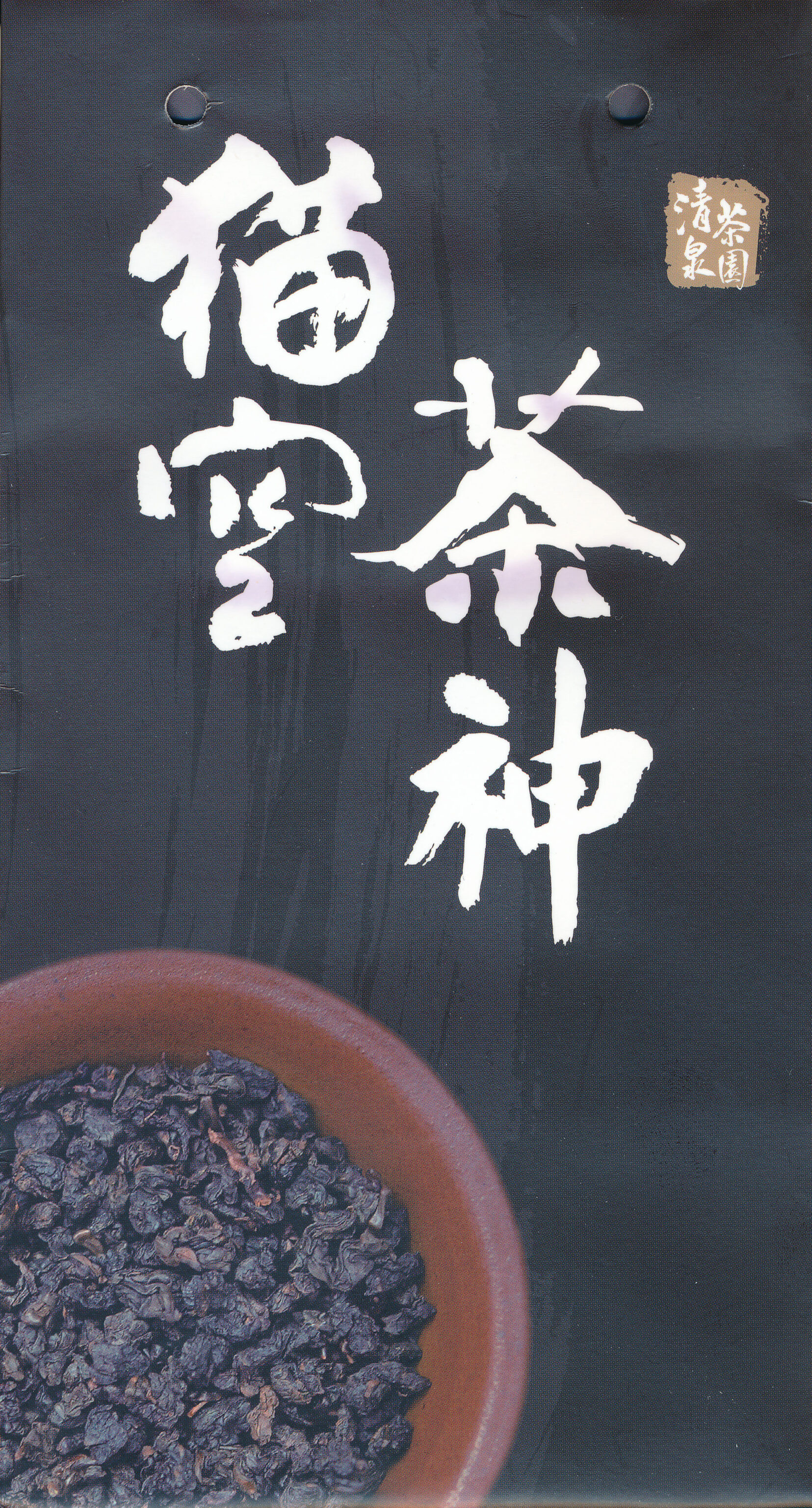
We ended up getting more tea from 貓空茶神 Maokong Tea Master. The Chinese name is actually Maokong Tea God, but for whatever reason they choose Master for their English name. Sadly, they choose to use a panda rather than a cat on their larger bag!
We continued to backtrack until we returned to the Maokong gondola station.
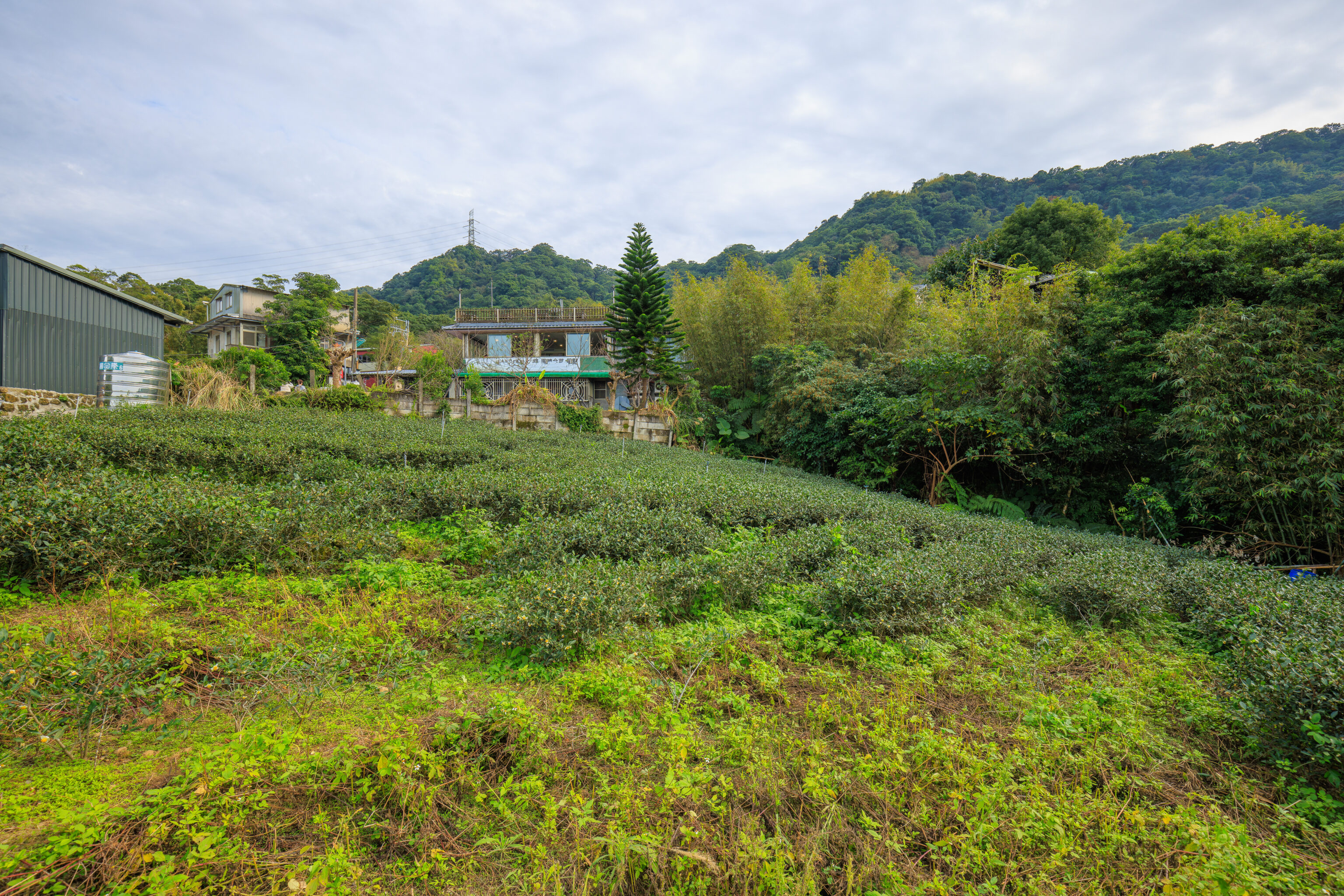
From there, it was slightly not obvious where we should head next. But we ended up picking the right path and ended up on the 樟樹步道 Camphor Tree Trail. This trail heads through a tea farming area.
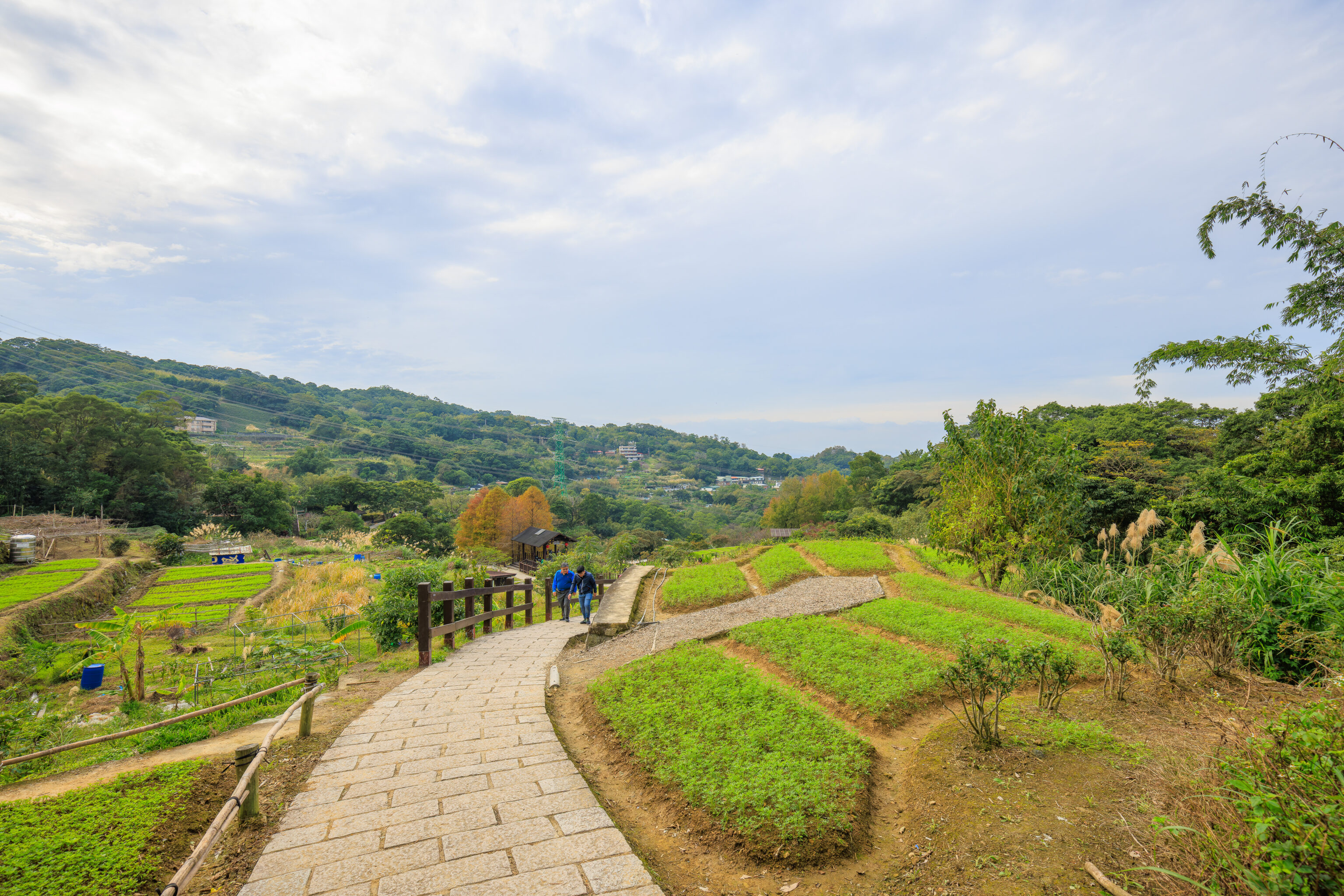
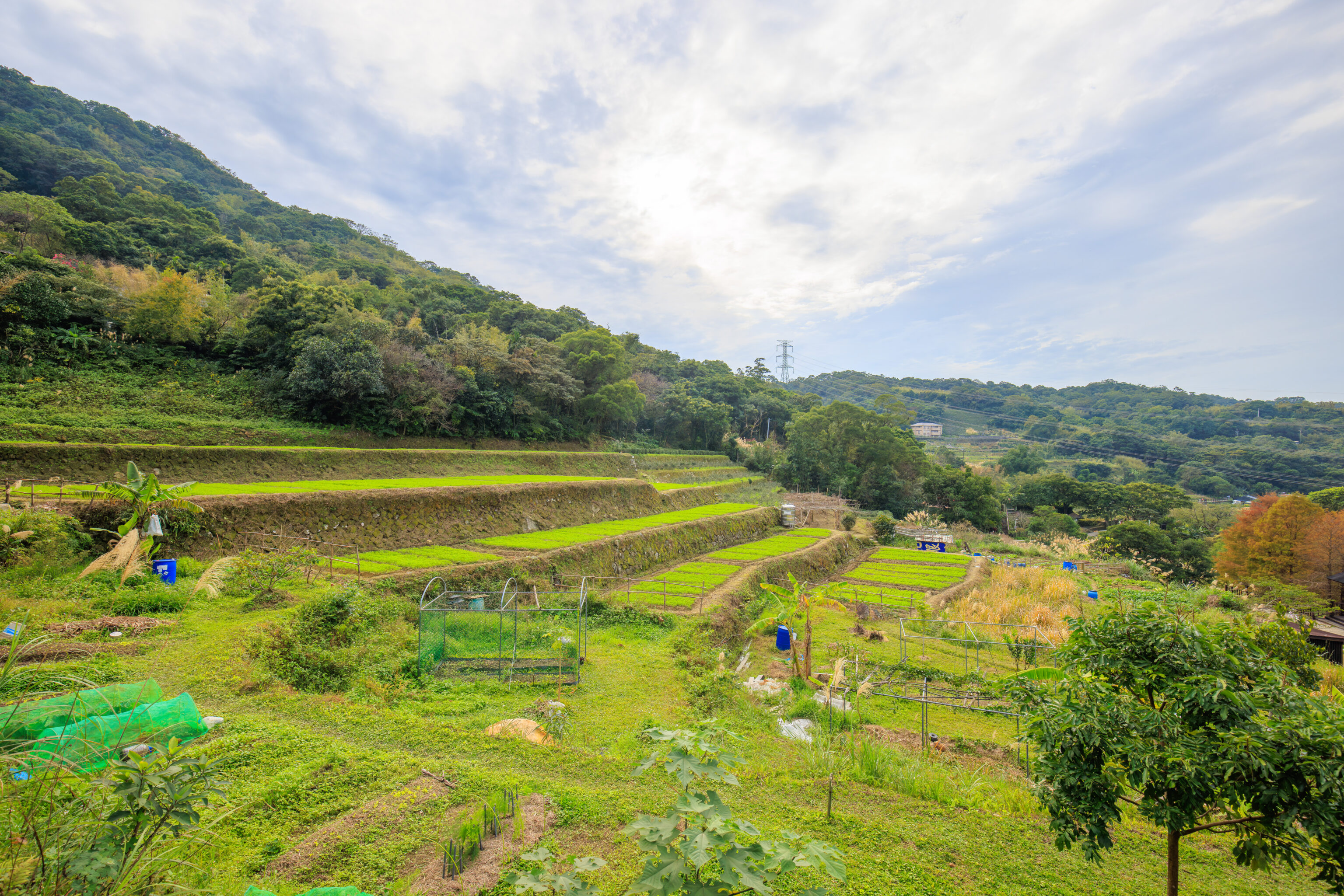
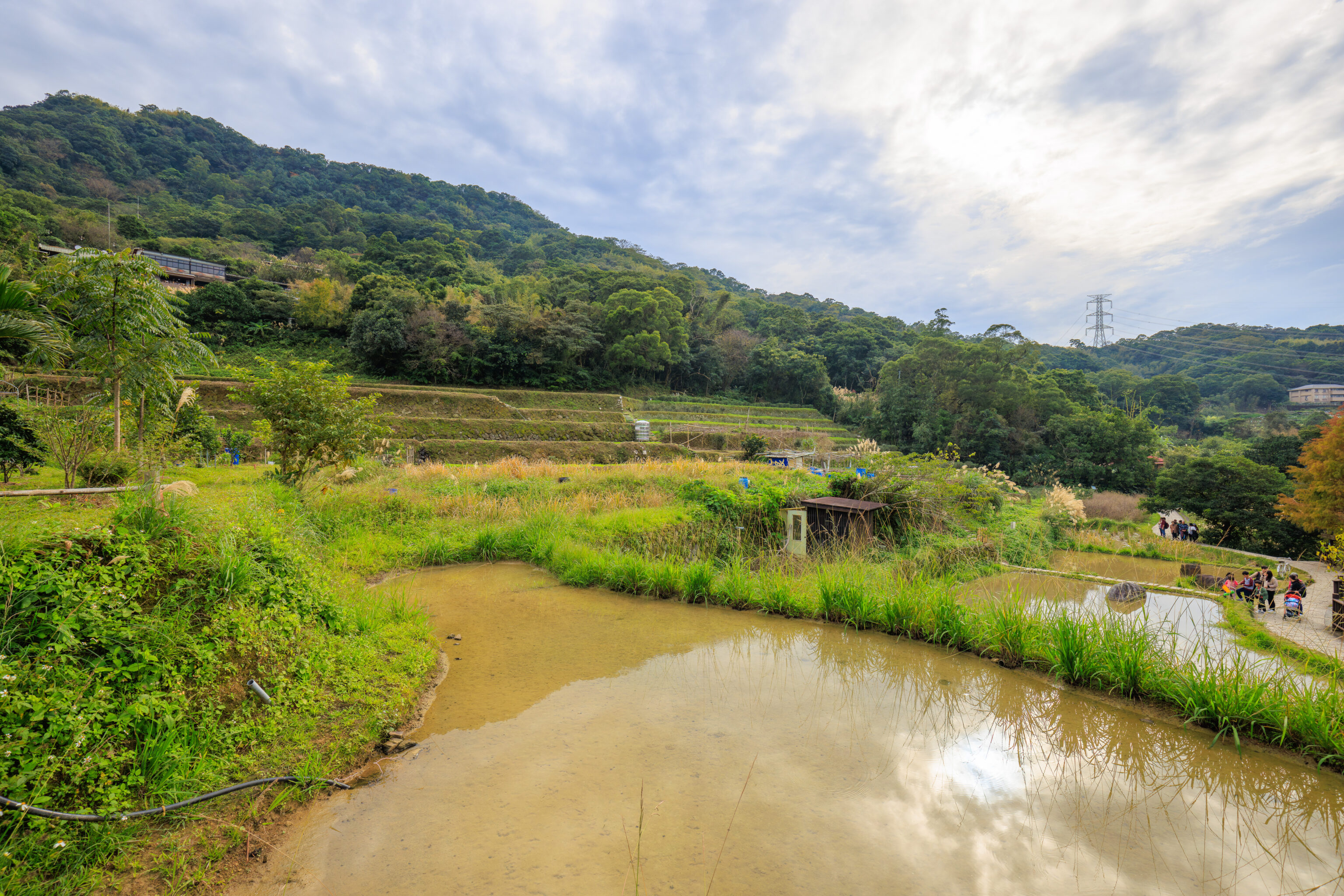
Presumably, these terraces are all used for tea farming.
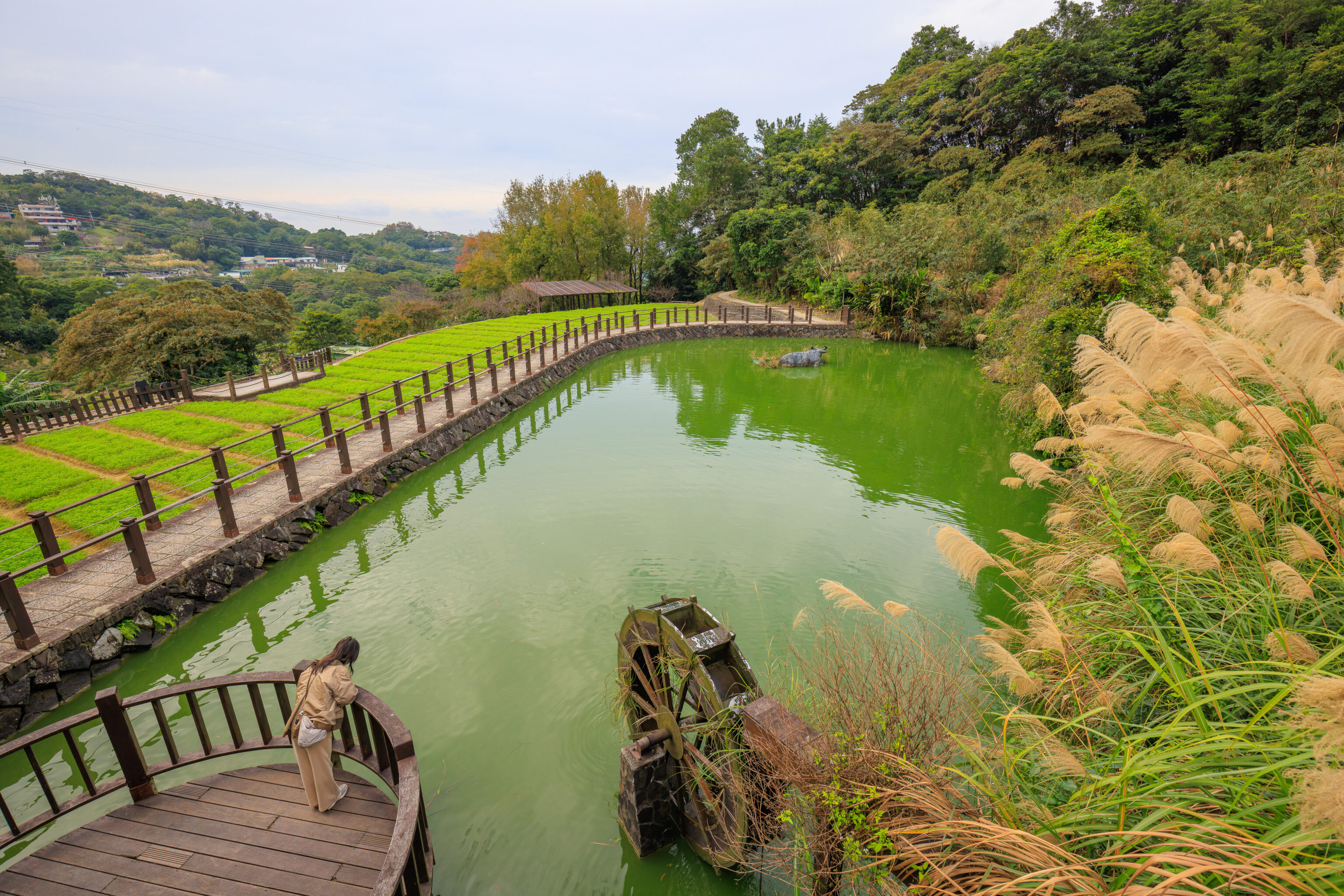
We passed by a water wheel at a small peaceful pond. An “ox” was enjoying the water.
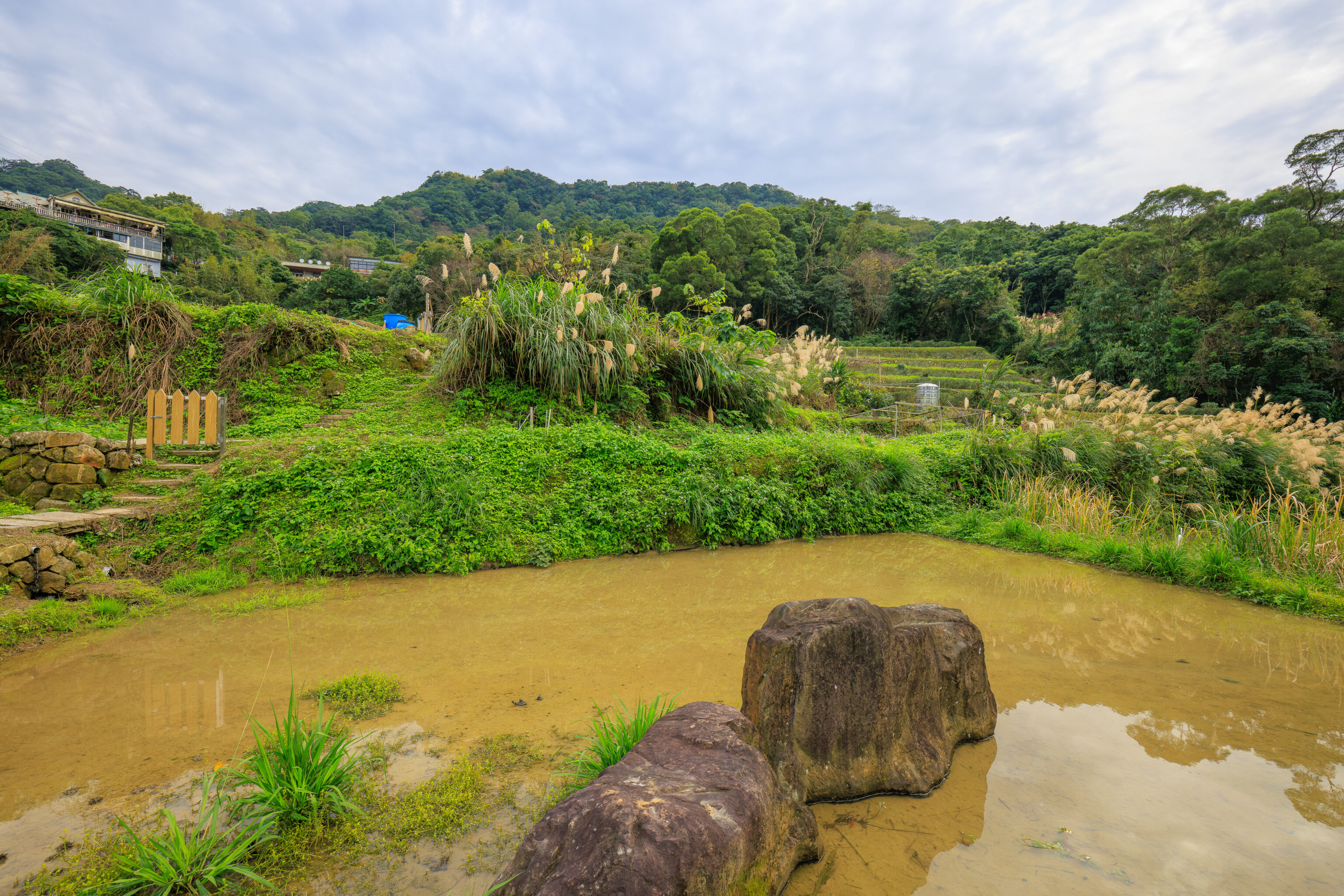
Do these rocks look a bit like a T-Rex?
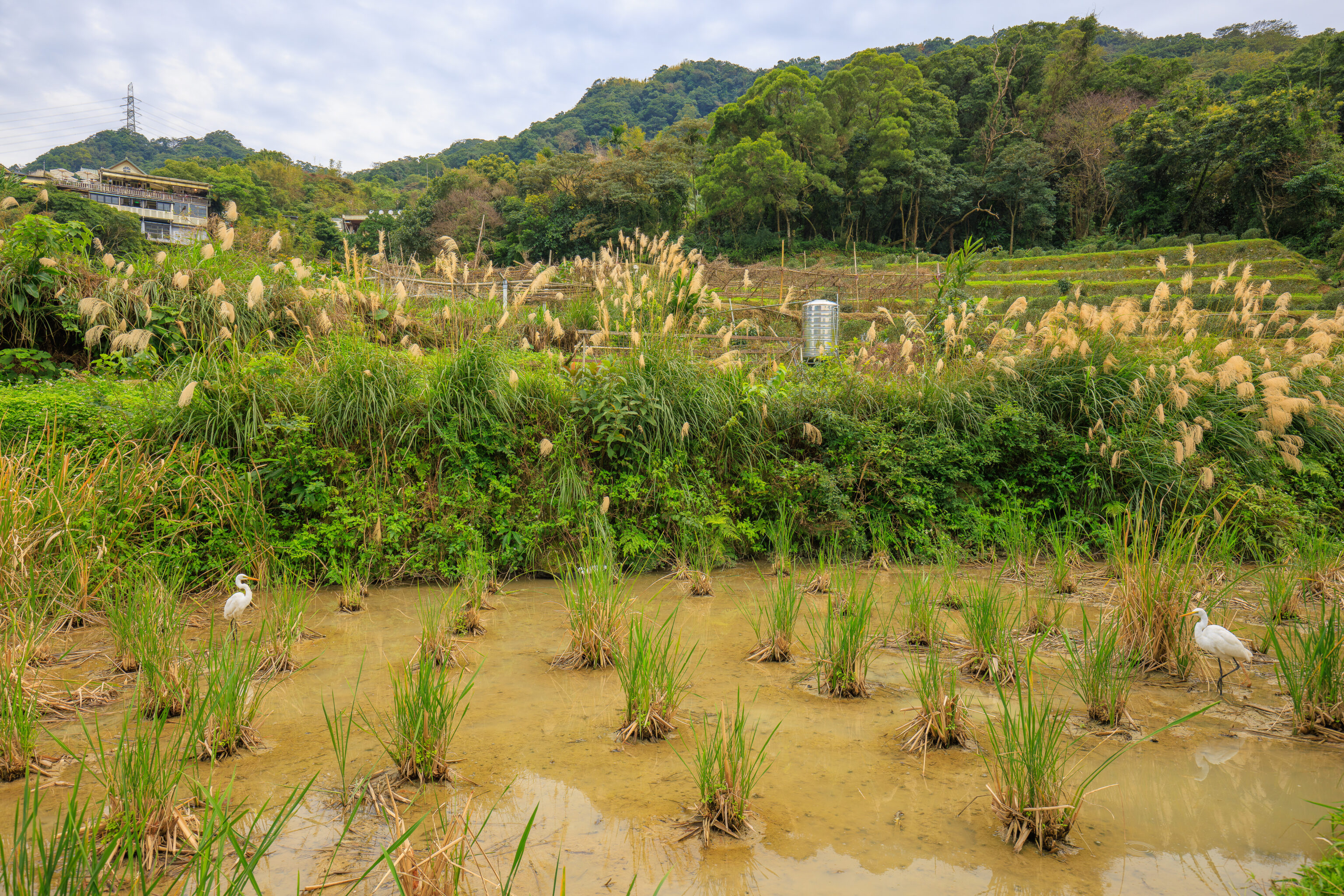
These birds, possibly Little Egrets or Western Cattle Egrets, were enjoying this wet field. They seemed to catch something! Perhaps there are crawfish here? Maybe frogs?
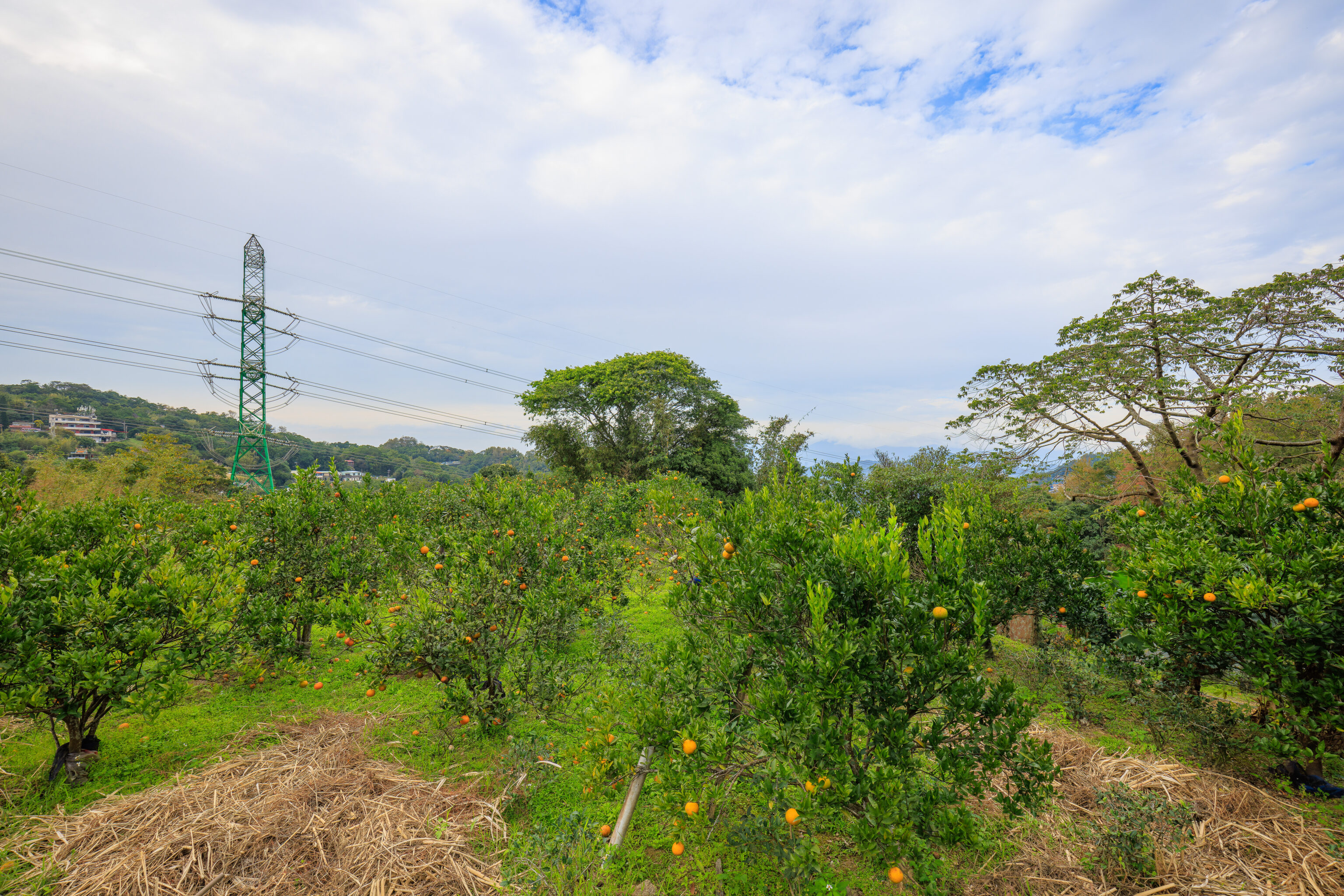
This field had some orange-like fruit.
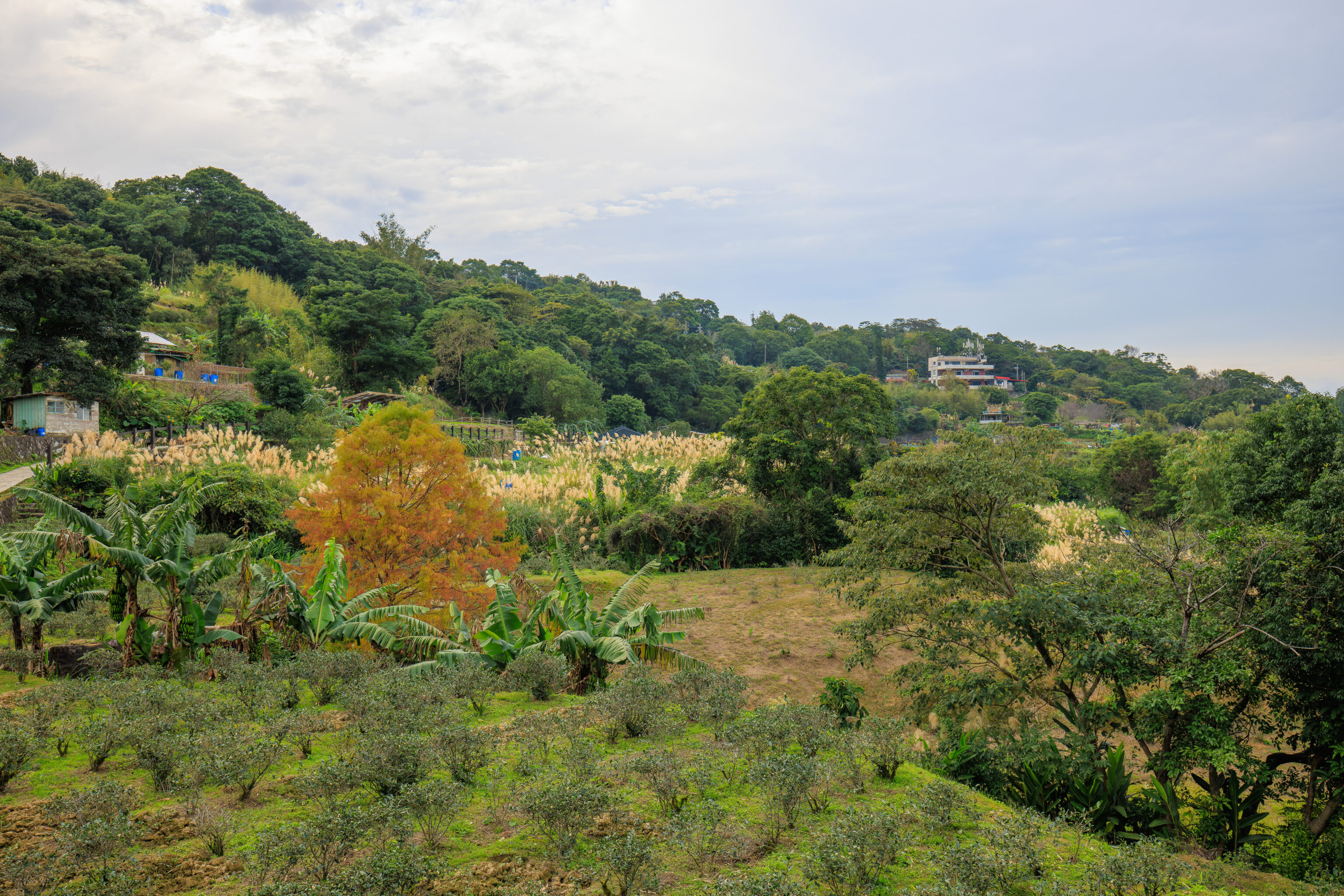
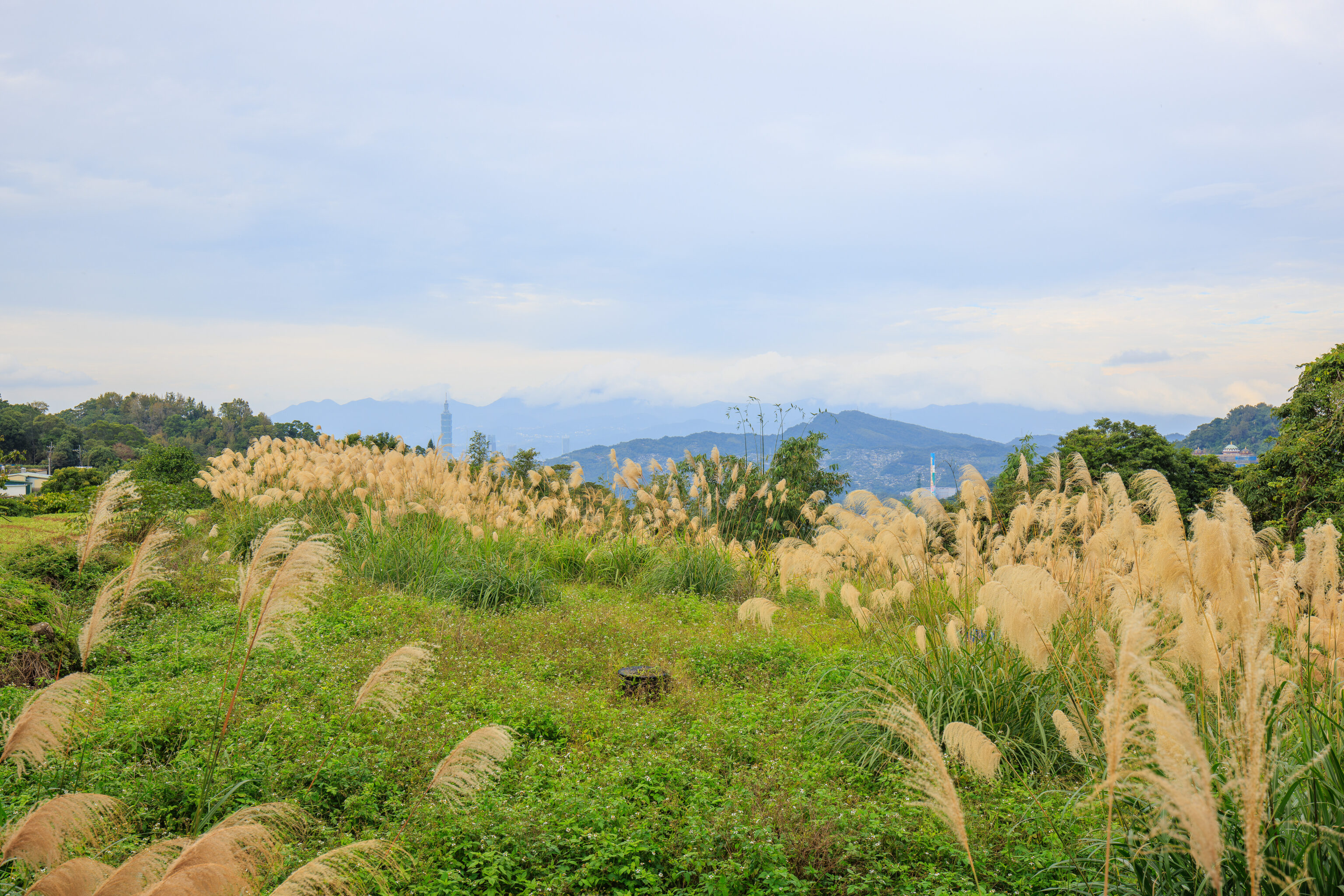
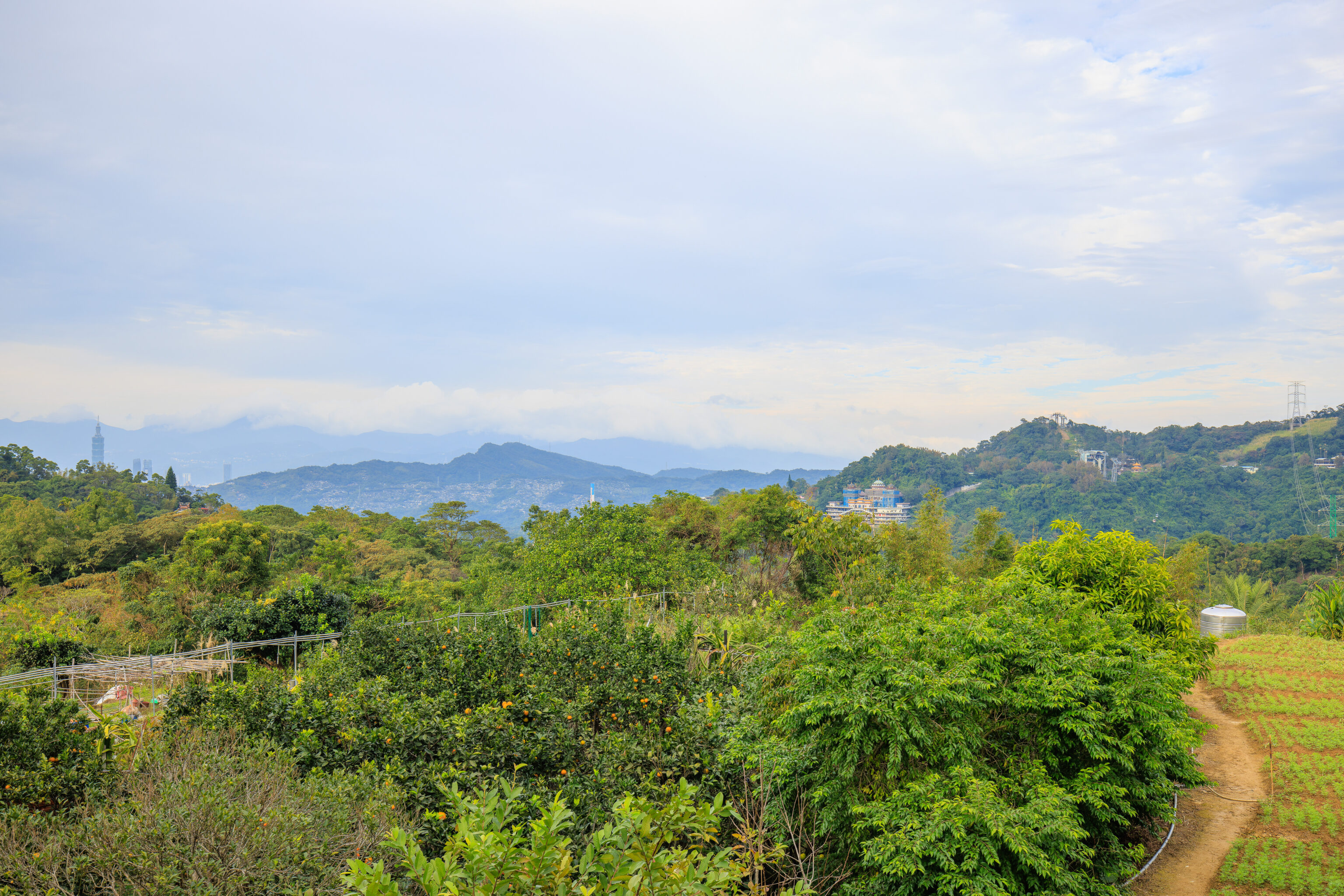
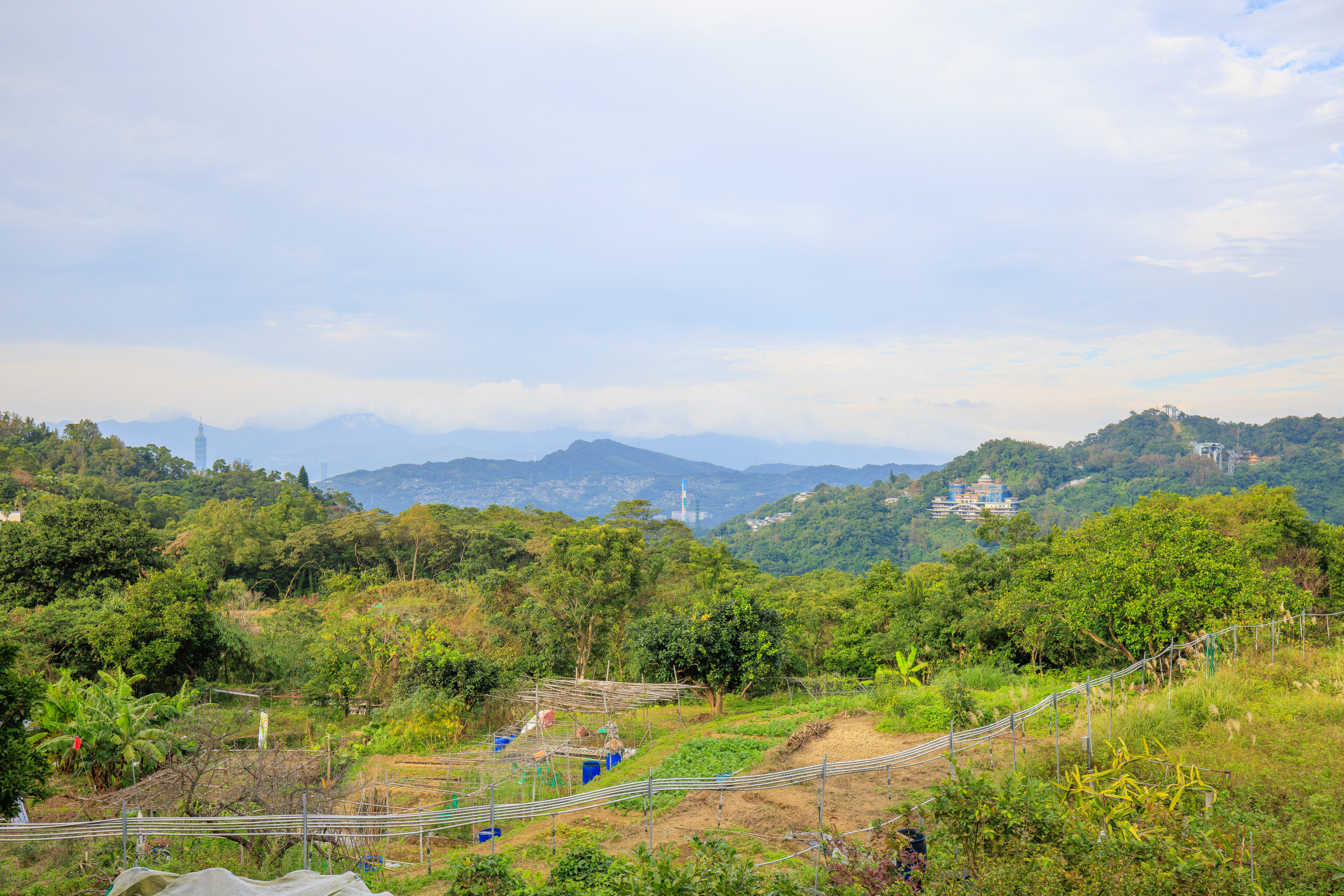
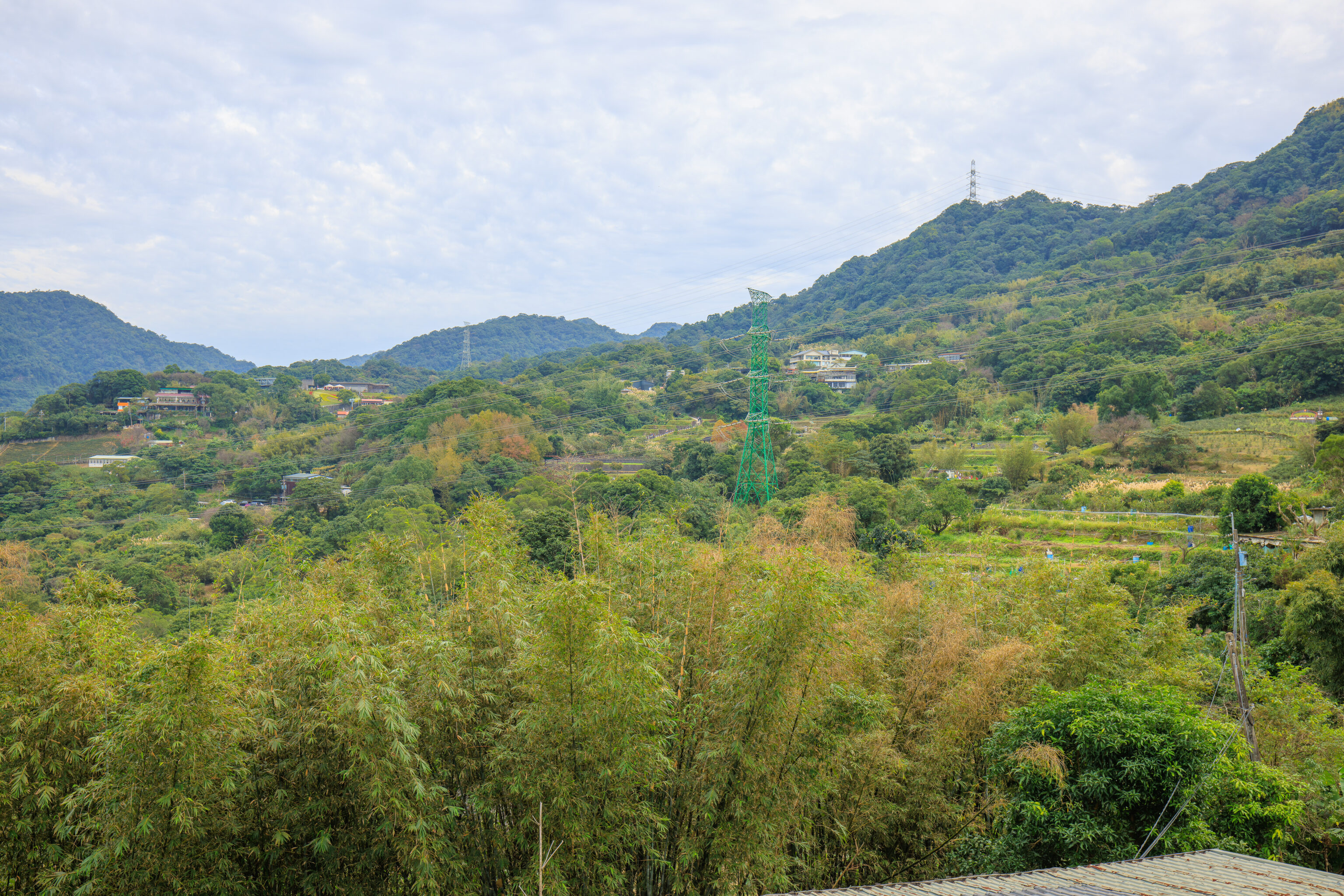
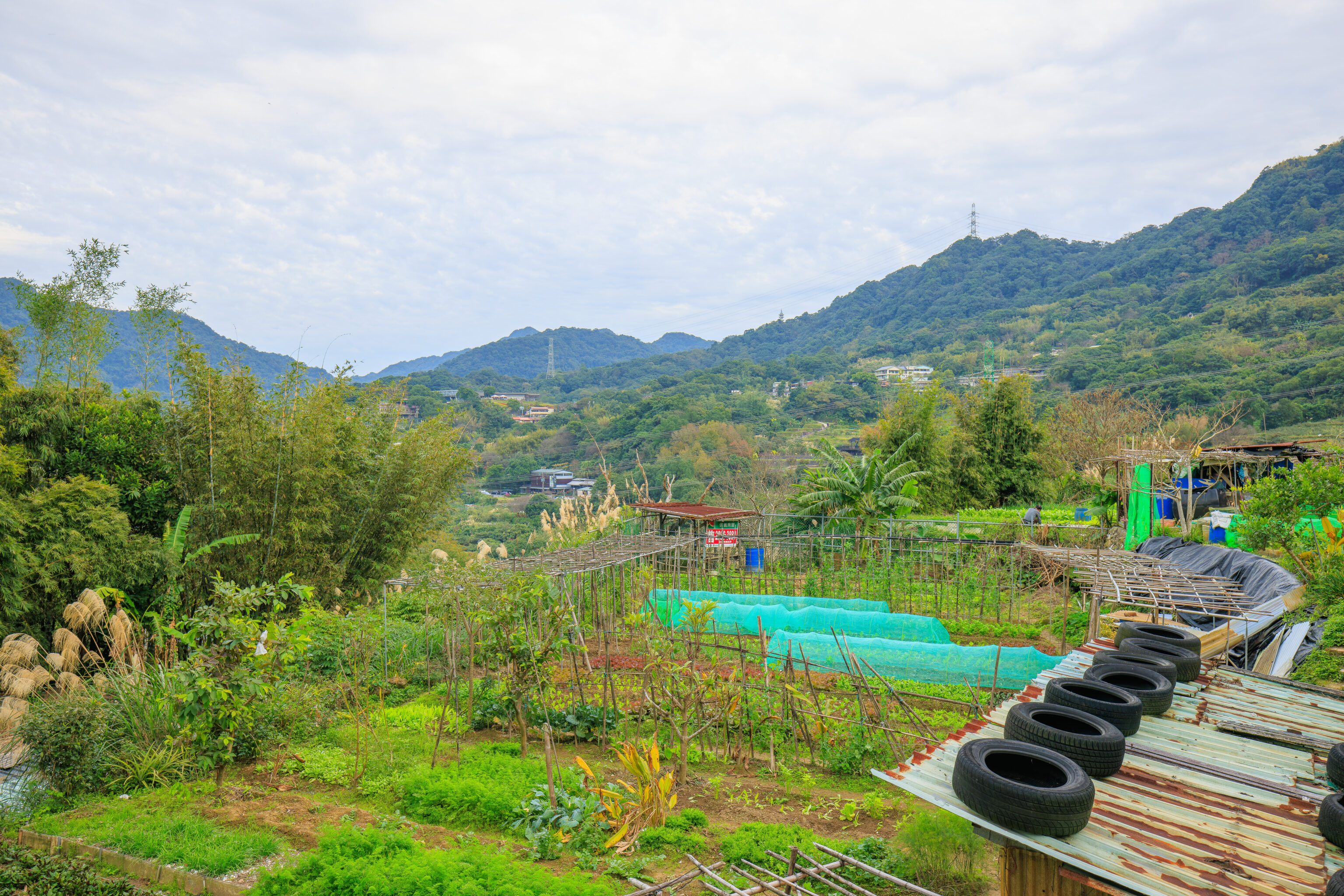
We continued on, walking by various different fields.
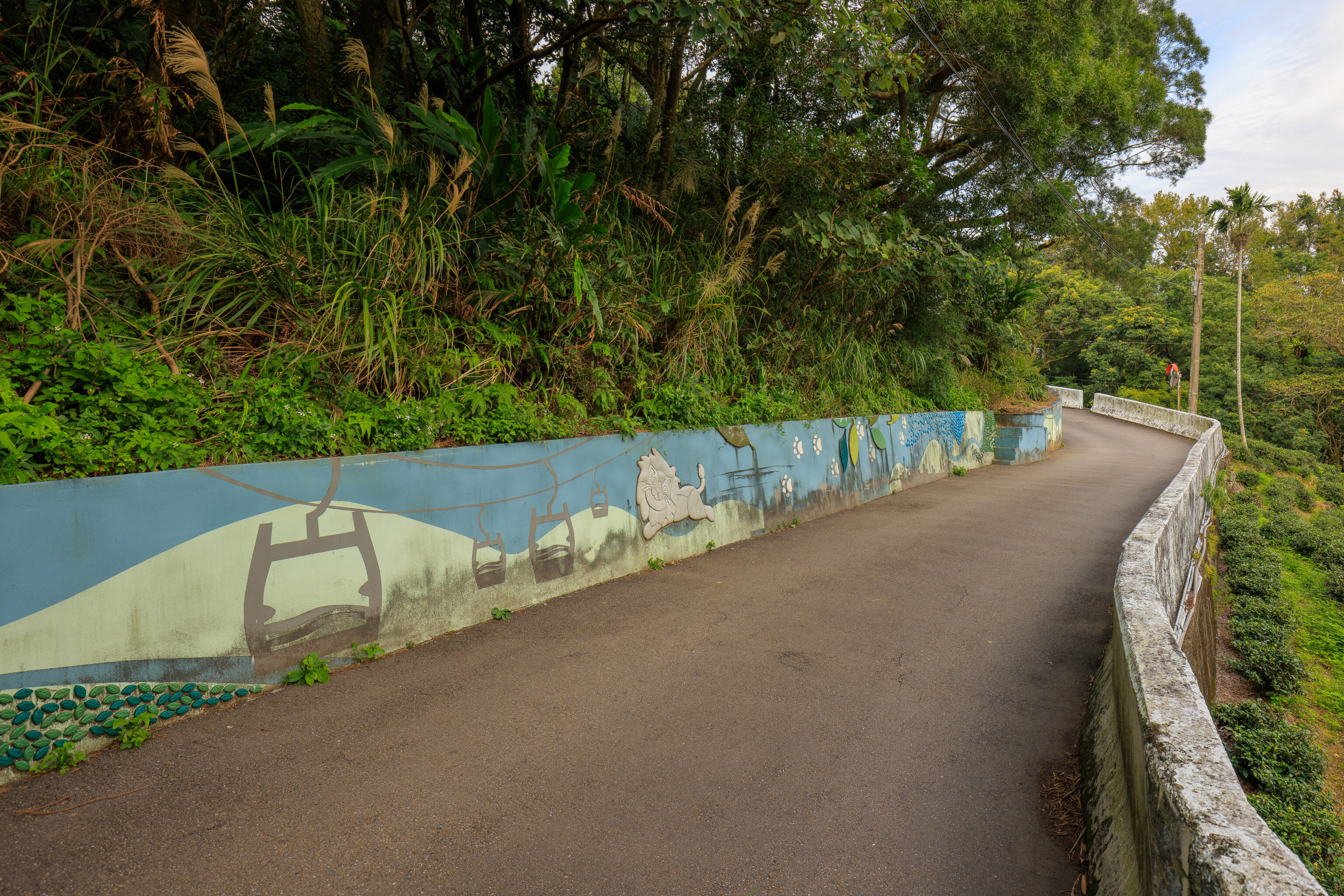
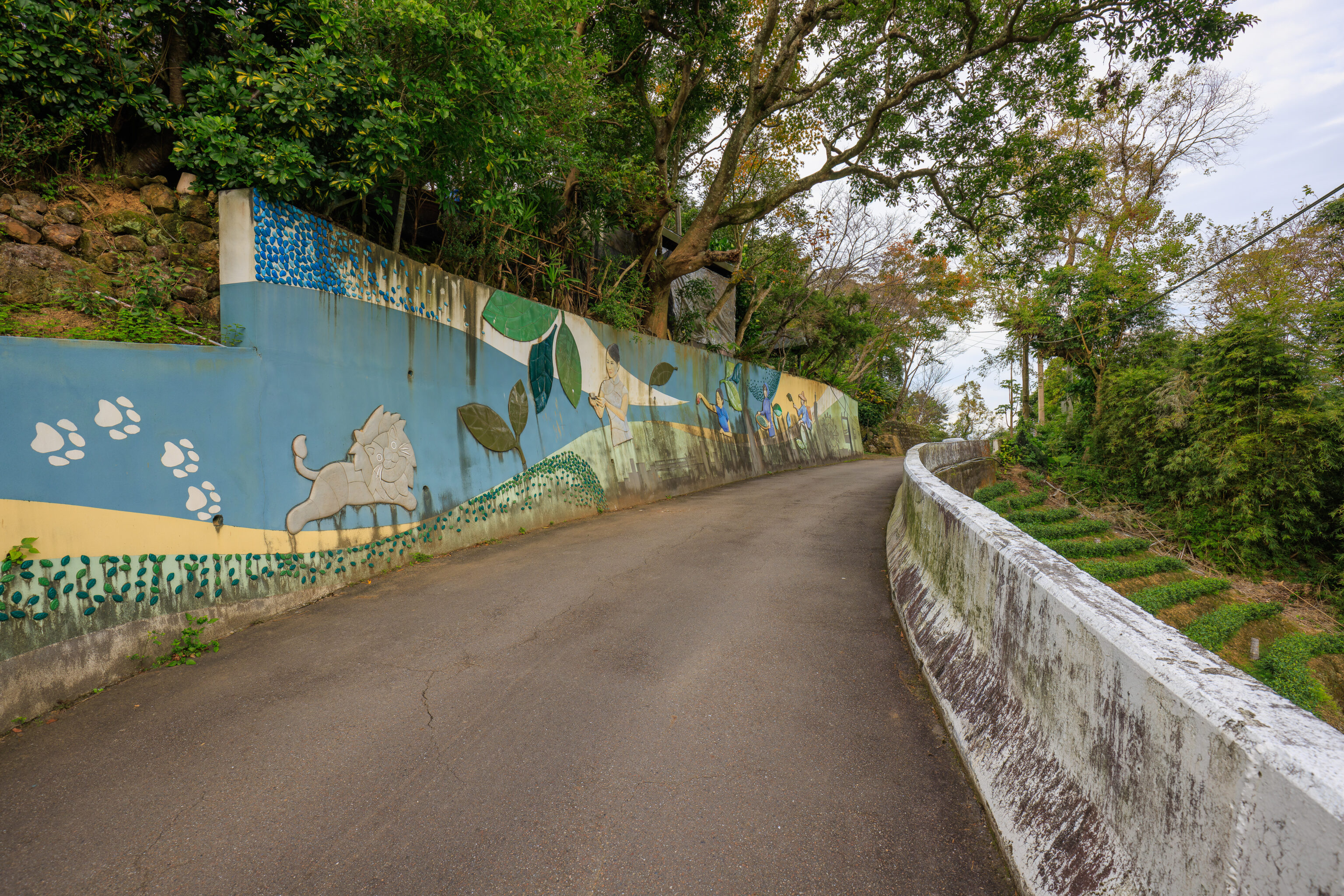
We soon reached the end of the trail. Continuing on to the west along a road, we reached a junction. We went this way, to the north, passing by a long mural drawn on a retaining wall. It depicts various Maokong scenes, including of course, cats! Specifically, they seem to be lions.
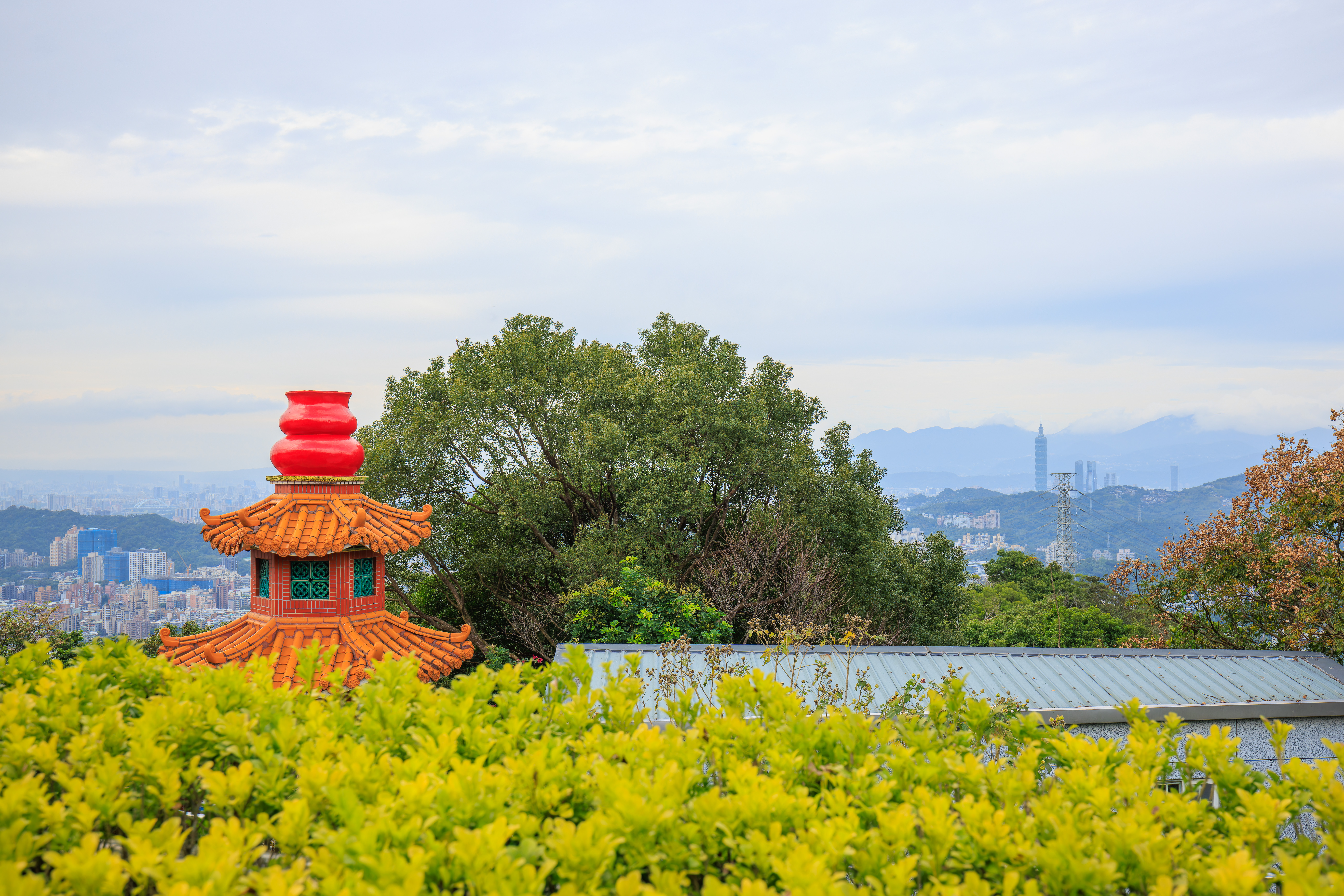
A bit further down the road, we passed through a parking area and soon saw Taipei 101 in the distance along with the top of one of Zhangshan Temple’s buildings.
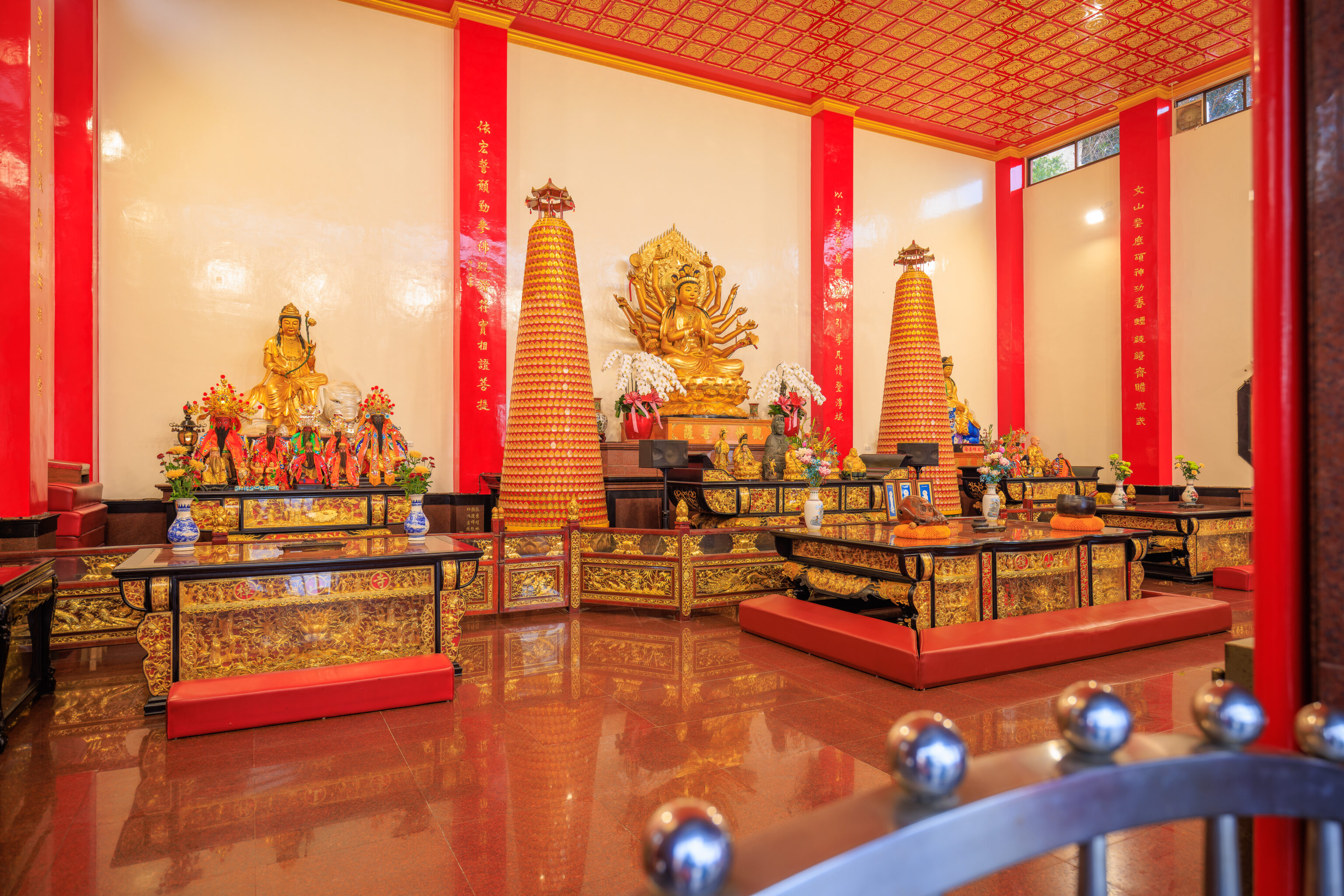
We briefly peered into the temple’s main building.
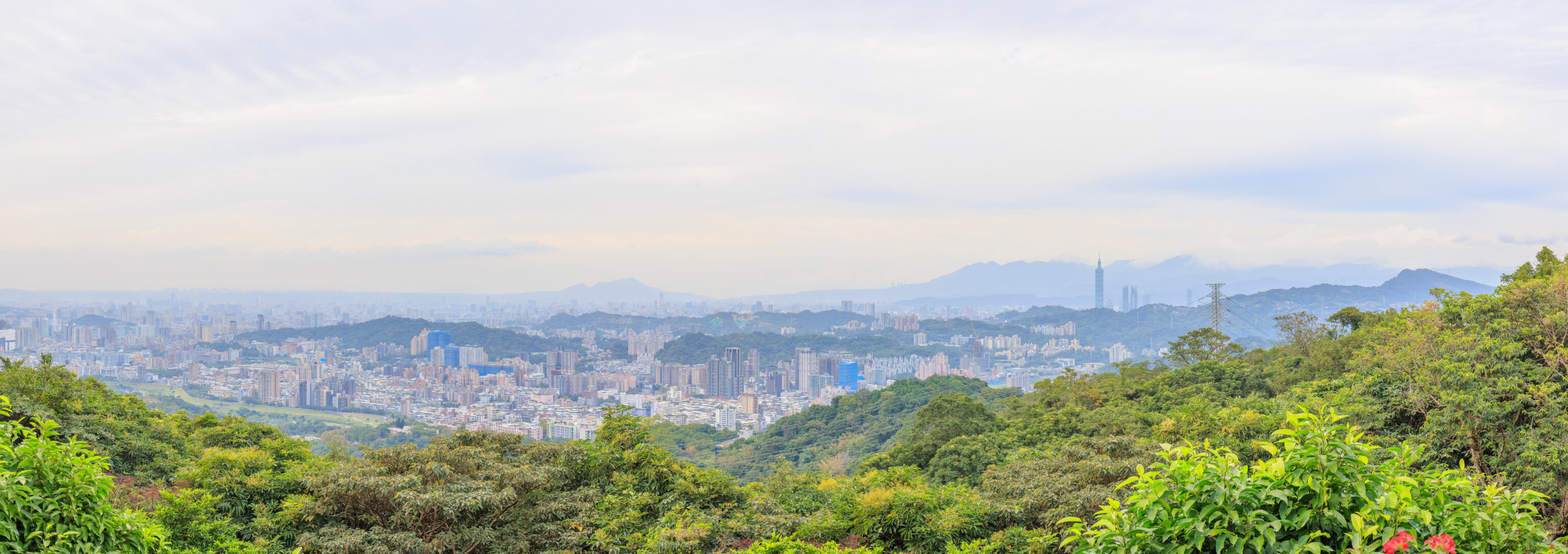
There was a great view of Taipei from the front of the temple.
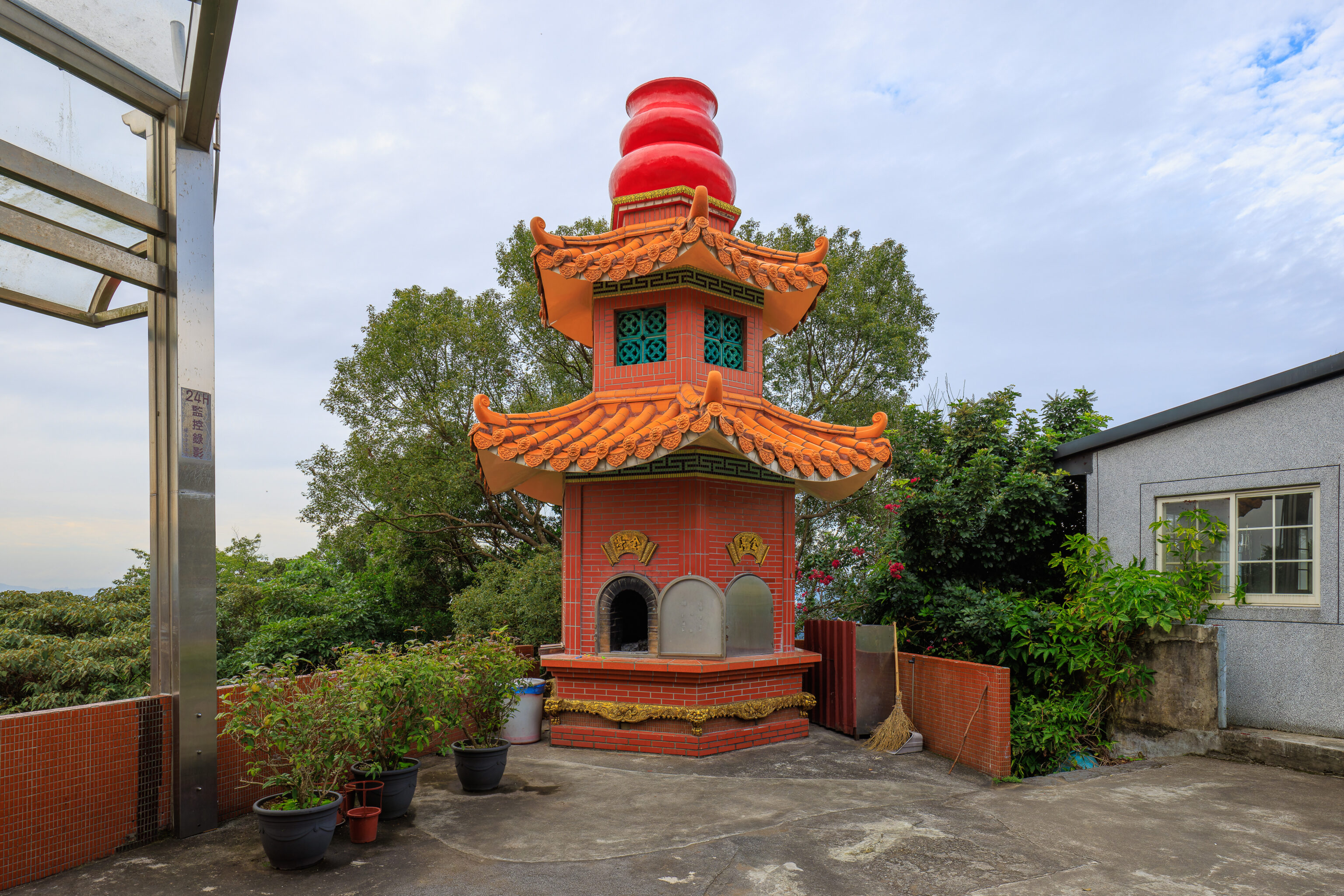
The building that we saw in front of us earlier was apparently an oven, perhaps to burn offerings?
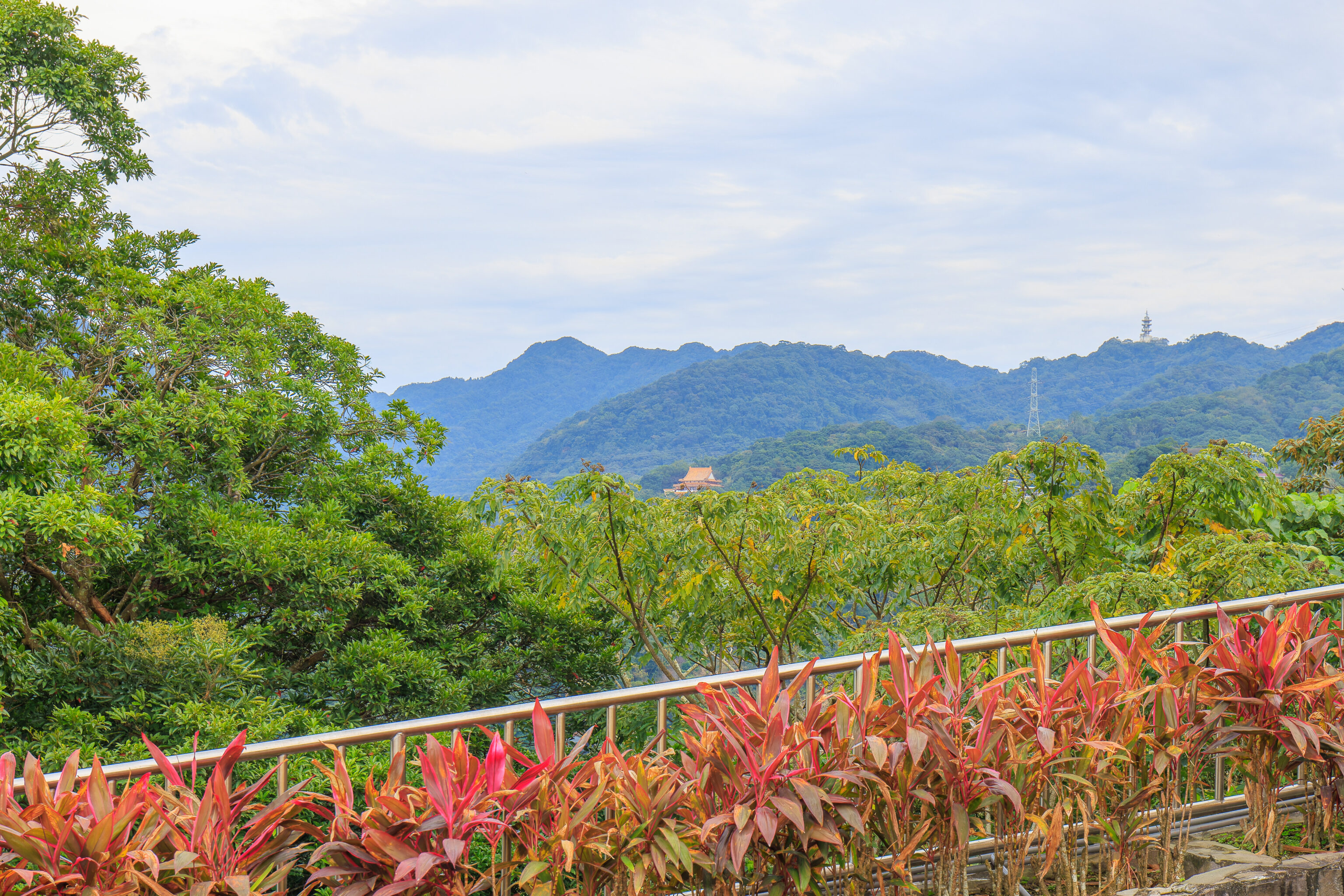
Time to head back! The building in the distance seems to be Tien En Temple, which we walked by earlier in the day. It seems so far away!
We walked to a nearby bus stop, at the intersection next to the Maokong mural that we passed by earlier. Although this area was somewhat remote, the bus stop still had a digital display showing bus arrival times. A little bus did show up when it was supposed to!
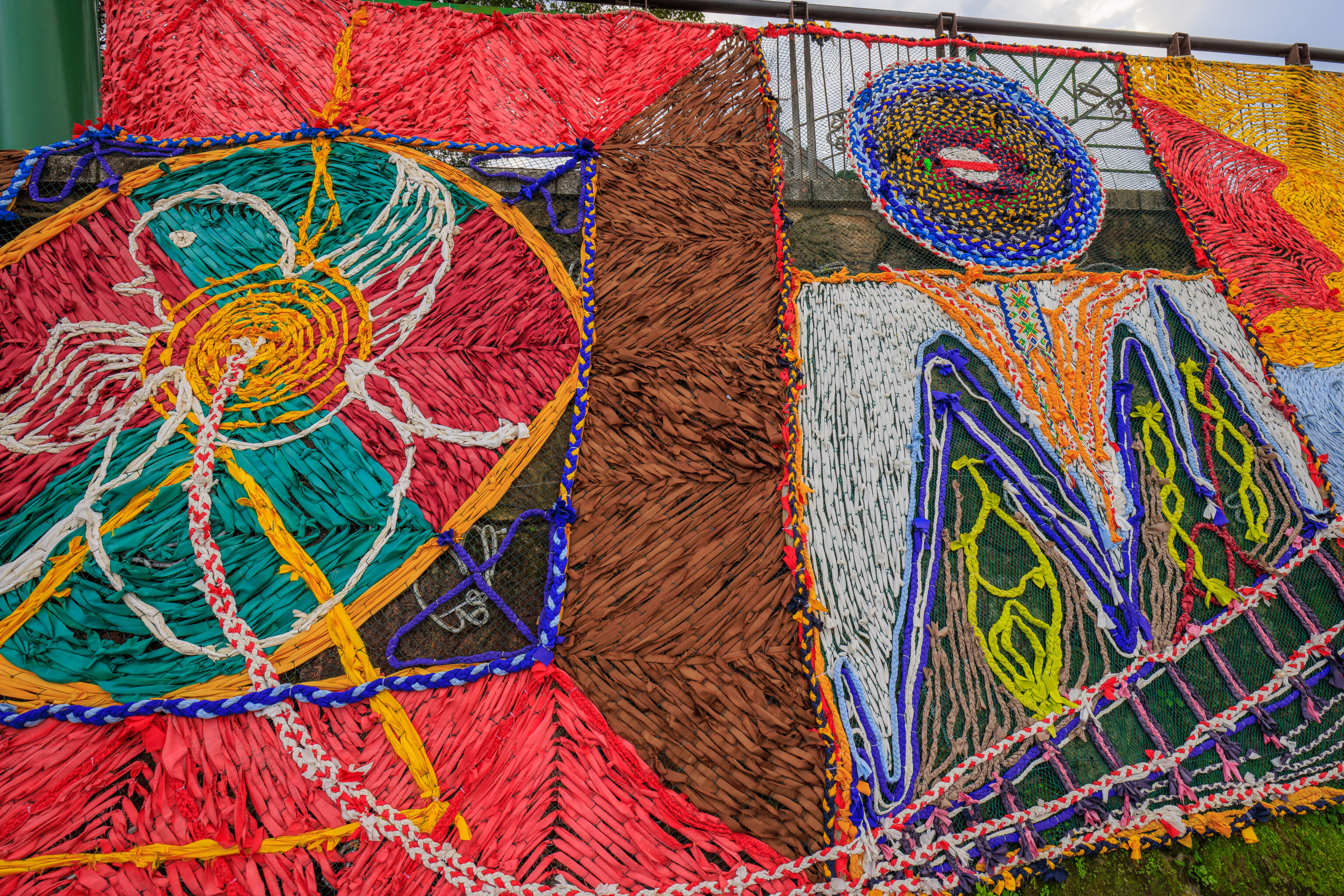
We rode the bus back to the Maokong gondola station. It was significantly faster than walking! This woven mural was by the bus stop where we got off.
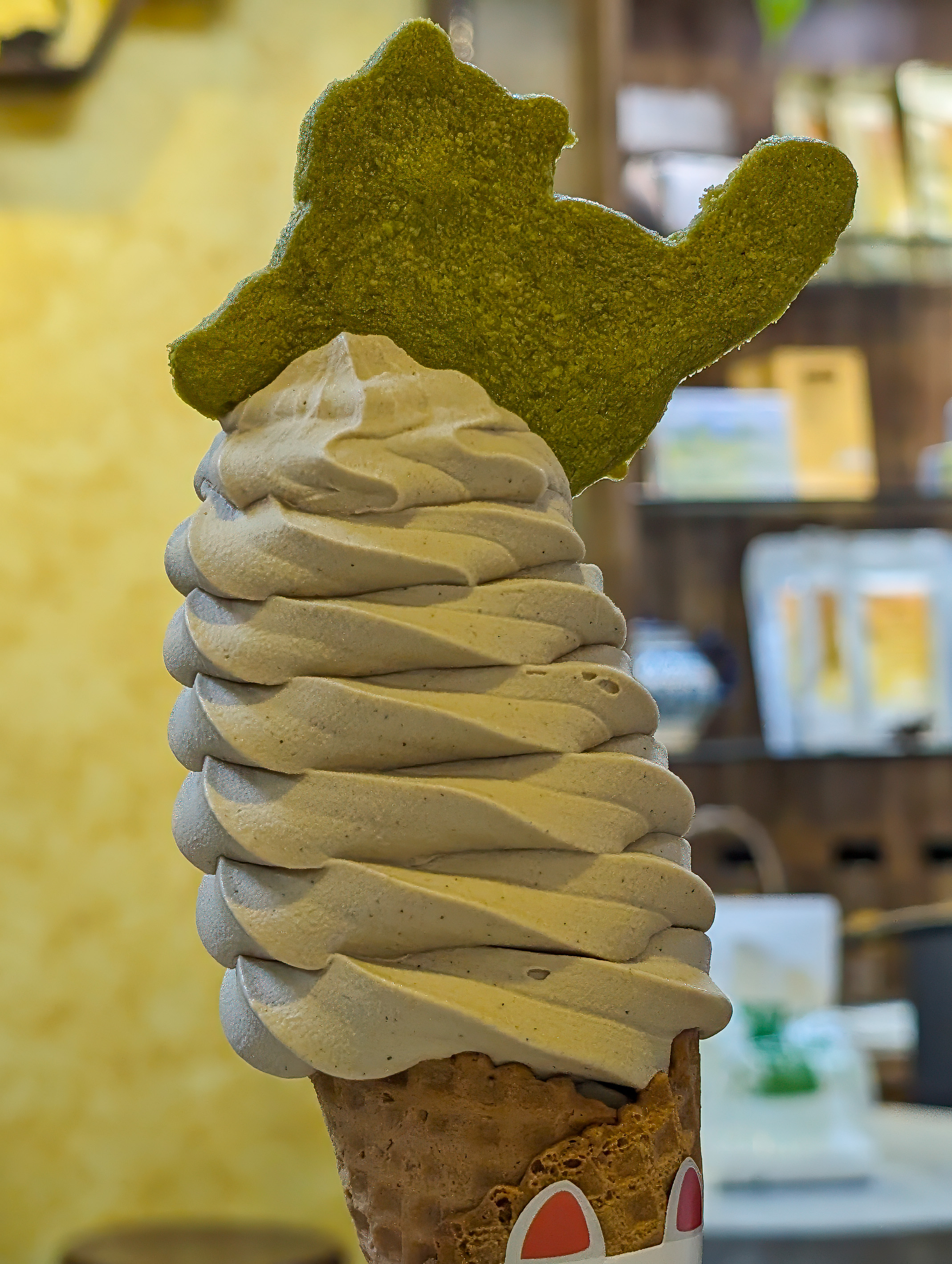
We decided to check out some of the shops near the station. We got a tea soft serve from 貓空暘臺 Maokong Yang Tai (Maokong Balcony). It came with a cat shaped cookie and the paper wrapper around the cone had a cat face including ears!
We didn’t buy any more tea at these shops as we already had bought quite a bit earlier!
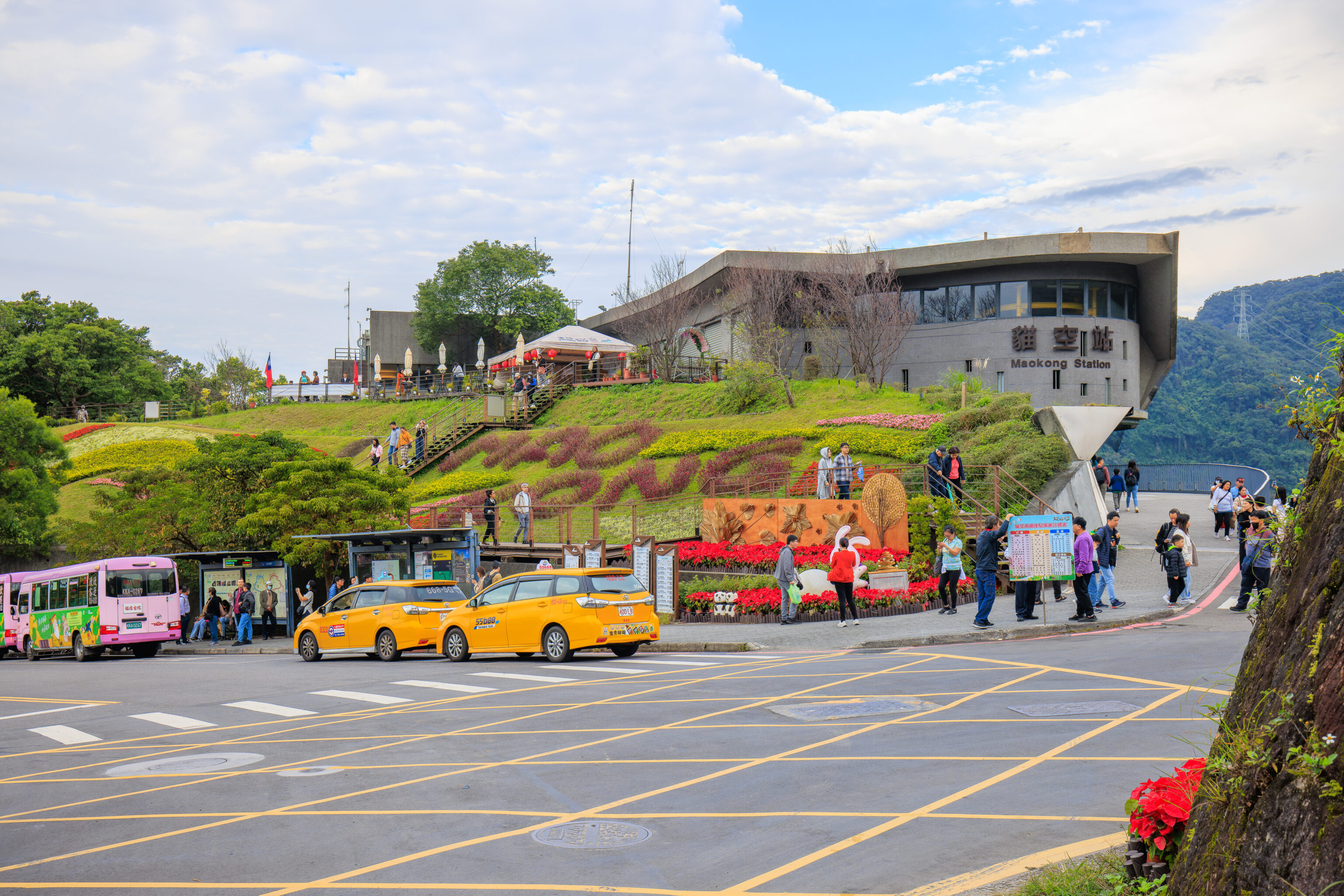
We crossed the street to return to the gondola station.
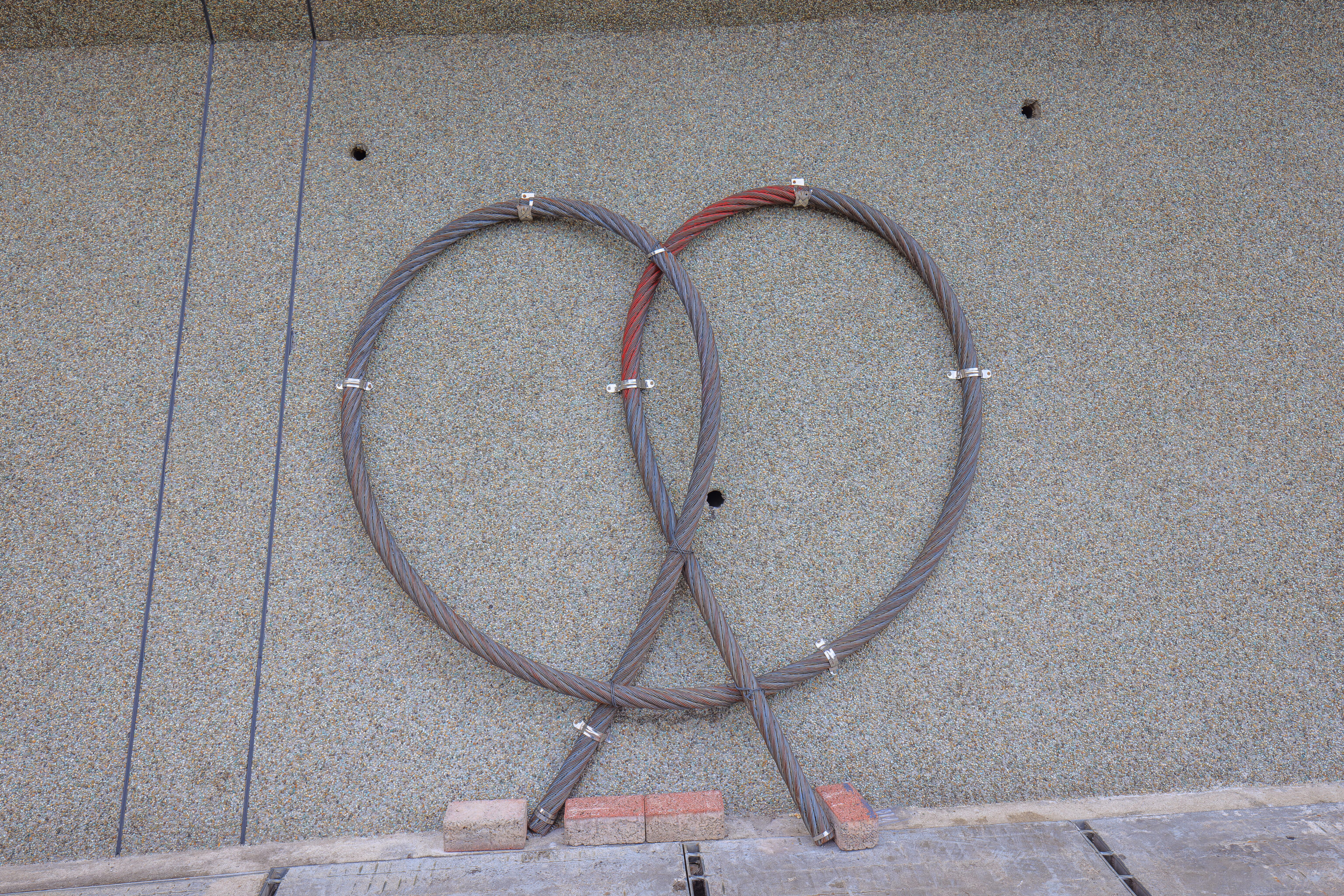
This is presumably one of the gondola cables shaped into a pretzel?
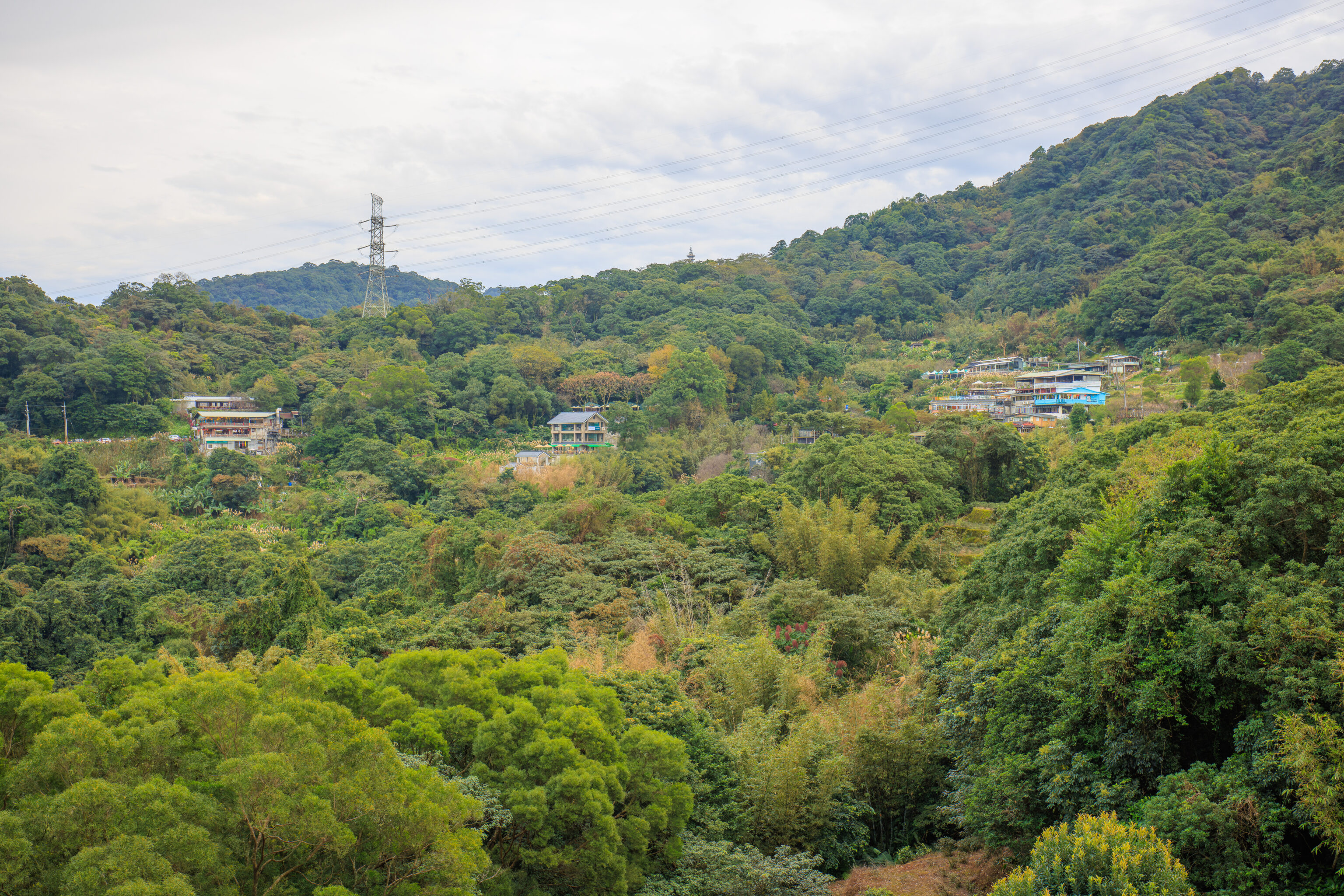
We enjoyed the view while in the queue to get on the gondola. The building on the right is where we had lunch, dessert, and bought tea earlier!
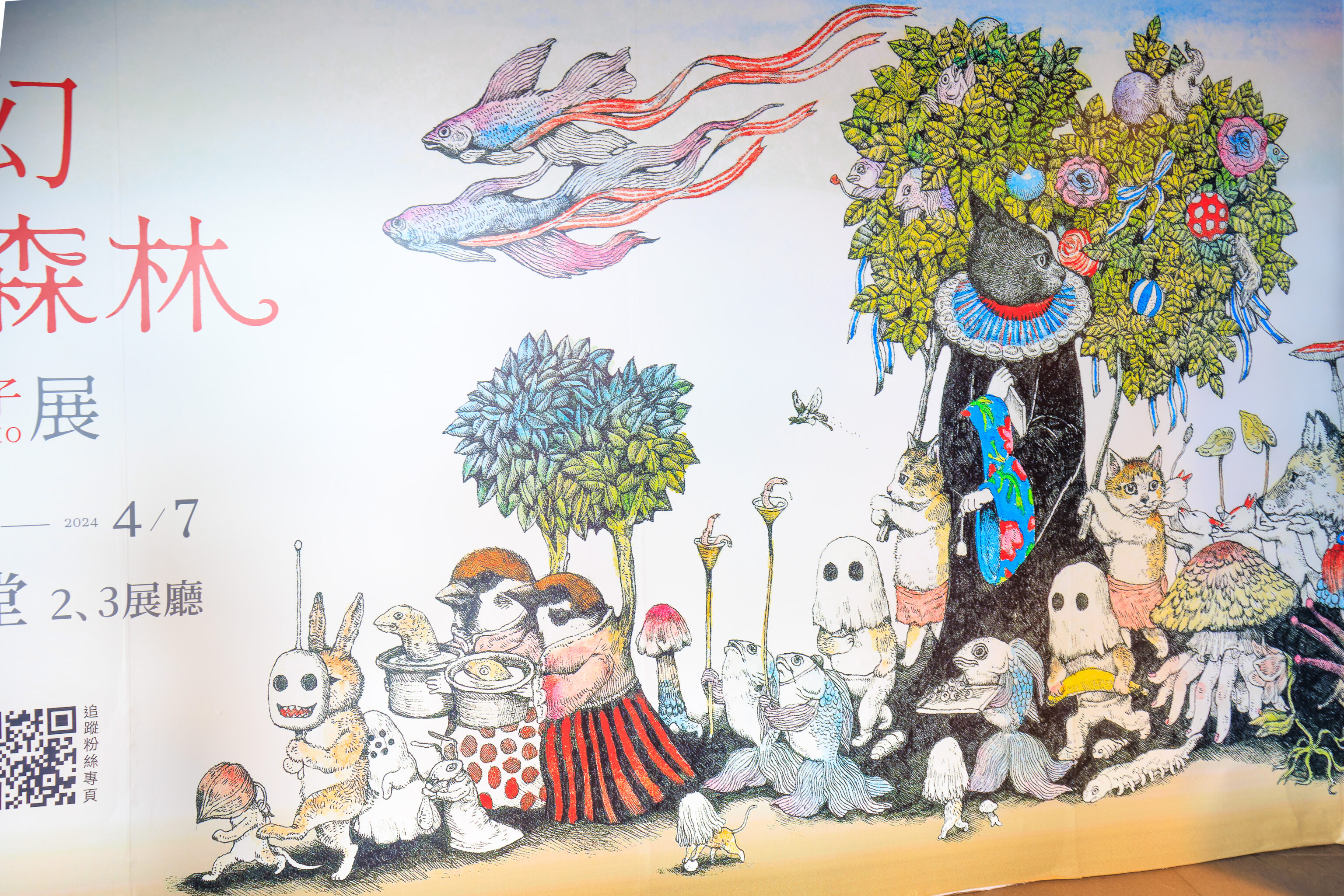
This drawing caught our attention because of the male and female Eurasian Tree Sparrows! The males and females of this species look rather similar to male House Sparrows which are an invasive species back home in the US.
After boarding a gondola, we took it all the way back down to the Taipei Zoo station at the bottom.
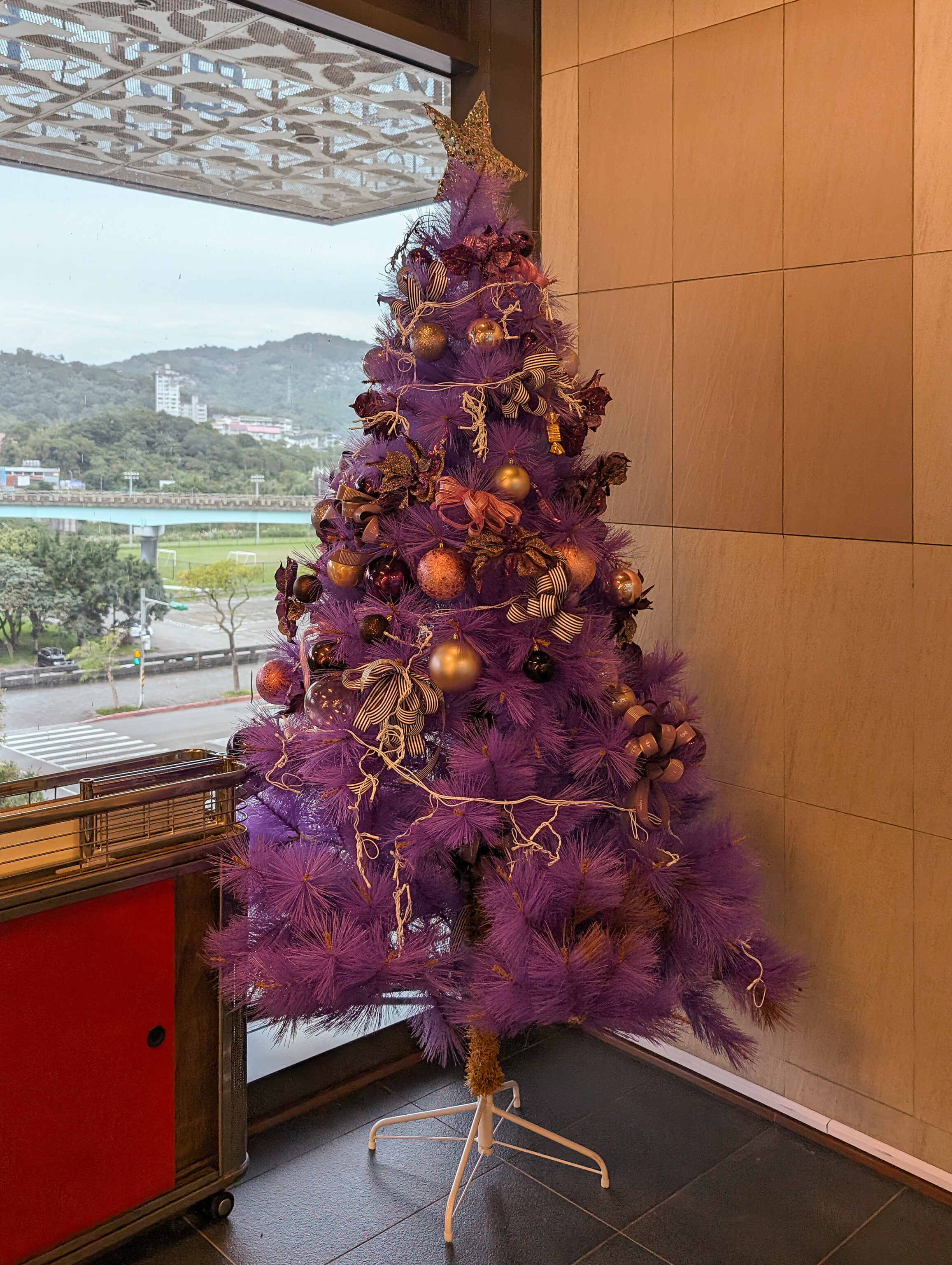
We noticed a purple Christmas tree in the gondola station! A bit odd.
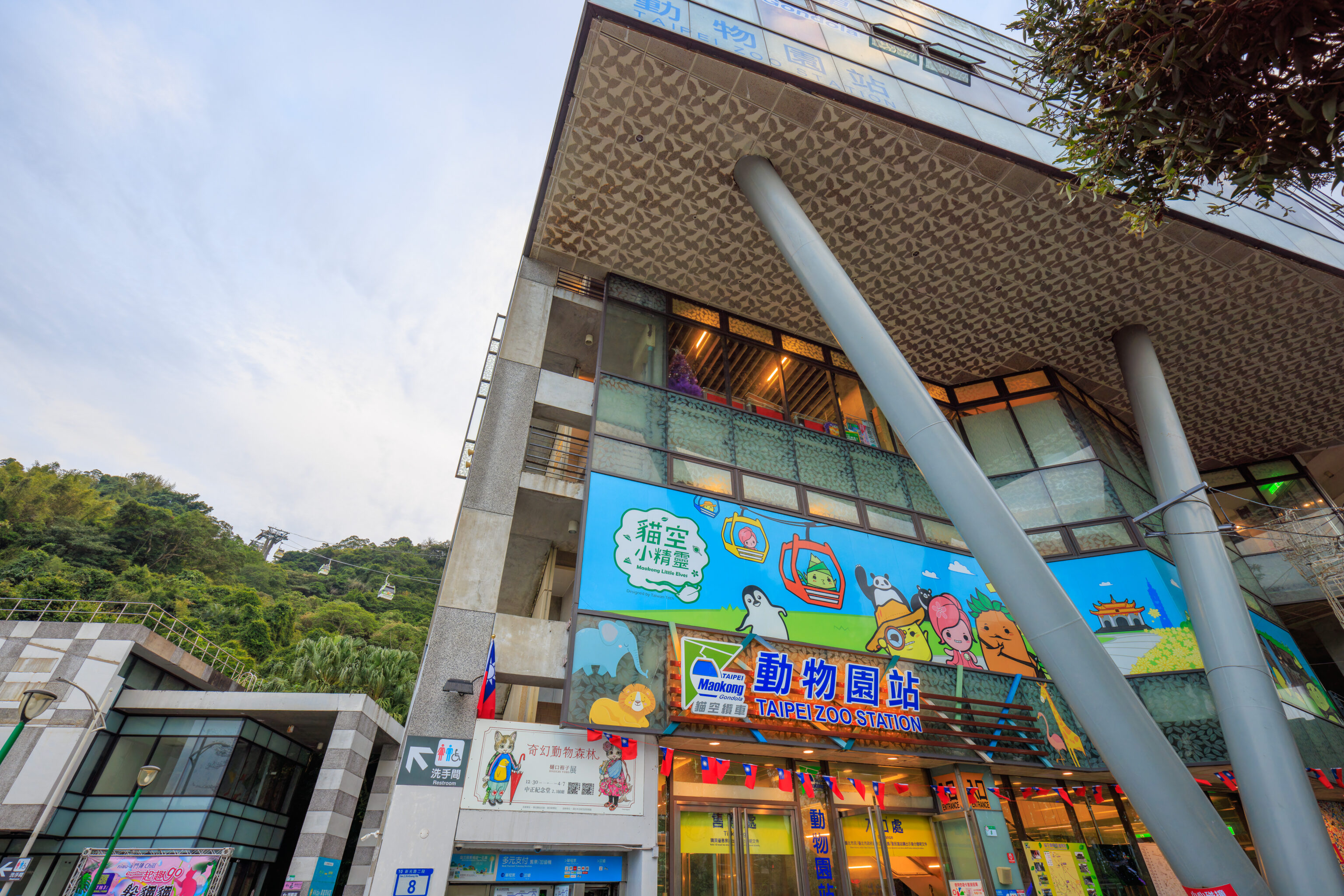
After getting back down to ground level, we walked back to the MRT station to return to the Grand Hyatt Taipei to take a break before heading out for dinner.
Dinner
We met up with family to visit the 寧夏夜市 Ningxia Night Market. We headed over by MRT. Unfortunately, it was raining when we arrived, definitely not ideal conditions.
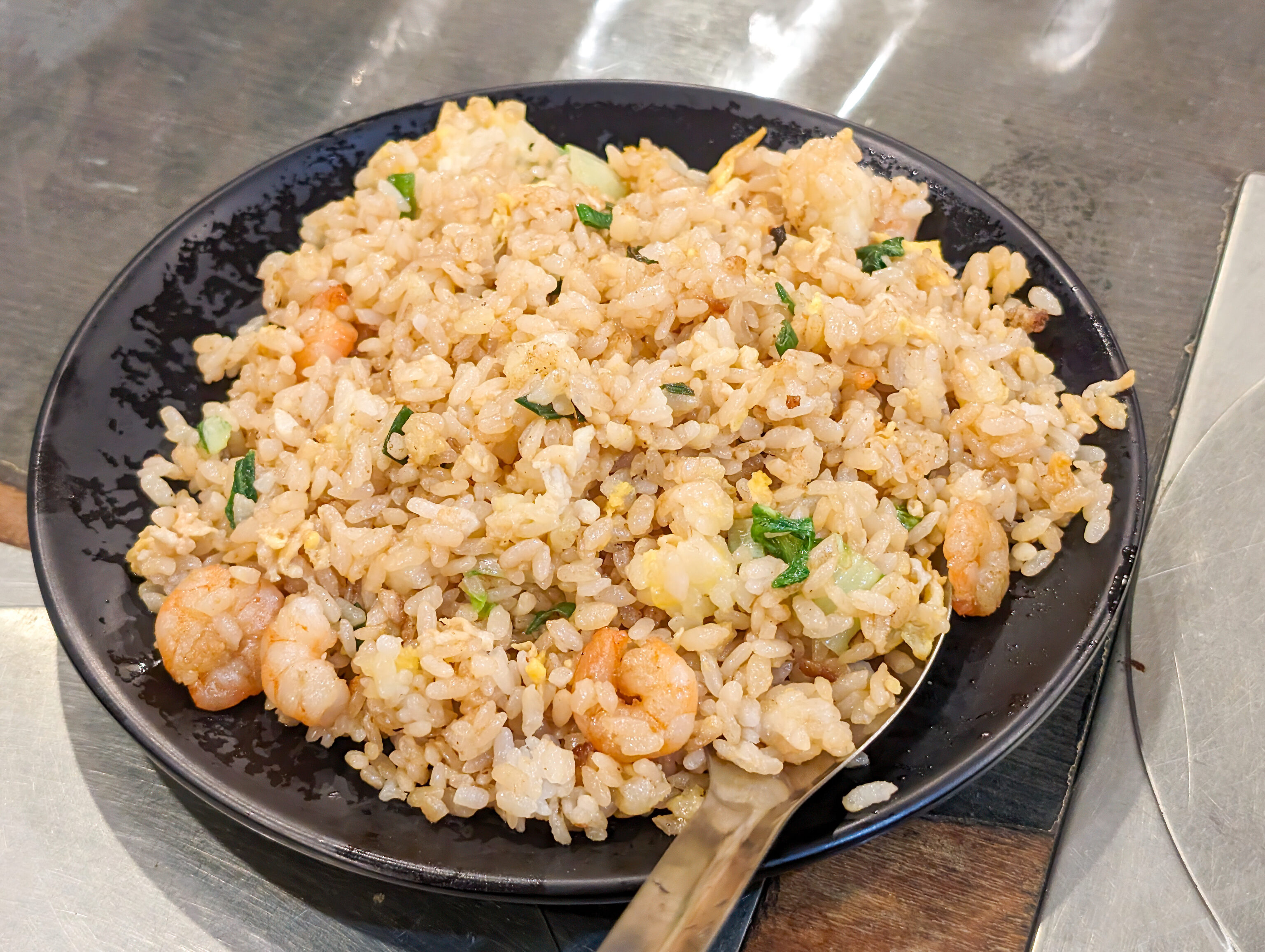
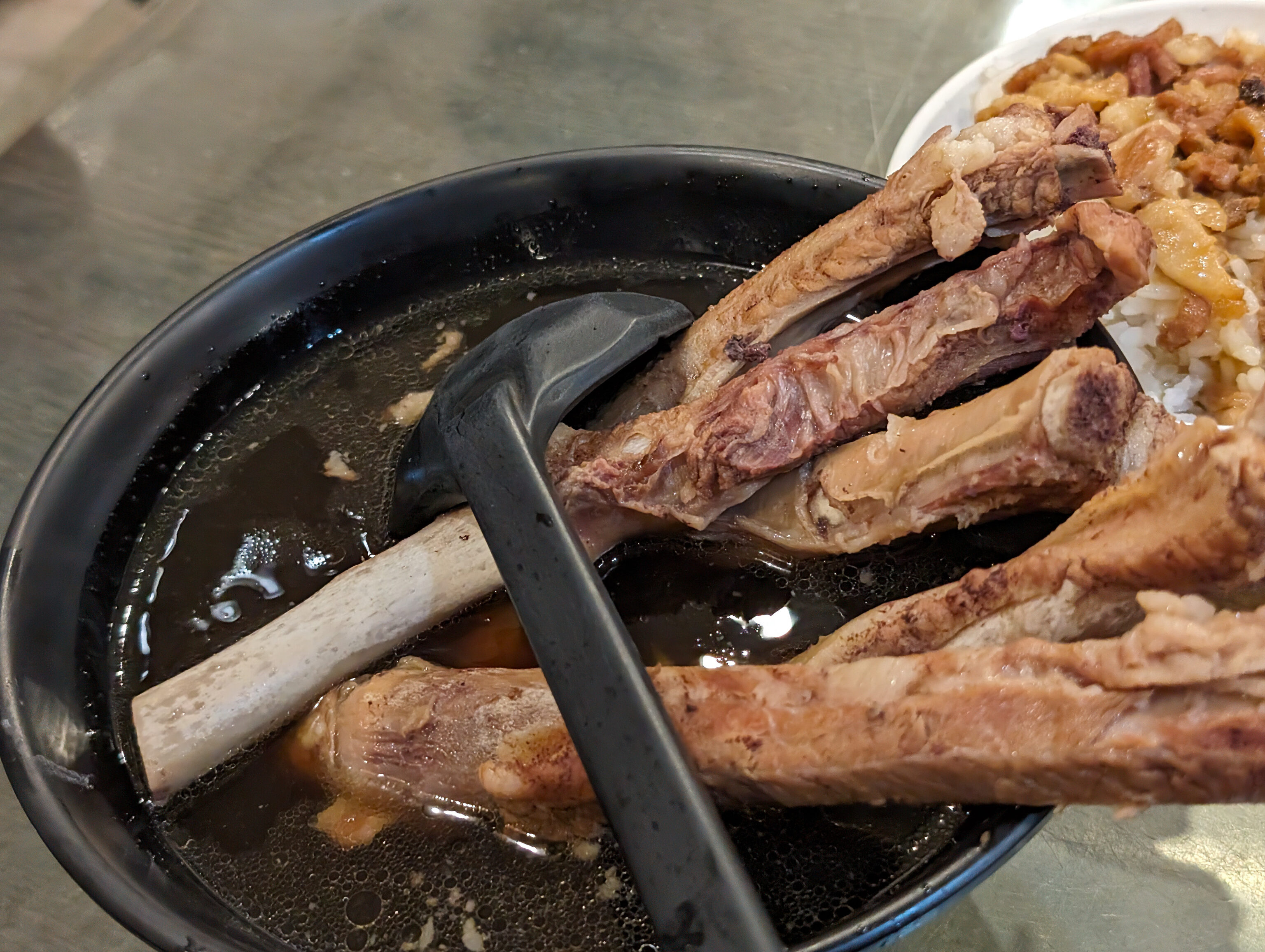
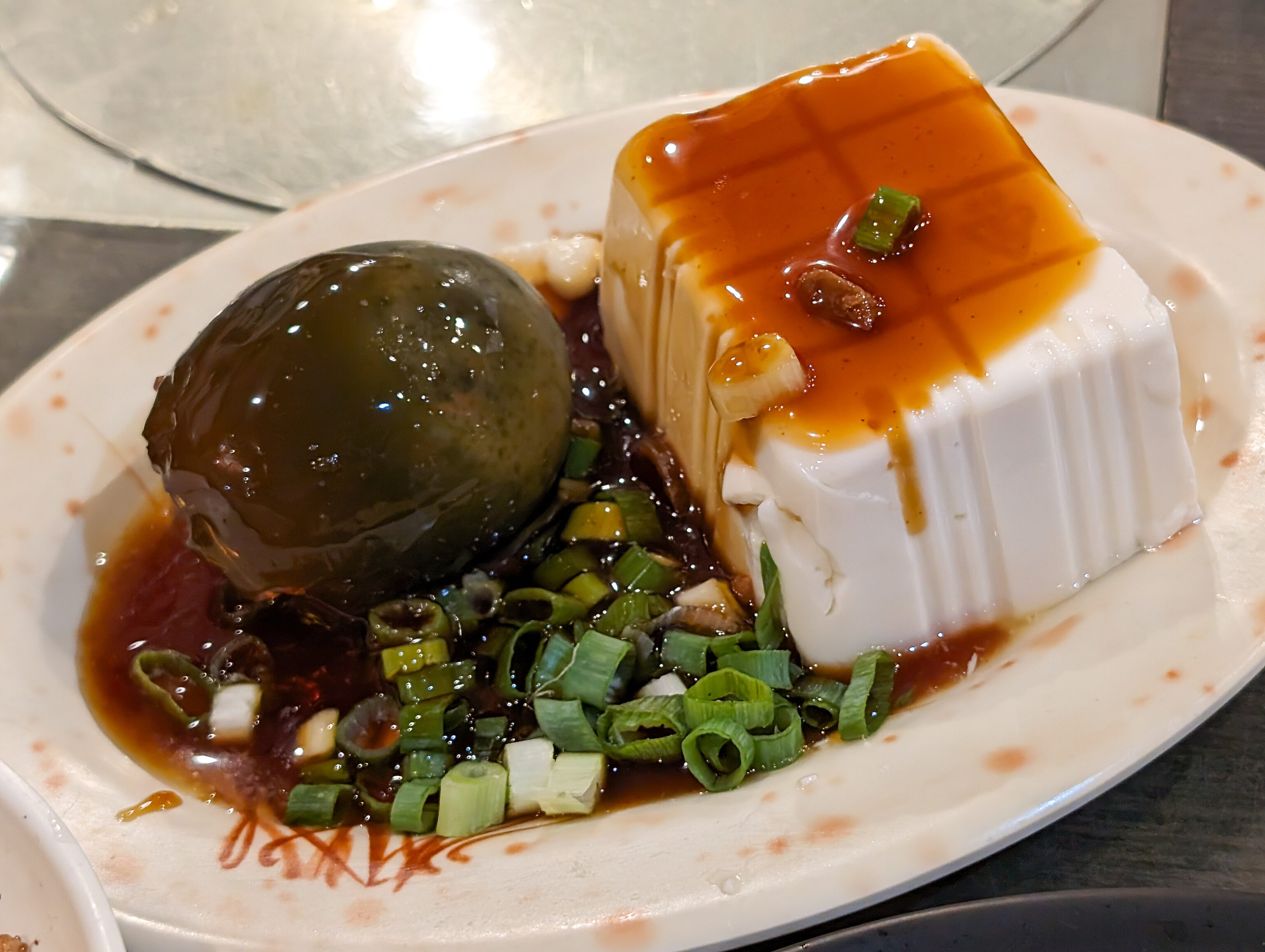
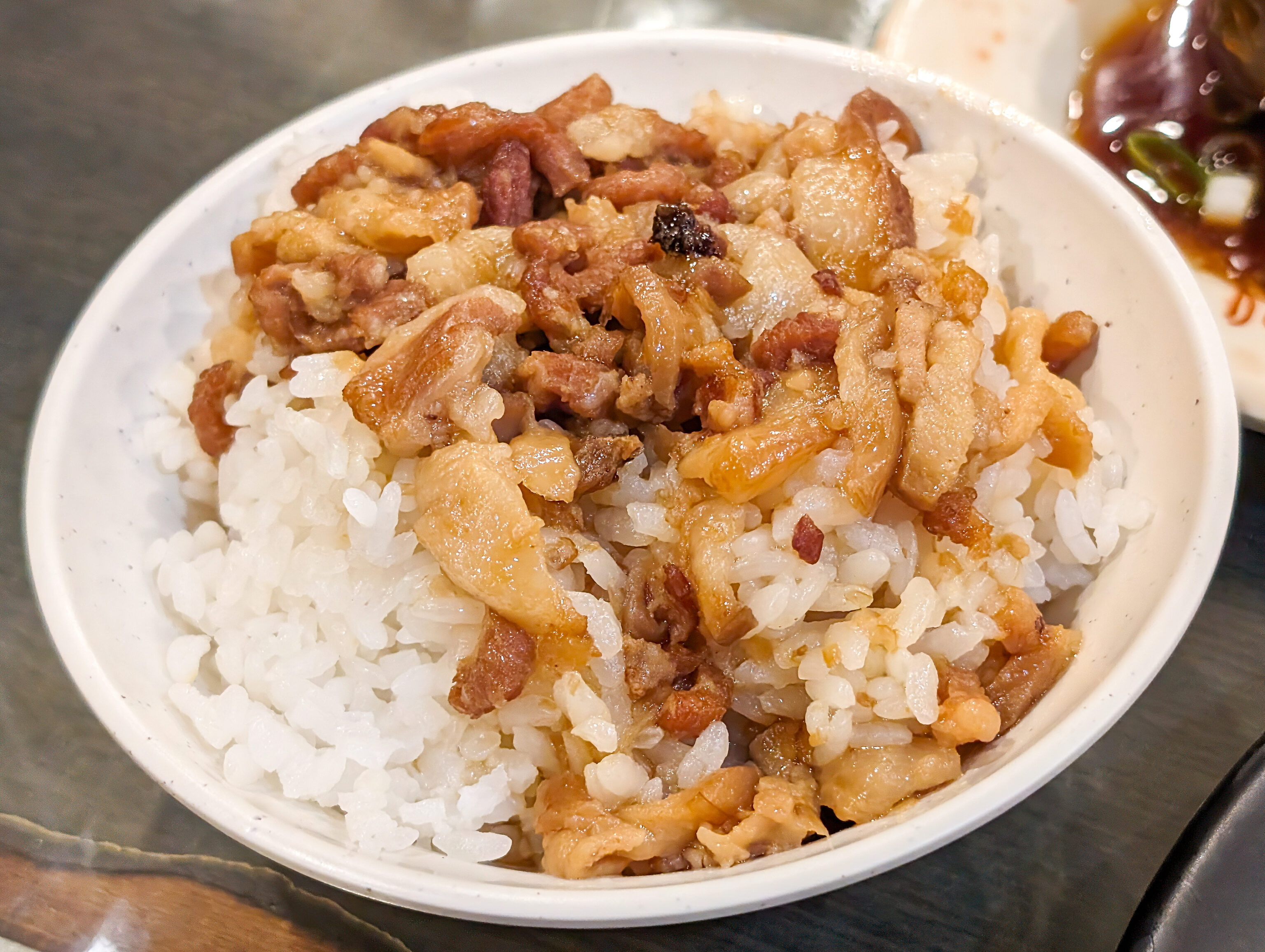
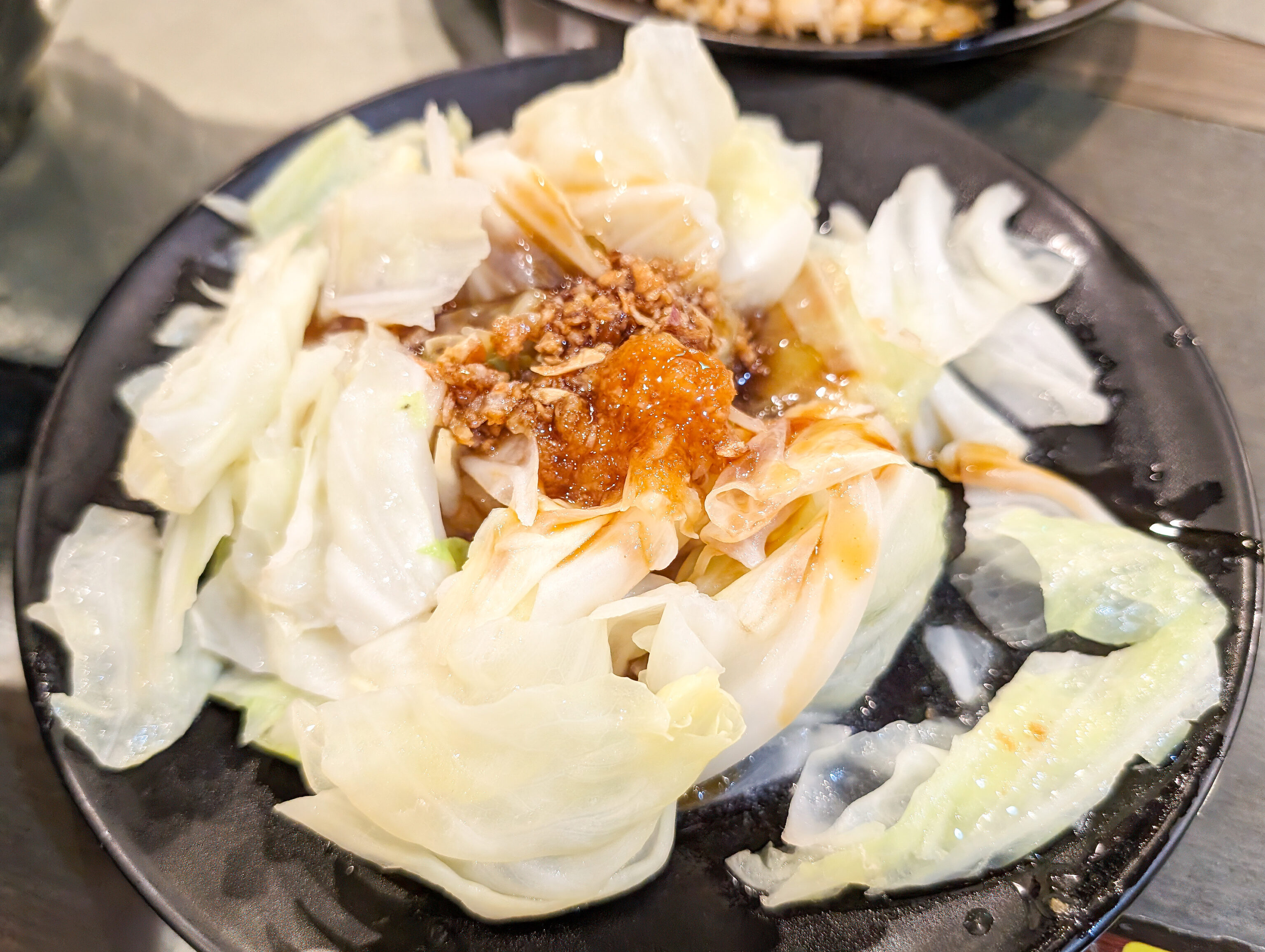
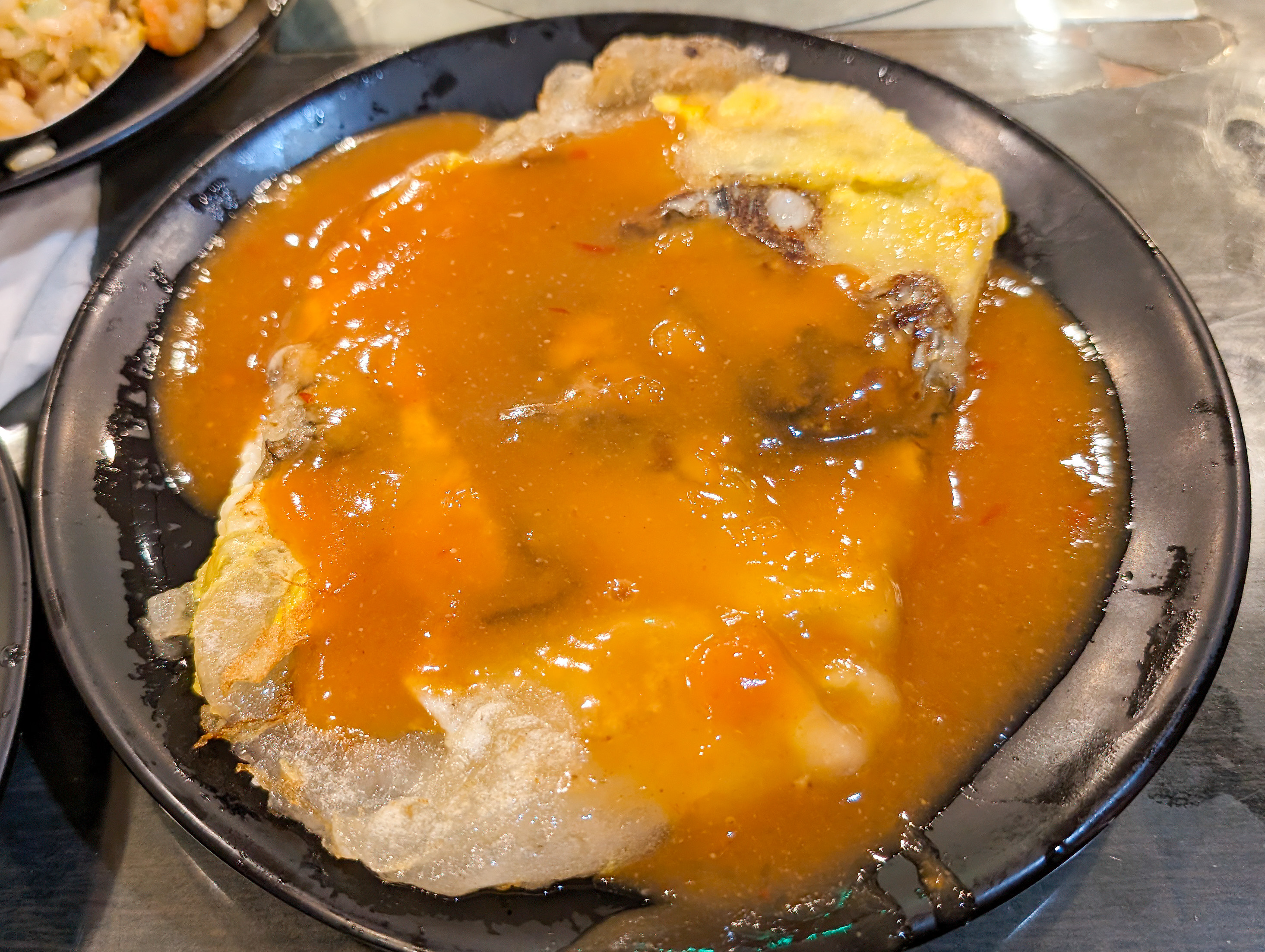
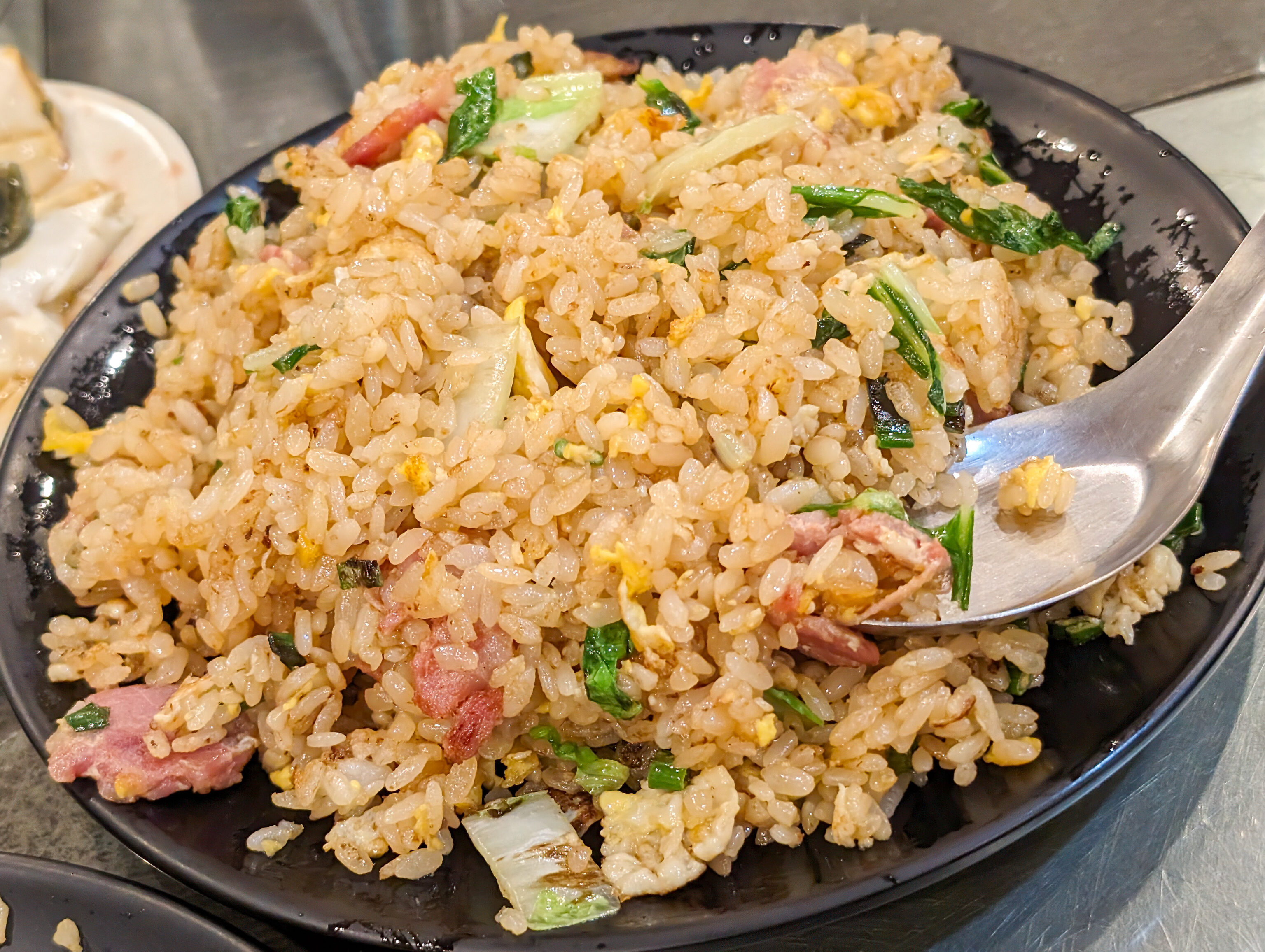
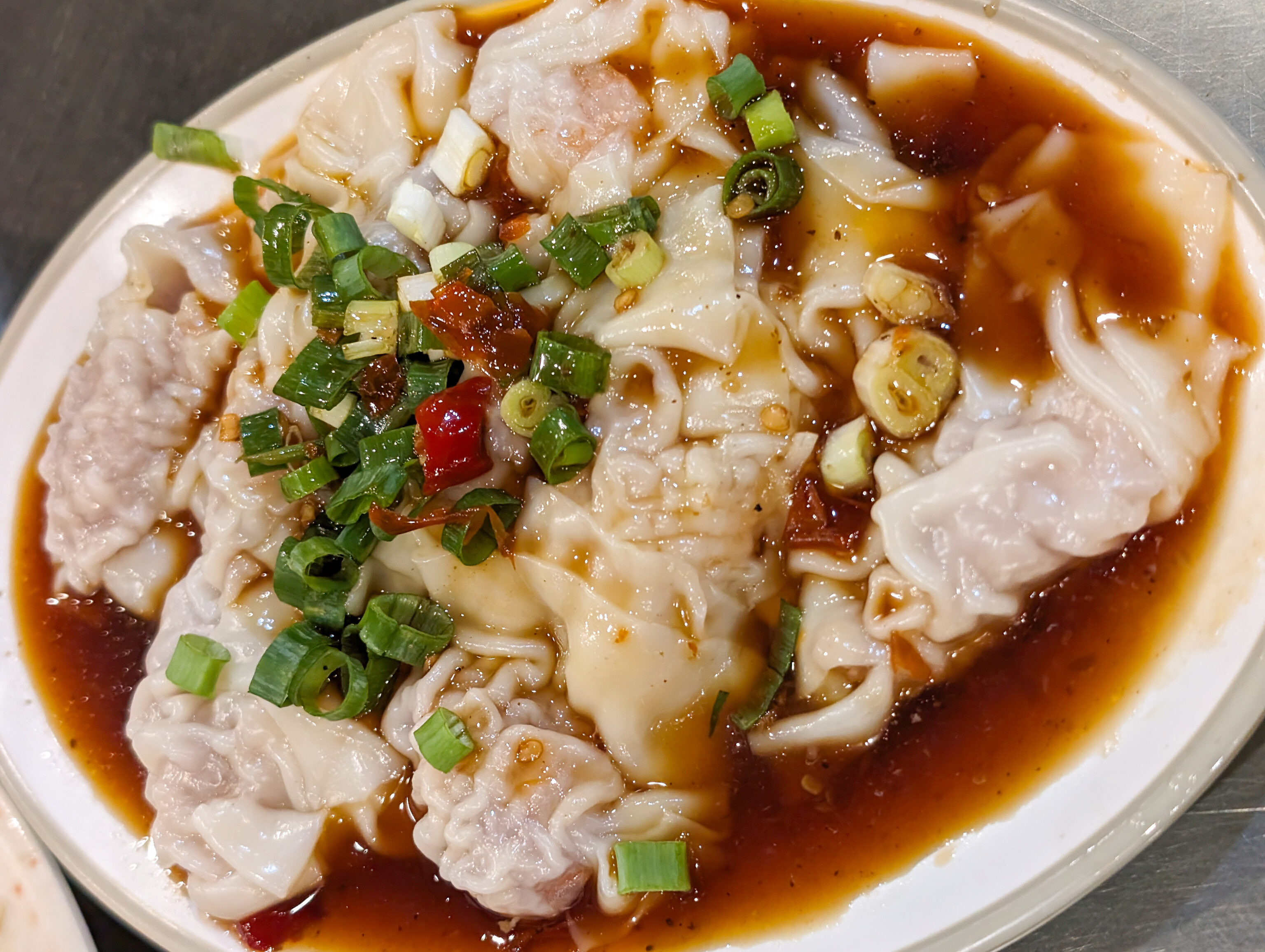
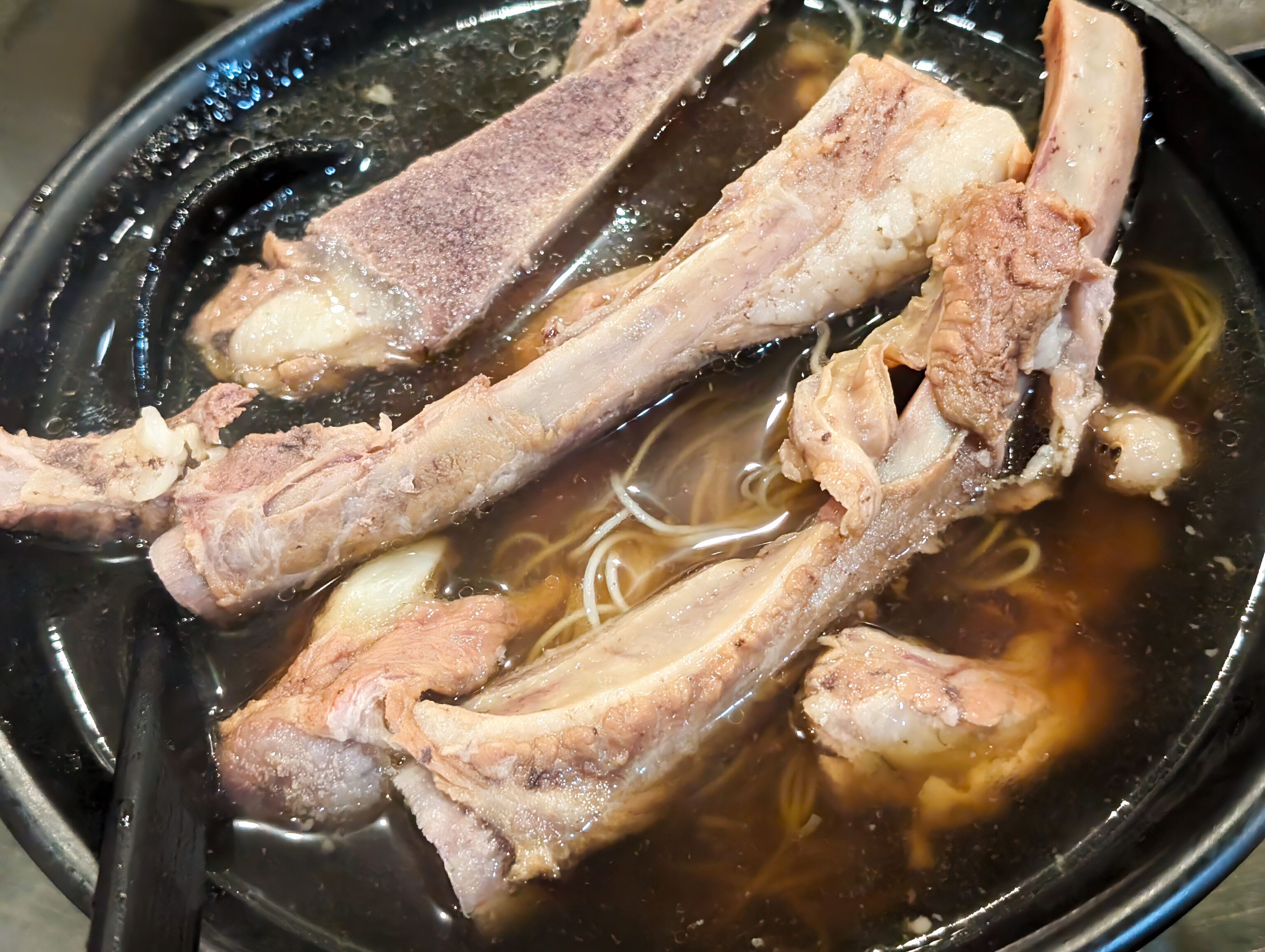
We had a variety of dishes from one of the restaurants next to the night market. Some of the items were good but most are probably best described as being just average. The ribs were probably the worst of all the items.
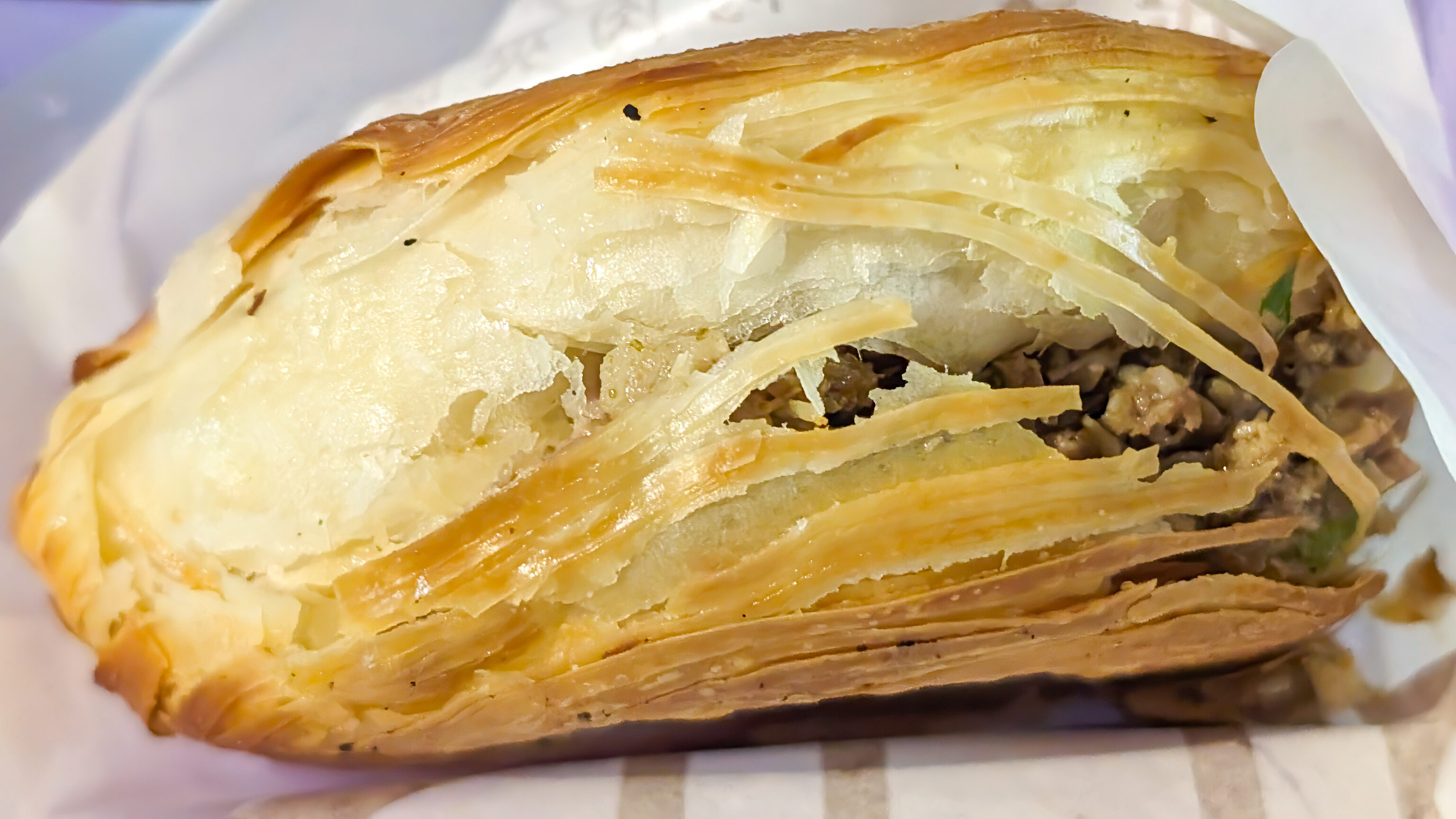
We did end up getting something from the actual night market, though we were already pretty full so didn’t get anything else.
Footnotes
- https://www.chih-nan-temple.org/?act=supplies&key=cifuka ↩︎
- https://www.chih-nan-temple.org/?act=menuinfo&ml_id=20221018023&cmd=detail&mi_id=20221023005 ↩︎
- https://www.chih-nan-temple.org/?act=menuinfo&ml_id=20221018023&cmd=detail&mi_id=20221023012W ↩︎
- https://www.chih-nan-temple.org/?act=menuinfo&ml_id=20230204001&cmd=detail&mi_id=20230204003 ↩︎
- https://www.chih-nan-temple.org/?act=menuinfo&ml_id=20230204001&cmd=detail&mi_id=20230204004 ↩︎
- https://www.chih-nan-temple.org/?act=menuinfo&ml_id=20221018023&cmd=detail&mi_id=20221023006 ↩︎


